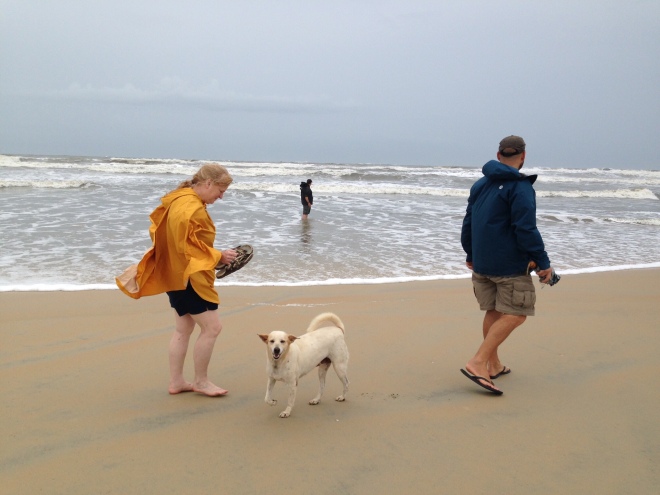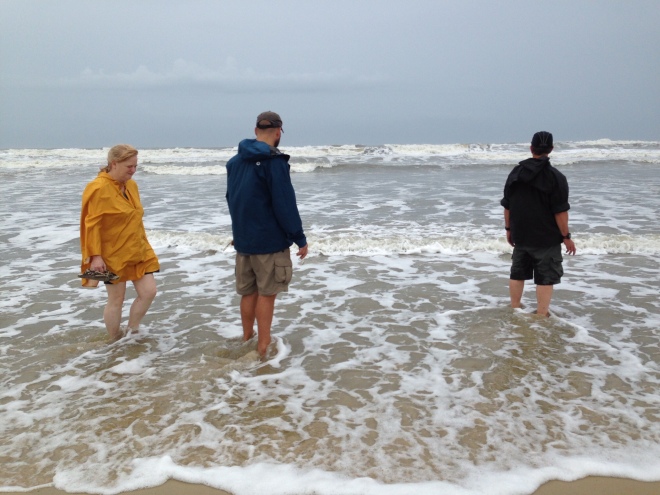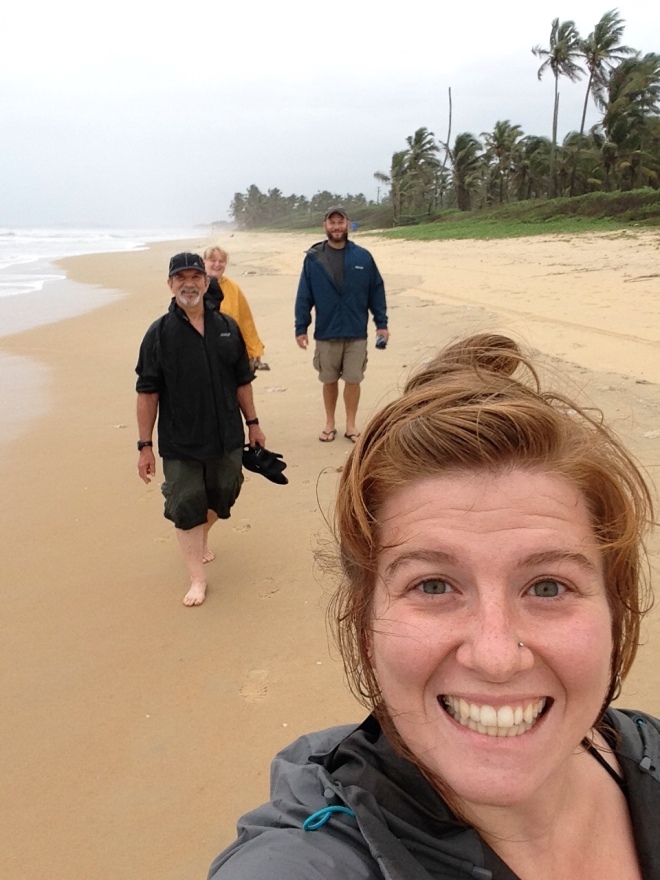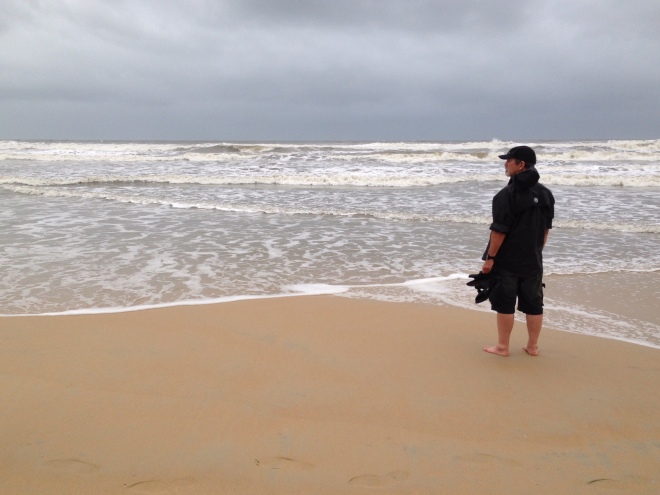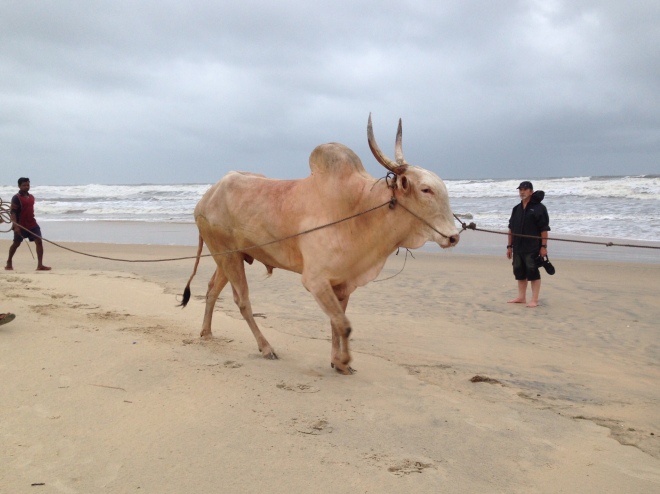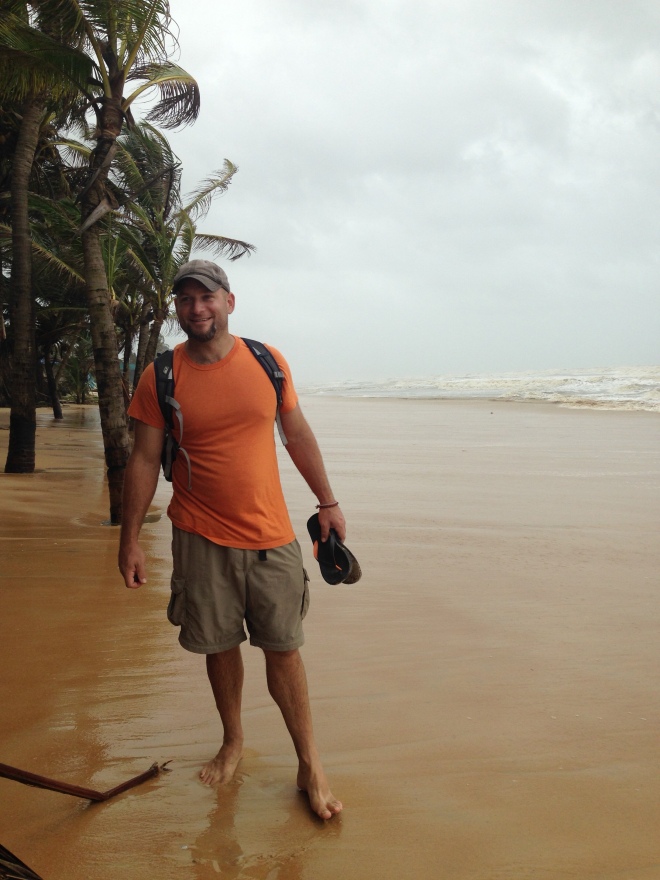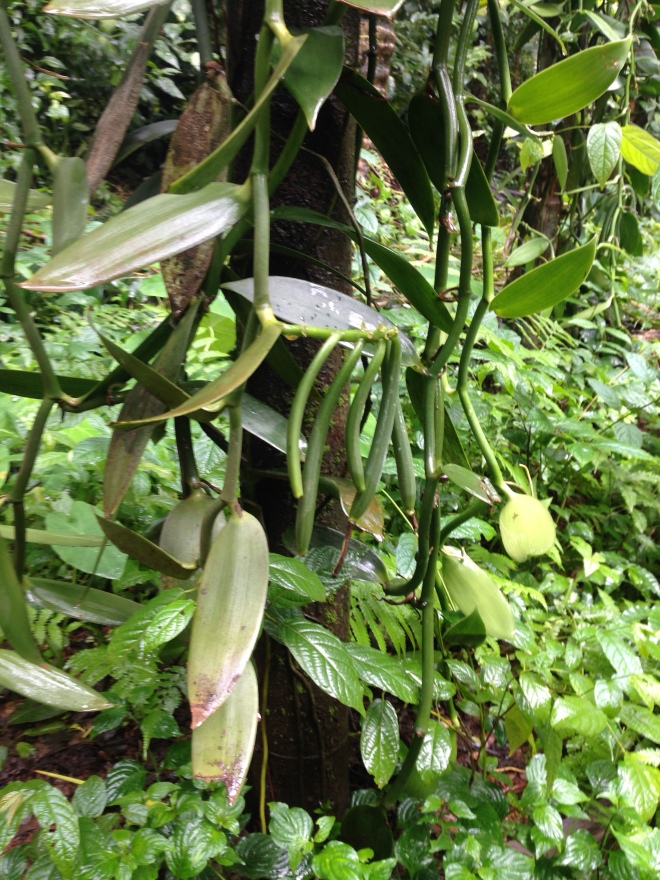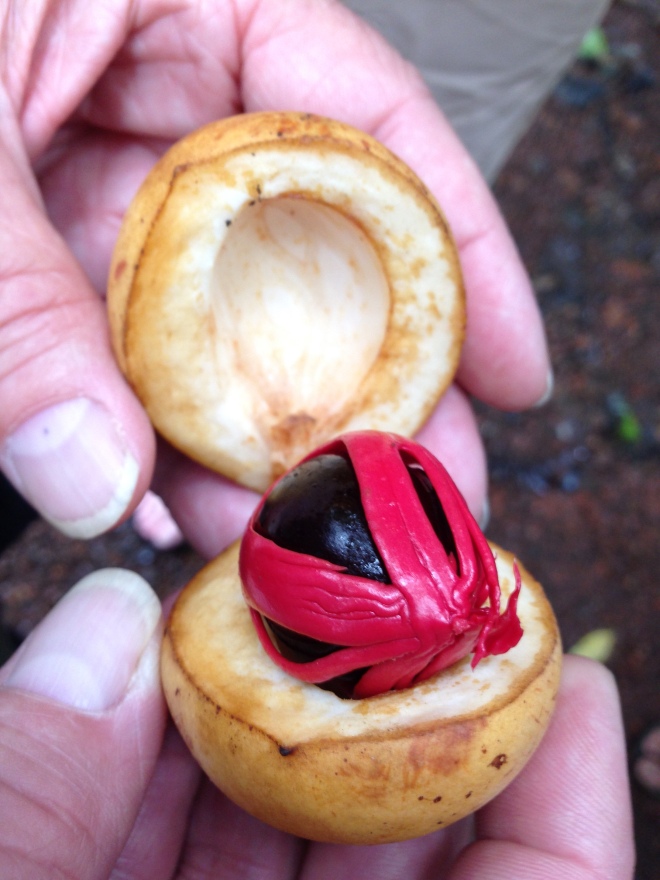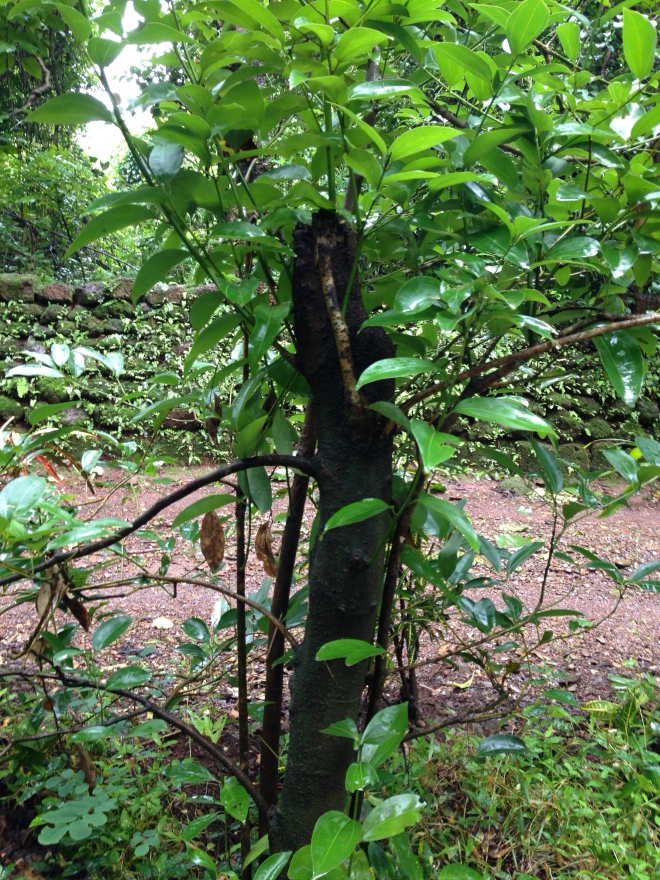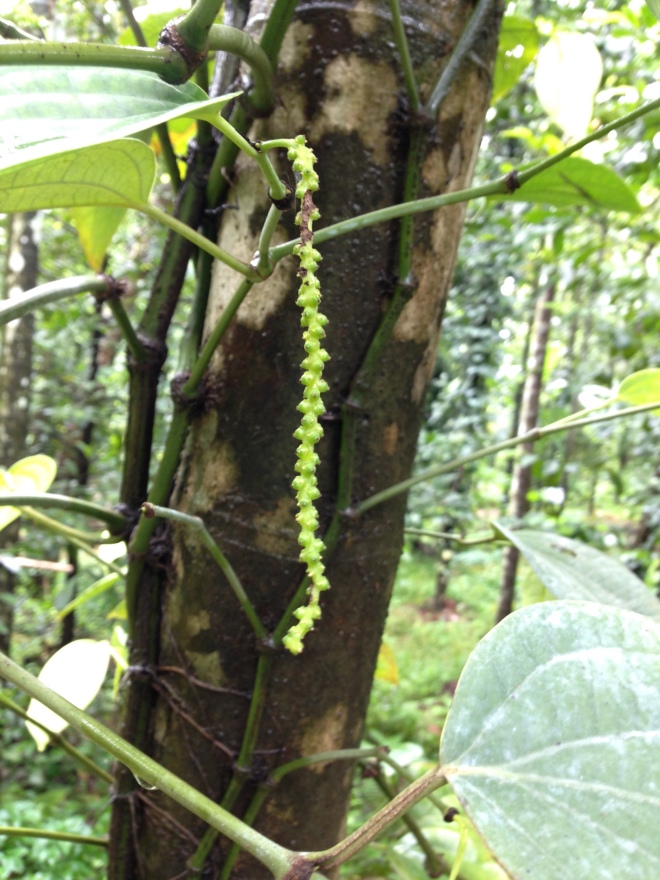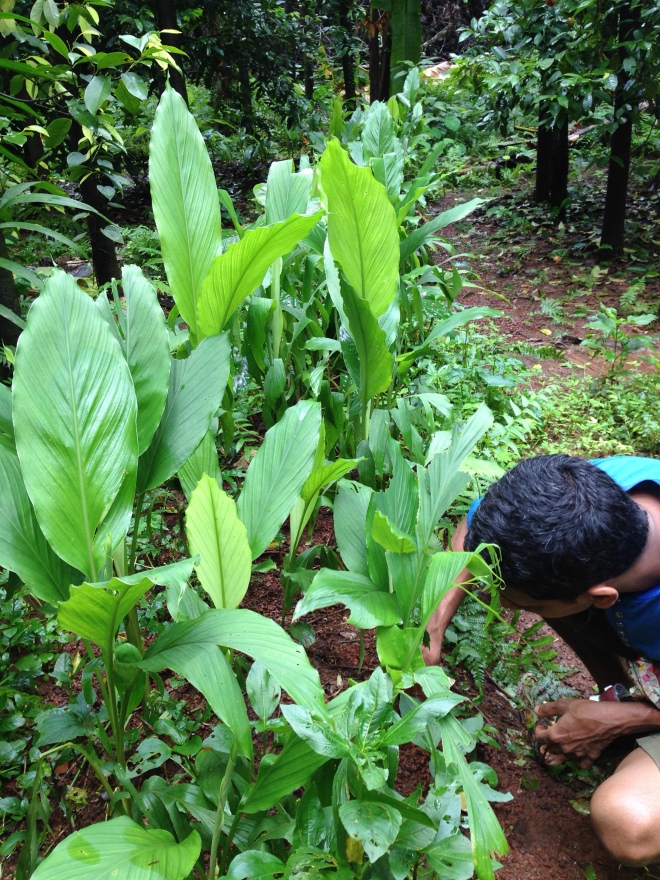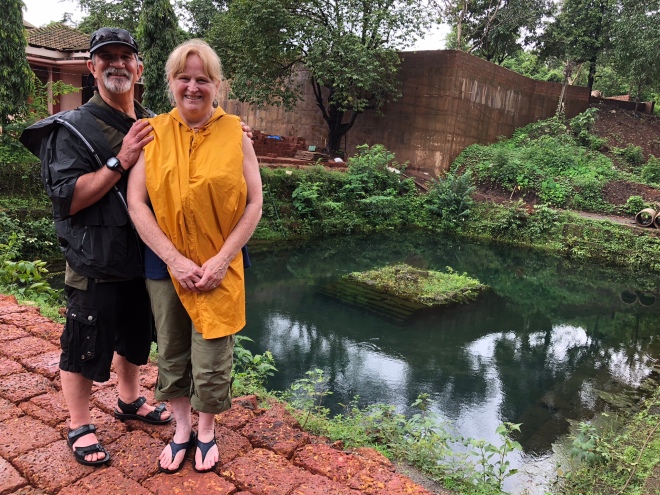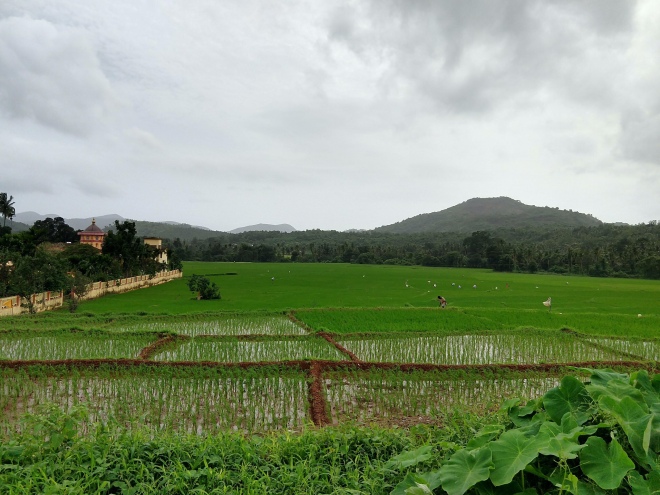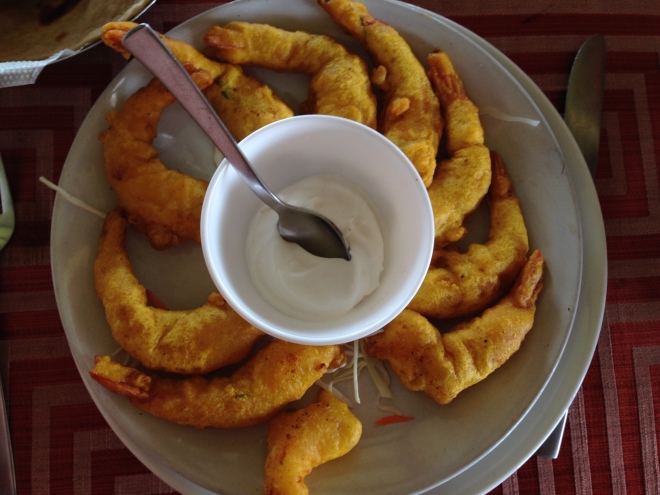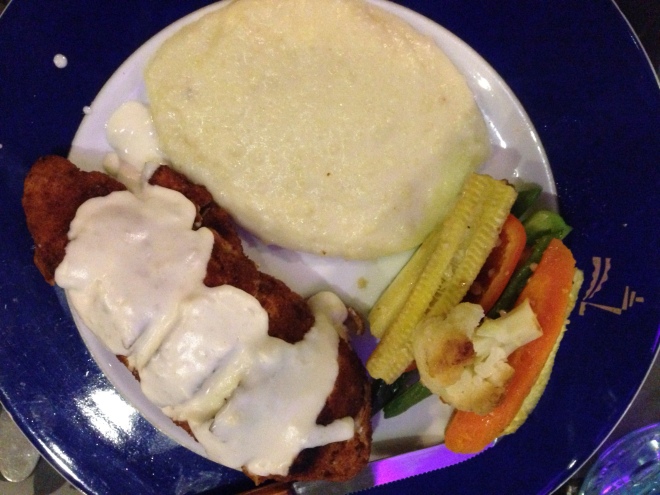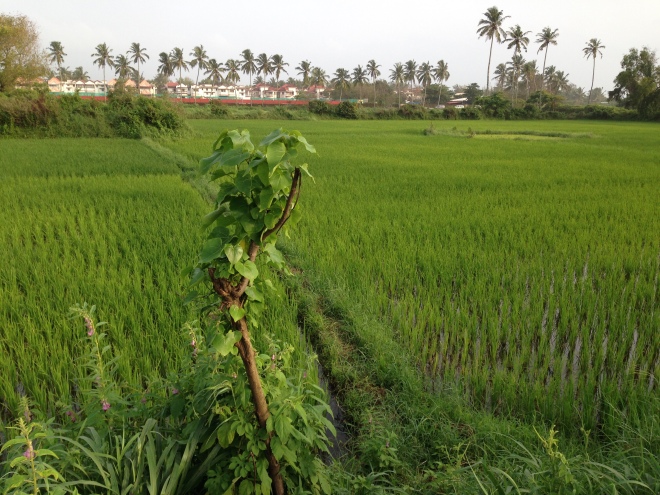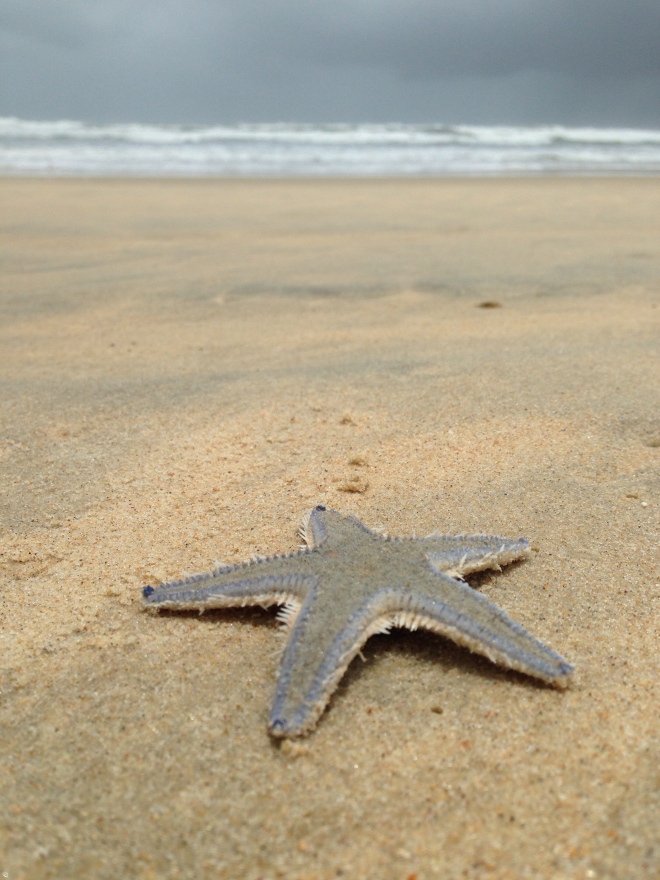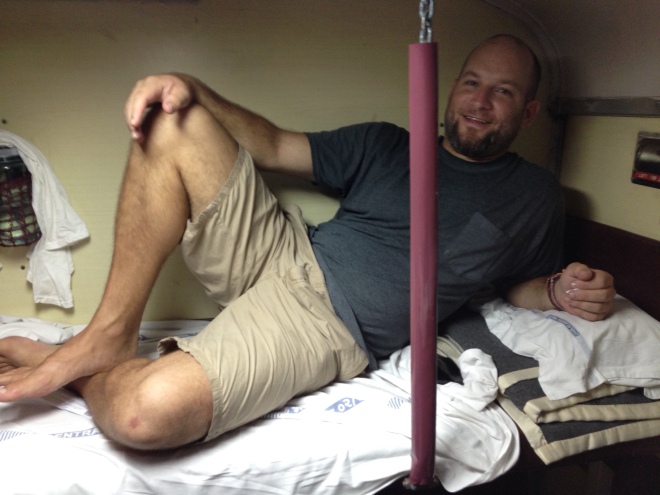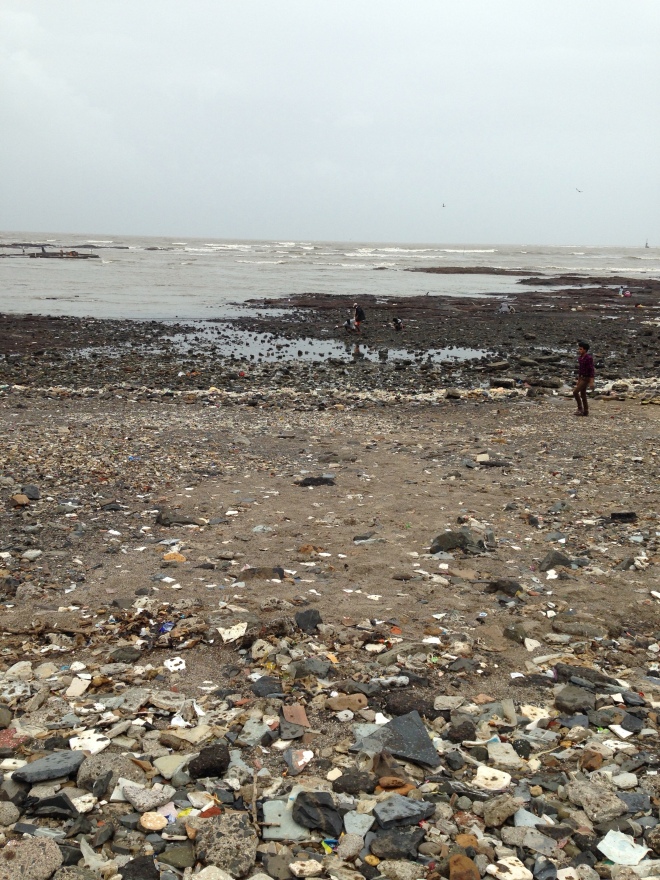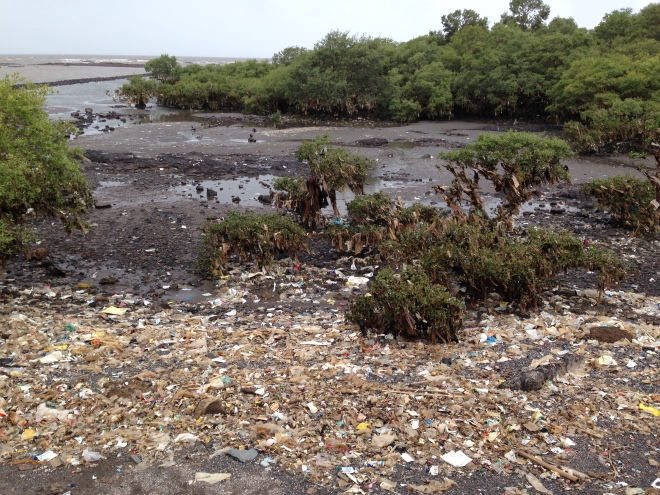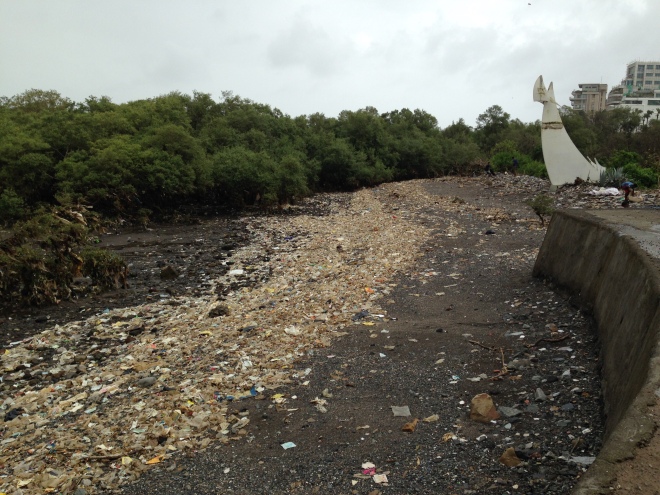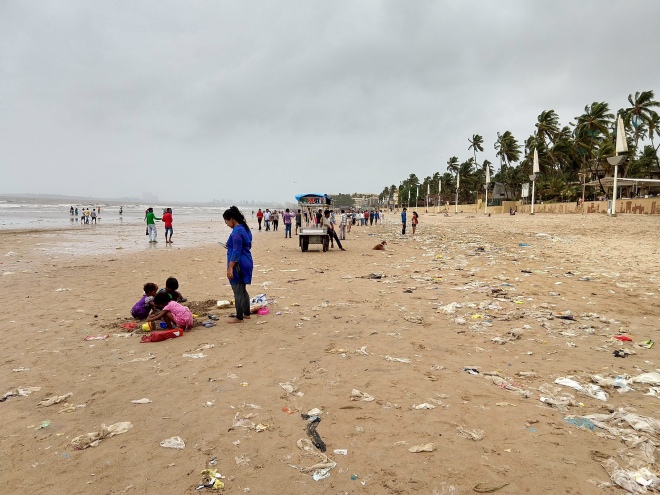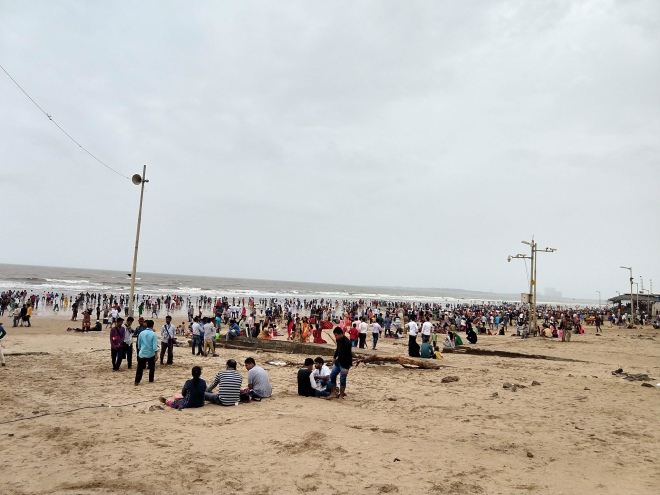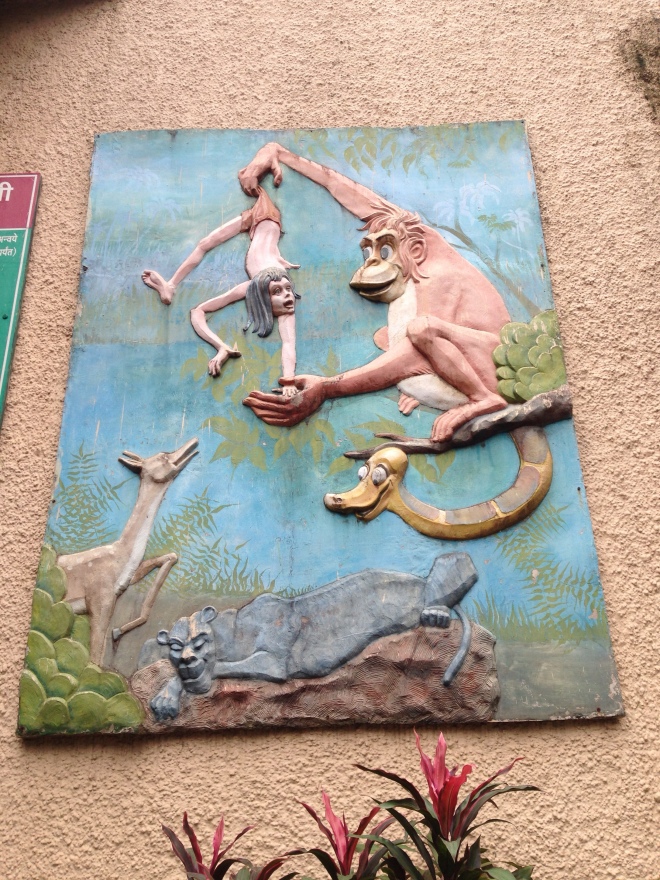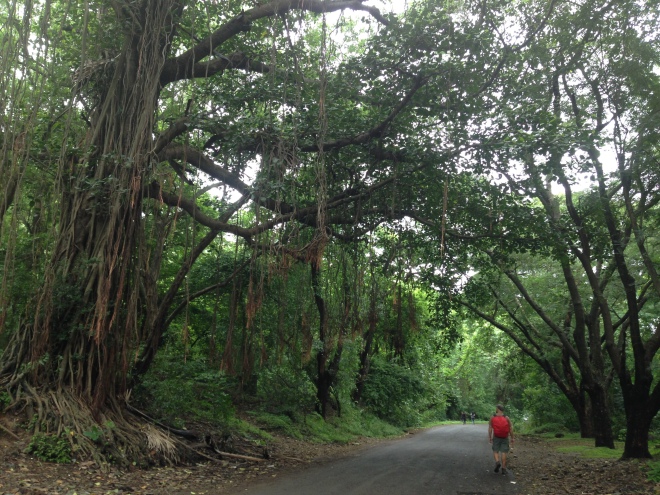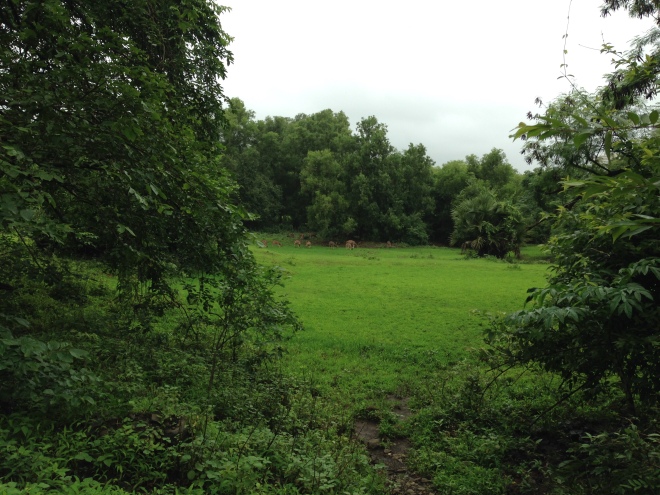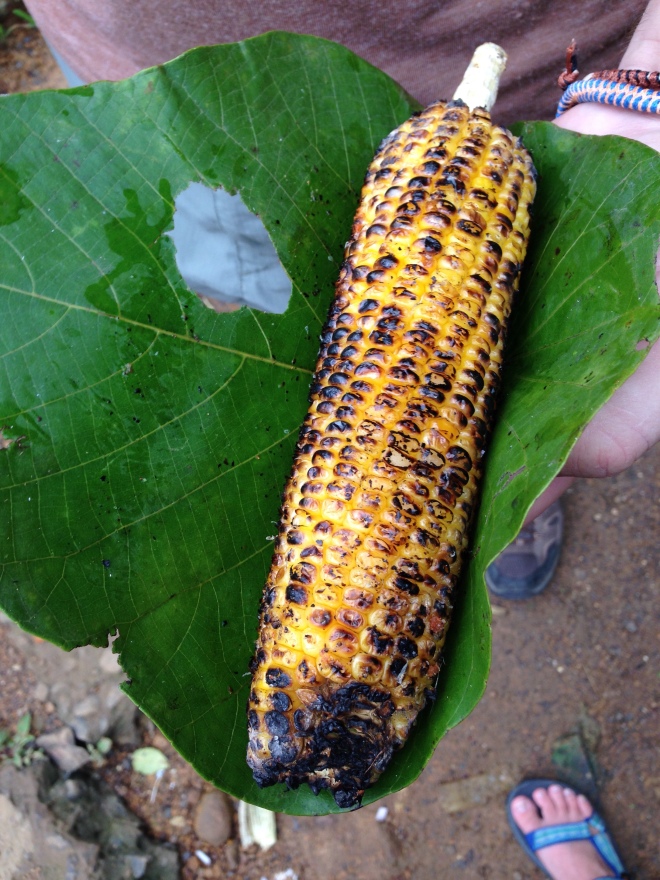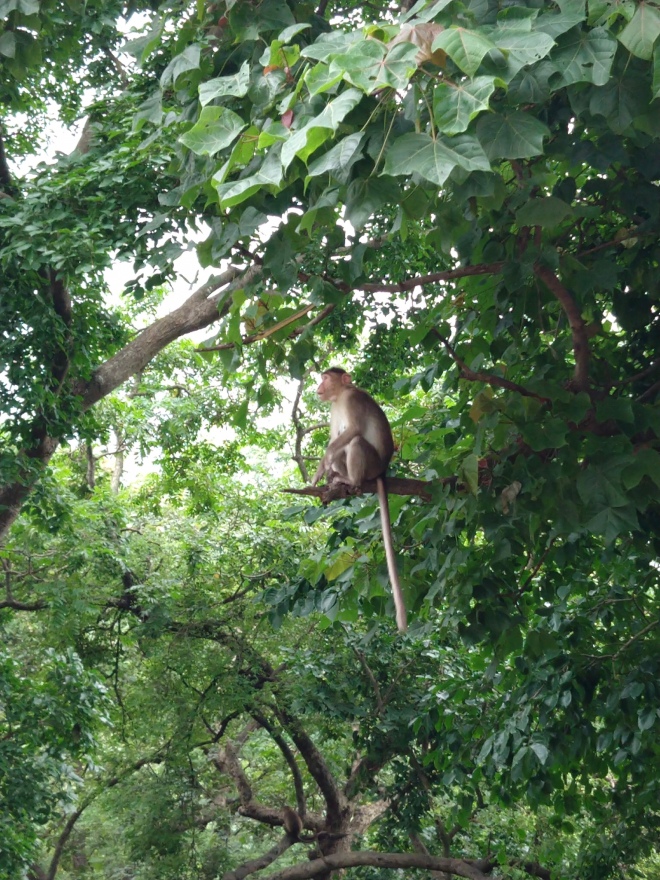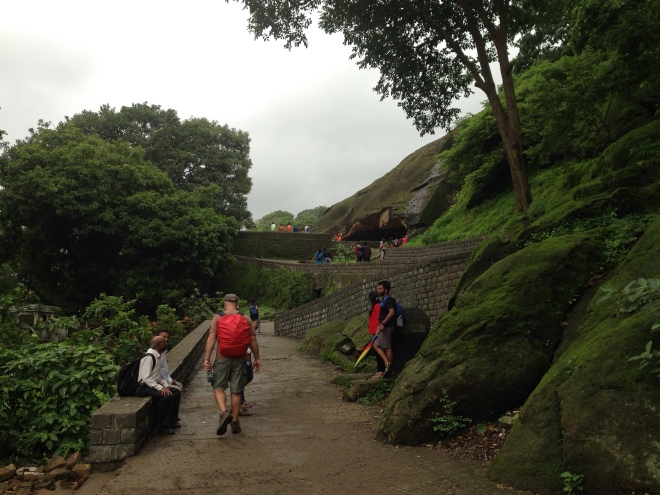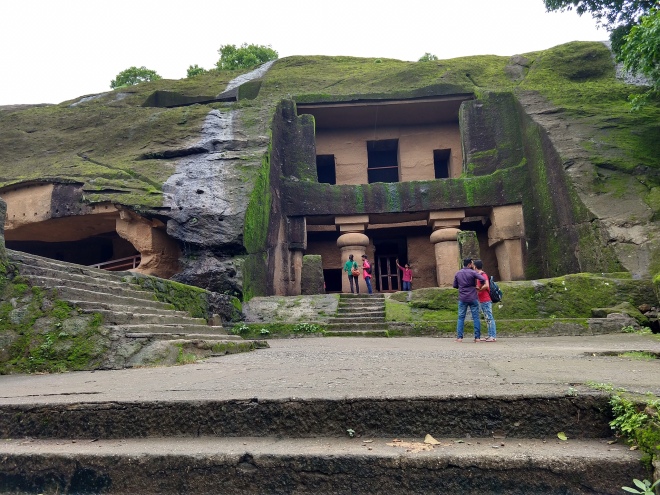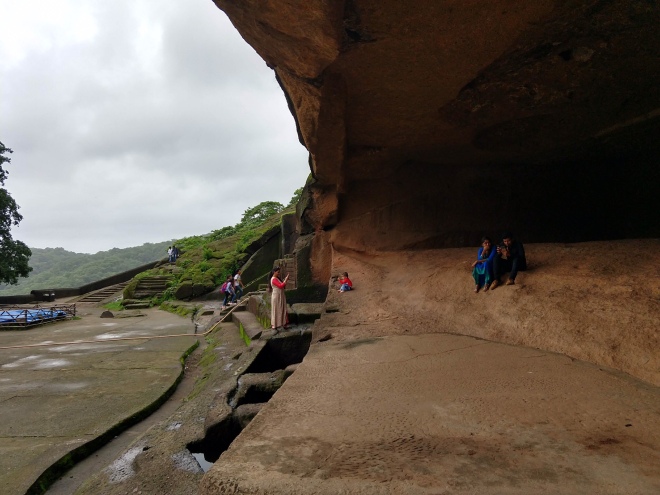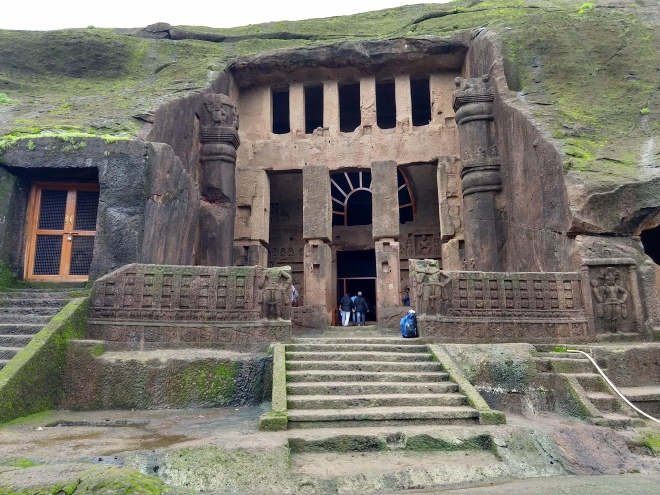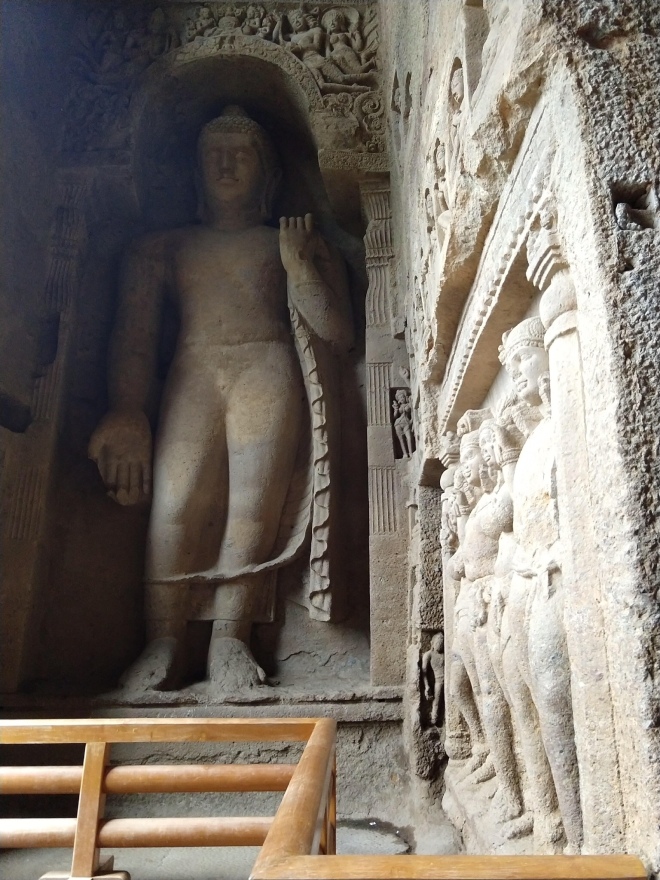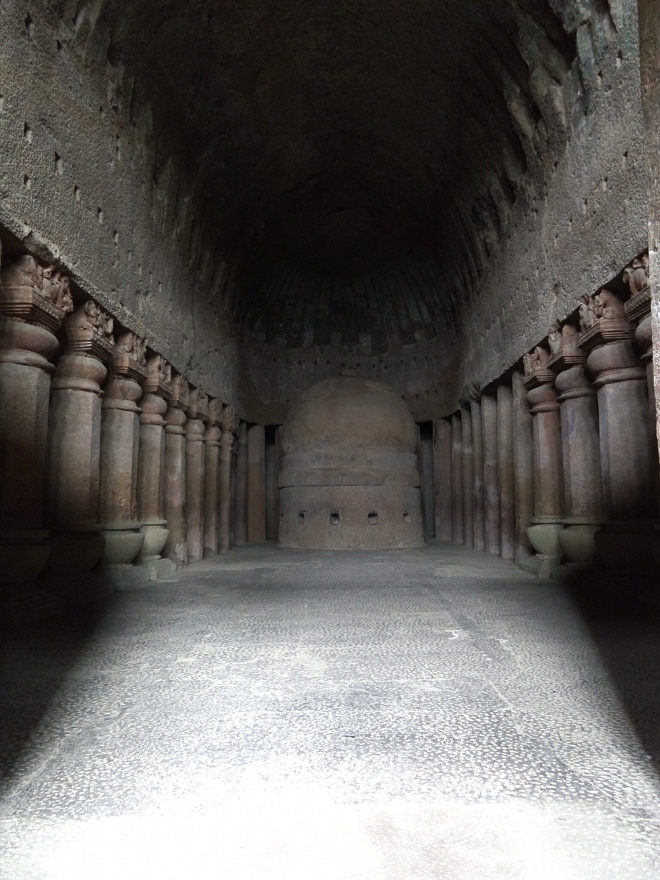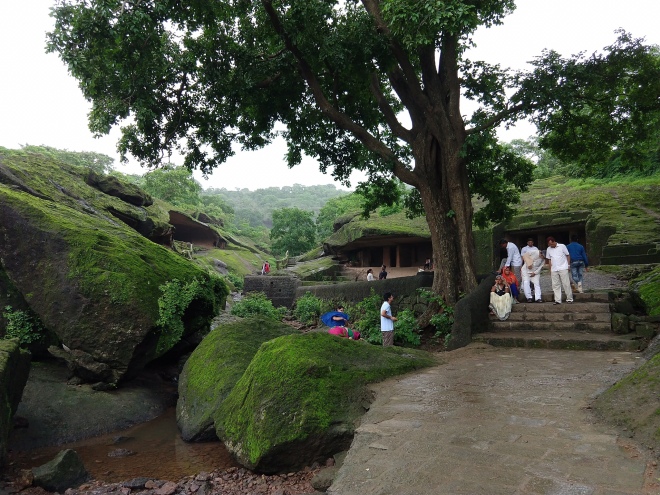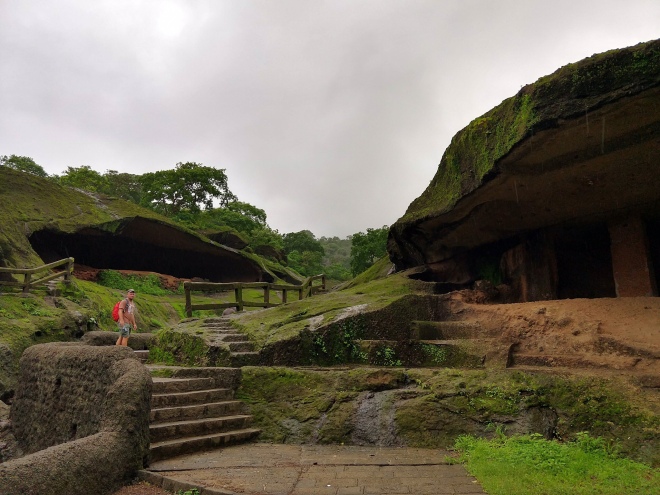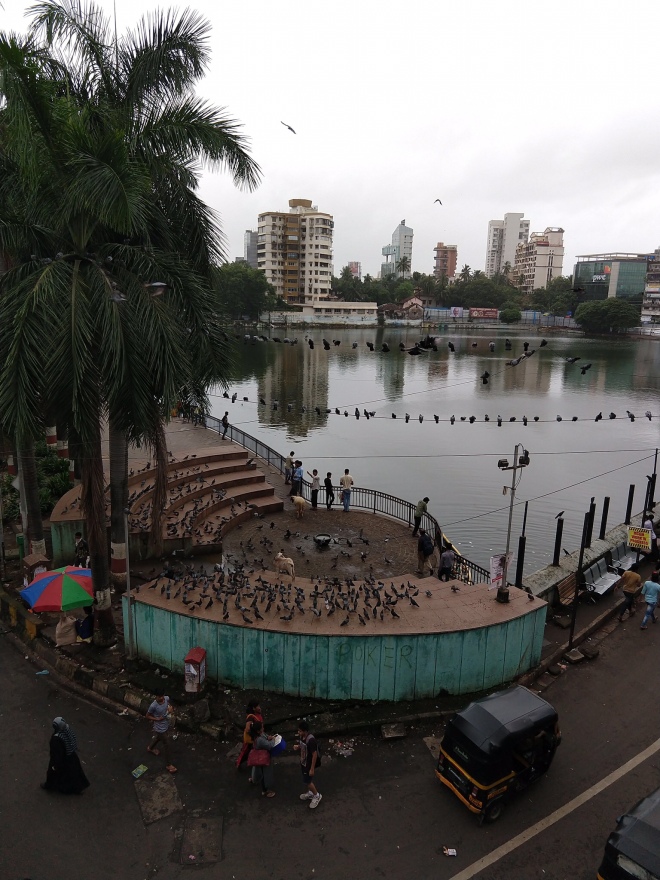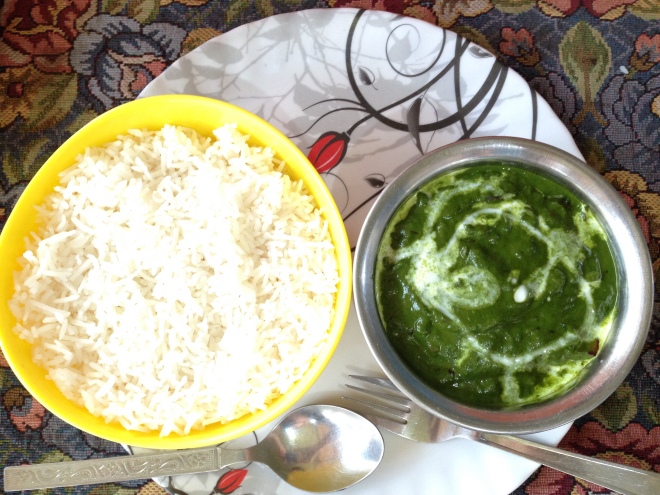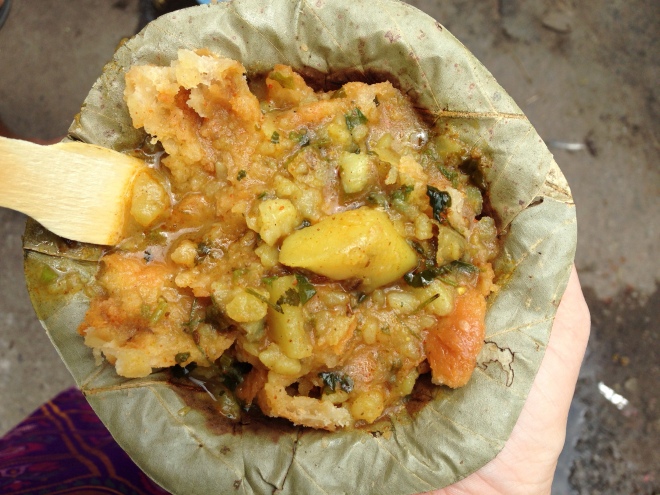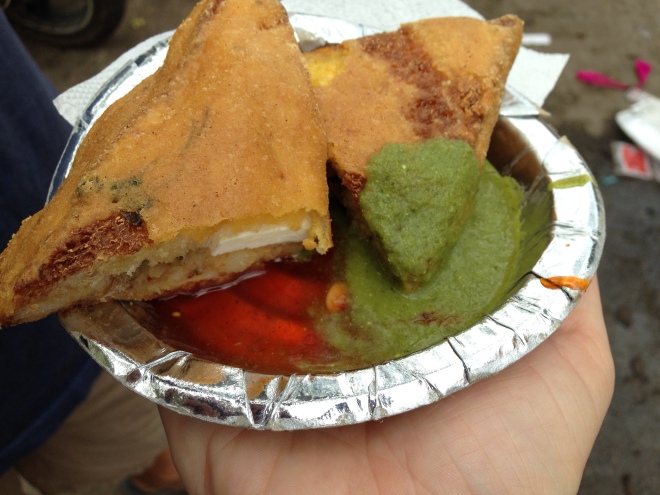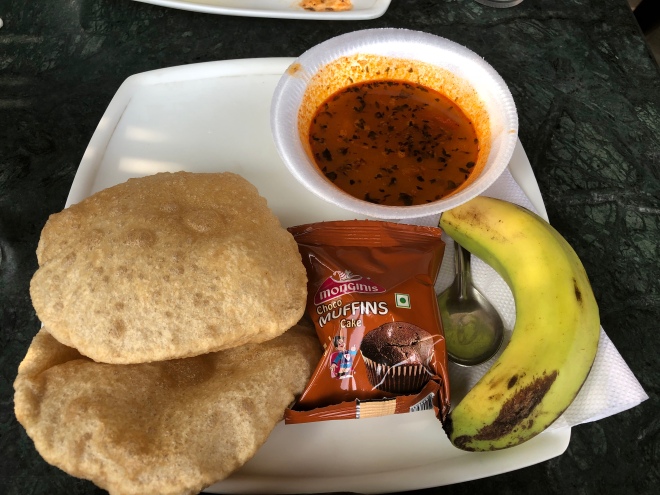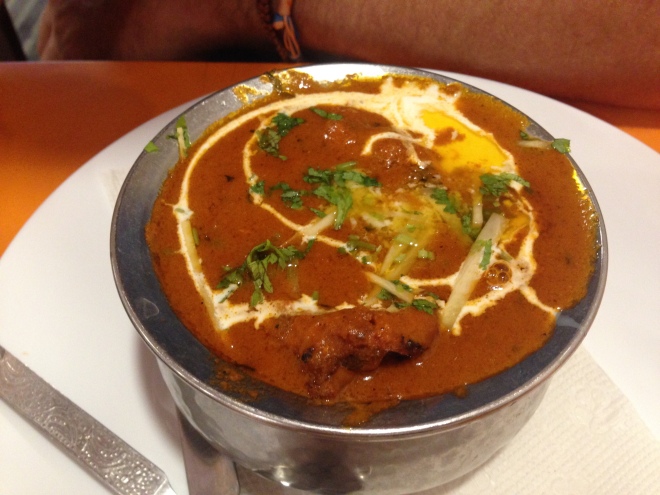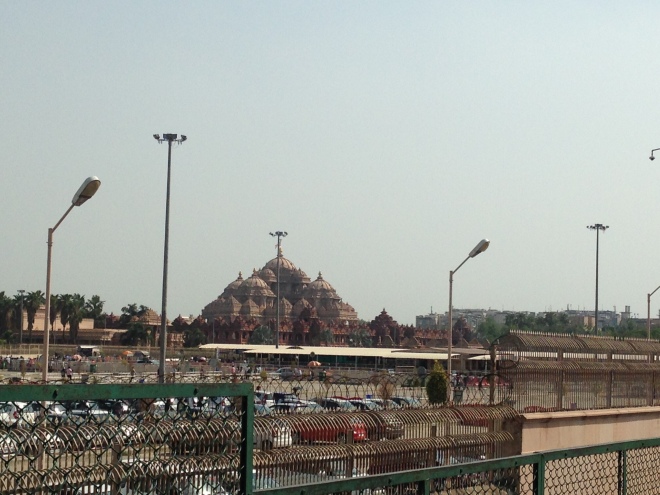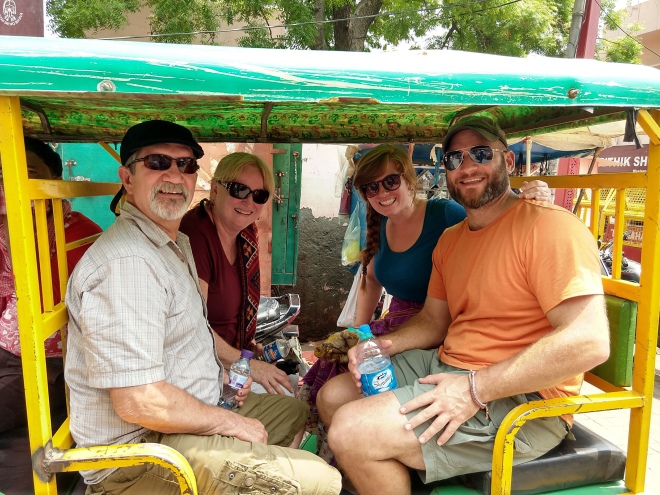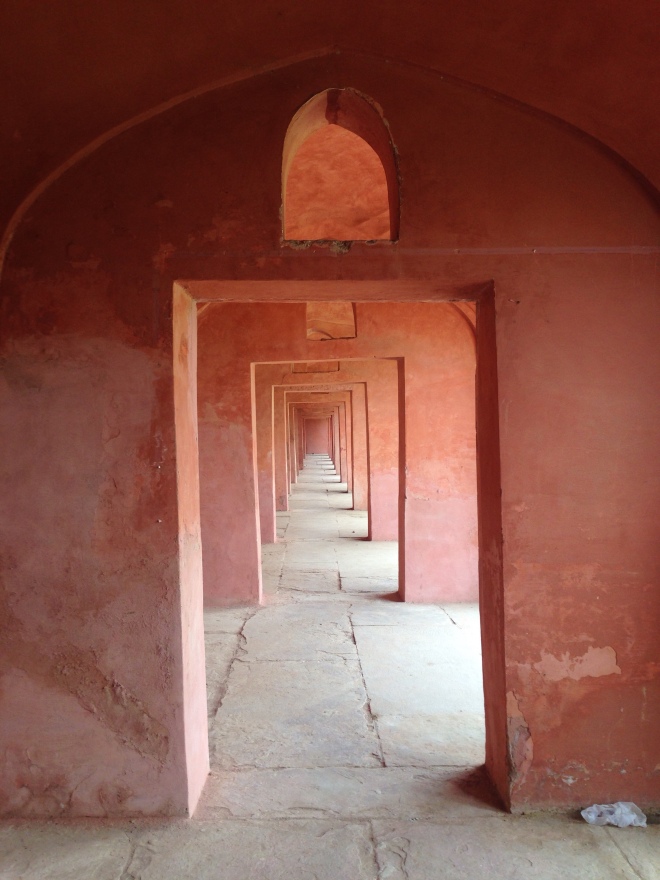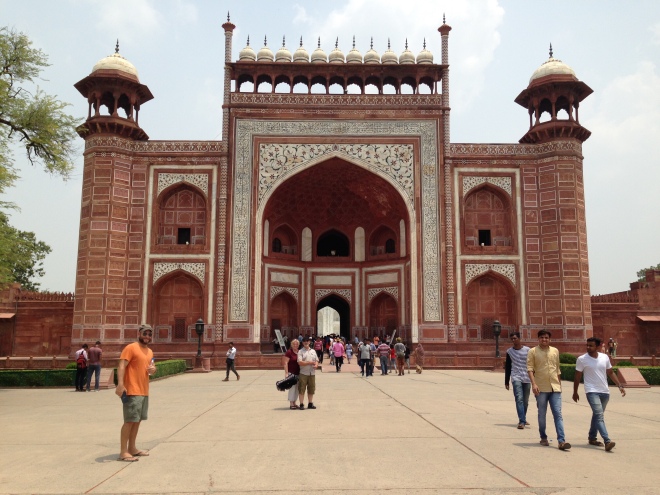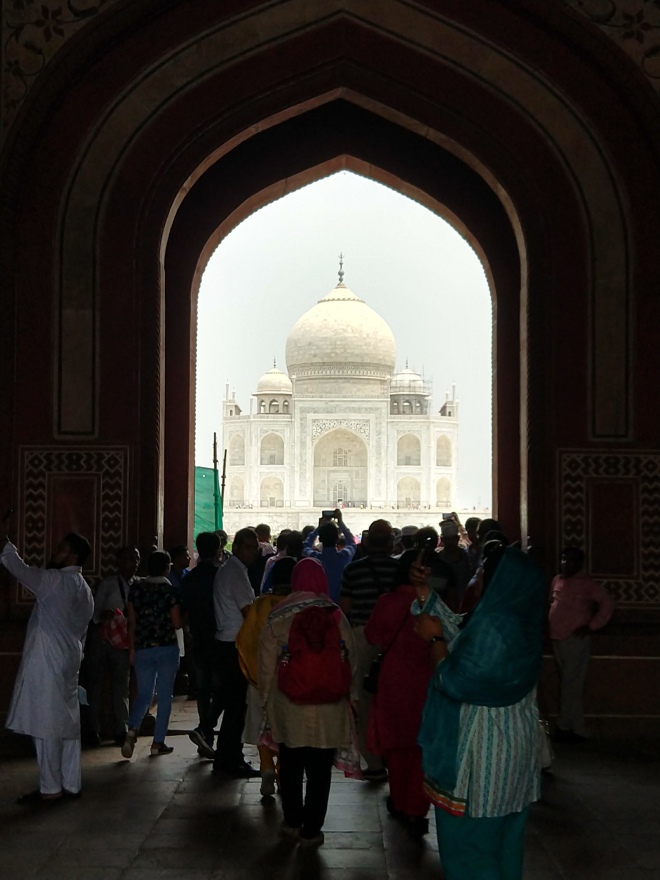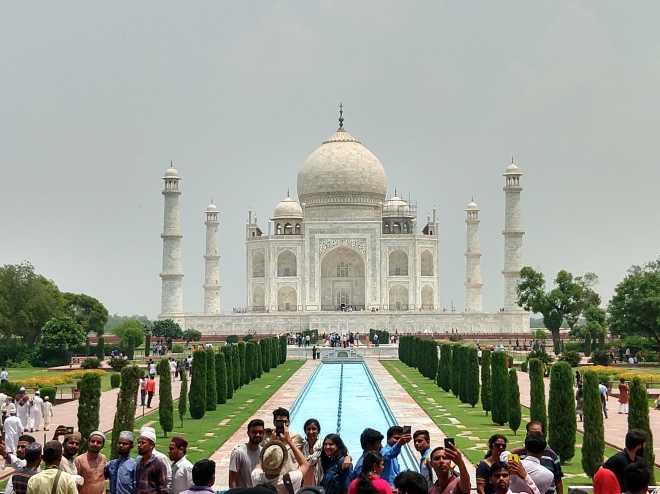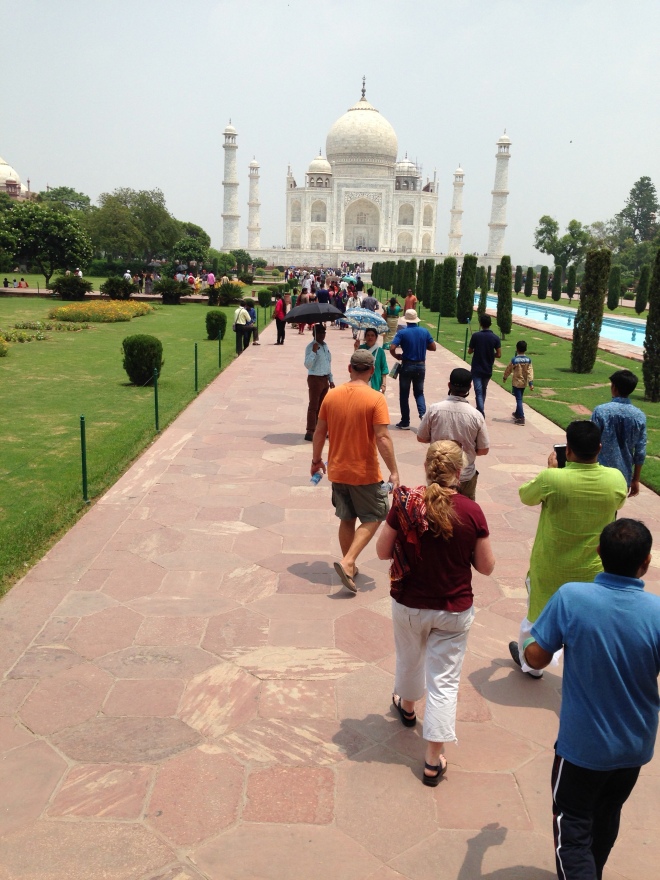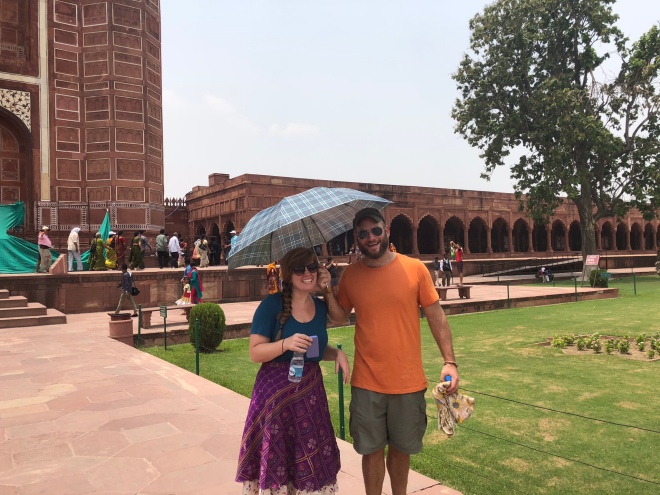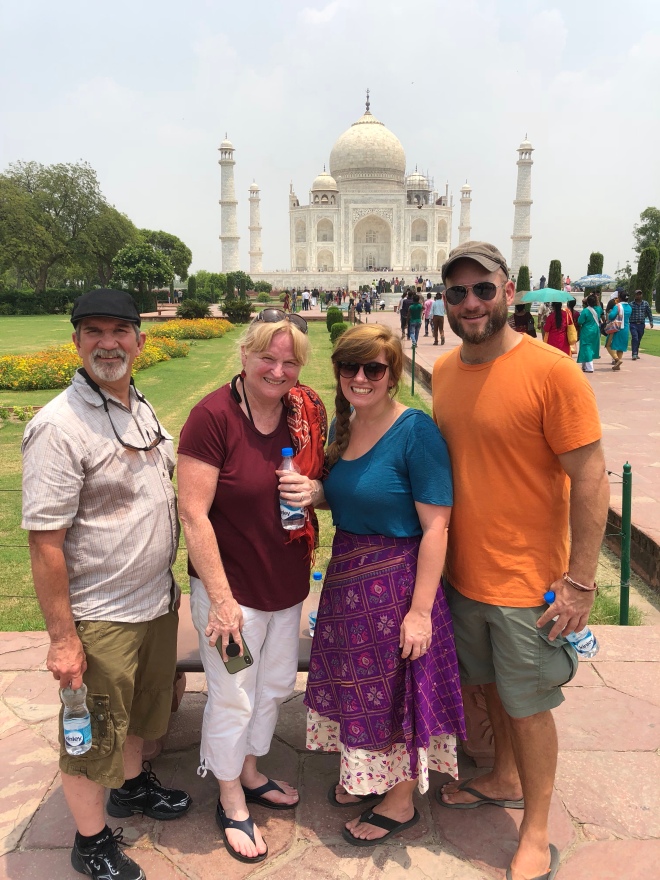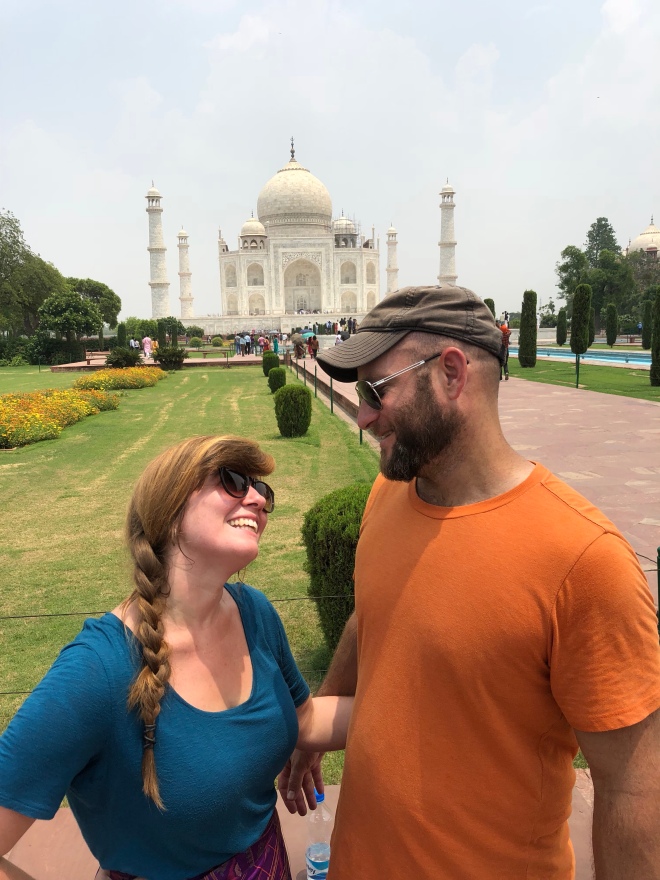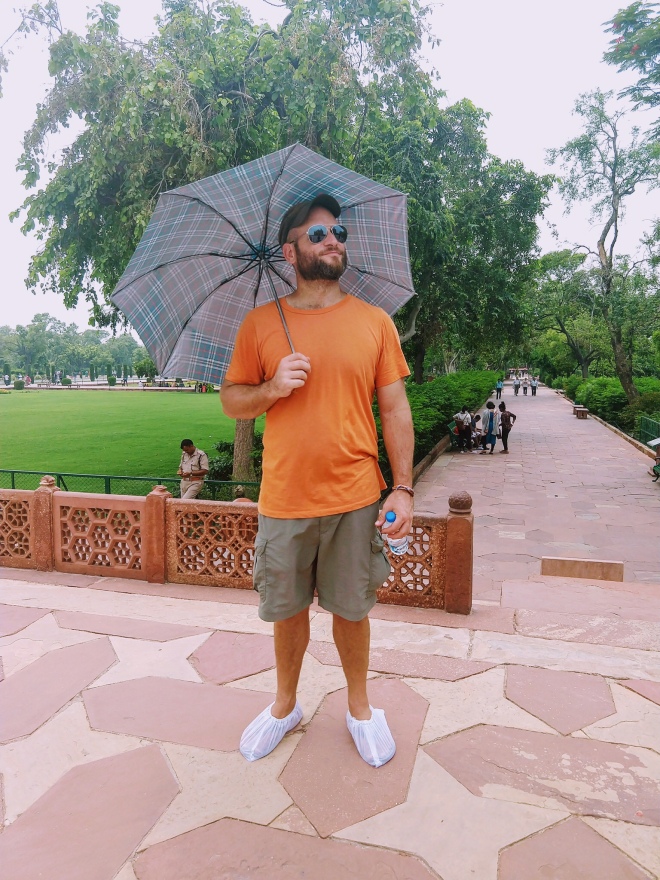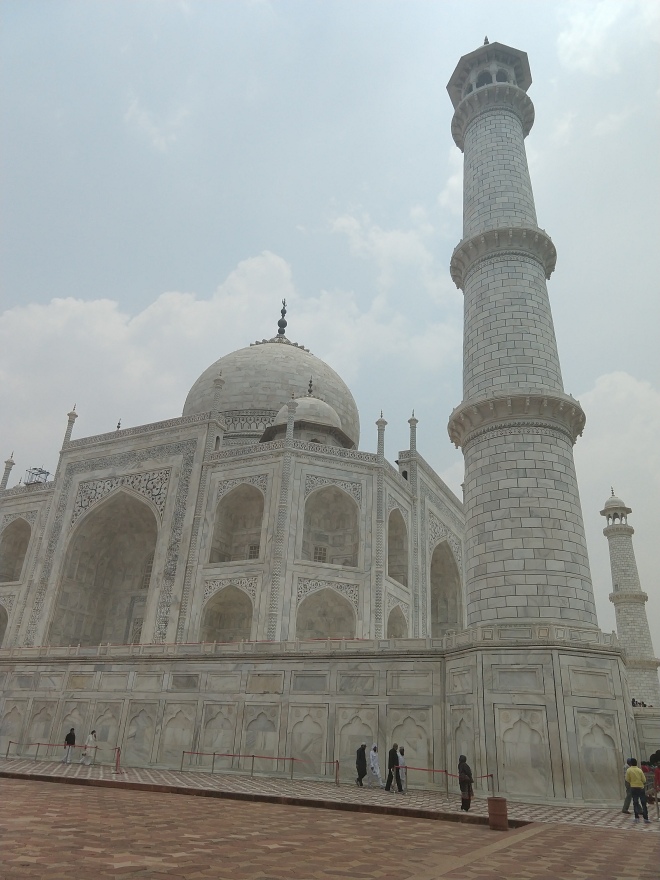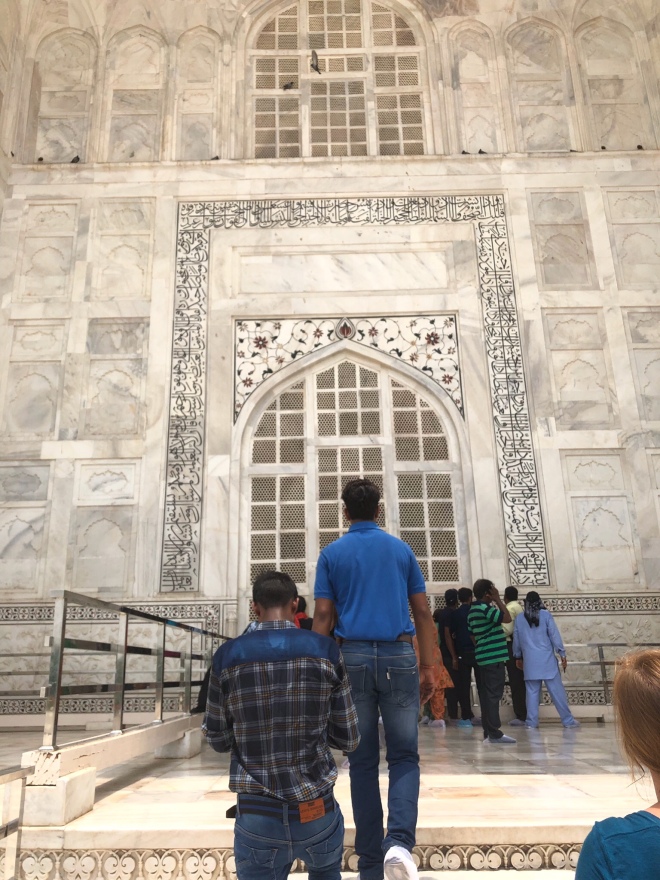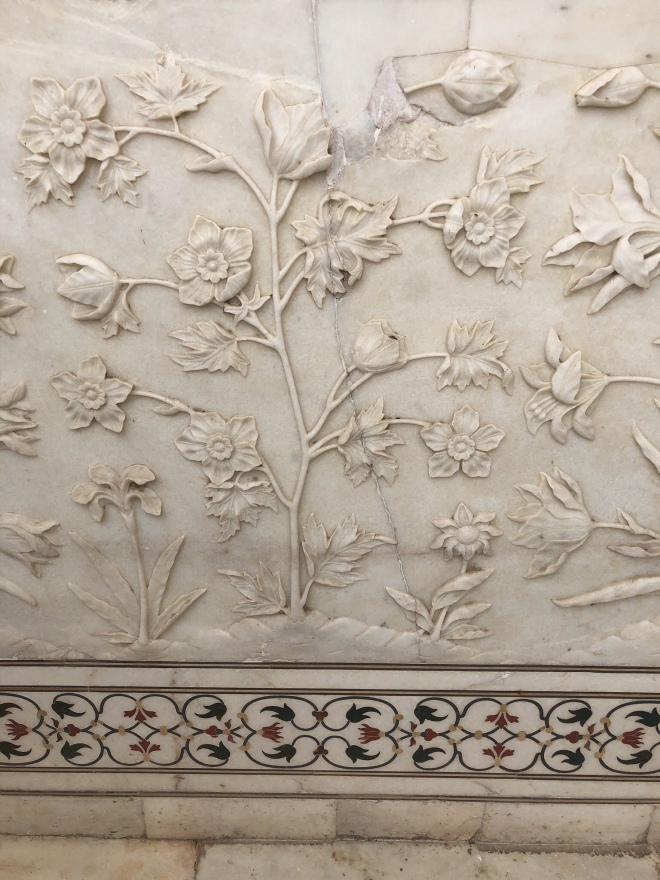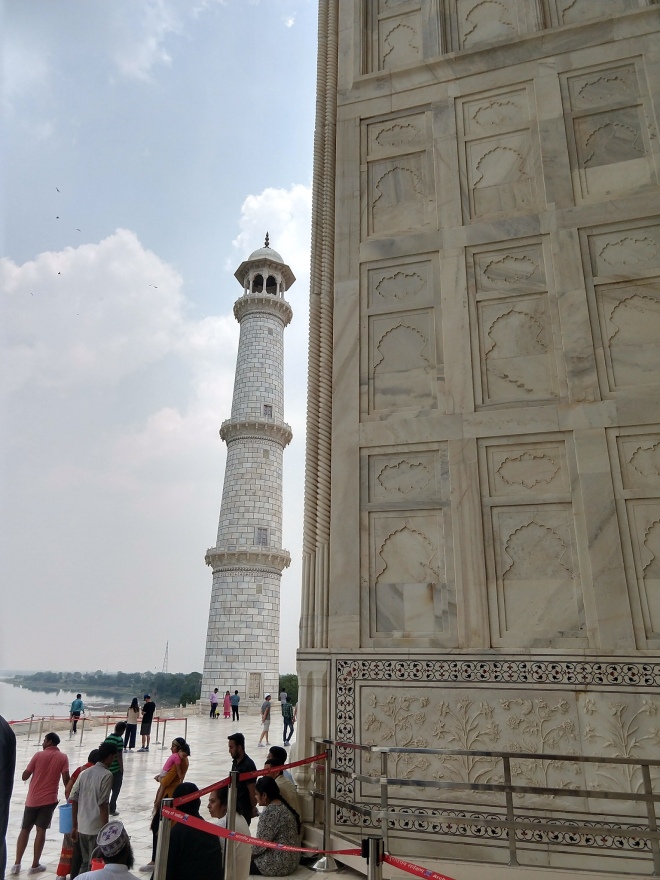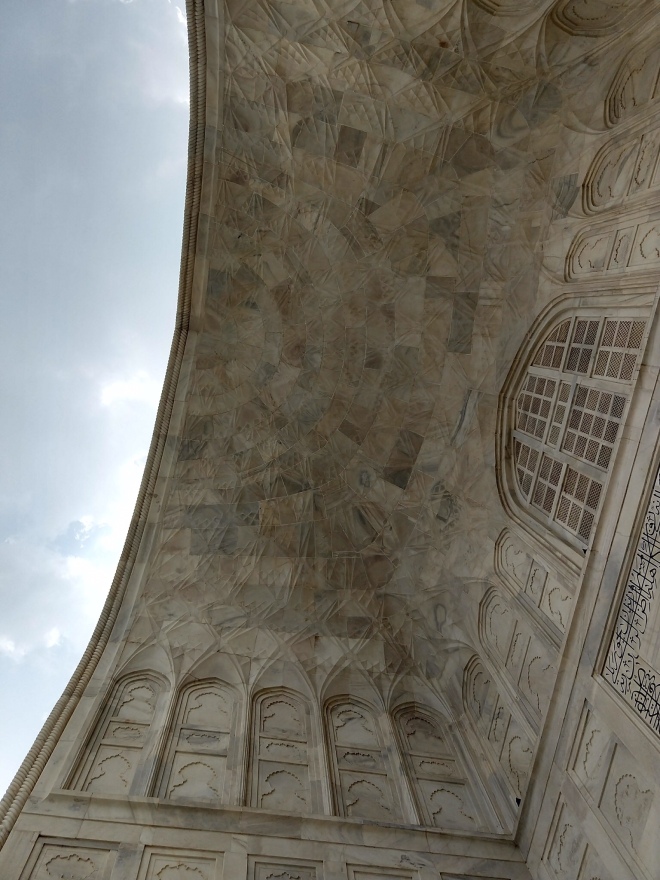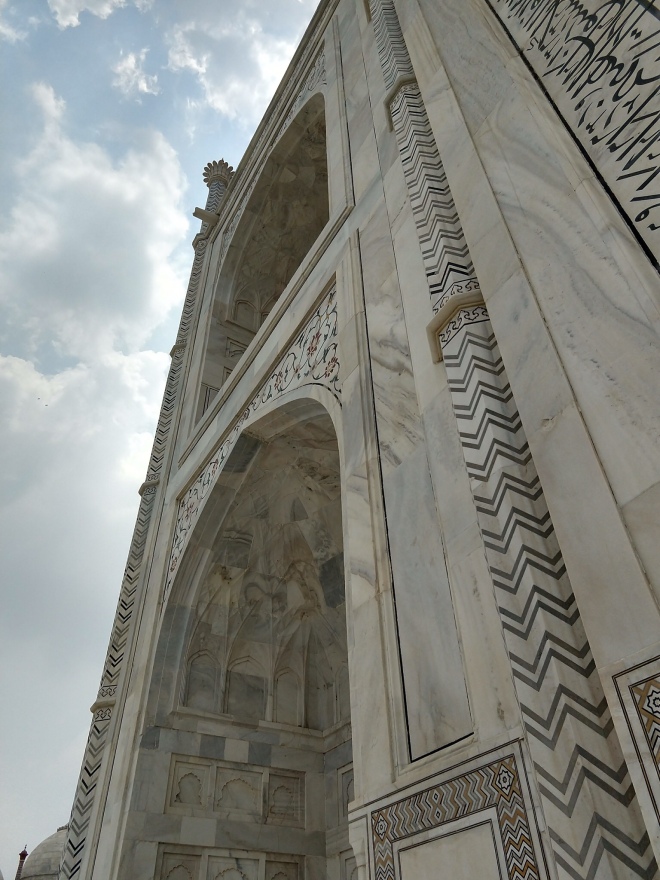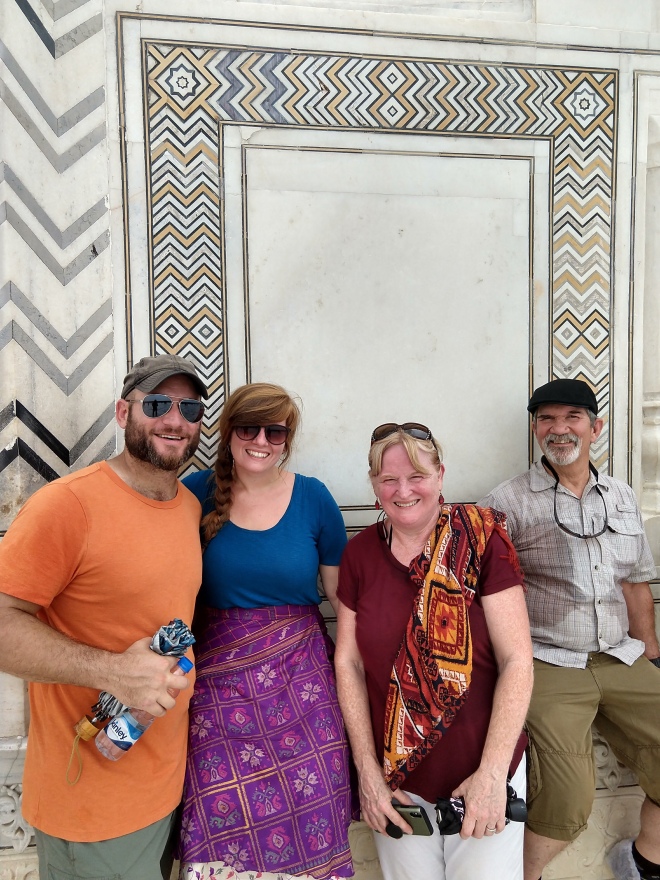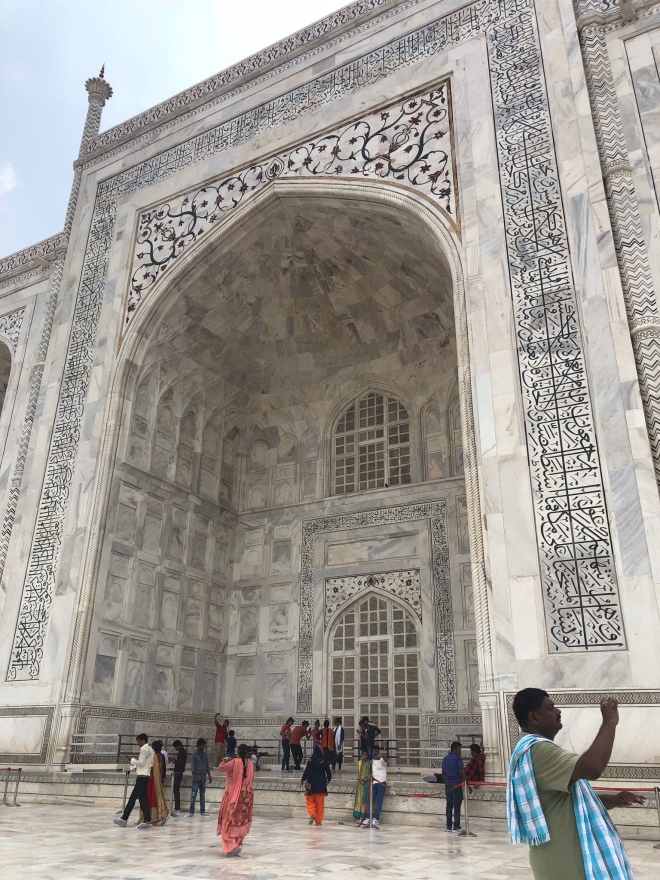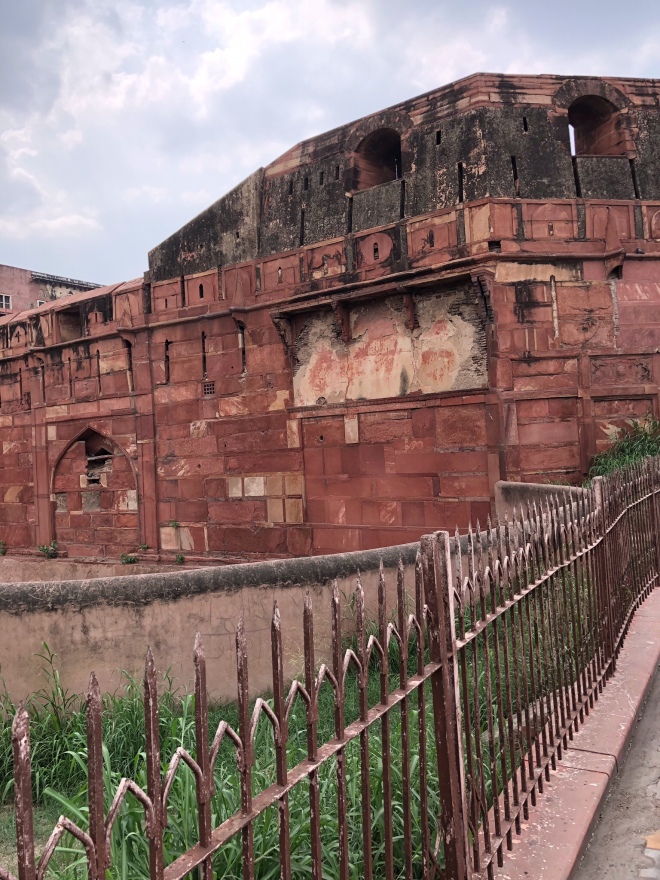Somehow, in spite of Kirk’s many travels, Istanbul marked the first steps Kirk has ever taken into Europe. Though it was his first visit on this continent, it was my second visit to this particular country, Turkey. My first visit to Turkey came out of my time in grad school. While in seminary, I enrolled in a course that looked at the history and relationships between Islam and Christianity. This course in particular included a trip to Istanbul over Spring Break to see some of this history up close and personal. I learned so much from that course.
Prior to my first trip to Istanbul, the thought of a country named “Turkey” always made me think more about Thanksgiving than any type of religion, but alas, I’m now much more aware of the importance of this region.
If you are unaware, the country of Turkey as a whole, as well as the city of Istanbul itself, both straddle the imaginary line between Europe and Asia. In Istanbul in particular, you can take a ferry across the great divide between the two continents, finding yourself to be in the same city on the other side of the waters, but technically on a different continent. Interestingly, these two sides of the city are infinitely different, but not in ways that you might expect. I’ll talk more about the differences towards that bottom of the blog.
As far as history of the the region goes, I’ll focus on church history for a moment to catch up anyone who might be a little unfamiliar with why a pilgrimage to Turkey holds some excitement. Here are a few helpful hints.
First, Tarsus (where Paul is from) and Ephesus (as in, the city that housed the church to which the book of Ephesians is written), are both located in Turkey (though neither were parts of the country that we visited).
Perhaps more importantly, at least for the context of this blog, Istanbul itself was formerly known as Constantinople, and Constantinople was the eastern capital of the the Roman Empire (Rome was the western capital). Constantinople being one of the capitals of the Roman Empire is significant for Christian history because, though the empire persecuted Christians for a long time, they were also the first government that made Christianity the official religion of their state (persecution stopped in 313 and Christianity became the official religion of the state in 380 AD). Under the Roman Empire, Christianity had it’s first opportunity to come out of hiding and really begin to flourish and grow, and as you can imagine, much of that growth happened within these capital cities.
To this day, you can visit modern day Istanbul or Rome and see impressive buildings from eras when Christianity was coming out of hiding, as well as sites where important meetings were held in which the fate of Christianity was decided. It’s fascinating.
As far as where we actually visited while there, we’ll start with the Hagia Sophia.
One of the most impressive architectural achievements from this early growth period of Christianity is a church called the Hagia Sophia. After emperor Constantine the Great turned towards Christianity and ended the persecution of Christians throughout the Roman Empire, he had a church built in the eastern capital of the Empire (modern day Istanbul) in 360. Though neither the original church nor second church built on this spot survived long, a third church was built in her place in 537. This third church, the Hagia Sophia, was the largest building of it’s time and is considered an architectural phenomenon that forever changed architecture. This original building from 537 is the same one still standing in excellent condition today, 1500 years later.
The Hagia Sophia is the first building I ever walked in that rendered me speechless. 6 years ago, when I approached those double doors whose height quadrupled my size, I couldn’t believe my eyes. It’s one thing to walk into a building with a height too tall to fully comprehend, knowing that cranes and machines helped build it, but walking into a solid marble structure, built 1500 years ago that still stands in her entirety today… you have to pinch yourself.
Unlike many of the other structures we have visited on this trip, the tallest dome you see on the outside of the Hagia Sophia is the same dome you see on the inside. Other places we’ve been, like the Taj Mahal or Angkor Wat, have second floors to them that, though still quite impressive, keep you from seeing the fullness of size all in one view on the inside. The Hagia Sophia, on the other hand, has a second story that functions more as a balcony. The middle of the building opens wide to show the full height of the domes above. Low hanging chandeliers added later drop from the heights to create the image of low ceilings, adding to the layers to show the depth between where you find yourself and the embellished dome ceiling above.
Though this enormous building was originally built as a church, in 1453, when the Ottomans conquered the city, Islam gradually spread throughout the land. Like most of the other churches in the area, the building was converted into a mosque, in particular, the Imperial mosque. Artwork and statues depicting anything Christian were removed or covered. Although, in the end, this covering of the artwork and use of the building is what helped preserve it. After the Ottoman Empire fell (after WWI, around 1920) the Hagia Sophia eventually began to be restored as a museum. Now, inside the museum a display of history and time still stand. Artwork and architecture from the building’s time as both a church and mosque on display, telling 1500 years of history in one giant space.
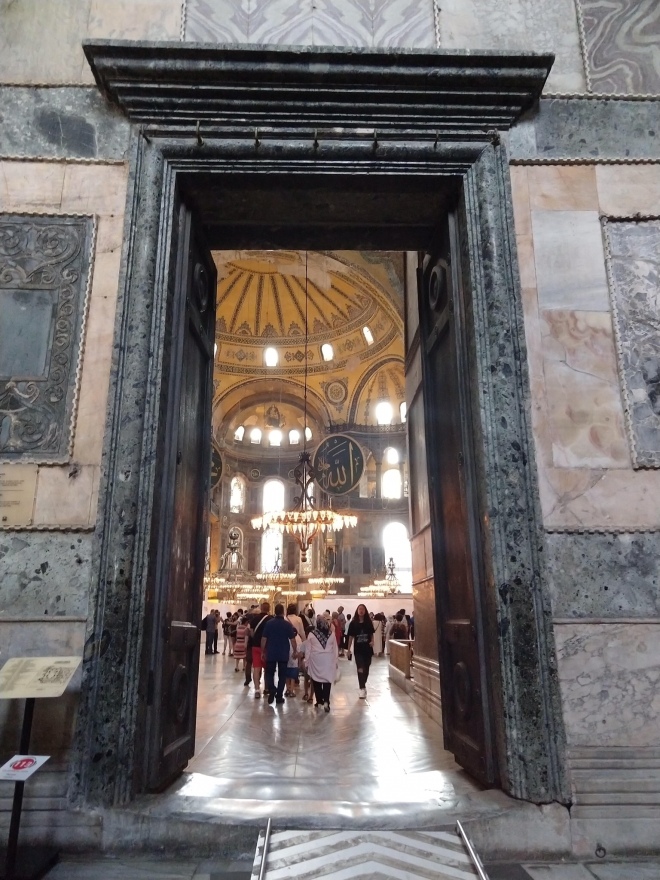
The enormous double doors through which you enter into the Hagia Sophia.
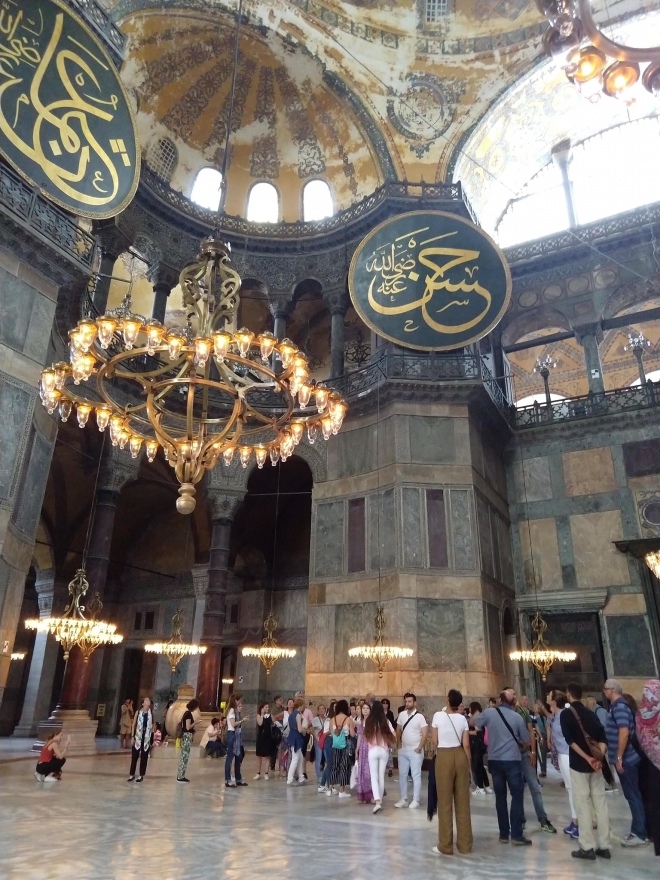
The low “ceiling” of lights with the domes rising high above them. The large circles of calligraphy hanging above come out of the time in which the building was a mosque. Commissioned in the 1800’s while the mosque was under repair, to this day, these 7.5 meter (21ish foot) circles, that spell out names important in Islam such as Muhammad and Allah, are the largest pieces of Islamic calligraphy in the world.

Chandelier with the highest dome above it. Around the tallest dome are painted four cherubim from the time period in which this was a church. When the building became a mosque, the faces of the cherubim were covered, but one has since been uncovered to reveal the original artwork underneath. Unfortunately, this particular one was covered by the scaffolding while we were there, but you can look up pictures online if you are curious how people from long ago imagined cherubim to look.
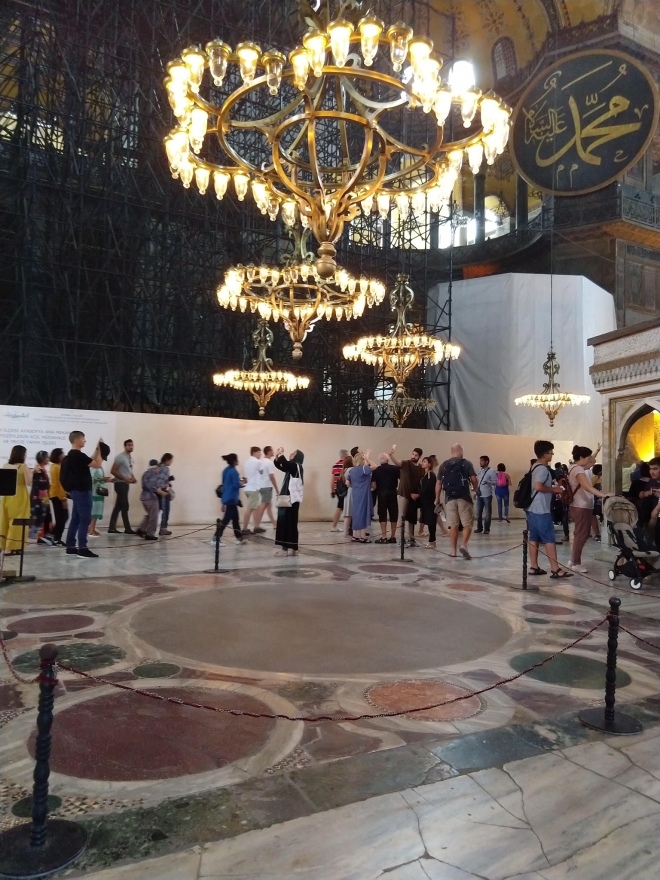
Coronation square, where the rulers were crowned.
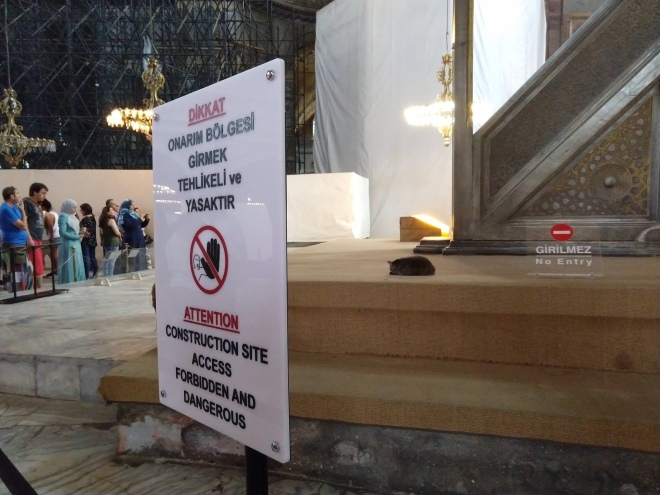
Though we were forbidden to cross this boundary, one sleepy feline found a spot to rest away from the crowds 😂.
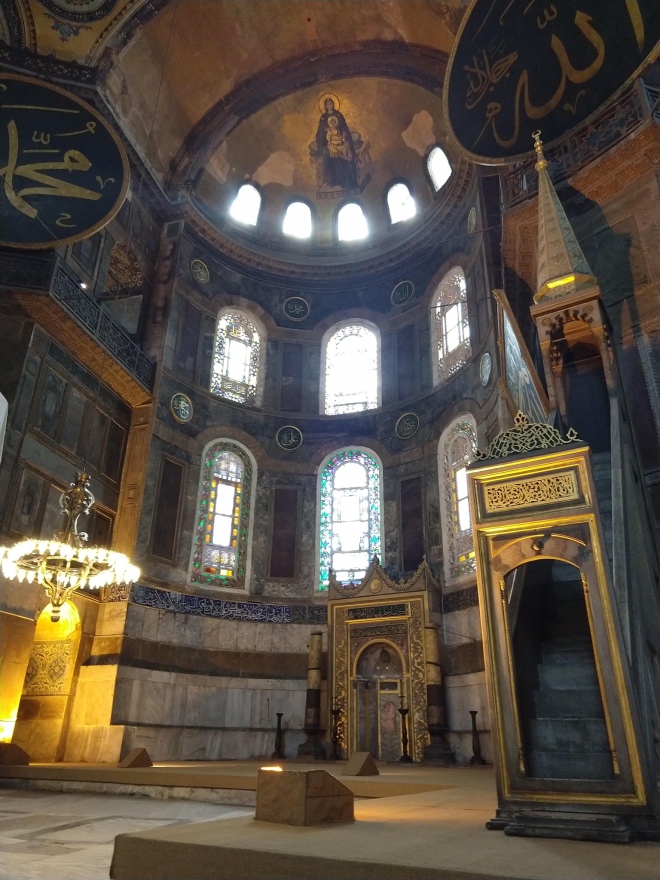
The mihrab, the part of the mosque that faces Mecca from which the Imam gives the sermon.
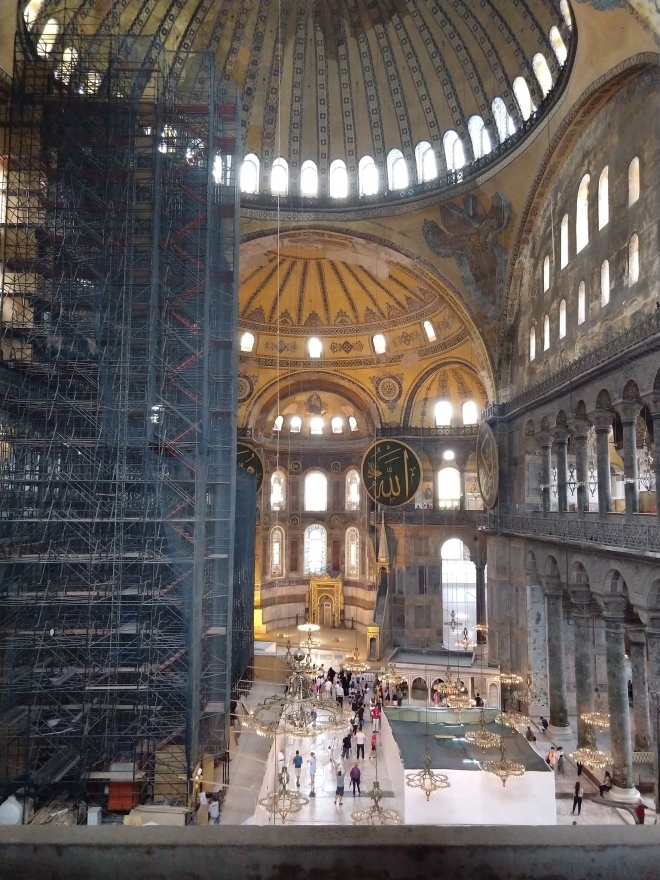
View of the building from the balcony, where the wife of the emperor would have sat. There was tons of scaffolding set up as they worked on repairing and restoring parts of the building. Looking at the number of stairs on the scaffolding helps show how enormous this place is!

The columns and ceiling above the balcony showing original designs and artwork (though a lot of it has been restored)
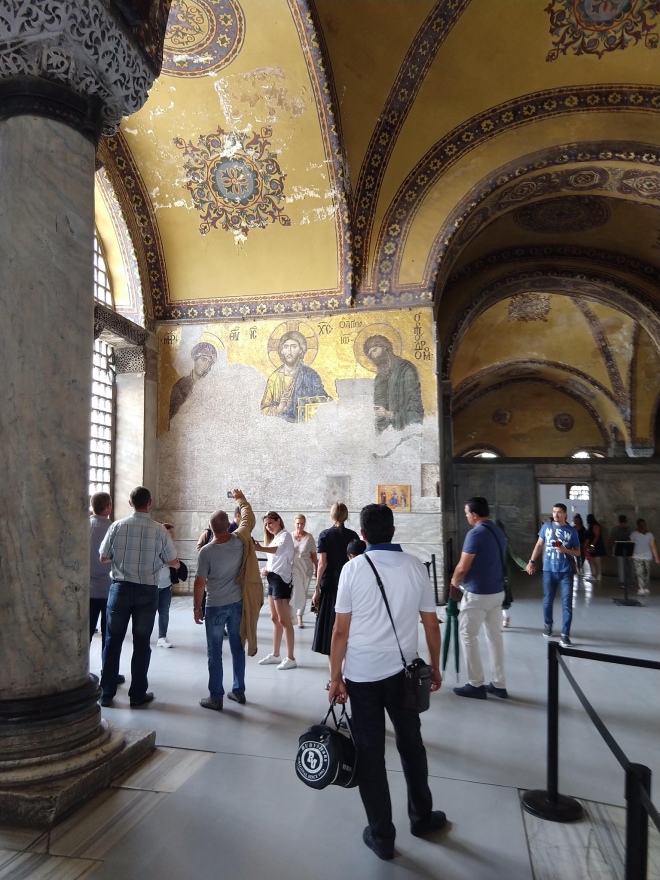
Famous mosaic in the balcony area of the church of Jesus with Mary and John the Baptist .
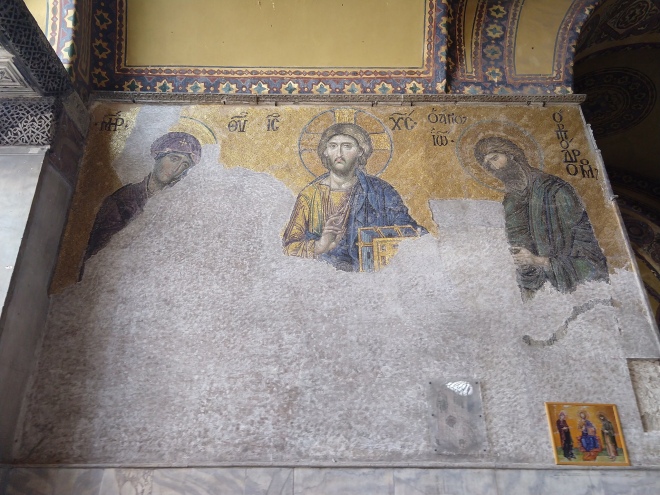
A closer view of the mosaic.
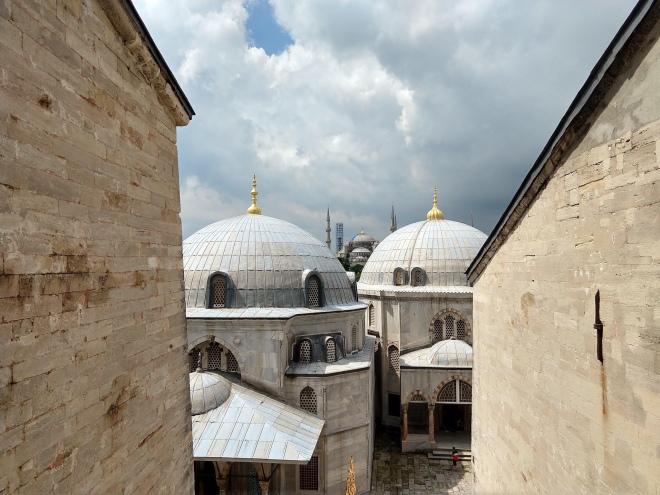
View out a window of the balcony, the Blue Mosque in view in the distance.
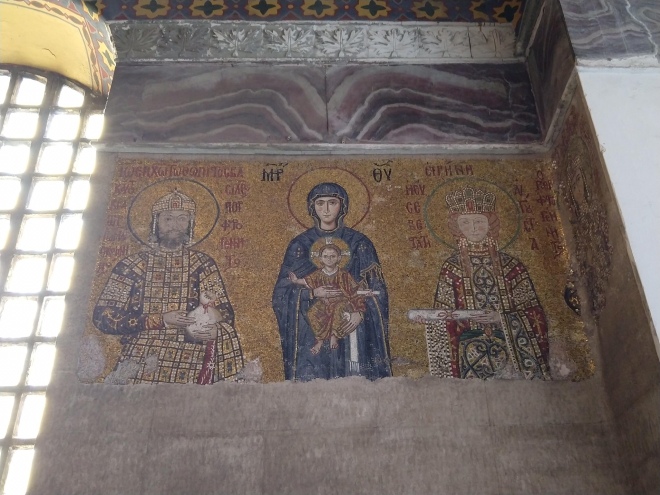
Another well known mosaic that’s been recovered.
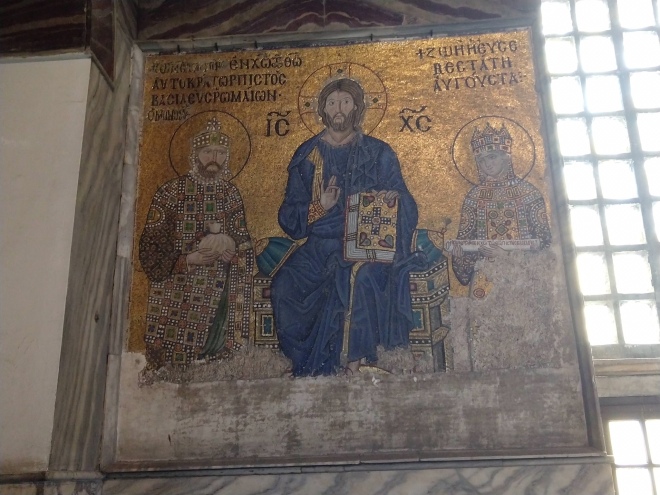
The final recovered mosaic in the balcony. Jesus touching his thumb to his ring finger represents the Trinity.
After viewing the balcony we headed back down stairs to the outside area, where the baptistry is found.
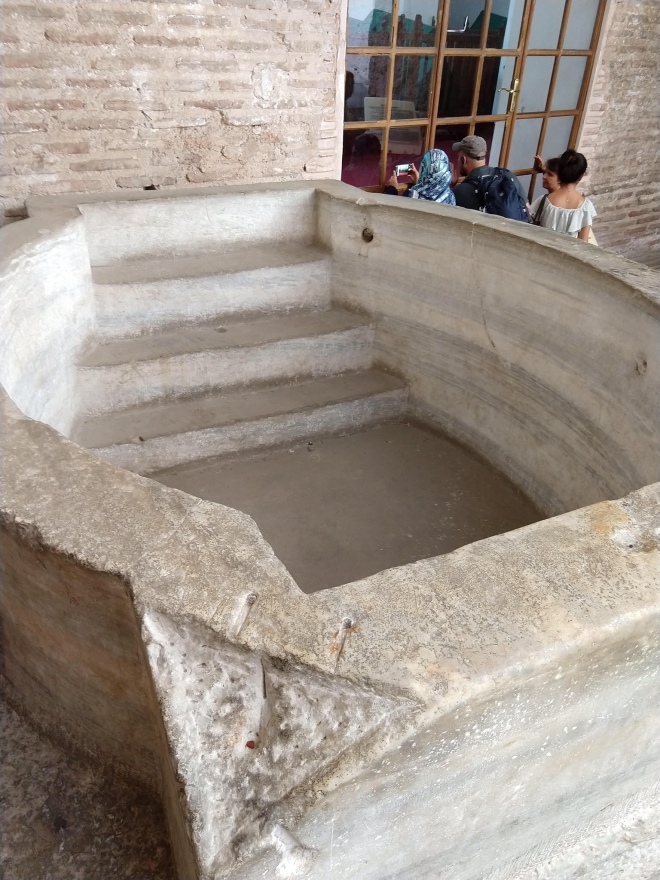
Baptistry, this was carved out of one big rock!
Right outside the Hagia Sophia is this beautiful fountain. I’m unsure what time period it’s from, but it’s likely from when the building was a mosque. In Islam, there are cleaning rituals one goes through before entering the building to pray.

The fountain – on the bottom marble levels are water faucets approximately every 2-3 feet to allow multiple people space to cleanse themselves at a time.
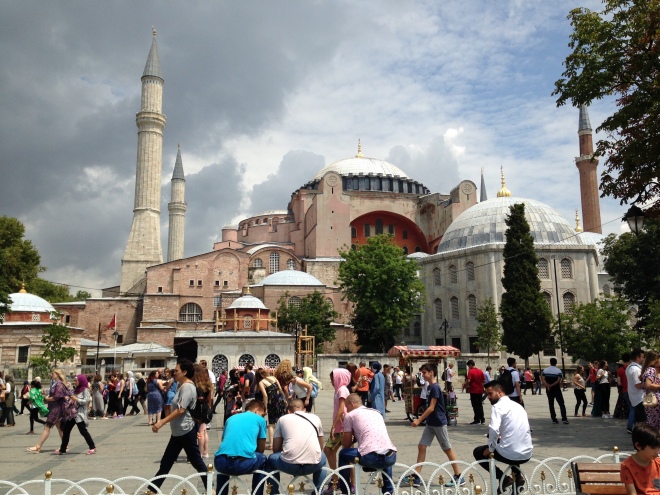
The view of the Hagia Sophia from the park in front of it.
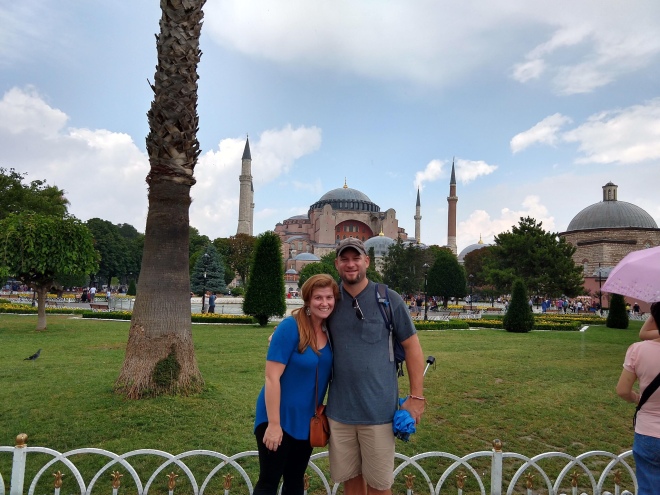
One of us in front of the Hagia Sophia, but on the other side of the park where the Blue Mosque is located.
After visiting the Hagia Sophia we paused at a nearby cafe for our first cup of Turkish coffee. I would describe Turkish coffee as a mix between cowboy coffee and espresso. It’s made in concentrated form (very strong) from finely ground coffee. Of the tiny cup you see in my hand below, only half of it is drinkable coffee. In the bottom, the grounds of the coffee sit, constantly adding strength to your drink. It’s quite a shock to your tongue if you are unfortunate enough to not stop drinking before you reach the grounds!
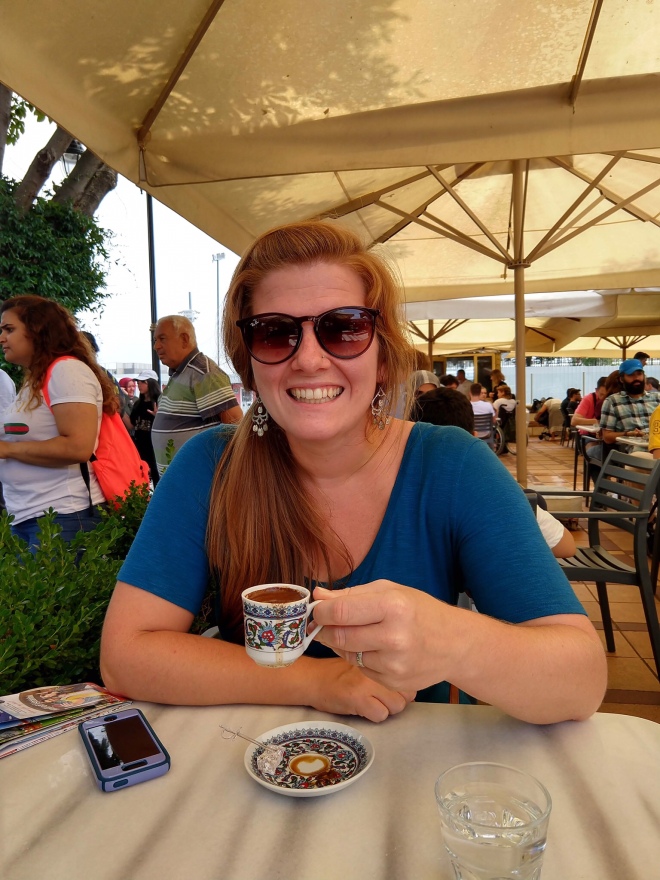
Turkish coffee break with a tiny piece of Turkish delight on the side of my plate.
After our coffee break we crossed the park to see the Blue Mosque. It was prayer time when we arrived, so we waited on the benches in front of the building until visitors were allowed to go in again.
The Blue Mosque, actually named Sultan Ahmed Mosque, is known for it’s beauty. Built between 1609 and 1616, it is a popular tourist destination that still fully functions as a place of worship. Outside visitors are allowed in free of charge between the hours of prayer to see this large building decorated with beautiful hand painted tiles. Unfortunately the building was under restoration when we went, so Kirk was unable to see the beauty in it’s fullness, but he still got a peek of what it looks like.
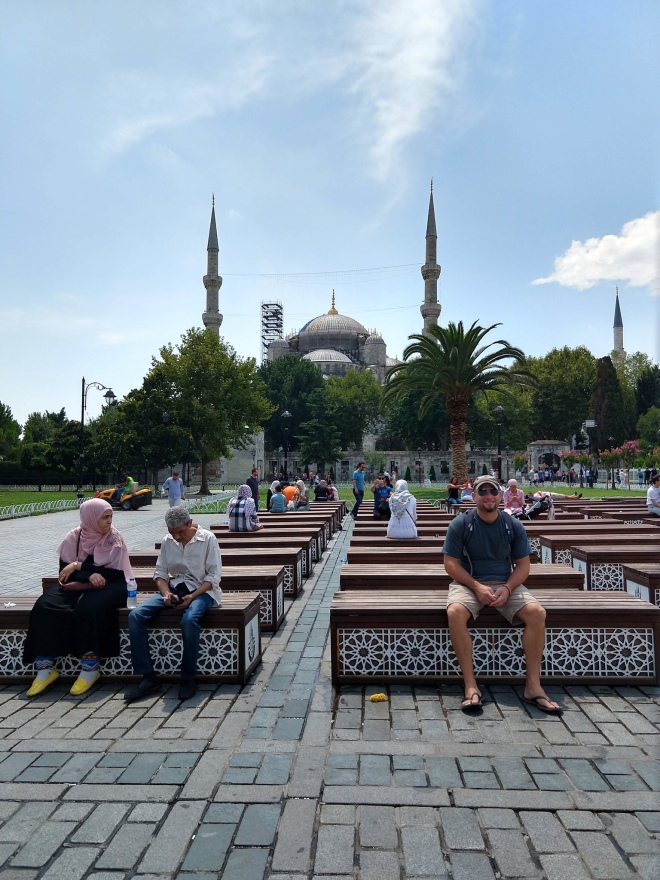
Kirk, waiting with others to go inside.
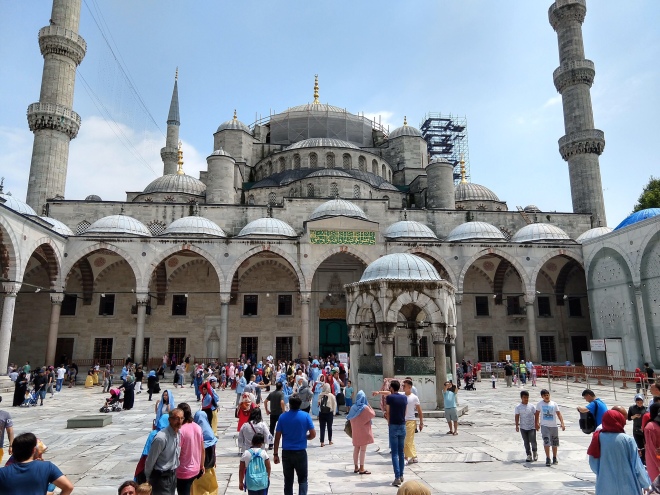
The backside of the Blue Mosque, after you have entered into the courtyard area.
Prior to entering the mosque, we wandered around the courtyard area reading various signs and information about Islam and the Blue Mosque itself. If you are unfamiliar with what Muslims actually believe, here are a few signs describing the basics.
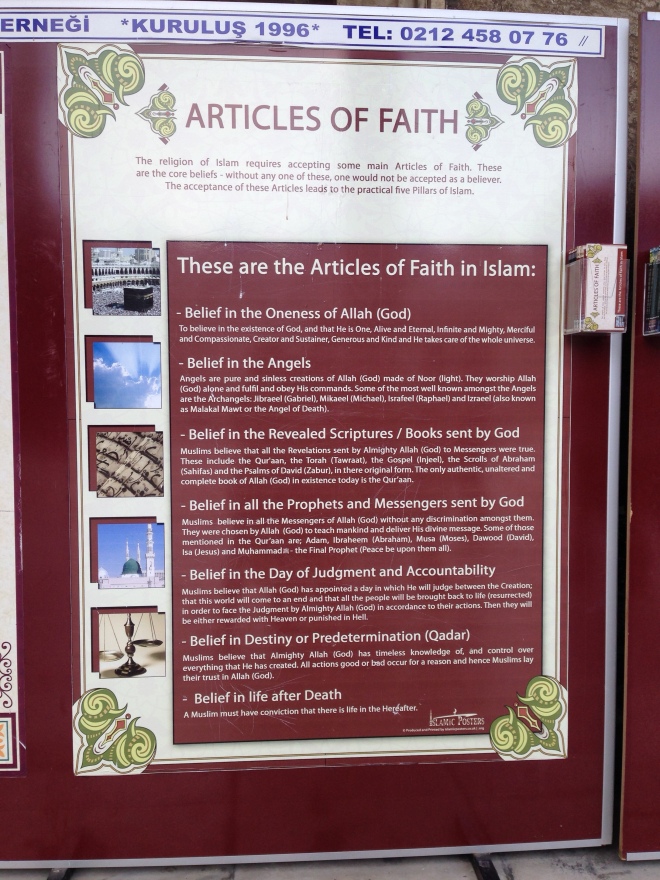
Major beliefs within Islam. These are the starting point for the faith – the beliefs one must have to be considered Muslim.
I’ll type out brief descriptions in case some of you are reading on your phone and the photo is tiny.
– Belief that God is one – creator, sustainer, infinite, and kind
– Belief in angels, sinless creations of God who worship him
– Belief in the revealed scriptures, mainly in the Qur’aan, but also in certain parts of the Bible that the Qur’aan says are true. (Those parts being the Torah (first five books of the Old Testament) and Psalms, as well as parts of the gospels). On that note, some of you might find it interesting that Islam traces it roots back to similar beginnings to those of Christianity and Judaism. The names listed in the prophets below will look familiar to you. However, while Christians would tie themselves to Abraham, Issac, and Jacob – Arabs (and therefore, Islam, as it came out of the Arab world) would hold more tightly to Abraham and Ishmael (the son Abraham had with Hagar, Sarah’s handmaiden, who was sent away))
– Belief in all the prophets sent by God – Adam, Abraham, Moses, David, Jesus, and Muhammad
– Belief in a day of Judgement and accountability where all who have lived will be brought back to life and judged for their actions
– Belief in destiny or predetermination – that God has knowledge of and control over everything he created
– Belief in life after death
After one accepts these beliefs, they are then expected to hold to the five pillars of Islam. Doing these five things shows that one is a follower of Islam.
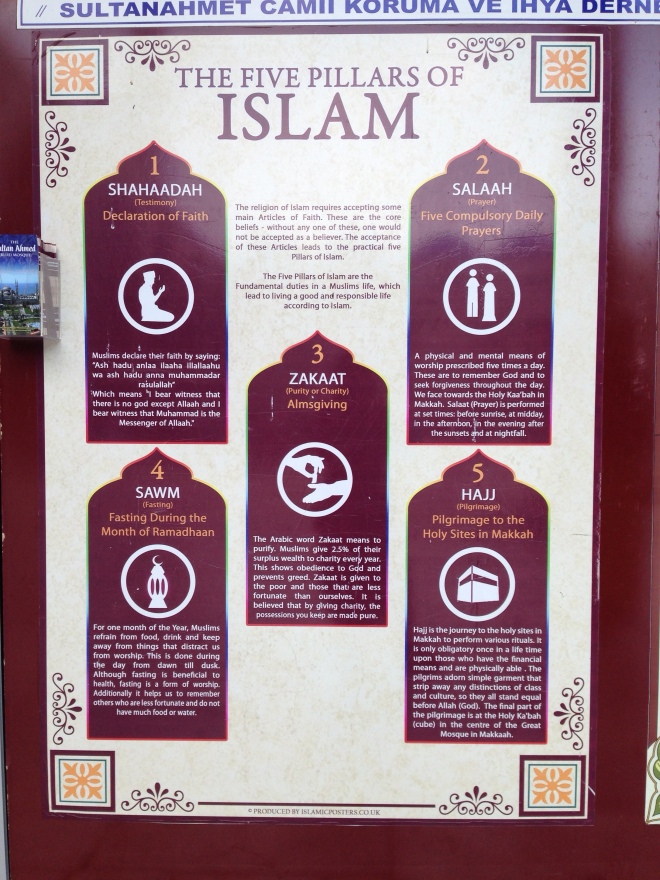
The five pillars of Islam
1) Declaration of faith — “I bear witness that there is no god except Allāh and I bear witness that Muhammad is the Messenger of Allah”
2) Prayer, five times a day
3) Almsgiving – giving 2.5% of surplus wealth to those in need
4) Fasting during the month of Ramadan (30 days around May/June). They don’t eat or drink from dusk until dawn as an act of worship, but can take food and drink after dark.
5) Pilgrimage to holy sites in Makkah (Mecca). There is a big black cube in Mecca called the Ka’bah that is believed to be where the first House of Worship was located. Though it has been rebuilt several times after being destroyed at various points in history, it was believed to originally be built by angels, rebuilt by Adam and Eve, and rebuilt again (after being destroyed by the flood) by Abraham and Ishmael. Remnants of the original structure built by Abraham and Ishmael are believed to still be there. To this original house of worship is where followers of Islam are directed to make a pilgrimage and it is towards this structure that they face while praying.
Those are the main acts required to practice Islam, and Muslims ultimately believe that following those pillars will get them into heaven (though, like other religions, some people practice more devoutly than others.
It’s really interesting to me to hear a religion describe it’s beliefs. Perhaps that’s why I felt compelled to post these signs written by individuals within the Muslim faith. We all have these preconceived notions about other religions based on our own experiences of the world, but I usually find that the core of many religions turns out to be quite different than what I expected. That was certainly the case for me with Hinduism – and now with Islam.
Growing up in the south, my only real interaction with Islam was what I saw on the news — terrorism, extremist acts — and of course that’s what was on the news, a kind citizen living quietly isn’t much to talk about. However, having now interacted with many people of the Muslim faith, I find it sad that so many of my views of Islam were based on this interaction with a screen and not with people. Contrary to what I’ve most often seen broadcast, Islam is made up of a lot of loving people who are fearful and appalled by what a small sect within Islam has made the world believe their religion to be. I’ll never forget talking to a young Muslim carpet salesman in Istanbul who, when we asked when high season for tourists was, he replied, “There is no longer a high season for tourists. The extremists have made people fearful to come to our country, and our businesses are suffering because of it.”
With bombs having gone off blocks from his shop, this man has had to fear for his life because of extremists, and now he continues to fear for his livelihood because of them. I couldn’t help but think about what a hard place that is to be in. Many people would be fearful of this man simply because he is a Muslim, but that only makes him a victim to these extremist crimes a third time – via rejection for a sect of Islam that he’s not actually affiliated with.
Traveling has a way of helping me think through things differently. I’ll return back to our actual visit to the mosque now 🙂
After looking at the information signs, we got in line to go into the mosque. To enter into mosques, you must be dressed appropriately. Knees and shoulders must be covered. Women must wear a headscarf and skirt. Though I came prepared with extra coverings in our backpack, we were unaware that Kirk’s mid-knee shorts were a little too short until we got there. They handed him a skirt as we went in to cover himself. He was certainly in good company. Nearly everyone visiting had borrowed some article of clothing to be able to enter. Kirk is shown in his skirt below, and you see plenty of others in blue, maroon, and yellow scarves, dresses, and skirts in the photos with other people in them.
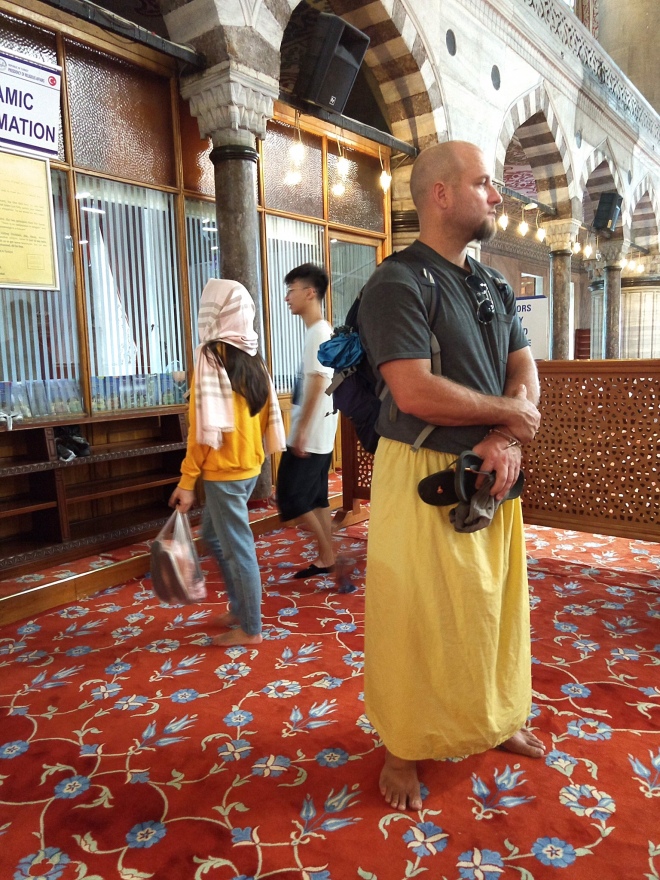
Kirk, inside the mosque.
I mentioned that it was unfortunate that the building was being restored during our visit. Perhaps the next picture shows what misfortune this is. Normally, upon entering the Blue Mosque, you are greeted with open high domes like the Hagia Sophia. This time, below is what we saw.
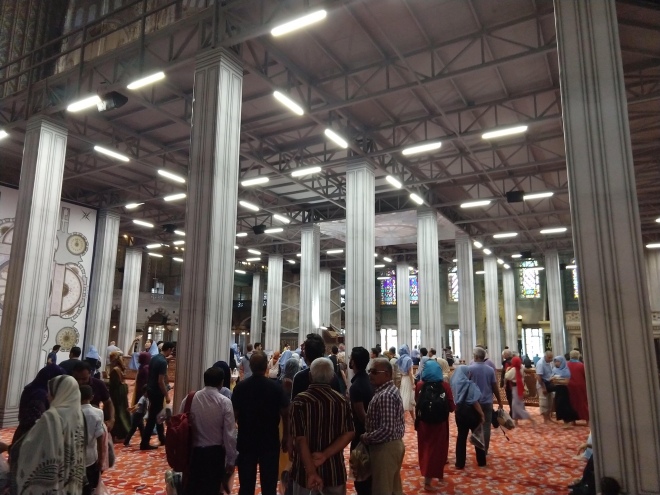
Not one of those columns is normally there, nor is that low ceiling.
It was pretty funny. In the center of the low ceiling was a full sized picture of the dome above it, which is a nice gesture, but y’all, you can see a picture online! I think restoration work is important and I’m thankful they didn’t just shut the whole thing down, (because they easily could have), but I am pretty sad Kirk didn’t get to see it in it’s fullness. Below is a picture of the side of the mosque not under restoration. It isn’t near as large or decorated as the main dome, but it will still give a good glimpse of how decorative this place is.
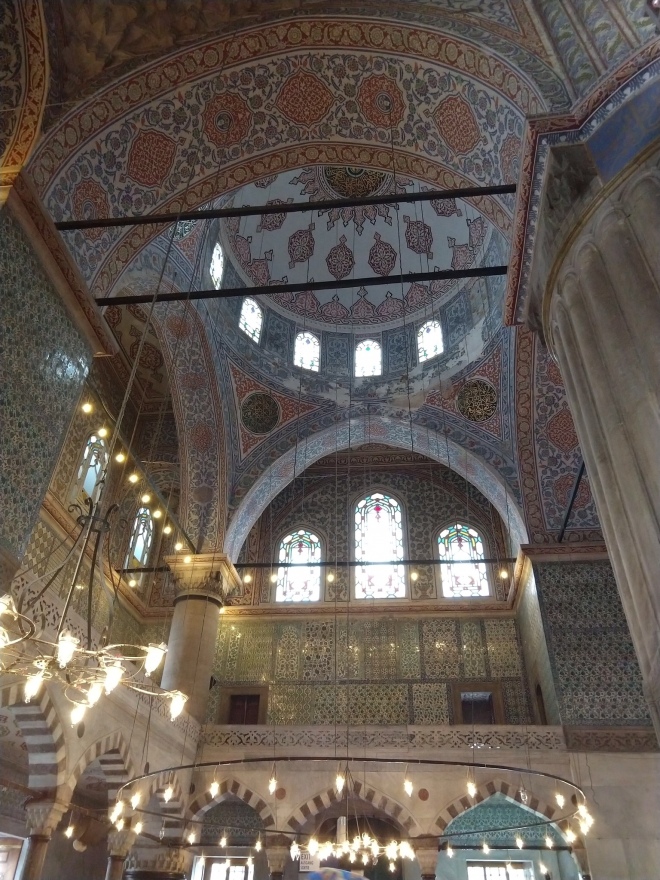
The side area/dome of the mosque.
After visiting the Blue Mosque, the skies grew grey and rain started to fall. We decided it was probably a good time to go visit the old city cisterns, underground. Built in 532 AD, the Basilica Cistern is the largest of the hundreds of old cisterns under the city. At one point, prior to being a cistern, this area was a church, hence the name “basilica.” The cistern is made up of 336 columns with arches in between that support the city above it. It’s quite a site to see and is located right in the middle of town, next to the Hagia Sophia.
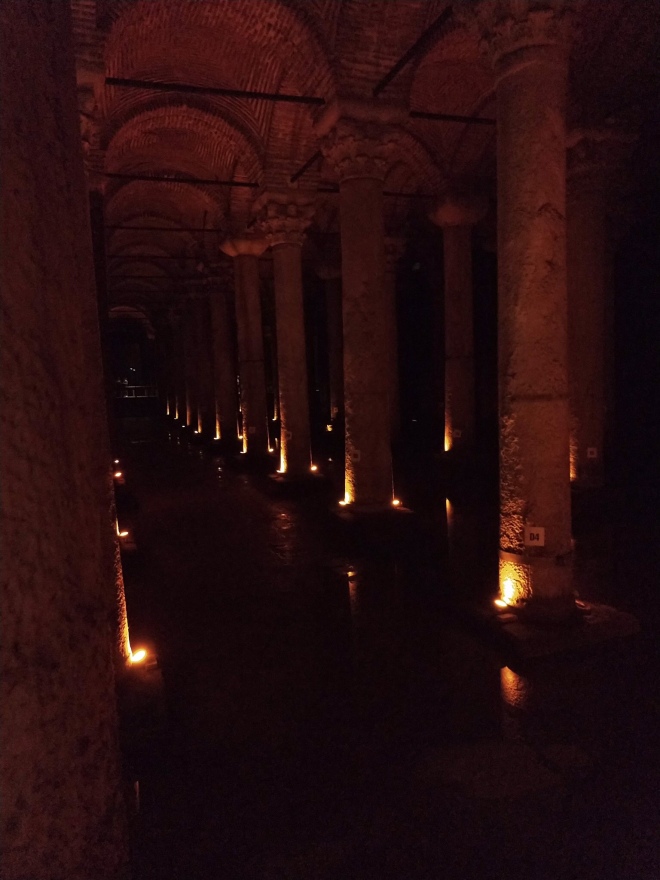 Down in the old cisterns. They are a little eerie and beautiful!
Down in the old cisterns. They are a little eerie and beautiful!
There is a single column down in the cistern with artwork on it that is called the column of tears. This column was made as a memorial for all the slaves who lost their lives while building this underground structure. I’m unsure how many slaves died while building this, but I read it took 7,000 slaves to build it.
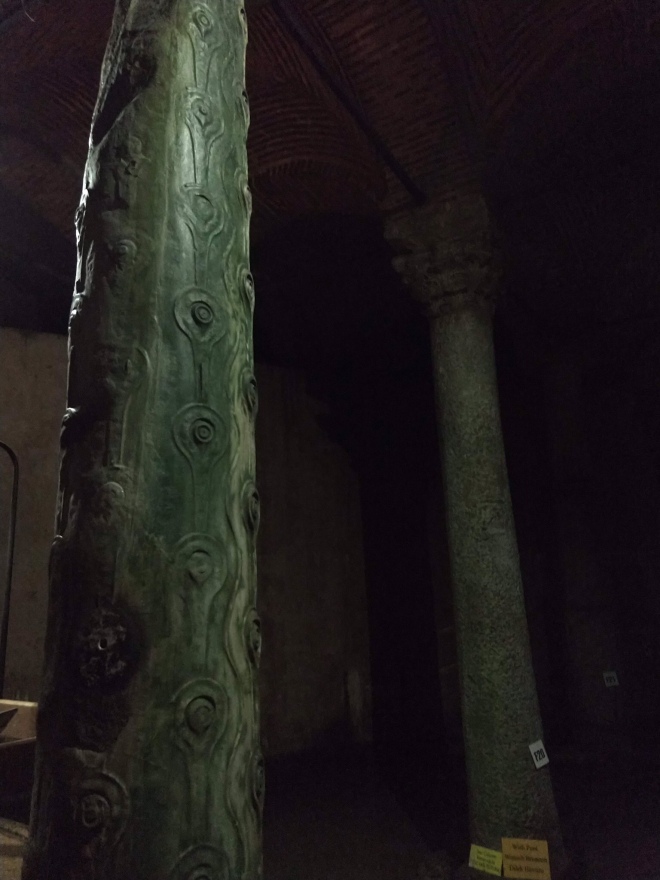
Column of tears
Down in this cistern are also two other columns that are different than the rest. These two are both resting on enormous carvings of Medusa’s head. No one is sure where the Medusa heads originated, but it’s believed they were taken from some other part of the city and moved here during construction.
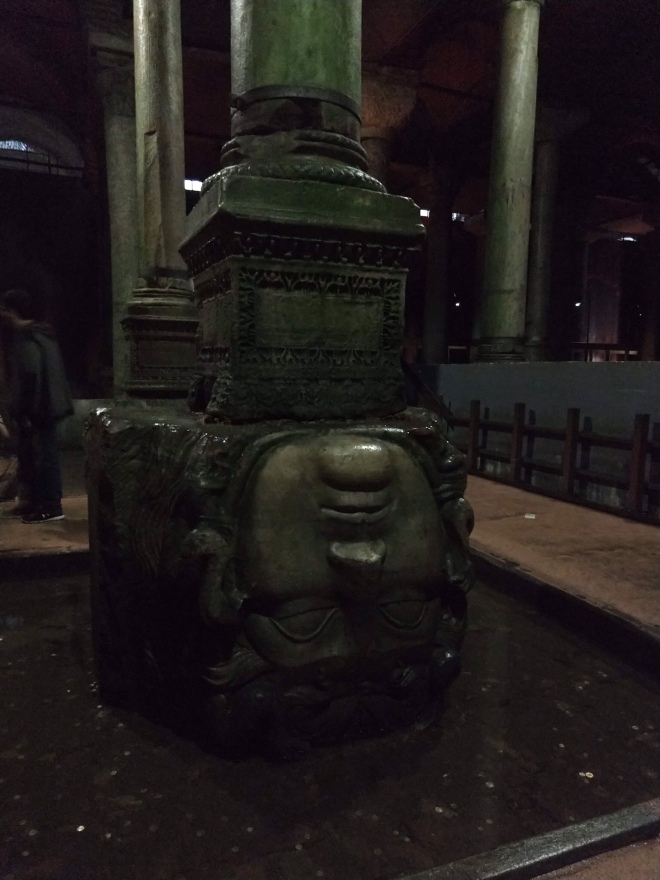
Medusa column 1
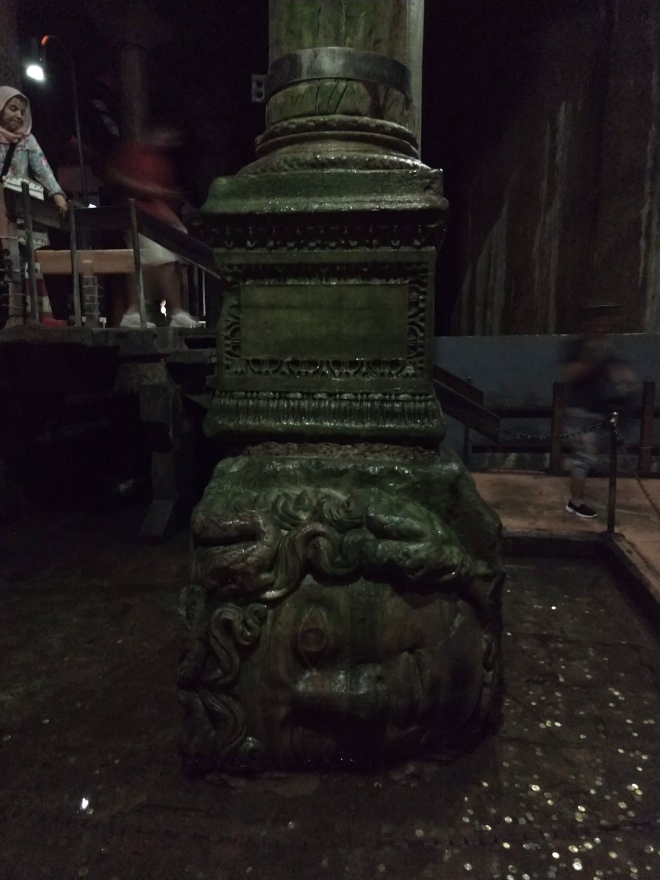
Medusa column 2
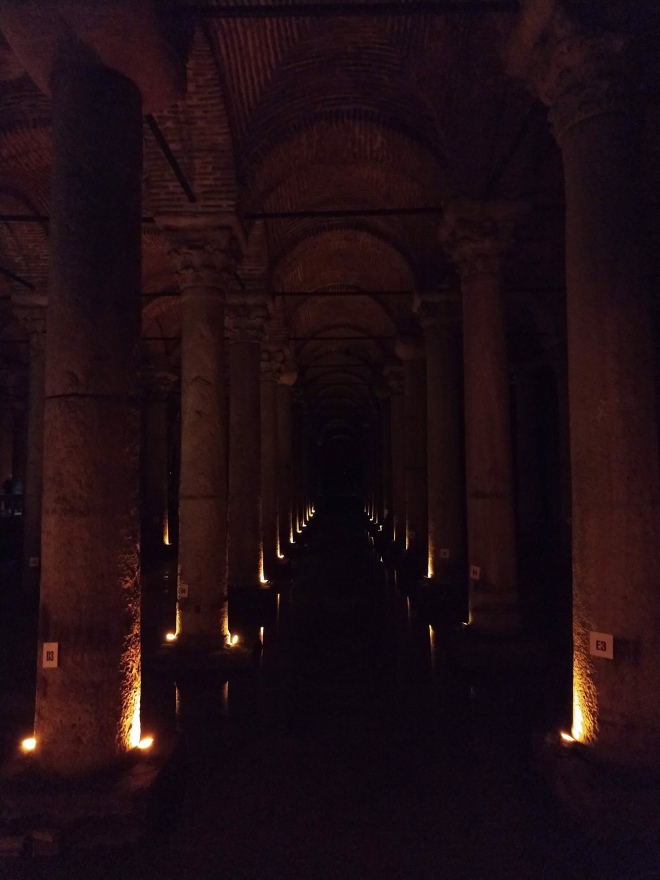
A final view of the lighted columns before going back above ground.
Another day in Istanbul we spent wandering around the Archeological museums. Had I not previously visited these museums with my seminary class, little would have stood out to me other than how old a lot of this stuff is. Thankfully, since I’d been before, I was able to direct Kirk towards some of the more interesting objects in the museums. Everything in the museum is labeled, but not always in a way that helps you connect it to things you already know.
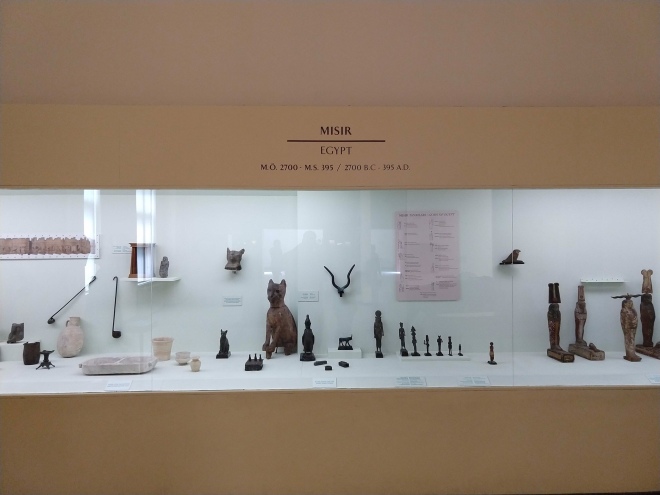
I took a picture of the above because of the dates. Some of the objects the museum has from Egypt date back to 4700 years ago. That’s unbelievable.
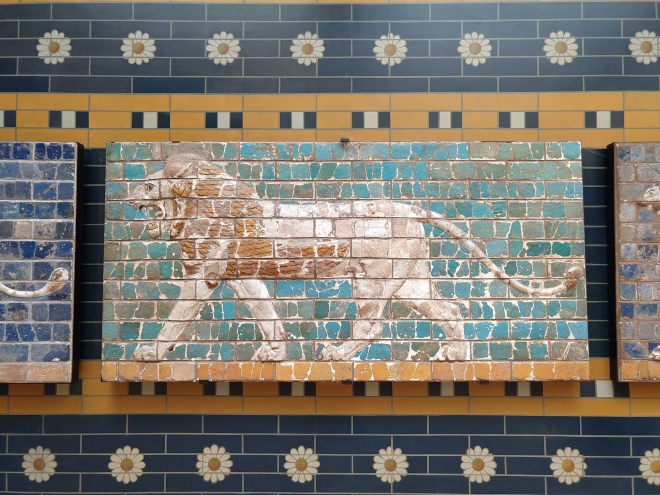
This lion mosaic that has been reconstructed using fragmented pieces and modern materials dates back to 605-562 BC when Nebuchadnezzar II was king. There were 120 of these lining the procession street that led into the inner city of Babylon. Or in other words – this is from the time period in which the book of Daniel from the Bible takes place. Some people interpret the book of Daniel as historical fiction, others interpret it literally, either way, the character or literal person of Daniel would have walked past these walls :).
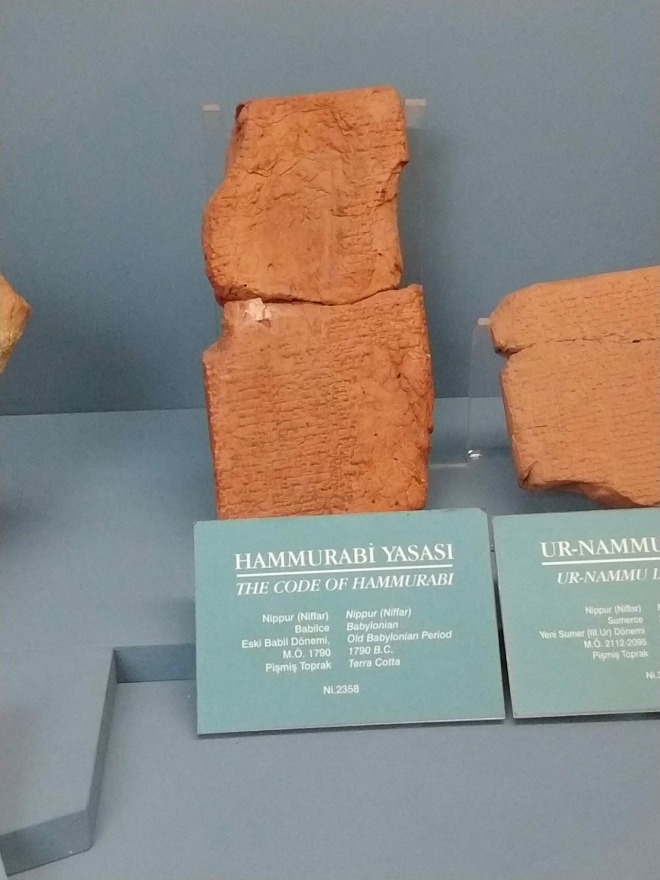
The Code of Hammurabi – 1790 BC
The Code of Hammurabi is well known in historical circles as one of the oldest sets of laws that has been found and deciphered, and it is certainly the most extensive set of laws found from long ago. Containing 282 laws, it reads similar to Leviticus, however, this code is several hundred years older than those found in the Old Testament. Interestingly, the code of Hammurabi is the first mention in history of the law “eye for an eye.” Though a significantly larger version of this code is much more famous than this smaller tablet, this smaller tablet dates back around 35 years prior to the famous large stone engraved with the entirety of the code.
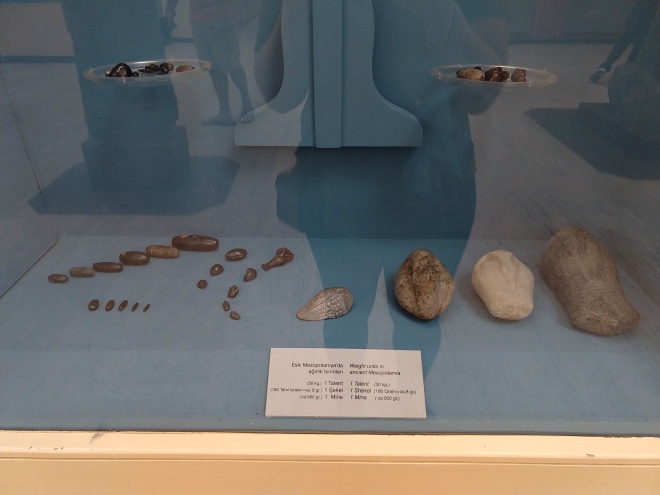
Measurements of weight from Mesopotamia
Ever wonder what talents and sheckles, and those other measurements of weight mentioned in the Bible look like? That’s what the above stones measured.
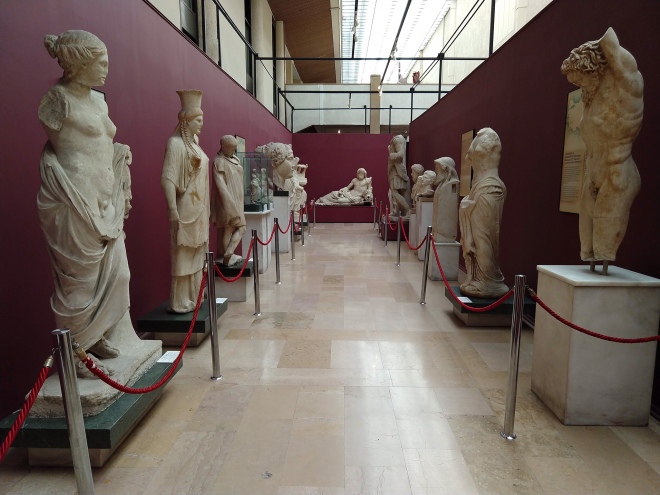
Greek statues from the classic era
I don’t have much to say about these statues historically, but I am so impressed by intricate marble carvings. The one below stood out to me the most. Carving by hand, someone had an amazing enough mind and eye to make fabric look sheer – draped over a body.
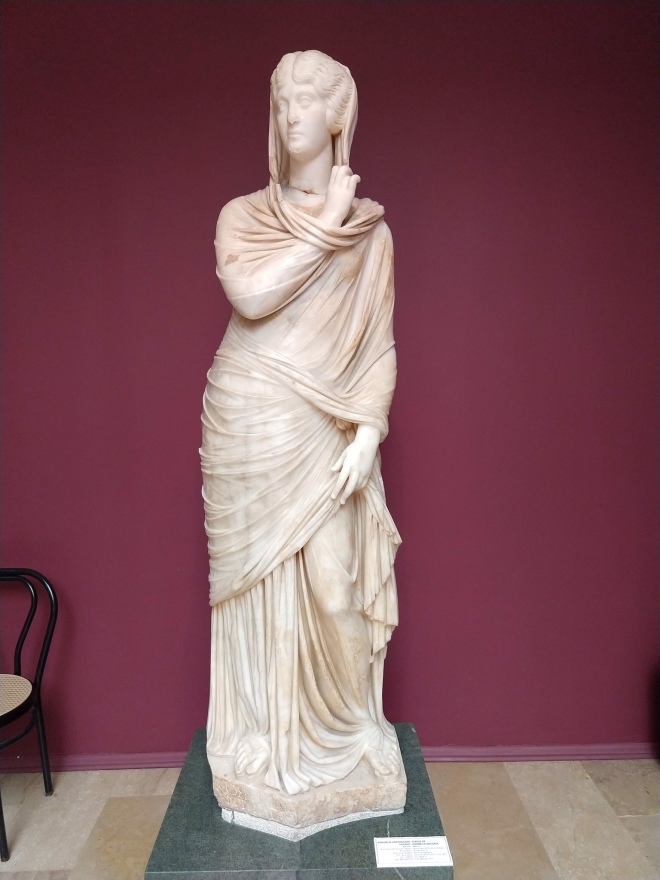
The knee, elbows, breast, and belly button, all visible through this “sheer” marble “fabric.” It’s pretty amazing that someone took a giant piece of stone and carved this our of it!
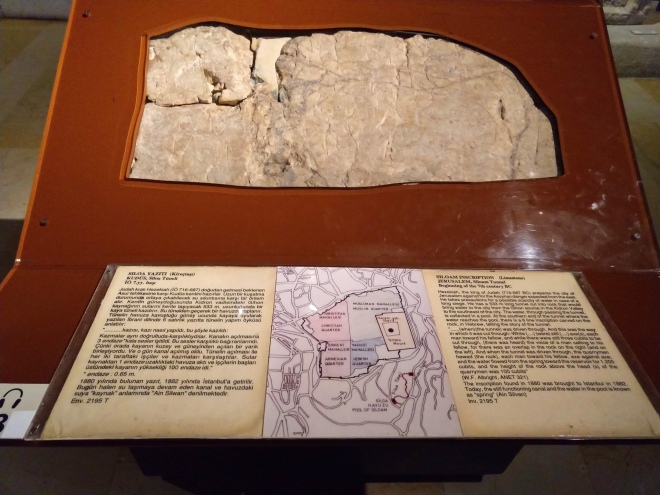
The Siloam Inscription
2 Chronicles 32 describes a time in which King Hezekiah of Judah feared the city of Jerusalem was going to come under siege. With this fear in mind he came up with a plan to ensure the city would have a steady water source if they became trapped. King Hezekiah had two crews begin digging at separate ends of what would eventually be a tunnel to bring water into the city. One crew began at the water source and the other from inside the city. When the two crews met in the middle, they carved an inscription in the stone to mark the occasion. The inscription was found is 1880 and is seen in the photo above.
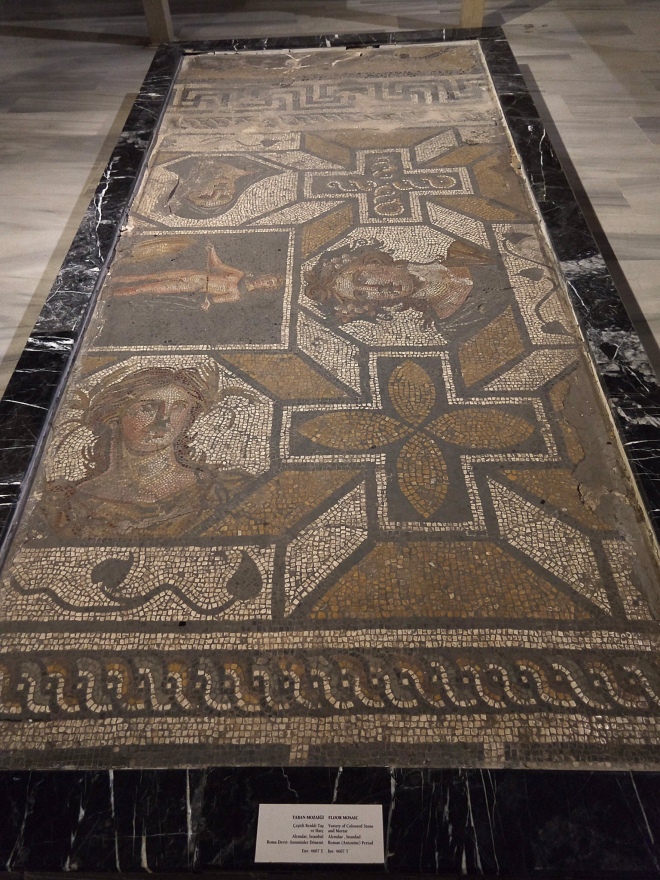
Old floor mosaic. Check out the shading on those faces! Many of the old mosaics are quite impressive.
After visiting the museums we passed a sign that said that Whirling Dervishes would be performing at the train station that night. I had never heard of such a thing, but Kirk knew exactly what it was and we signed up to go.
In short, whirling dervishes come out of a Sufi Muslim prayer practice in which one sort of actively meditates while spinning in circles. Not everyone in the faith used to practice prayer this way, only young boys and men who had gone to school and practiced to learn how to do it correctly. From what I understand, that practice is now rarely used for prayer, but rather for entertainment for tourists. They wear their traditional white robes that have a full circle skirt and musicians play traditional string instruments as the dancers whirl around and around.
It actually sounded a little boring to me at first, but once we were there, I was mesmerized. The musicians voices combined with the prayers/dancers ability to spin round and round for minutes at a time without looking dizzy or sick – quite impressive. 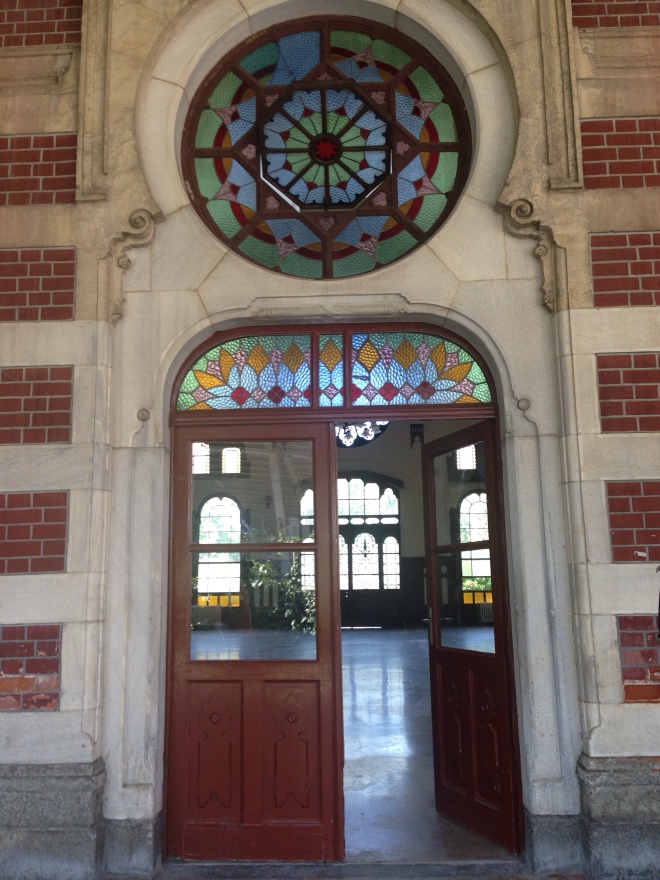
The room in the train station that was used for the whirling.
The show started out with a quartet of stringed instruments. Eventually one man began singing along who had a nice voice, but that didn’t stand out much. However – eventually another man began singing and as his eerie tenor tones hit the concrete walls and bounced around, every space in the building was filled. Chills went down our spines as Kirk and I gave one another a knowing look. It was so beautiful.
I ended up recording part of it, but I’m not sure it will sound quite as interesting unless you have the sound up pretty loud. Honestly, the sound of his voice is similar to what we were hearing five times a day all over town when the Muslim call to prayer comes on – but hearing something live and over a speaker are entirely different experiences. Maybe give it a listen anyway :).
Soon after the singing, the whirlers came out. They began their dance with a series of bows, and then the whirling began. 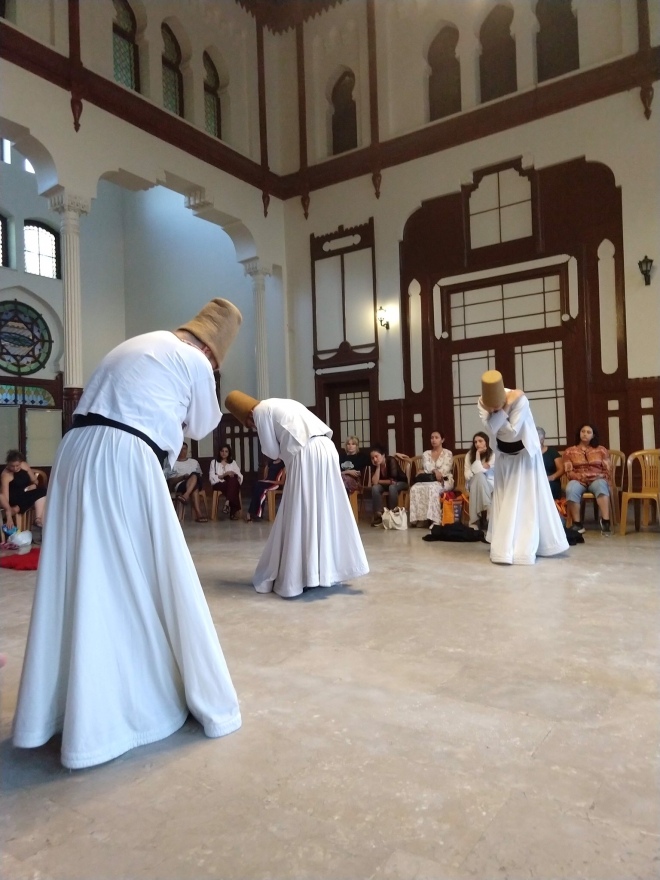
The bows
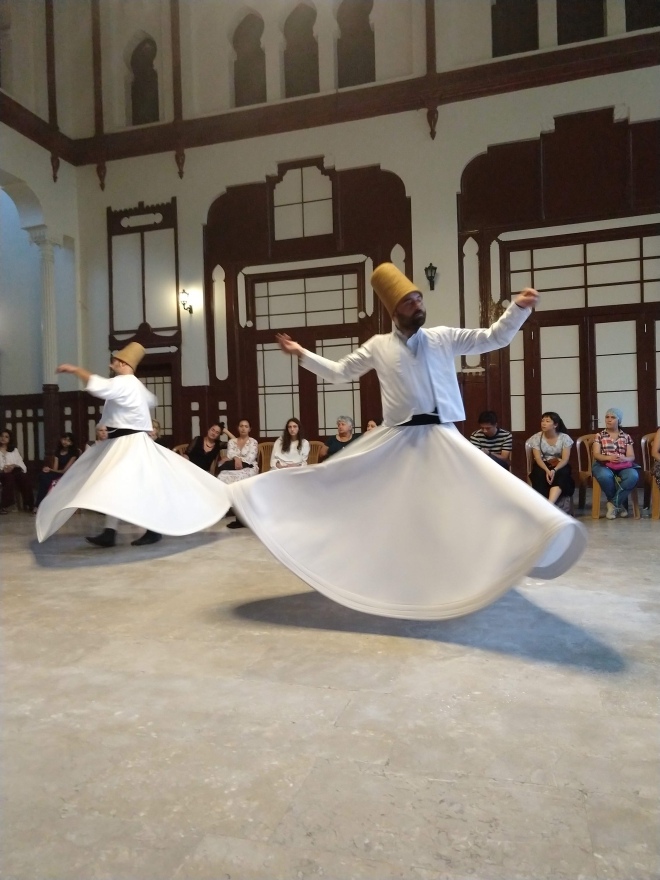
The whirling
Alongside the length of time that these guys could spin being impressive, I also left wanting one of their skirts for twirling. I’m unsure exactly how the robes are made, but the bottoms of them appear weighed. As the men spin, three distinct points form on the skirts that seem to float weightlessly – the points staying in nearly the same position as the men go around and around. There is a video below to give a better idea of what I mean.
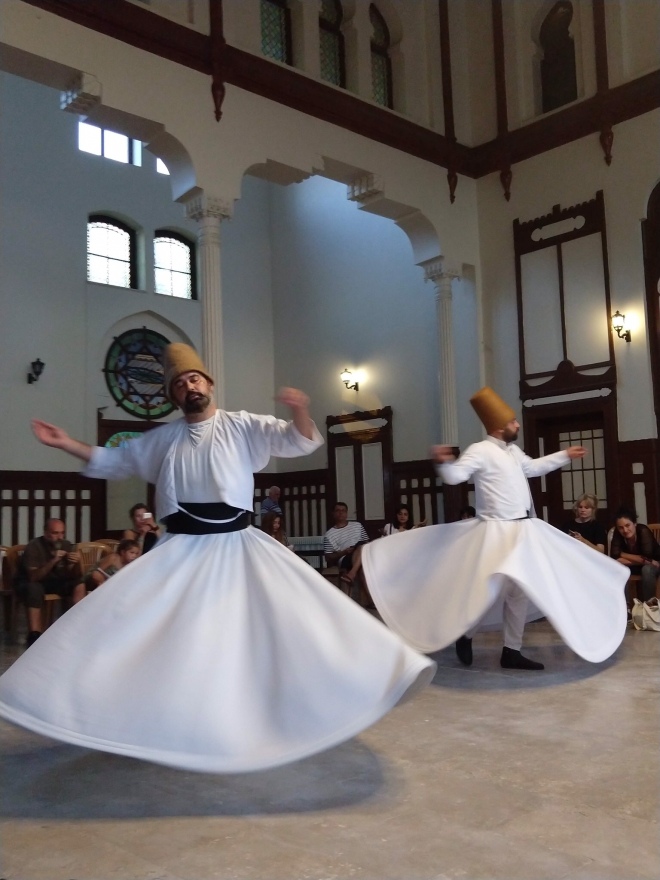
More whirling
Video of whirling
Outside of visiting the Dervishes, we also found ourselves out late on one other occasion in Istanbul. One night, after returning to our room from dinner we learned that a luna eclipse was happening that evening. After deliberating a very short time, we packed up our bags with water and binoculars and headed back down to the park in between the Hagia Sophia and the Blue Mosque. This area turned out to be beautiful at night, and a lunar eclipse just above a very bright red mars made it even better!
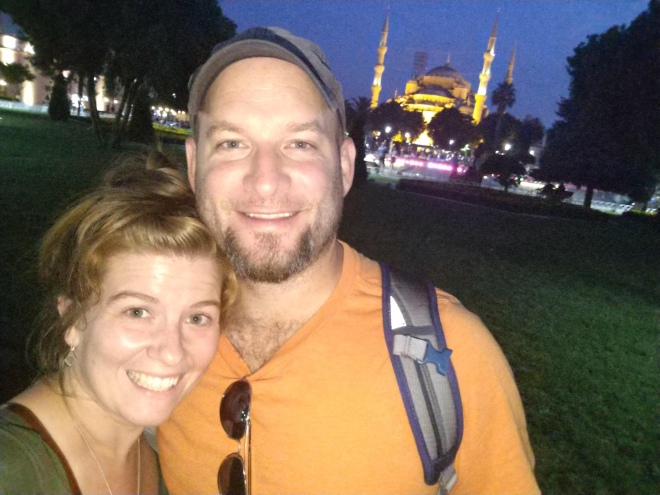
Us in front of the Blue Mosque
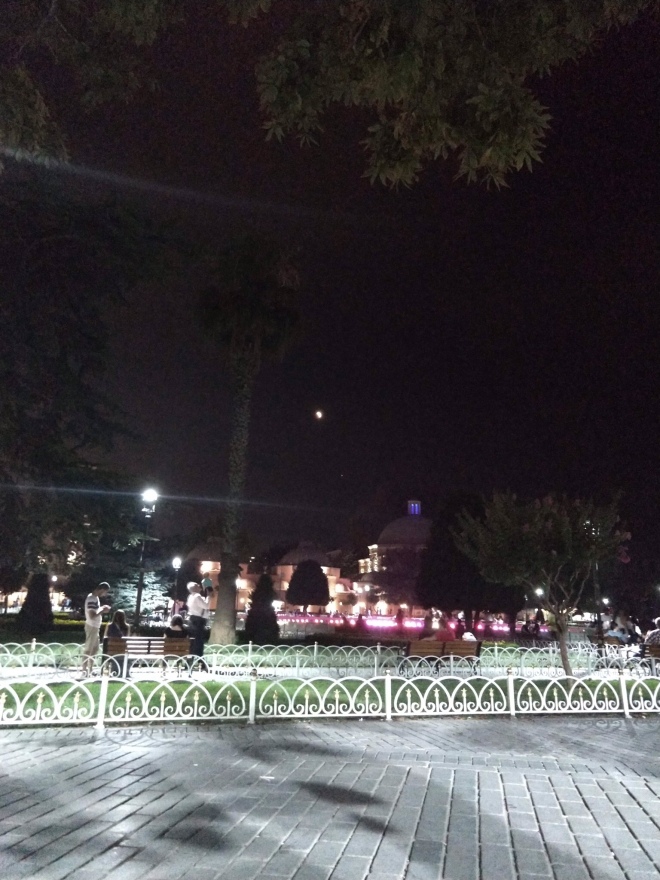
First glimpses of the lunar eclipse. Even with only our phone cameras I was impressed at what showed up in the photos. Here, only a tiny part of the moon is covered, but you can also see a tiny dot somewhat in between the moon and the blue lights on the top of that building – that tiny dot is mars!
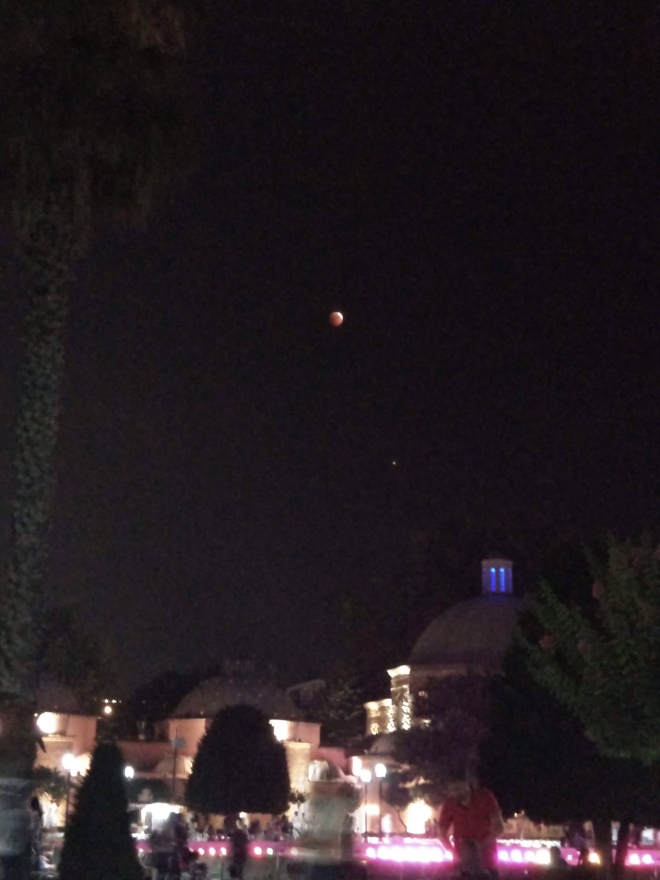
The moon, nearly covered, looking quite red! Mars still seen below it.
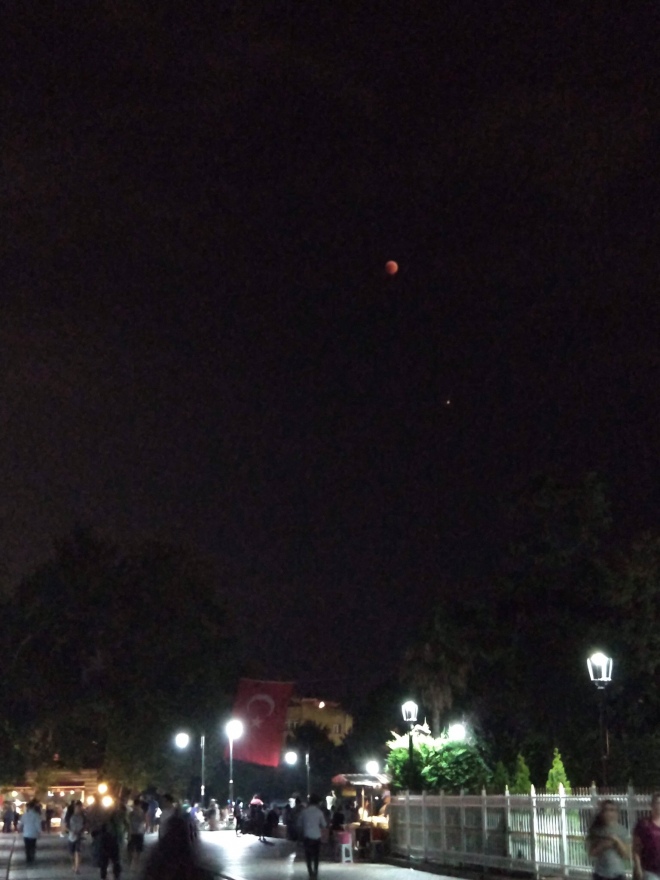
The red moon, fully covered, Mars still in sight 🙂
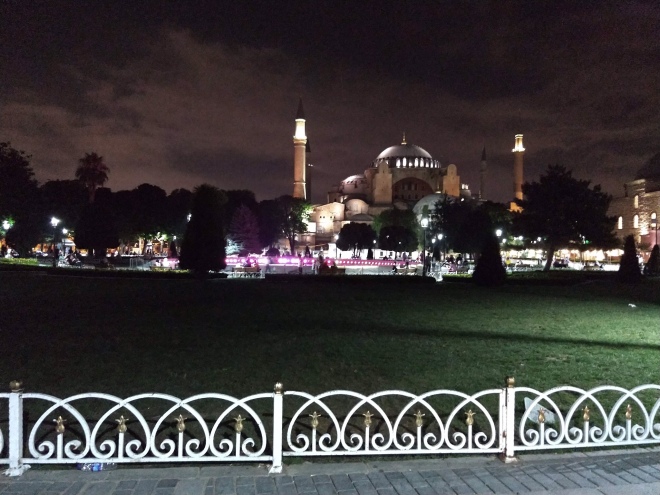
The Hagia Sophia, beautifully lit at night.
On our way back to our room I also snapped a picture of the Egyptian Column in the Hippodrome all lit up. This column was brought to Constantinople (modern day Istanbul) from Egypt in the 4th century.
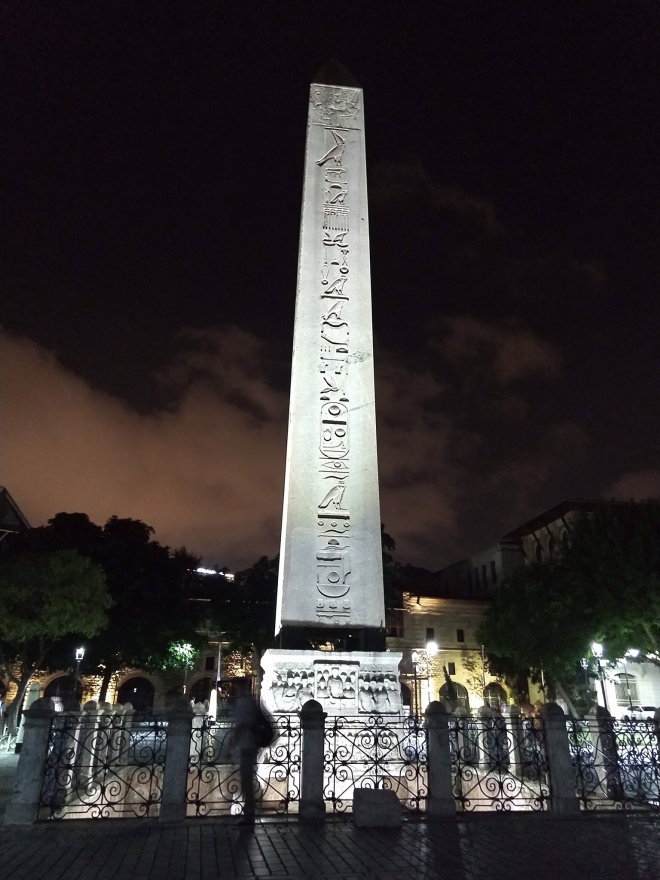
Egyptian column in the Hippodrome by night
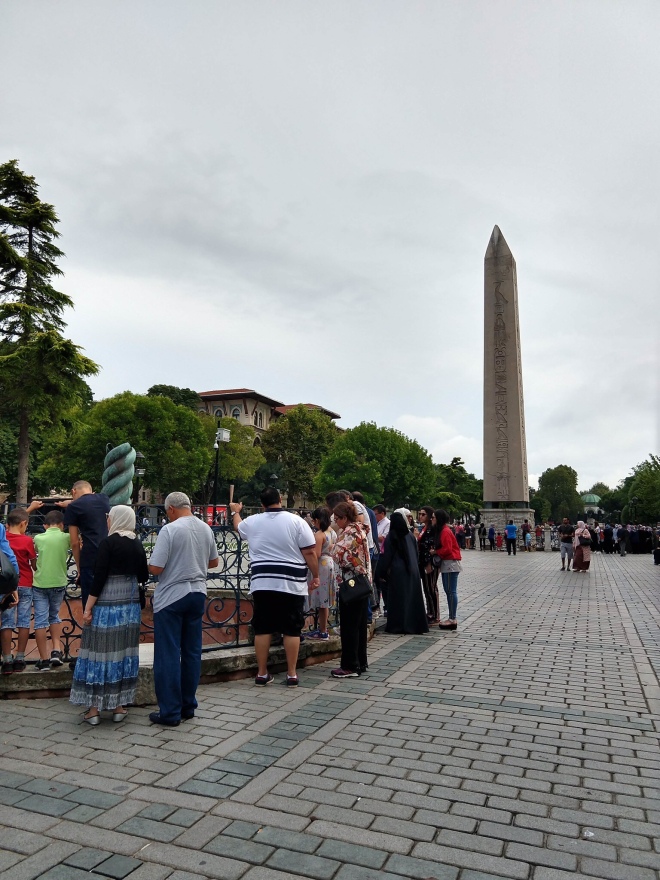
The Hippodrome by day. Though the tall statues are all that now stand, around the statues was once a racetrack where chariot races were held – that was the Hippodrome.
Our next big day in Istanbul included a visit to Topkopi Palace. Though not as old as many of the ruins in Istanbul, these palace grounds were built in 1465, not long after the Ottomans took over the city. Topkopi Palace was home to the many Ottoman Sultans who ruled over the city from the 1450’s to the 1920’s. The grounds are huge and the tile work inside the buildings is beautiful!
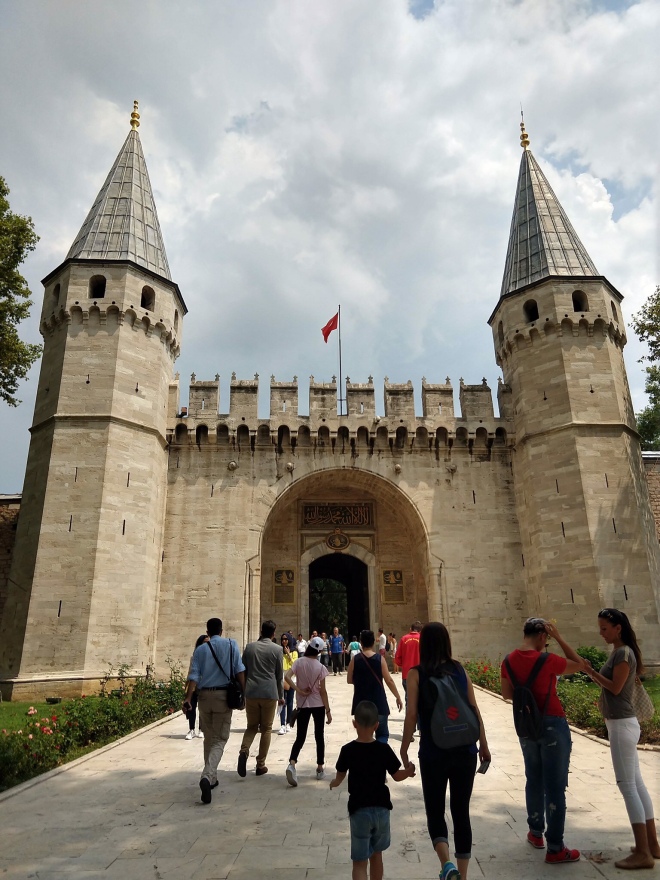
Entrance to the inner gate of the palace 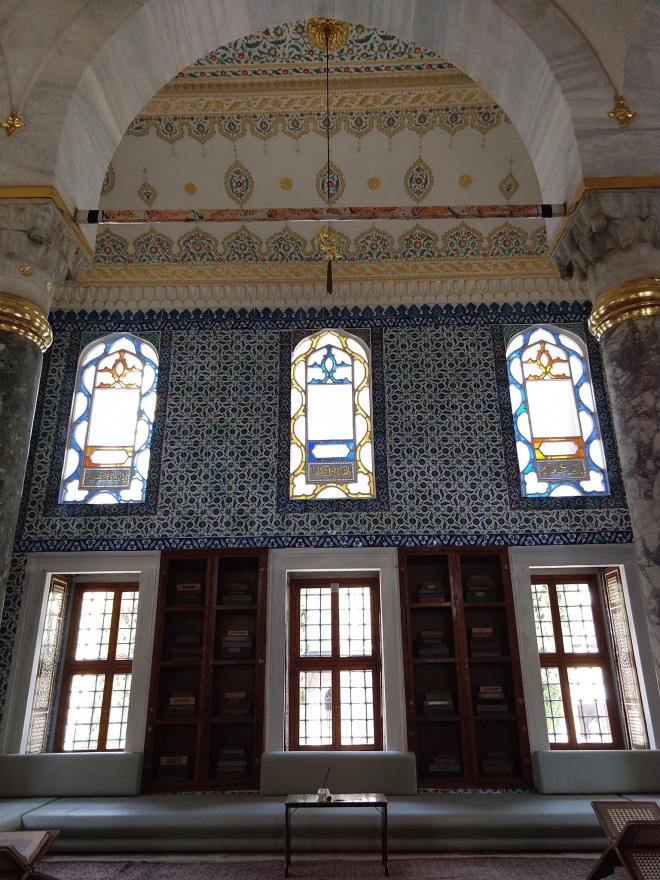
The library

The ceiling in the library – just think – all these tiles were hand painted!
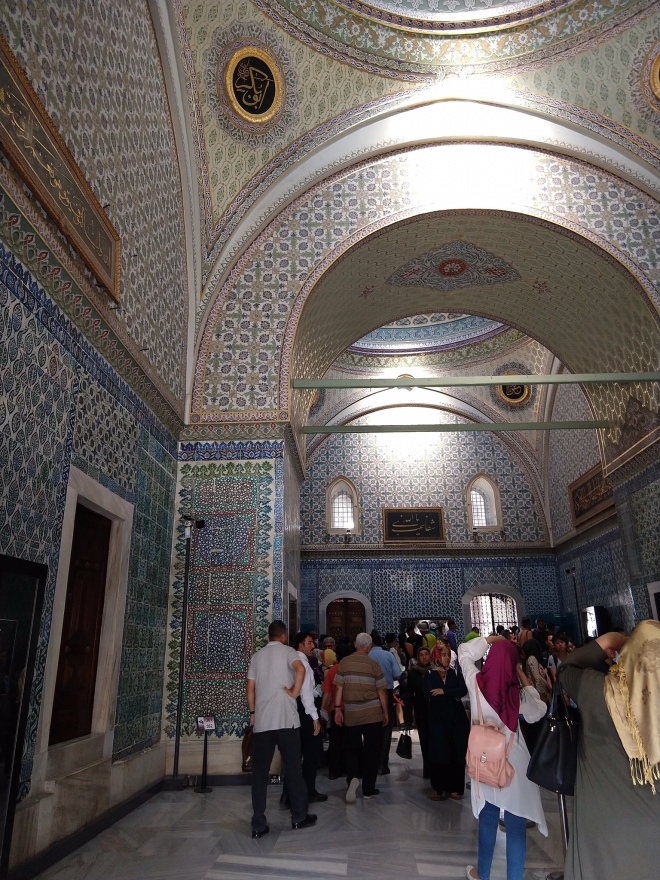
Entering into the Holy room at the palace – I snapped a couple of pictures before I knew I wasn’t supposed to.
Inside this “holy area” are the palace are housed various relics from the Muslim faith. They have a few pieces from Mecca, swords that supposedly belonged to prophets such as David and Muhammad, as well as teeth, hair, and footprints of Muhammad. Personally, I find that the more relics you see, the less you believe they are real, so though we don’t have pictures, I don’t think you are missing much :). Although, to be fair in this instance, I do think most of the pieces shipped from Mecca actually came from there (former gutters from buildings and such). 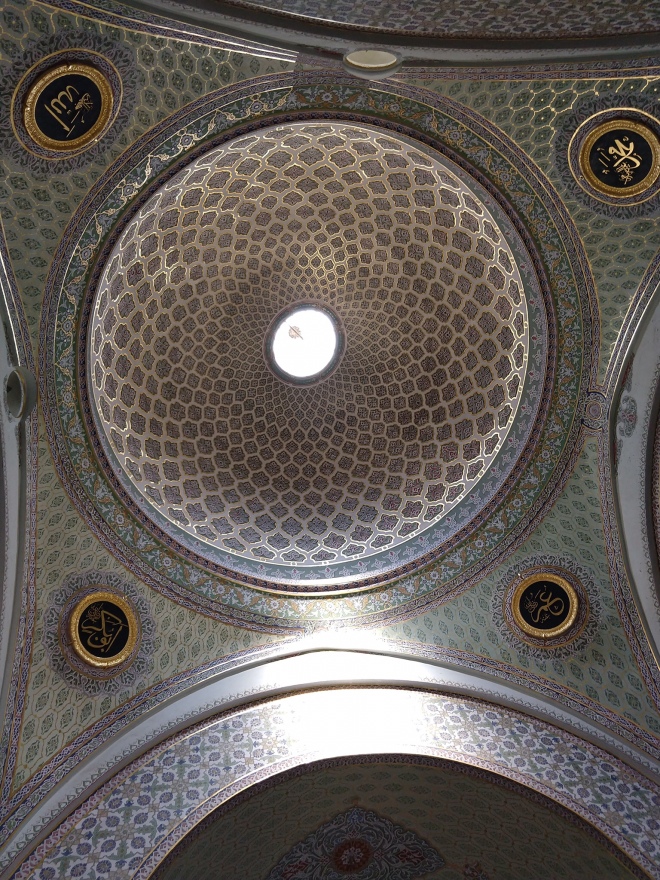
Ceiling in the Holy room – the last picture I got before being told to stop taking pictures 😬!

Palace grounds – I don’t remember if this was the outside of the library or treasury.
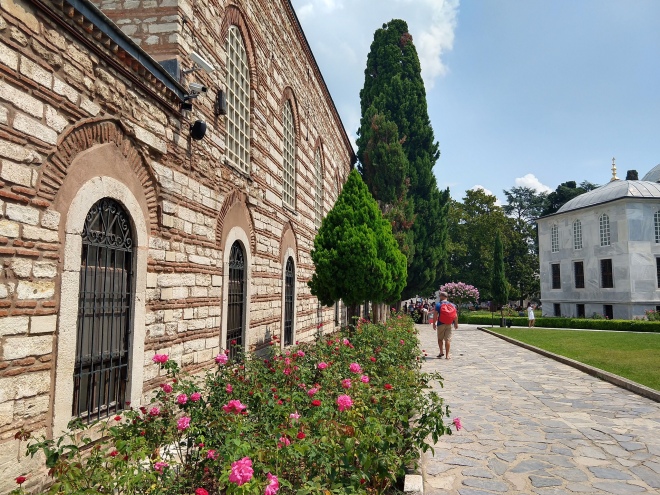
More palace grounds
After visiting the palace we walked over to another important church in the area, the Hagia Irene. The Hagia Irene was the first completed church to be built in the city, being finished in 337. It was commissioned by Constantine the Great himself, the ruler responsible for for turning the empire toward Christianity. Unfortunately, like the Hagia Sophia, the original structure of this church suffered great misfortune (it caught fire) and had to be rebuilt in 548. Though by the time the Ottomans came in, somehow, this is the only church in the area that was never converted into a mosque. This is even more shocking when you realize that this church is located inside the Topkopi Palace gates (So, within the gates of the home of the sultans who turned all the other churches in the area into mosques). Apparently, when the palace grounds were built around it, the church was turned into an armory. It’s still in excellent condition today and is used as both a museum and concert venue (as it has excellent acoustics). Last time I was in Istanbul, I didn’t have a chance to go inside this building, but this time, I’m so happy I was able to get a peak inside.
As if this church weren’t significant enough already, it’s also important to note that this church is on the site of where the First Council of Constantinople was held in 382 AD (the council was held in the original building that burnt). If you aren’t up to date on your church history – the First Council of Constantinople was a gathering of all the bishops that was called together by the emperor of that time. Wanting to unite belief throughout the kingdom, Theodosius I asked these church leaders to settle a controversy of belief – more or less, they had to decide whether Jesus was equal to God the father, or subordinate (look up Arian controversy if you want more details on that). Ultimately, the end of this meeting solidified the church’s belief in the Trinity – that God the Father, God the Son, and God the Holy Spirit are one and equal.
On that note, if perhaps it’s never crossed your mind to look it up – the word Trinity is not actually found in the Bible. The idea of the Trinity is an interpretation of several passages in the Bible put together. This is a large part of the reason that the Trinity was up for discussion back then – it isn’t explicitly stated in scripture, it’s an interpretation of scripture.
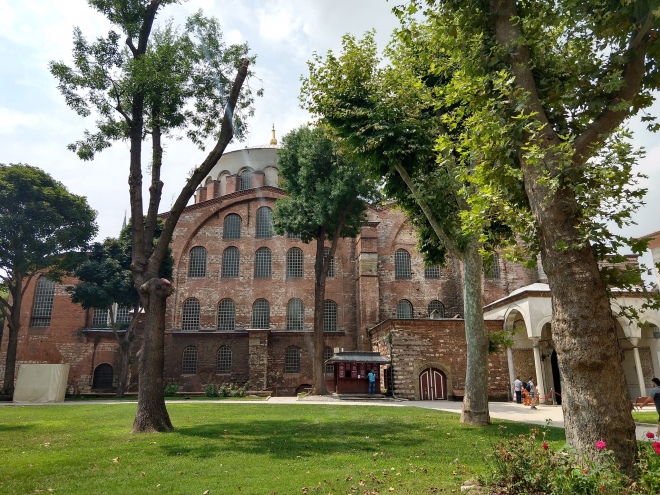
Outside of the Hagia Irene
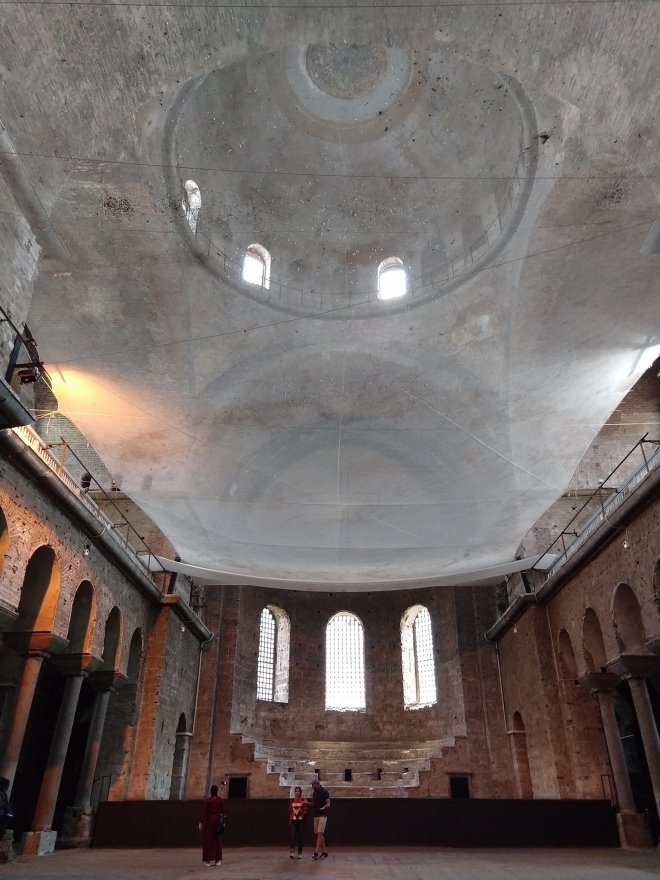
Inside the Hagia Irene, facing the stage area. There is a large net above that I assume is to catch the pigeon droppings.
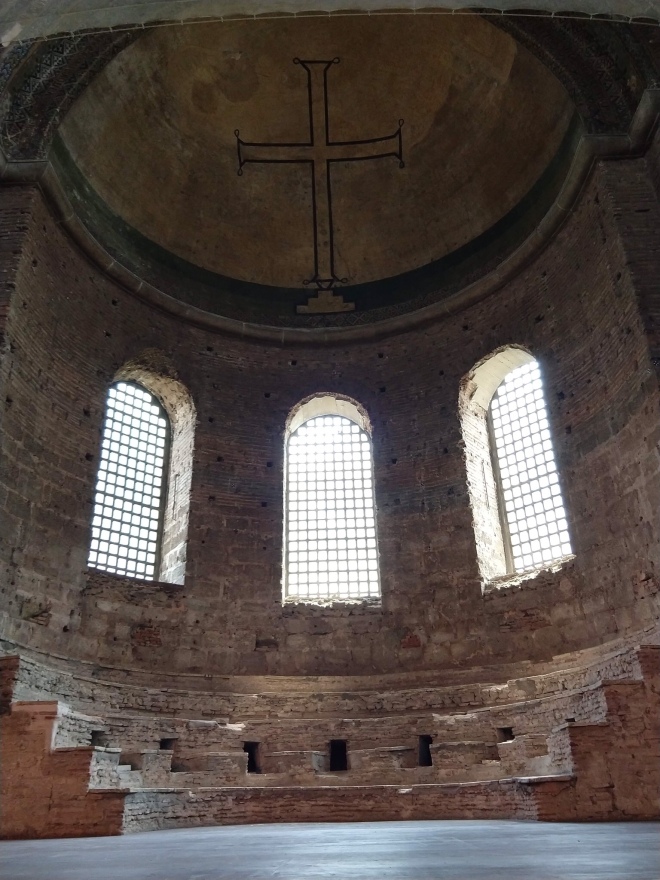
Closer view of the stage and the small dome above it with a cross.
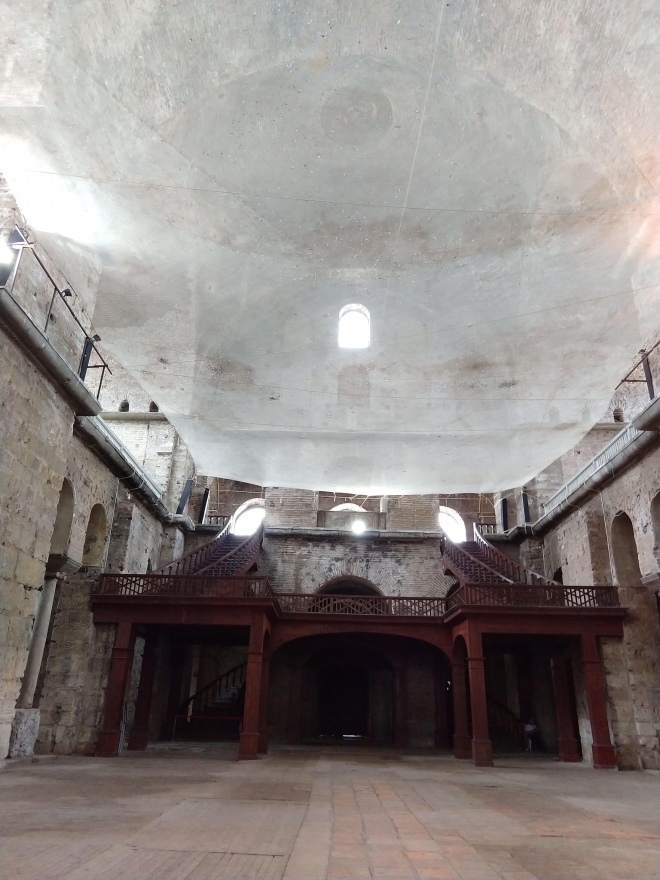
View of the back of the building with the newly built staircase to reach the balcony.
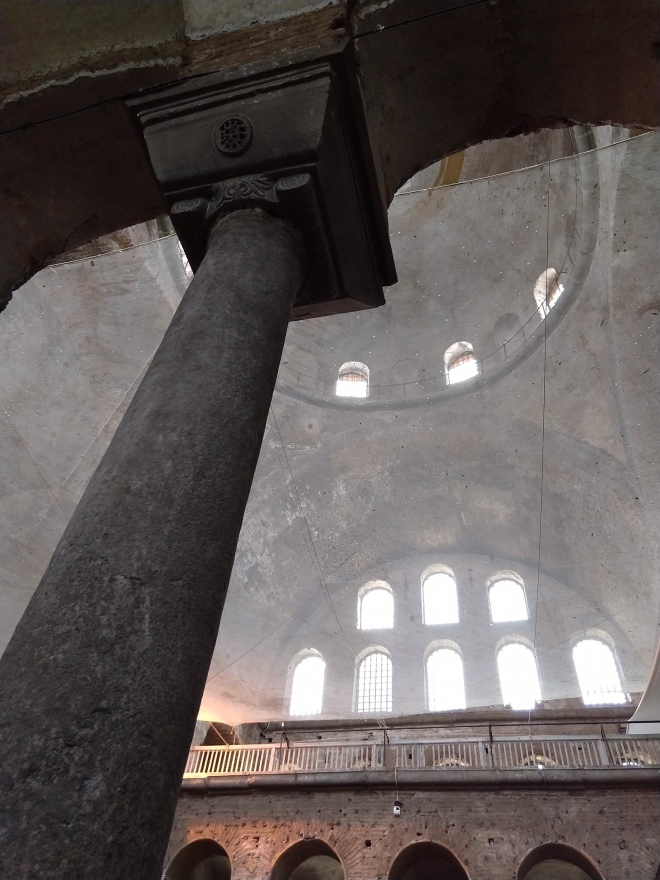
Column top and many windows of the venue. I loved the simplicity of this place.
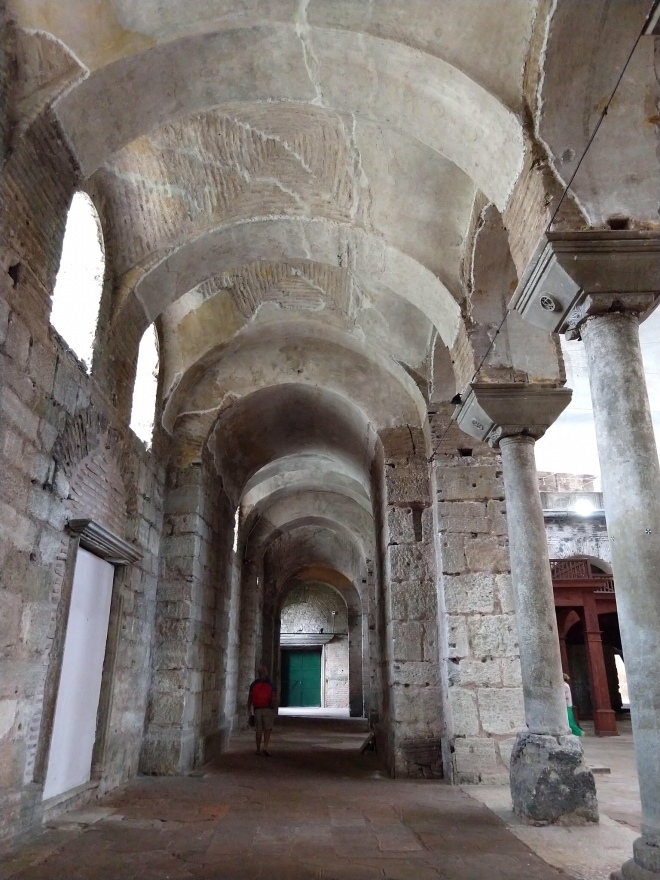
I like including Kirk in pictures to show size :). Here he is walking down the side corridor that is essentially apart of the sanctuary.
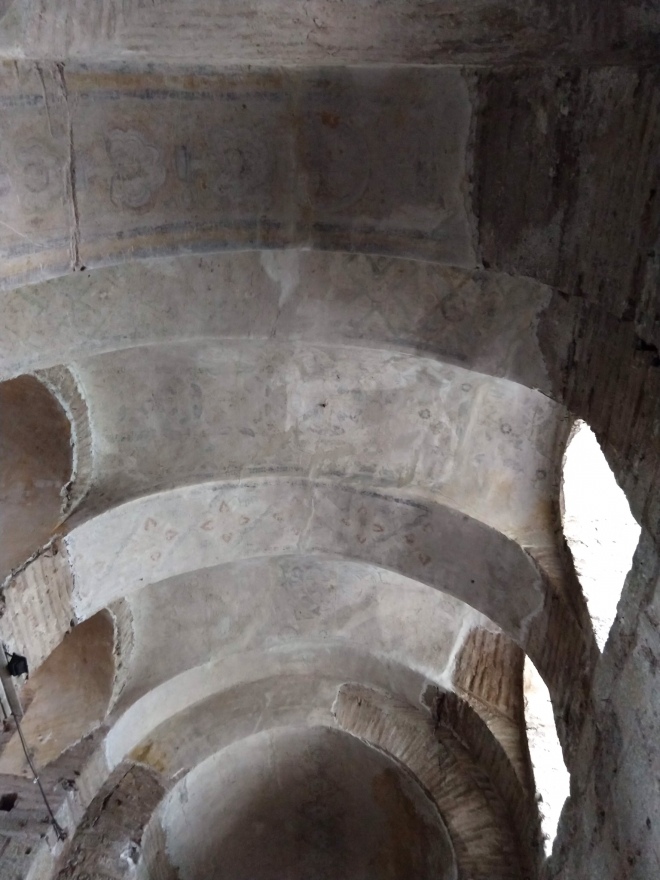
Ceiling of the corridor. If you look closely you can see the old paint designs that still remain.
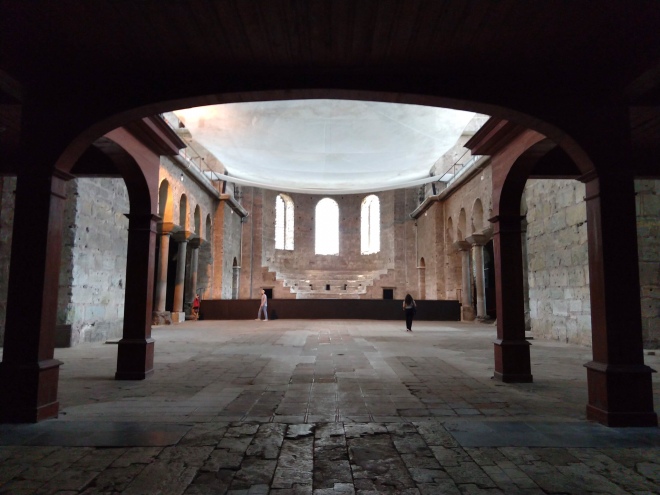
View of the stage from under the balcony.
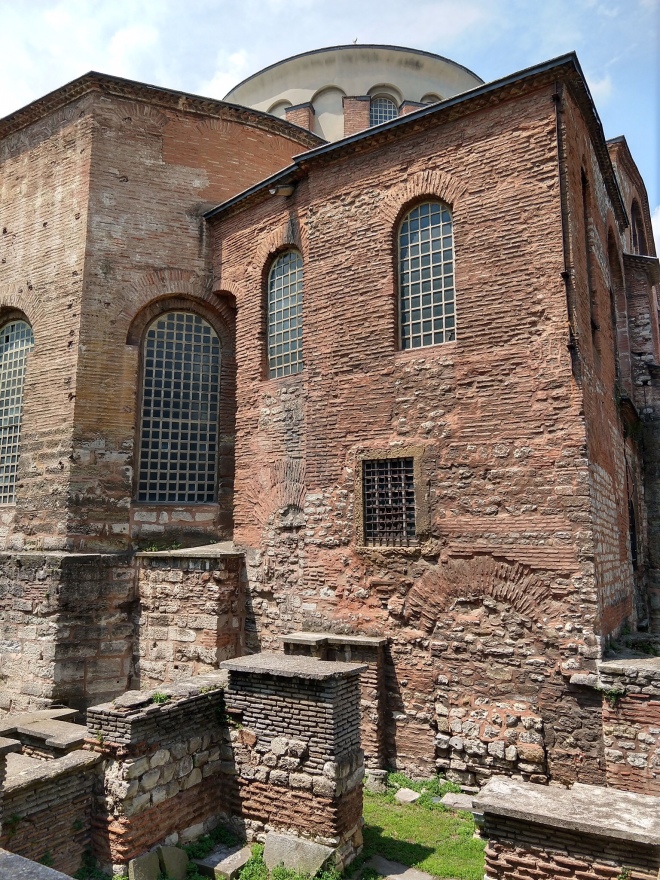
A closer view of the outside of the building. It’s quite old!
For me, unexpectedly, this was the most moving place we’ve visited this trip. As I stood staring at this barren building, I couldn’t take my mind away from the enormous decisions that had been made on this site 1600 years ago – enormous decisions that ultimately influence modern day theology and even politics. With the government’s help, the church reached the decision about the Trinity. That’s a pretty crazy thought.
The final historical site we set off to see is a church known as Chora Church. Built in the 5th century outside the city walls, the name of this church means “countryside” church. Though significantly smaller than the Hagia Sophia and Irene, this church is anything but country. Impressive surviving mosaics and paintings fill nearly every room of the building and it should certainly not be missed if you find yourself in Istanbul. Having originally been built outside the city walls, Chora church ended up being quite a bit farther away from our hotel than the other sites we’d visited. As we set out on foot, we ended up seeing parts of the city that offered a different view than the tourist section in which we’d found ourselves during the rest of our time there.
Our first exciting sighting during our walk – a local fruit stand 😊. Not so abnormal, but this fruit stand had fresh picked boxes of cherries for what ended up being around $1 a pound. I’ll have you know that we bought one of those boxes that weighed a kilo and a half (a little over 3 pounds) and we finished them off in two and a half days 😂. It was a lot of cherries, but they did not go to waste!
Second, we came across an area of town that looked pretty sketchy. As we walked down these dingy streets that didn’t feel as welcoming as other parts of the city, we came to a car with the passenger side window busted out. Wires dangled from where the stereo once was and glass was sprinkled all over the seats and sidewalk. We surveyed the damage only for a moment before quickly getting ourselves out of there.
As we continued walking we encountered our third unexpected area. Slowly the scenery around us began to look more friendly. Buildings appeared with pastel facades and awnings that made them look like small town shops. As we strolled down the sidewalk, the friendliness grew, and soon I felt as if I was in the middle of downtown Mayfield. Bookshops, clothing stores, a candy shop on the corner – all with an old timey appeal, still wearing those pastel colored facades. Nearby a fruit stand was set up with care, each piece of fruit laid out in lines and pyramids, sure to be replaced with each purchase to maintain the symmetry.
As I was taking in the familiarity around me, I nearly didn’t notice the differences, but great differences there were. There were book shops, but the book shop displays were filled with stacks of thick books with intricate gold leafing designs on the bindings. There were clothing stores, but the shop windows were filled with different varieties of delicately hung black robes. There were salesmen, but all were adorned with lighter colored robes, tunics, and flat cloth hats. There were women shoppers, but all were wearing head coverings and the same dark robes displayed in the store windows.
It was amazing. My honest first thought was, ” I have stepped out of muggle world, and into the magical world of Harry Potter.” 😂 The area was both so foreign and familiar with robes, golden books, and beautiful store fronts. My brain quickly recalculated that I was not in a wizarding world, but rather, something entirely different – a traditional Muslim neighborhood, the foreign and familiar still mixing together. People wandered the streets doing their grocery shopping and wrangling their children, but in outfits that are not traditional where we come from. The whole scene felt a little magical, but it also caught me off guard. Though other areas of the city aren’t lacking in wearers of traditional Muslim garb, this was the first place we happened upon where every shop and shopper had a clear tie to Islam – nothing touristy in view. The books in the bookshop? Qurans. The clothing on women? Hijabs. The meat shops? Pork free. It makes complete sense that areas of the city like this still exist amidst the tourism and western influences, I had just never experienced it before.
As we noticed all the differences I quickly became ever self conscious about my own wardrobe – bare shoulders and tight jeans. After having just come from Mumbai, India, where we were spectacles regardless of our wardrobe, I felt certain that we’d be gifted some unwanted looks in this area where I was showing more skin than anyone around me. As it turned out, I was wrong. Even in my self consciousness where I was constantly on the lookout for judgement, I saw not one side eye, not one look up and down, not one long stare, not one measure of unkindness. We even got a few smiles and nods as we shared the sidewalks with passerbys. I was again reminded of the gaps that our misconceptions about others cause. I had feared judgement and hatred by accidentally venturing into a part of town not geared towards me, but there was none to be found. In my fear, I had judged incorrectly.
In our walk, we eventually came to an enormous mosque. We googled where we were standing to find out what it was, and it turned out to be a community center with a mosque attached. We joined the crowd wandering around to see some of the beauty inside.
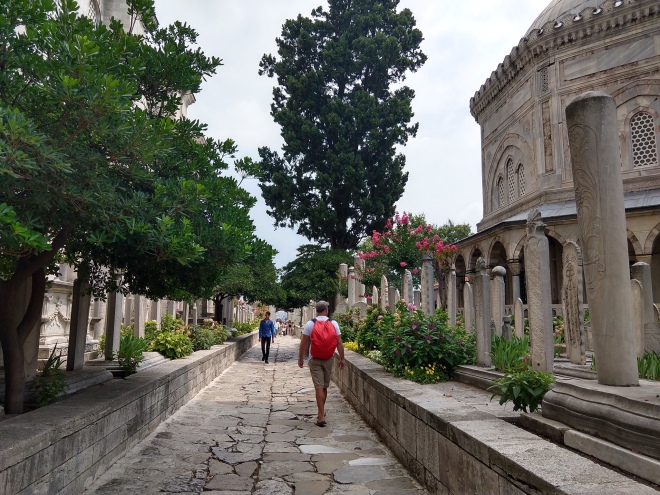
Kirk, walking past what appeared to be a graveyard.
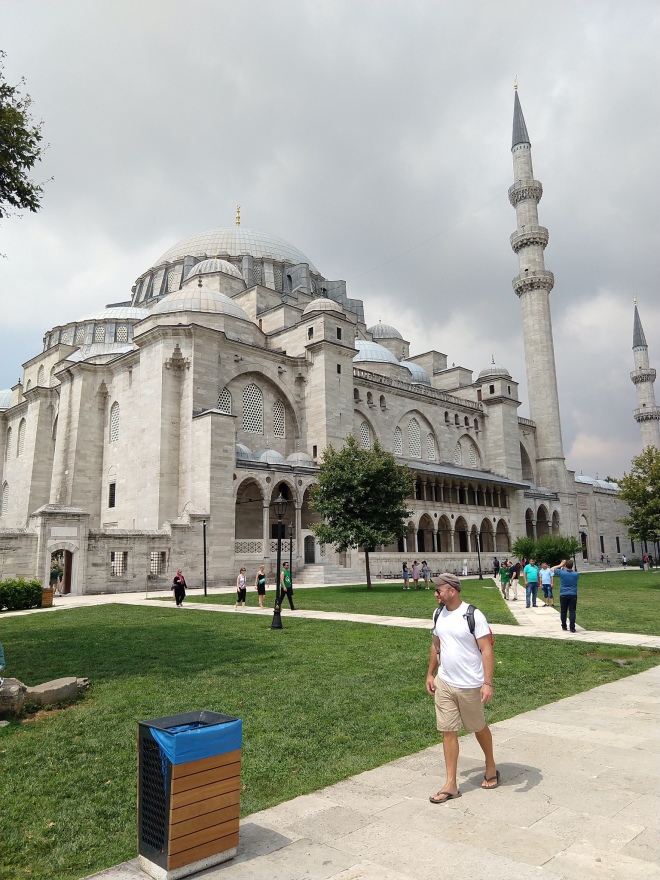
The mosque
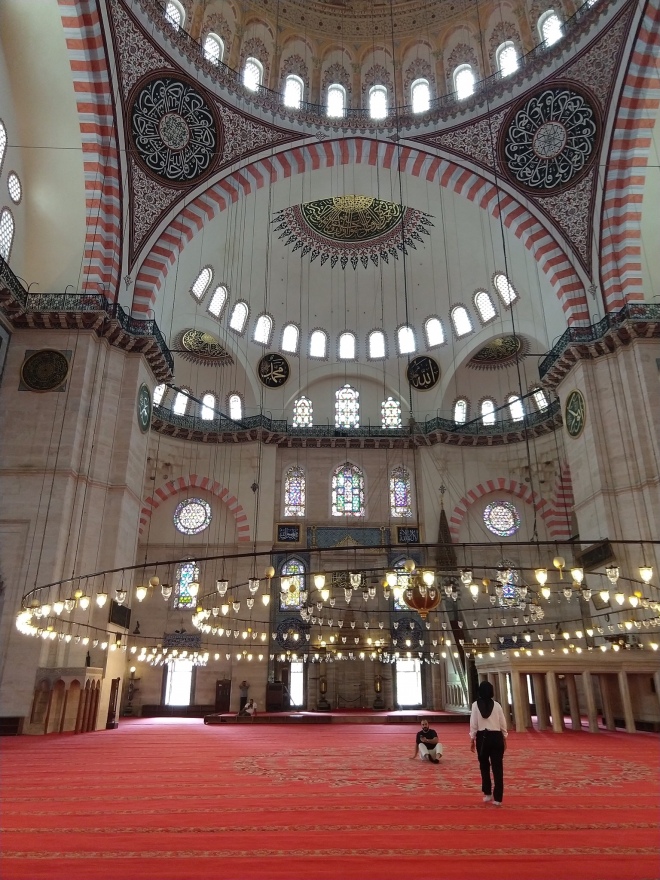
Inside the mosque. The carpets are always so soft!
After taking more wrong turns than we’d like to admit to, we eventually made it to the destination for which we had set out, Chora Church. Check out the photos below to see how impressively intact most of the art on the walls of the building is!
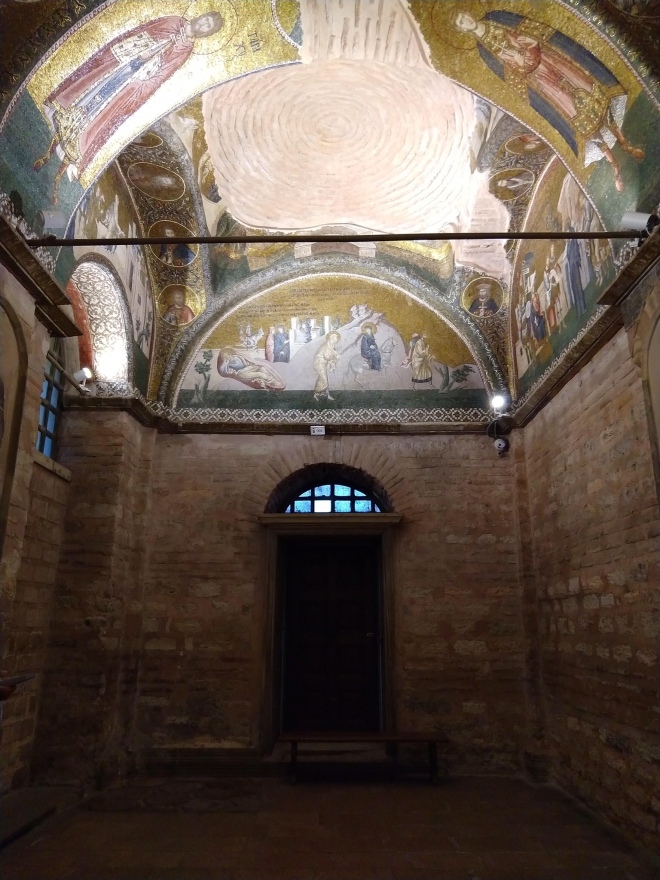
All those pictures are mosaics, tiny little tiles placed together to form what you see here. Though the original building dates back to 4th century, much of the art seen in these pictures was added around 1300.
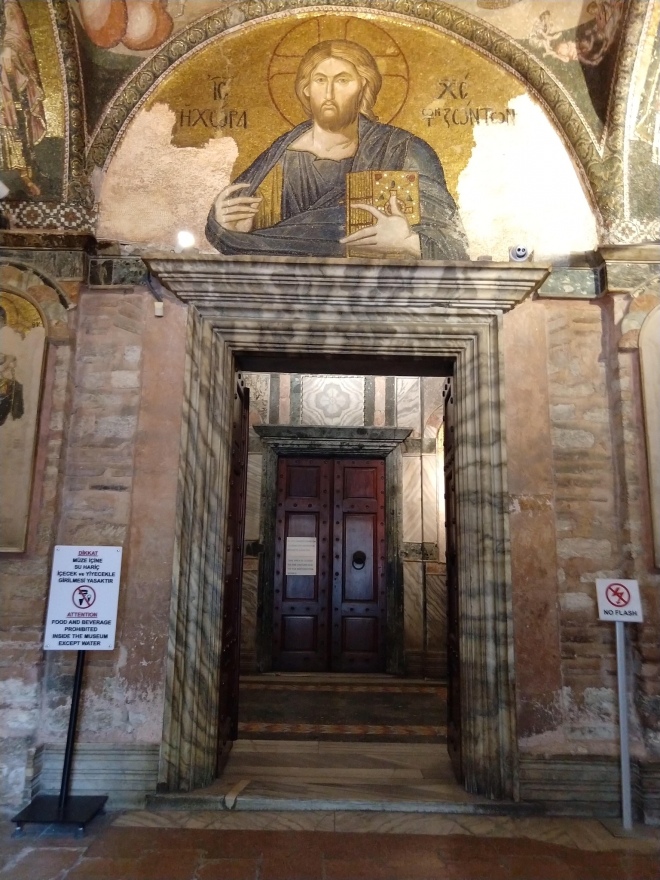
The Jesus mosaic seen upon entering in the front doors.
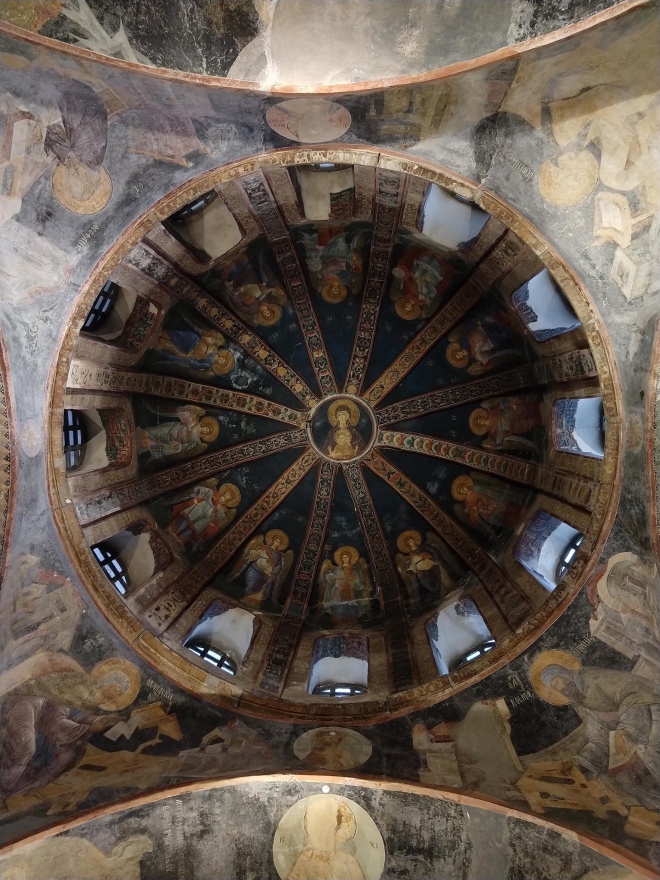
Painted ceiling
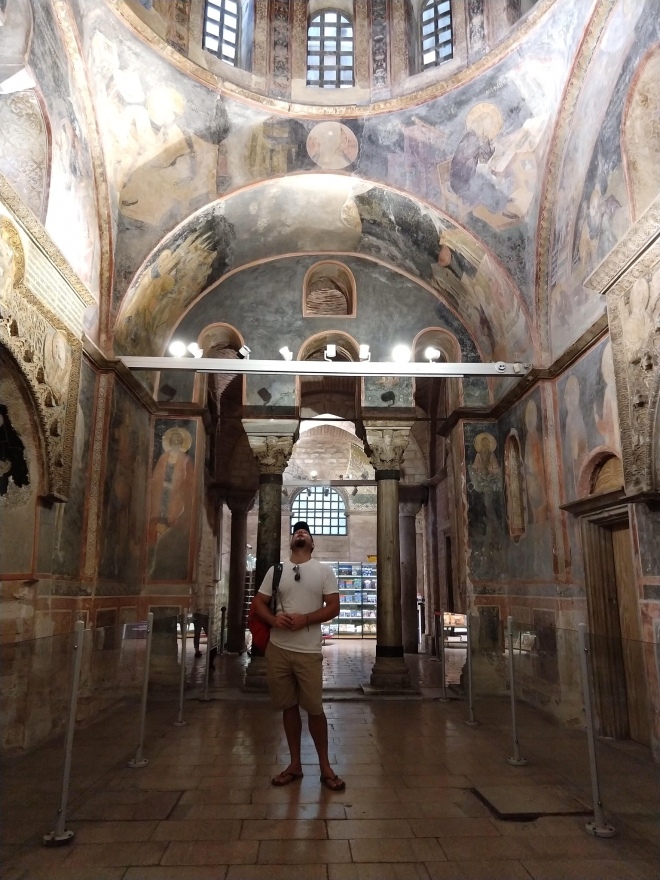
Kirk, admiring the ceiling art
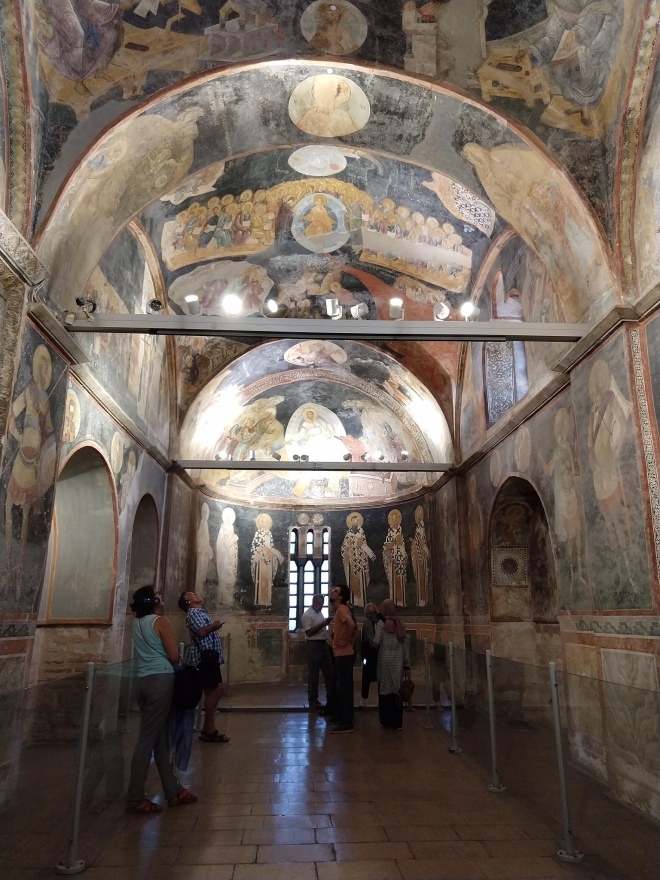
The walls are covered with artwork!
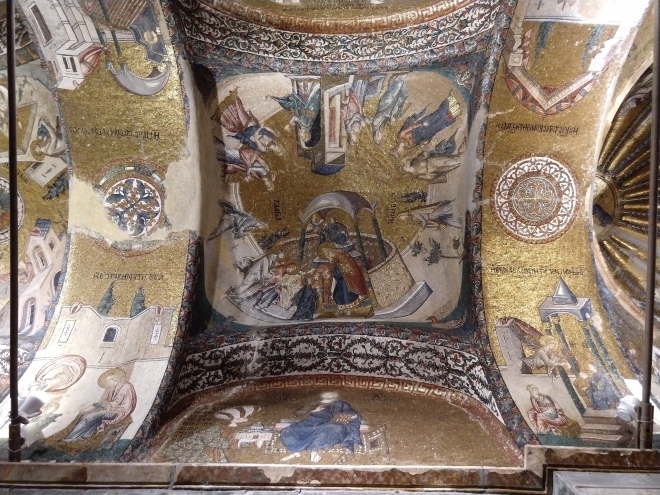
Ceiling mosaics. Most of the mosaics depict scenes from Jesus life
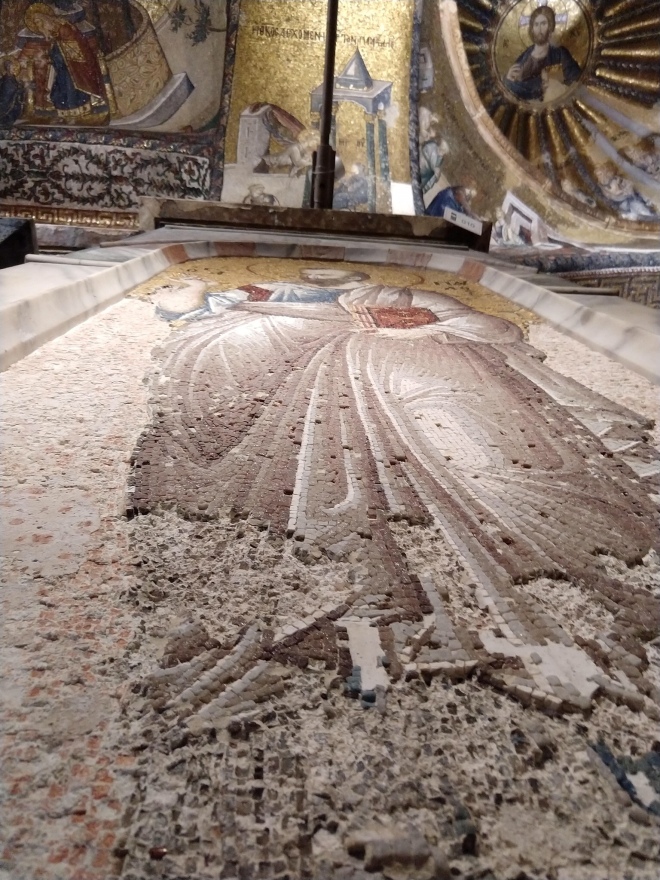
A close up to show some of the tile work.

A zoomed out picture of the picture above to show the “big picture” of the tile work.
Impressive isn’t it? Visiting was well worth the interesting walk it took to get there!
Moving along – and now, that which I apparently can’t leave out, food 🙂
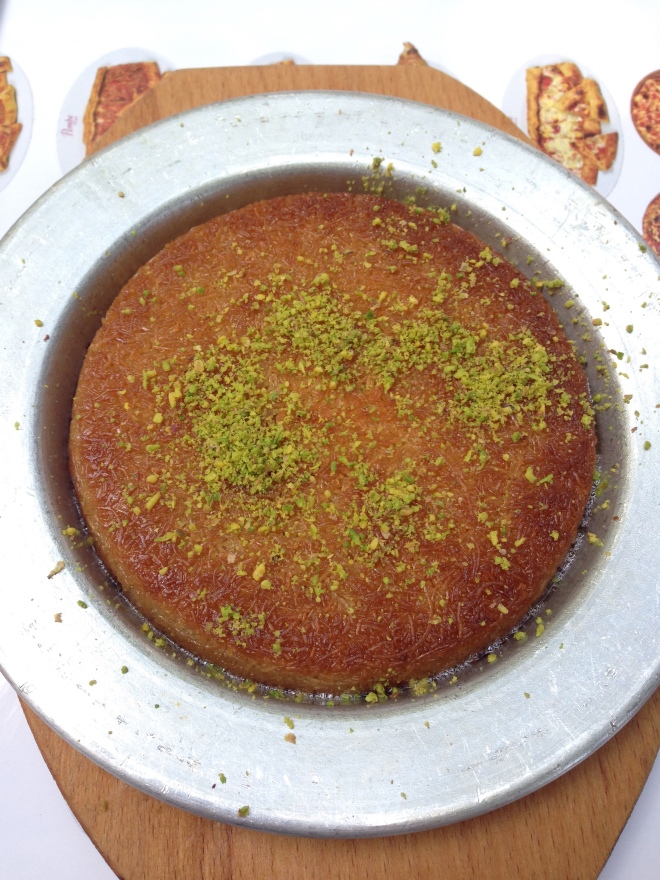
Kunefe – basically, a baklava type dessert (honey/thin crispy pastry) with warm melted cheese inside and pistachios sprinkled on top. So yummy!
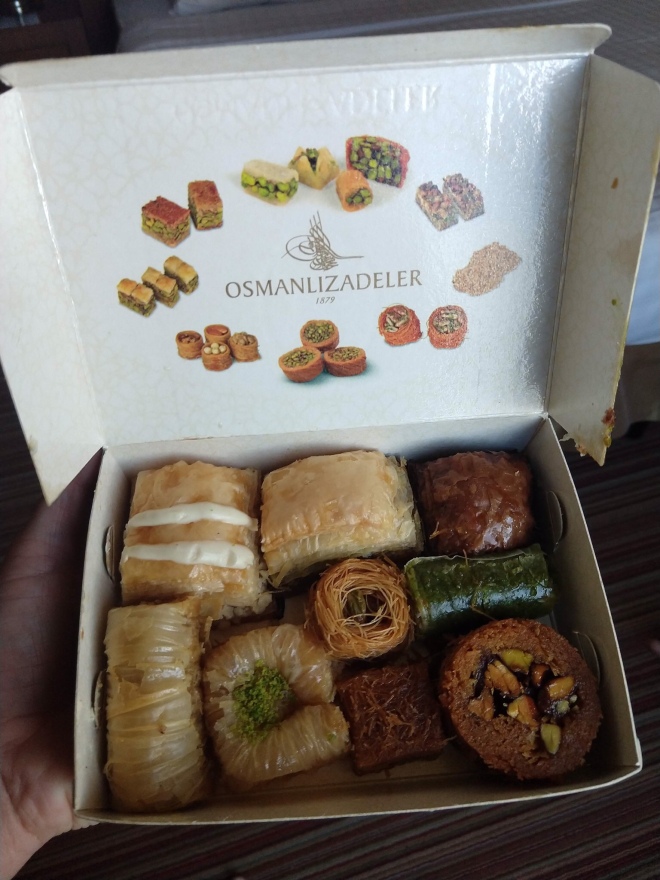
Our departing box of baklava. We’d had baklava a few times while there, but I wanted a box with as many types as we could fit/afford for the road :). These were all delicious, but our favorite baklava was one filled with orange zest that came from a place called Konyali.
We also bought Turkish delight from this same store pictured above (Osmanlizadeler) that was to die for. I thought I didn’t like Turkish delight, but they offered us a sample of a nougat/nut stuffed pomegranate roll that was sour, sweet, and lightly salty in all the right ways. We couldn’t resist!
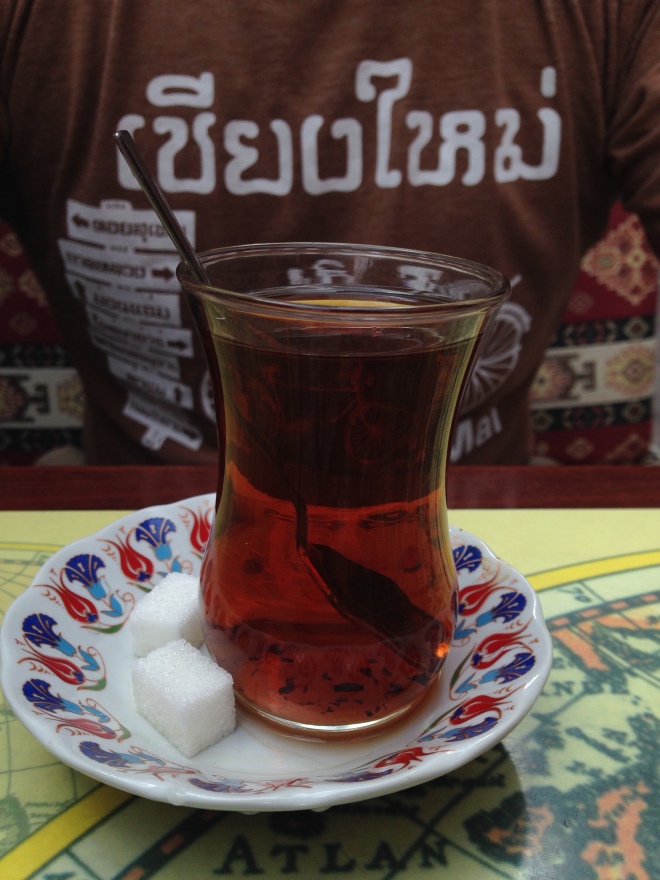
Turkish tea is served after nearly every meal and is usually included in the price of the meal. They brew their tea extra extra strong and serve it in hot in tiny glass cups without handles. I usually had to wait for it to cool to drink it :).
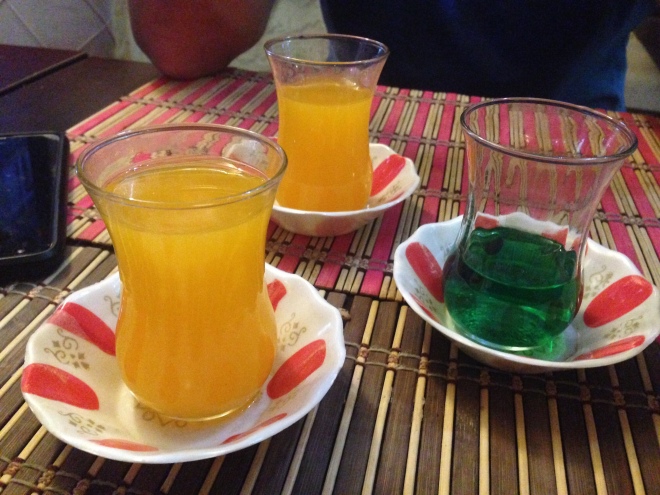
Other types of tea that were offered to us one day when our meal was taking a while to come out. The green is kiwi and the orange is orange. Though they called these tea, they tasted more like a super sweet mix of jello and koolaid. There is, however, a very popular “apple tea” served at nearly every restaurant that is legitimately tea that comes unsweetened, and it is delicious.
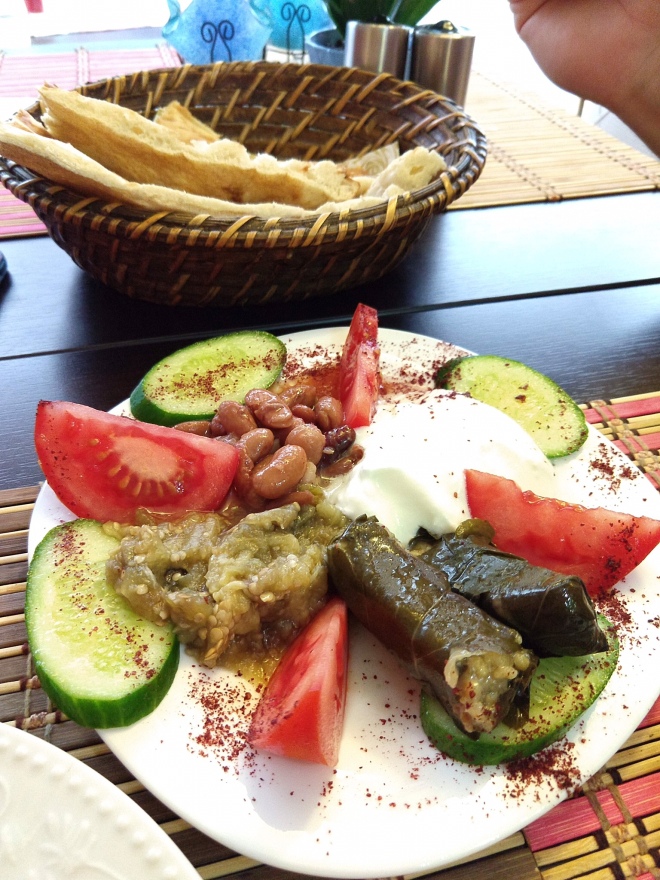
A few traditional appetizers, that were also offered to us for free when our food took a while to come out 😂. Stuffed grape leaves, surprisingly deliciously seasoned cold beans, yogurt, and baba ghanoush (grilled, smushed up eggplant – easily found at home, and it’s tasty!).
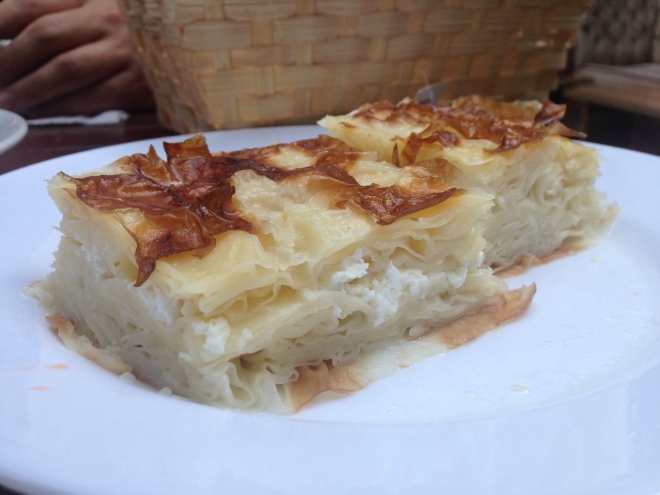
Su Borek. It’s hard to describe how delicious this simple cheese stuffed phyllo dough dish was, but it was good enough that this restaurant located in the Hippodrome was the only place we returned to for the same dish. I think it was the texture that got us. Those noodley layers were thin and fresh and the salty feta in between was the perfect addition.
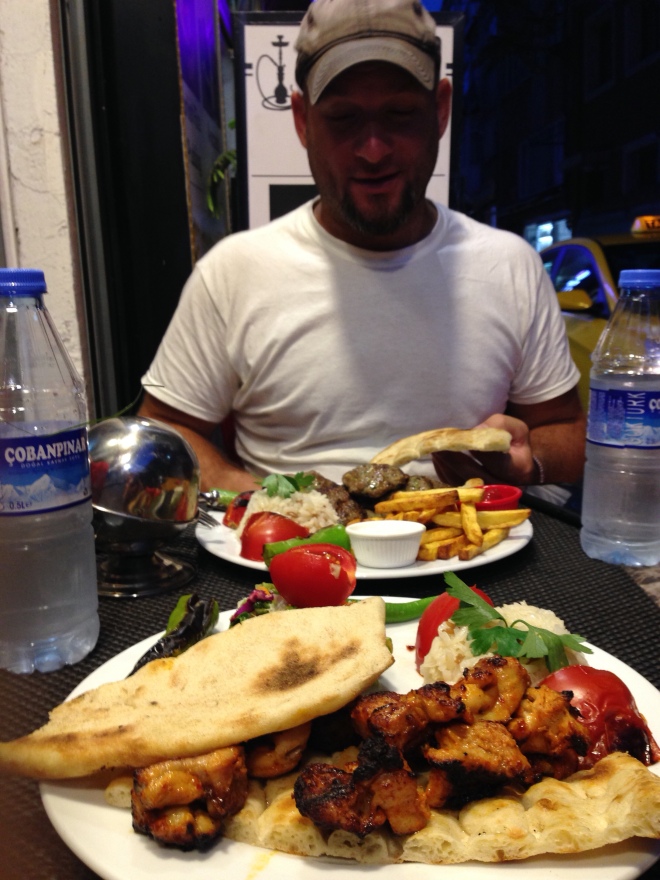
Some very traditional food – kebabs with pita bread.
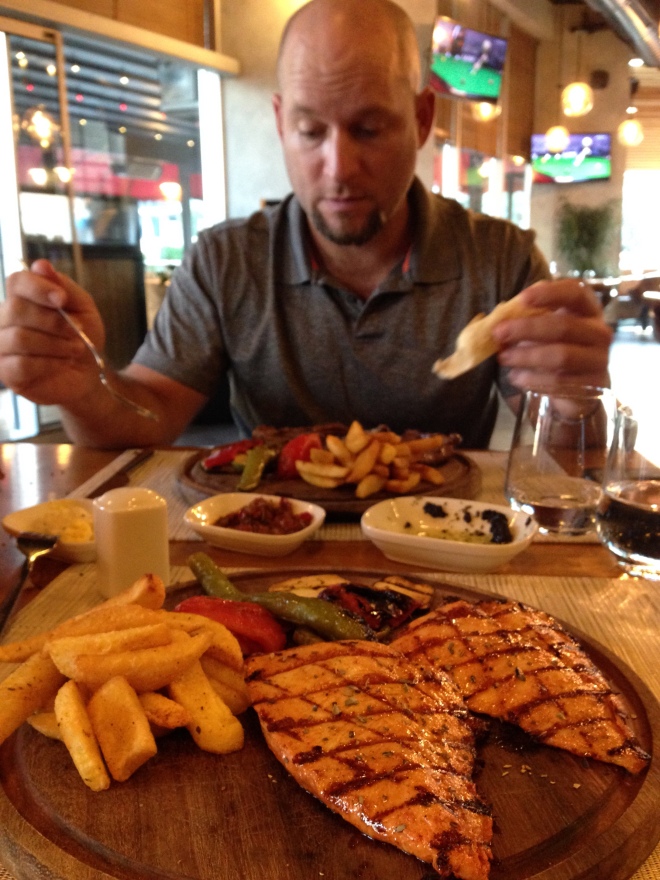
Our final meal. Kirk with lamb chops and me with chicken. Under $20 total.
Our final day in the city we decided to venture over to the “Asia” side of Istanbul. We hopped on a ferry and 20 minutes later we were on a new continent (but in the same city).
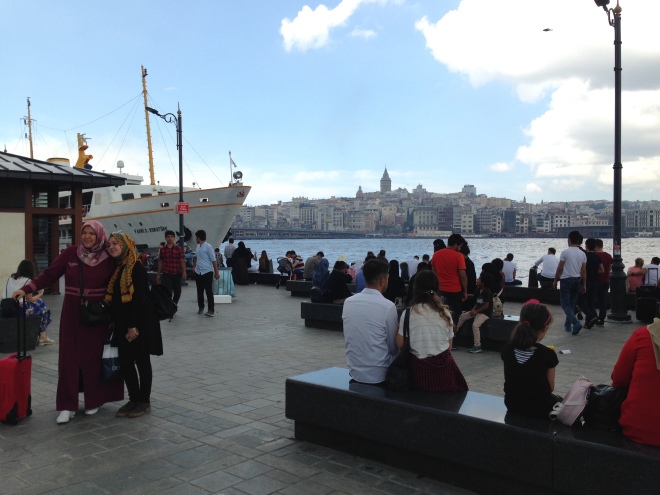
At the pier. Seen on the other side of the waters is still Europe. The Asia side of Istanbul is more south.
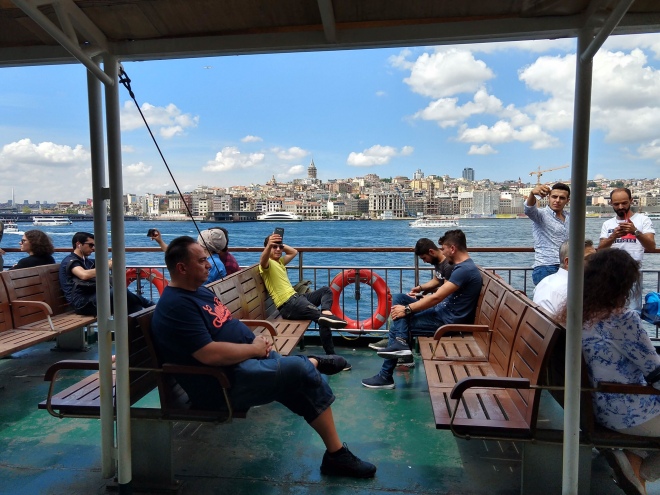
On the ferry with everyone taking selfies 😂
Arriving on the Asia side of Istanbul really is a completely different experience than we had in the rest of the city. There is nothing about it that particularly screams “Asia”, but compared to where we were staying, it’s a very trendy/hip part of town. Restaurants, bars, and cafes line the streets for endless blocks. Crowds of people block the thin lanes of the road, scooting by the tables that line the curbs and fill the sidewalks. We found a nice coffee shop and settled in to people watch for a bit. Below is a picture I took of the street as I drank my coffee, which is also the concluding picture for this blog.
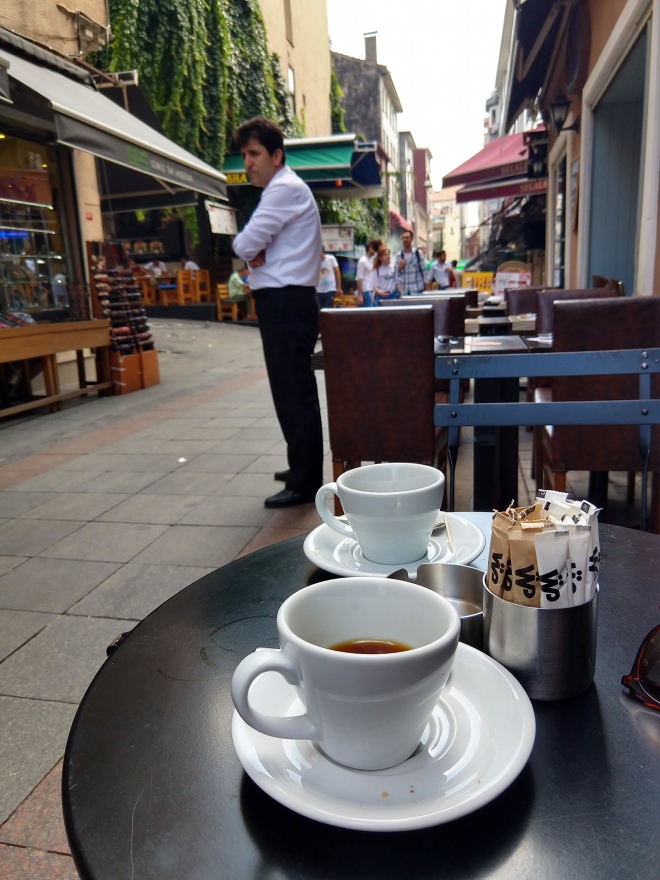
After packing up our things to leave Istanbul, we found ourselves on a plane to Greece.
Next up, Athens :)!
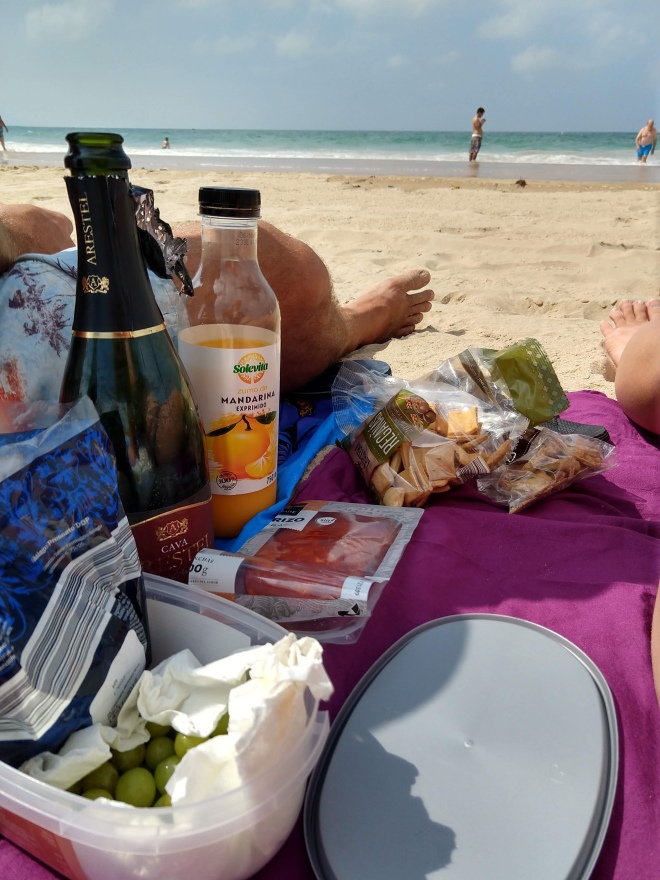
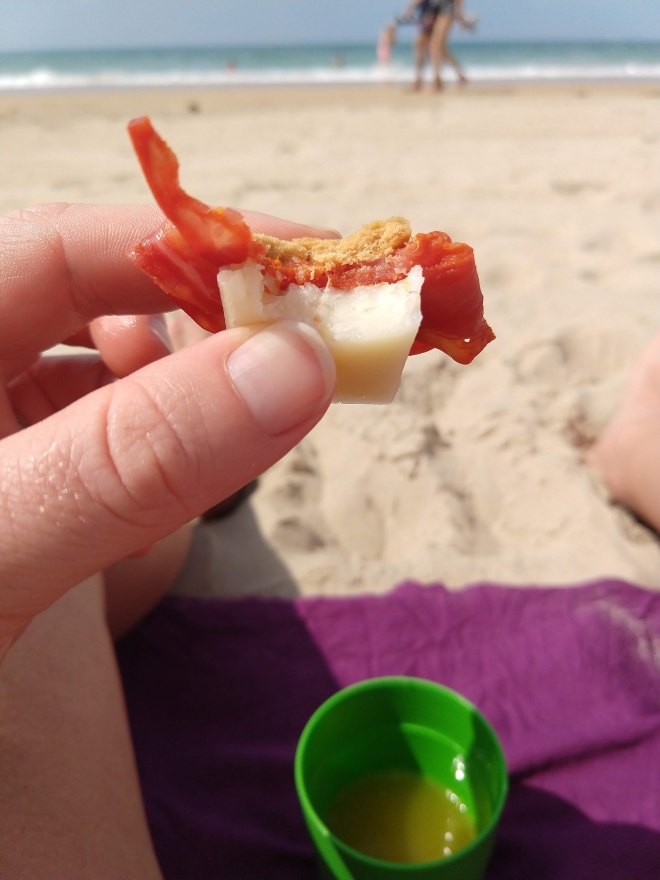 The green cup holding the mimosa traveled with us all the way from Chile! We got them to use for wine for our trip to Perrito Merino Glacier, and found cups to be something worth toting around the world with us!
The green cup holding the mimosa traveled with us all the way from Chile! We got them to use for wine for our trip to Perrito Merino Glacier, and found cups to be something worth toting around the world with us! 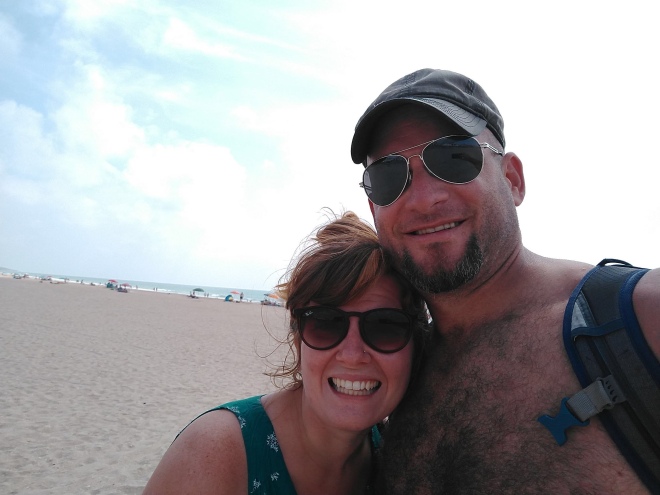
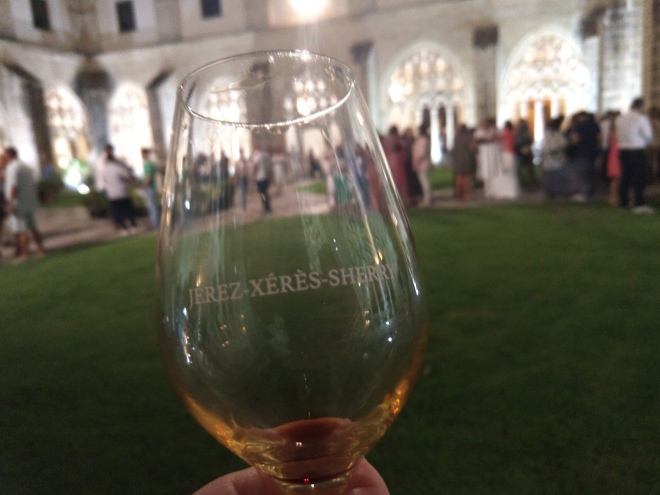
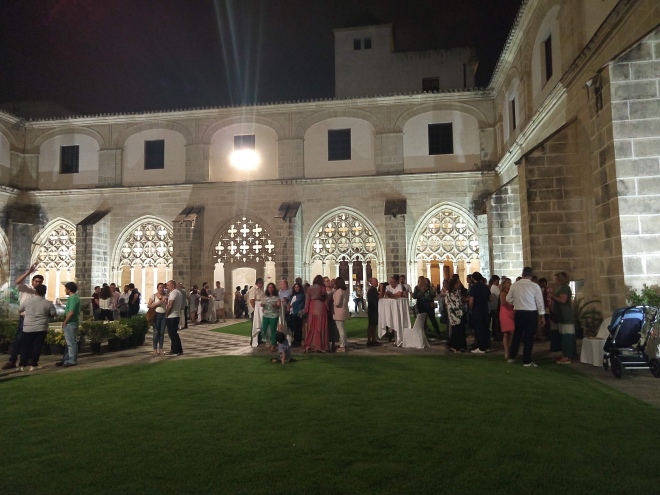
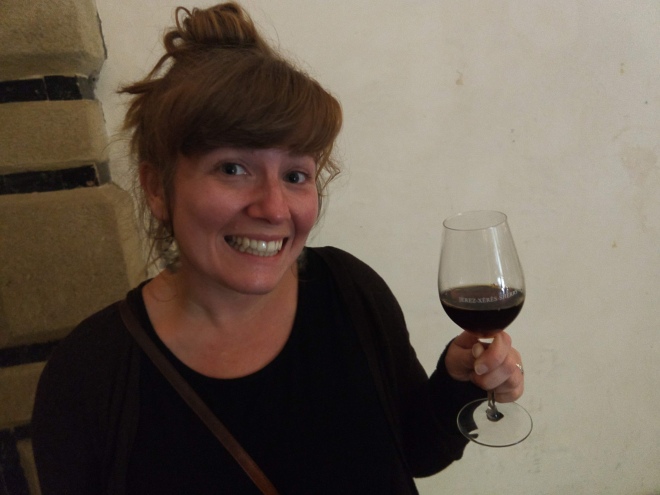
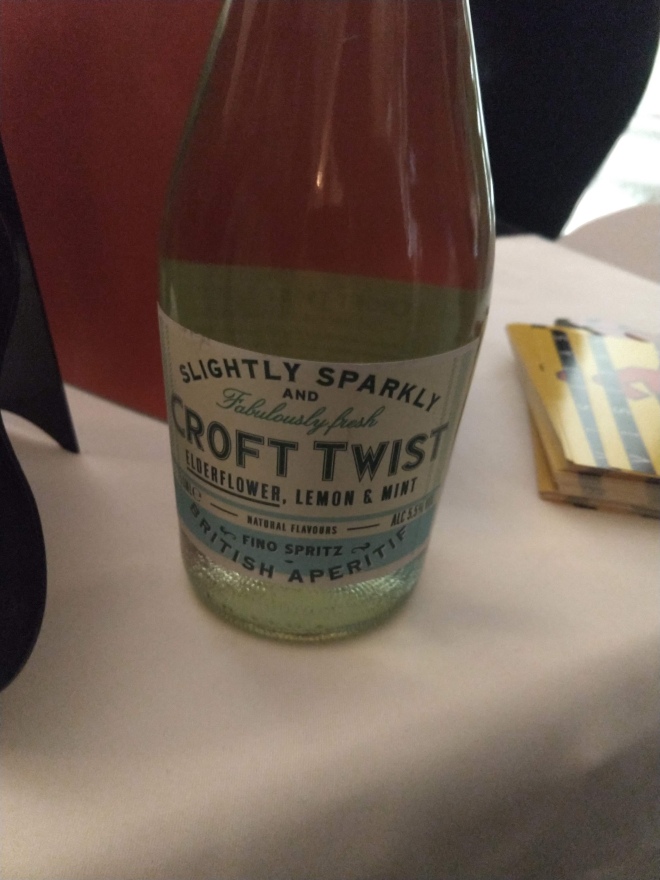
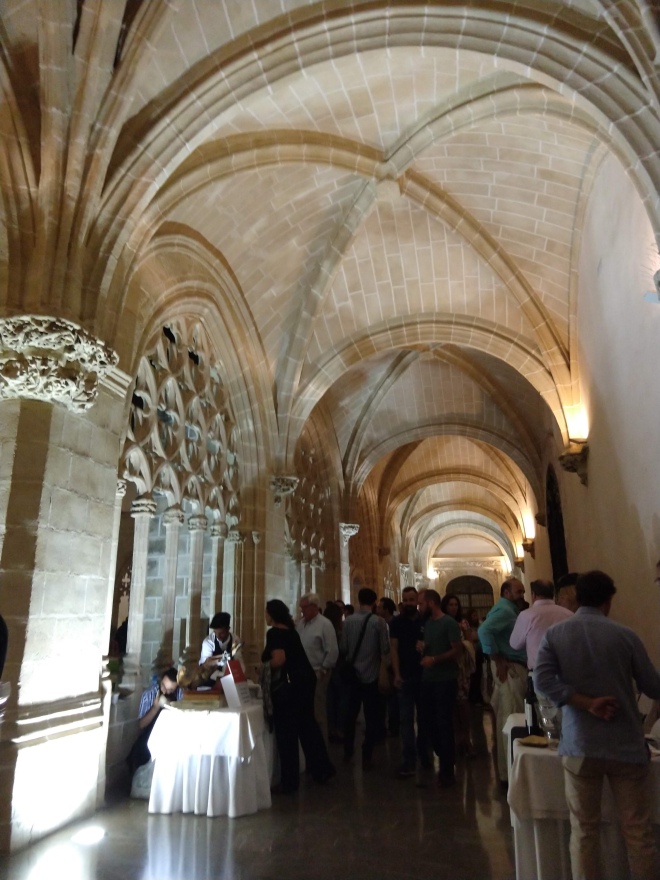
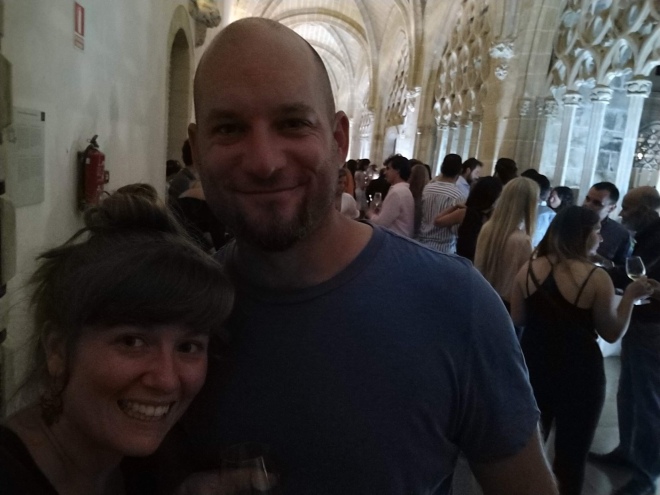
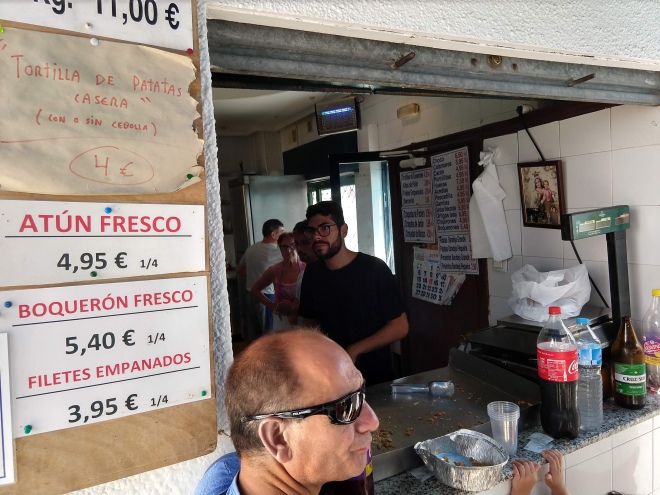
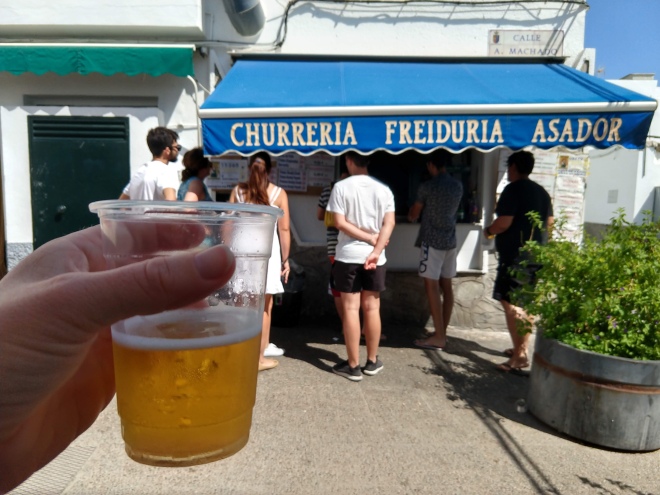
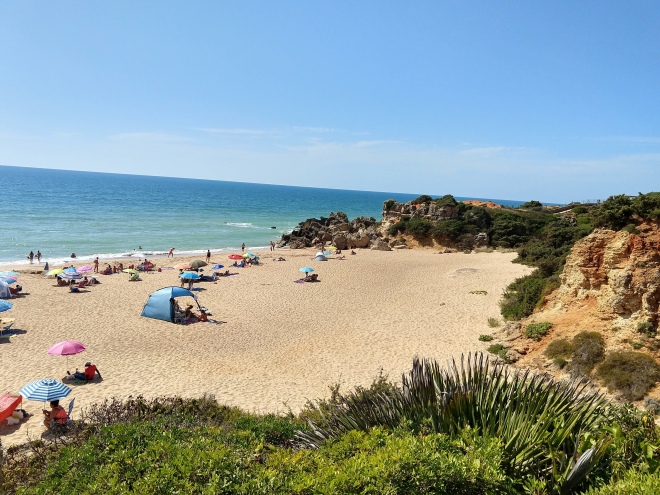
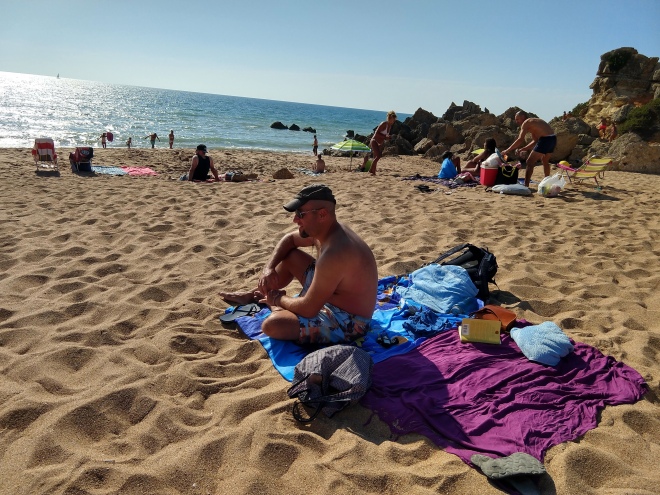
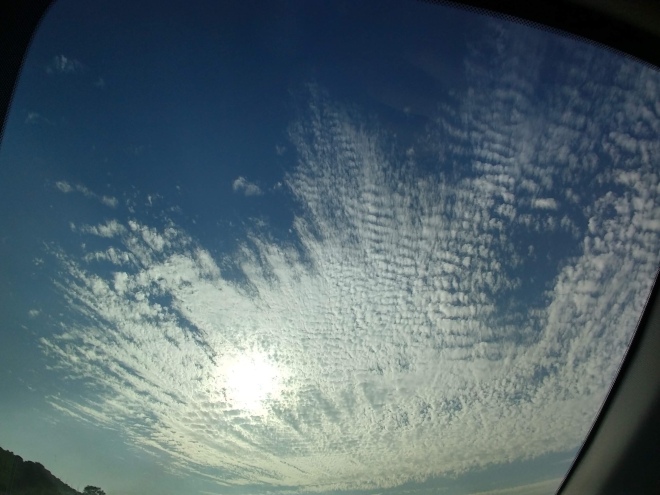
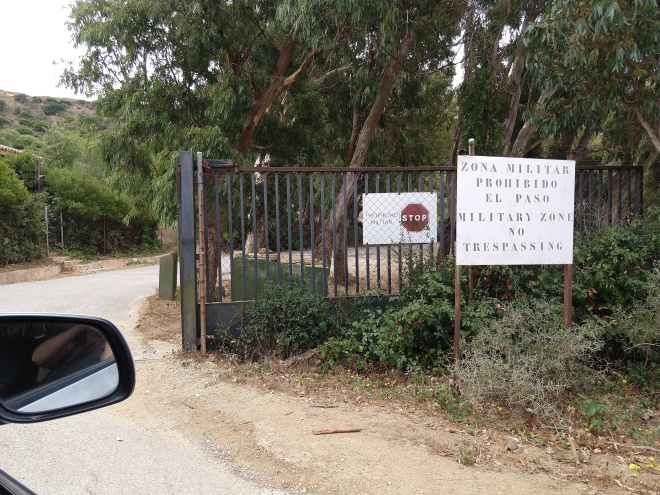
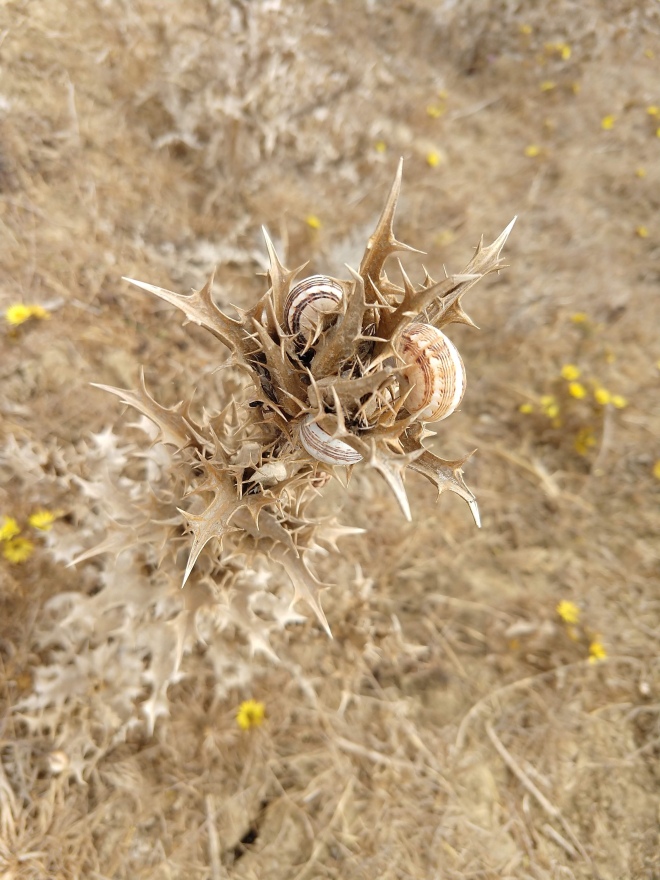
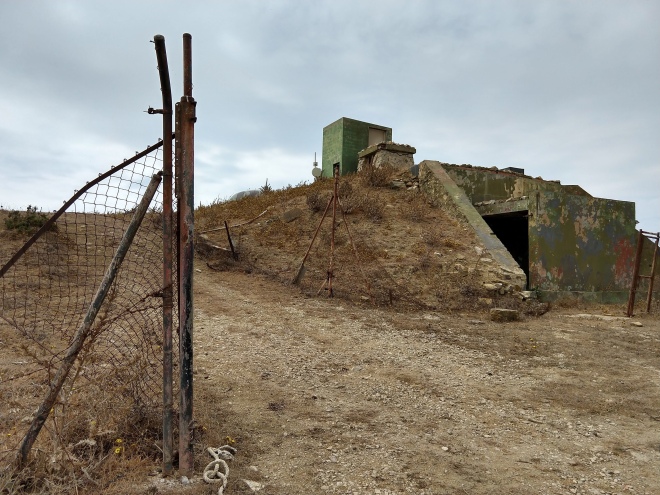
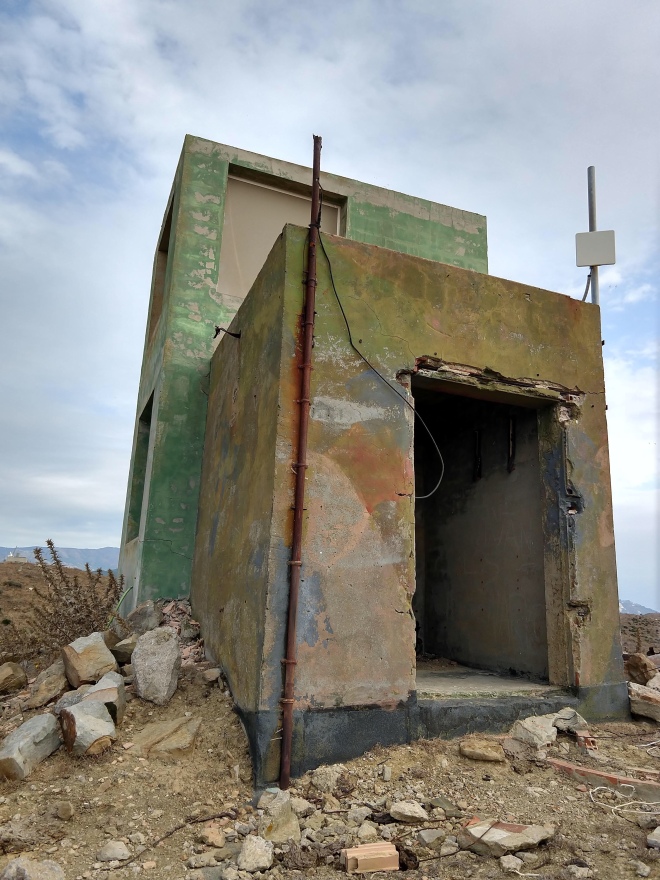

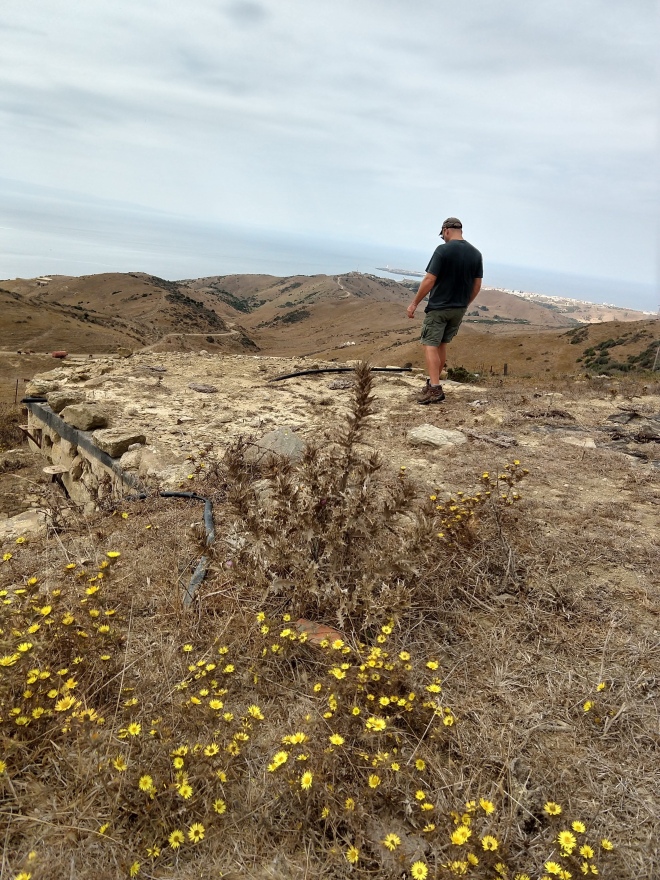
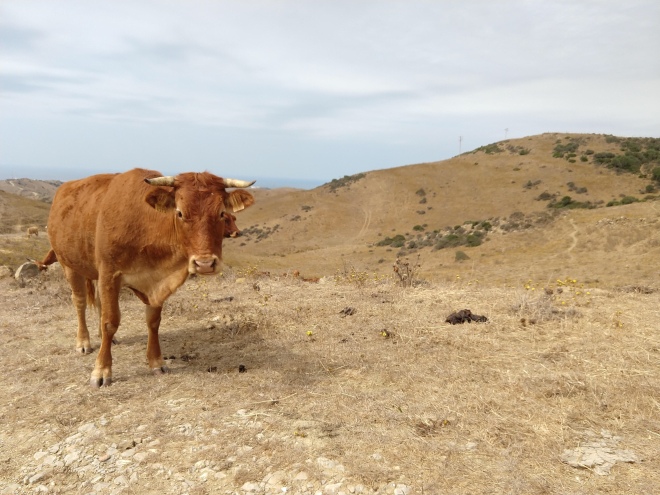
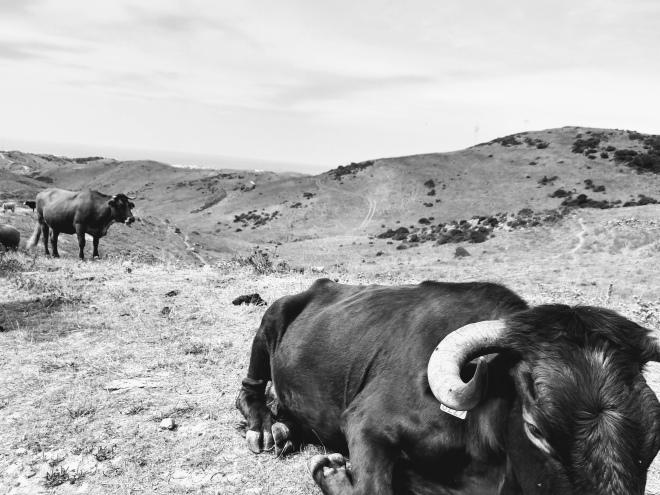
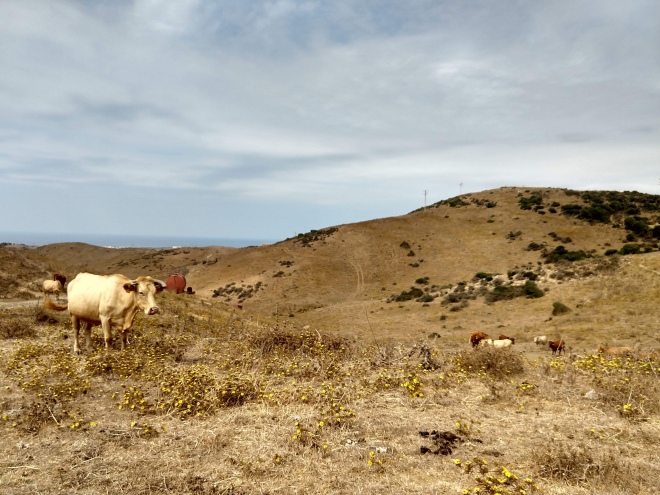
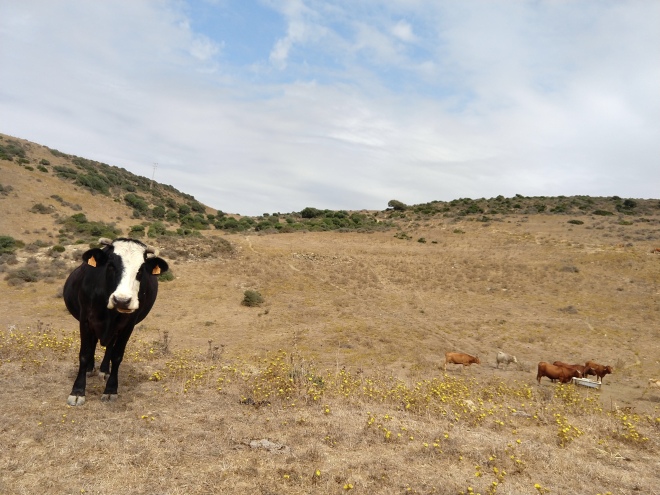
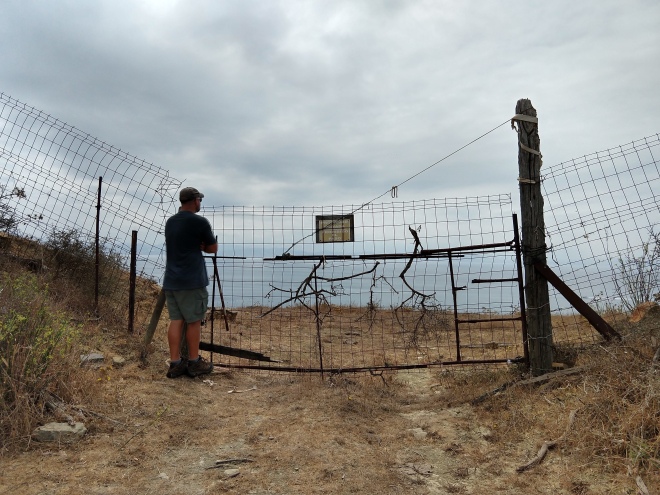
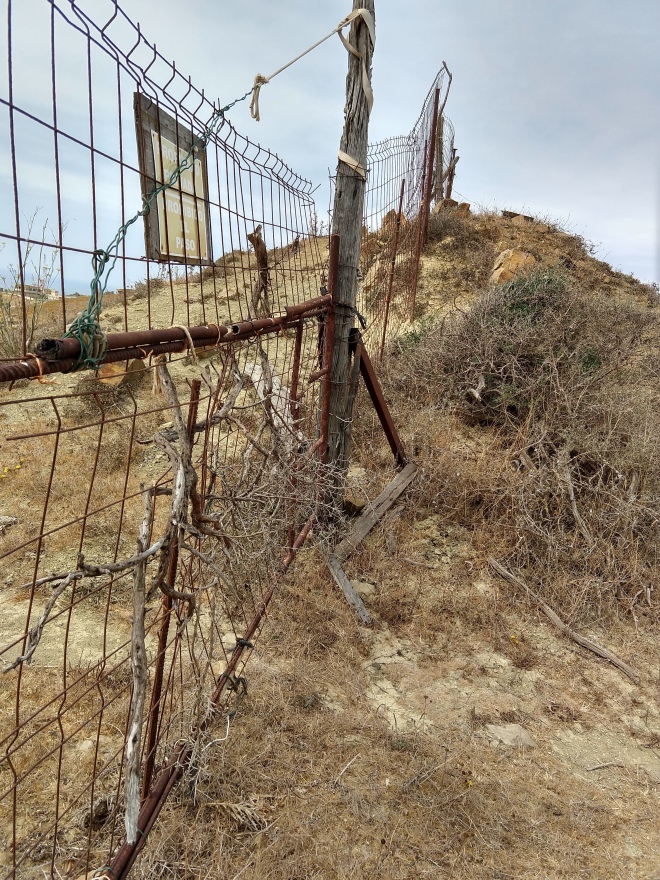
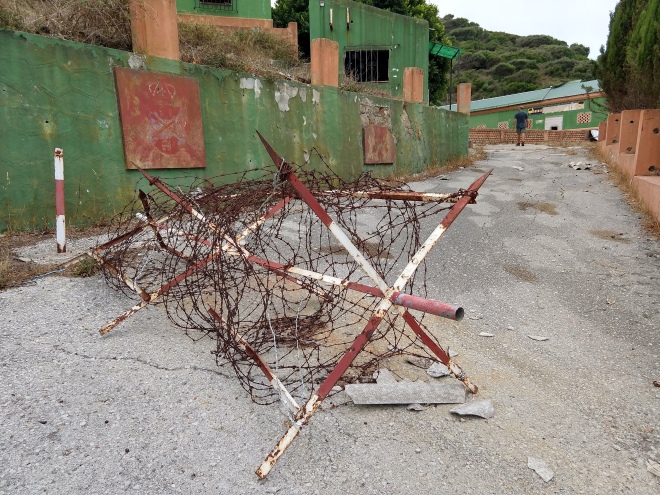

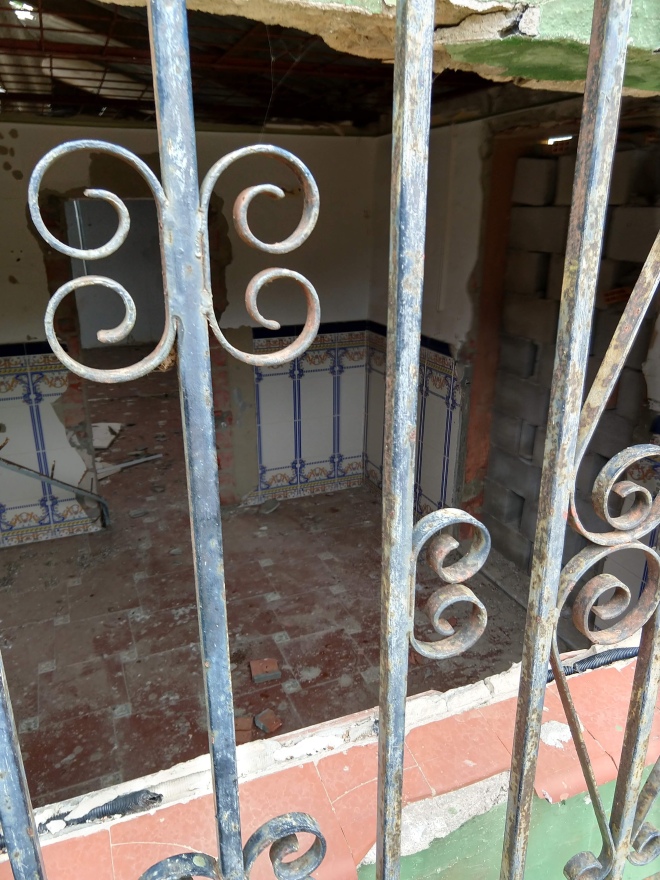
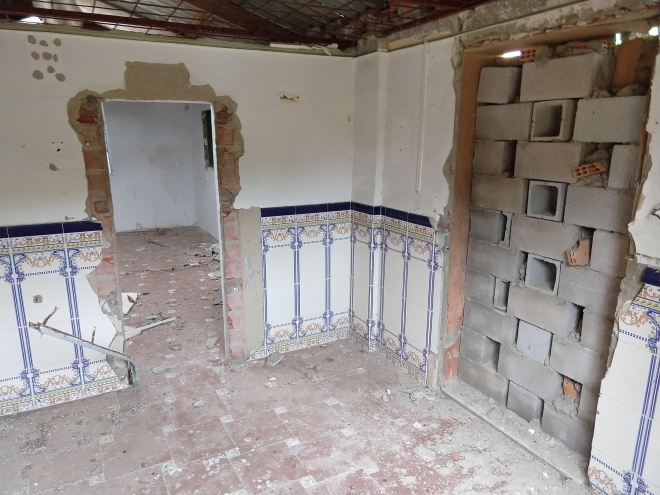
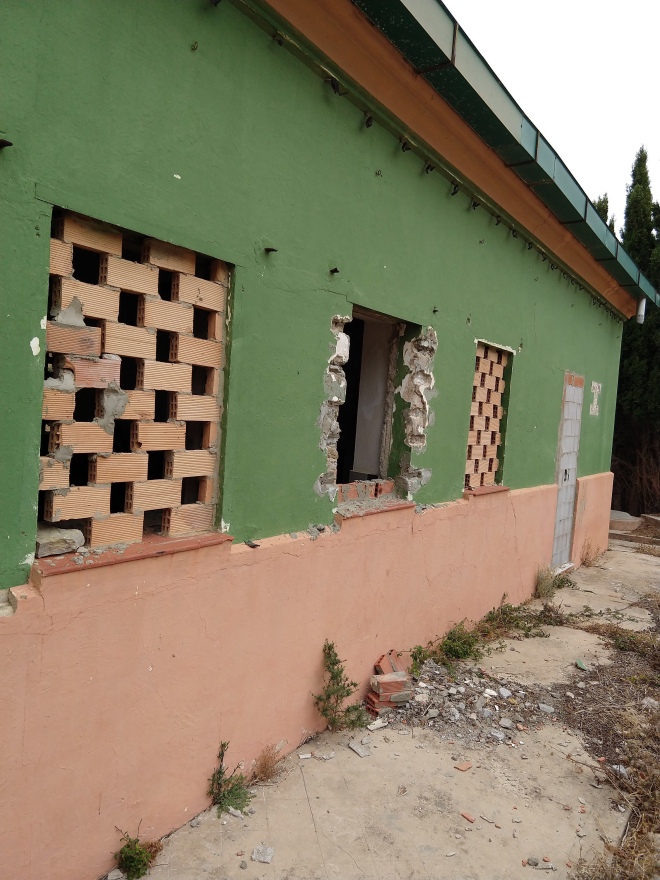
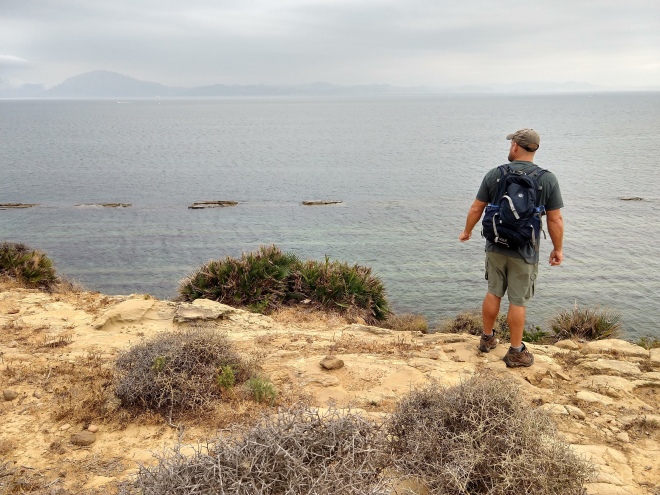
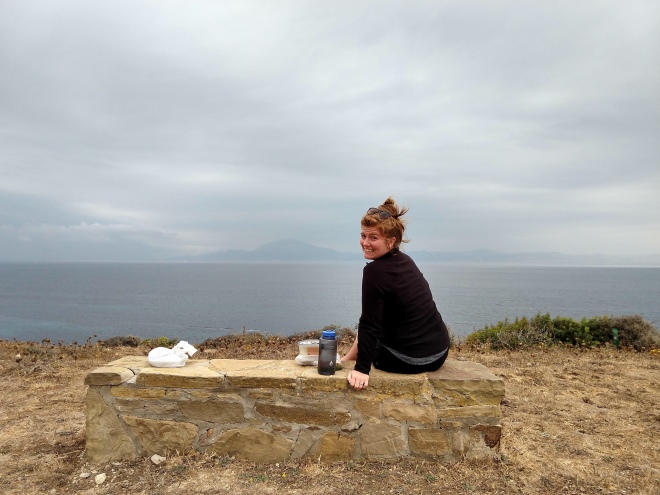
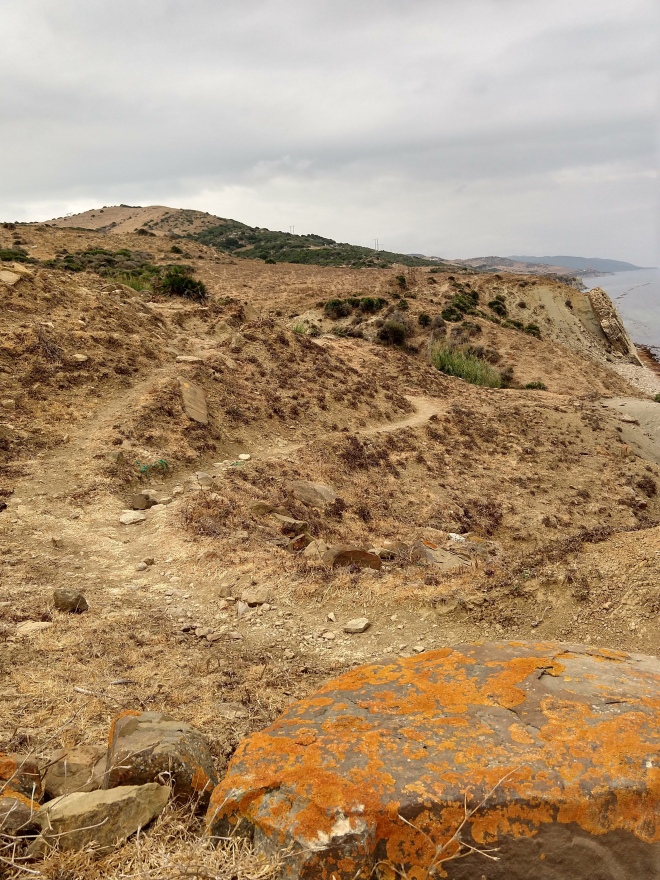
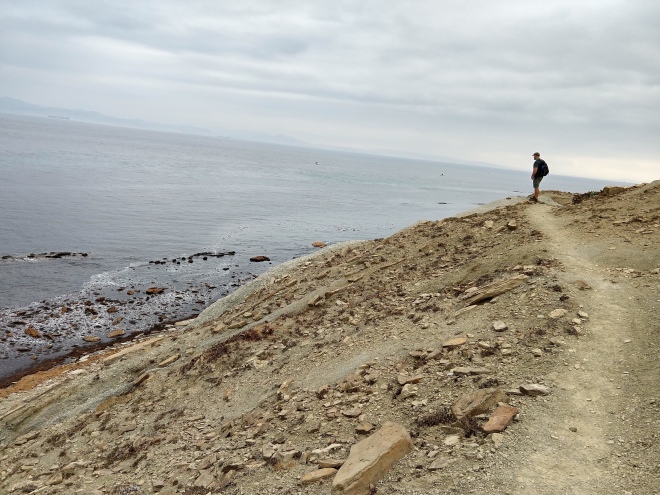
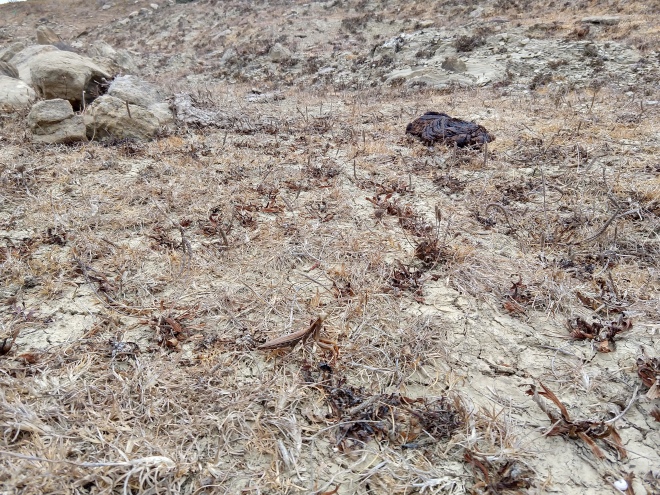
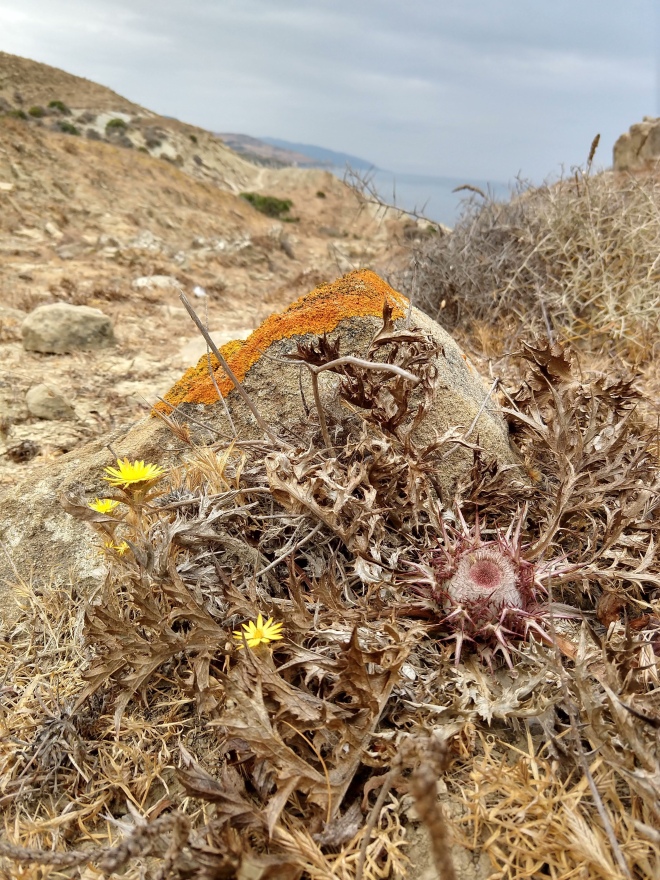
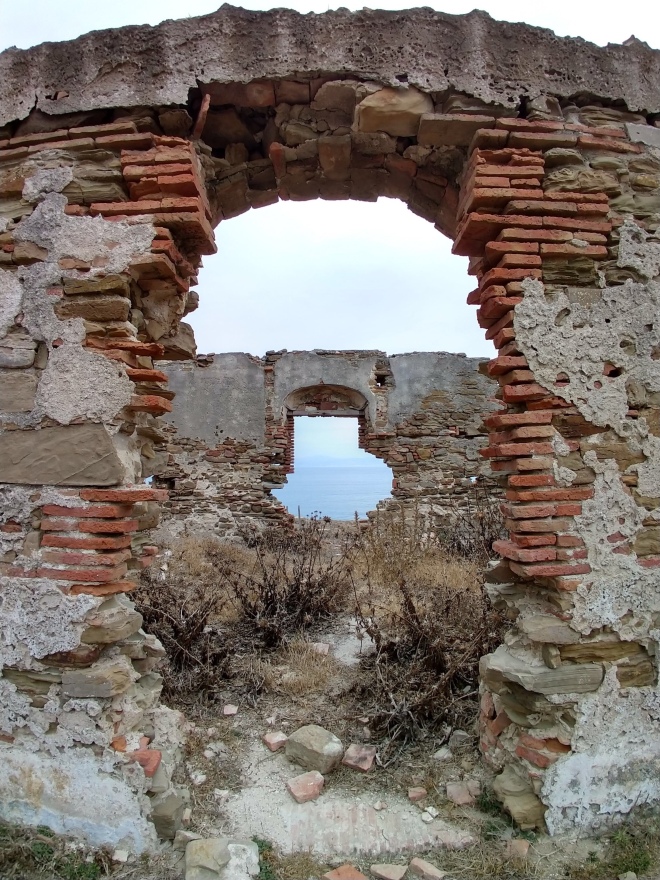
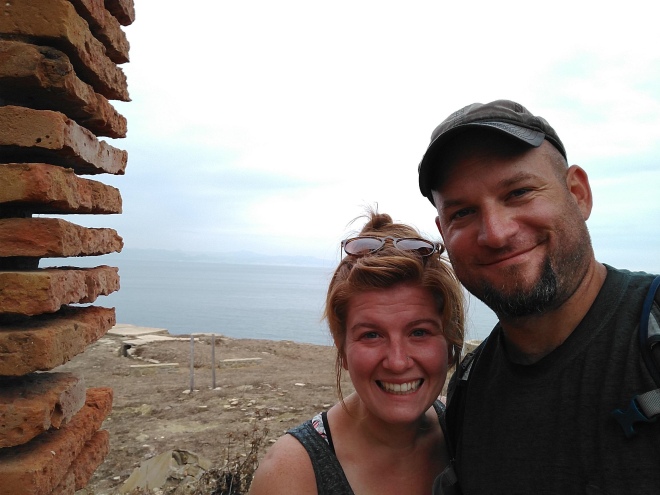
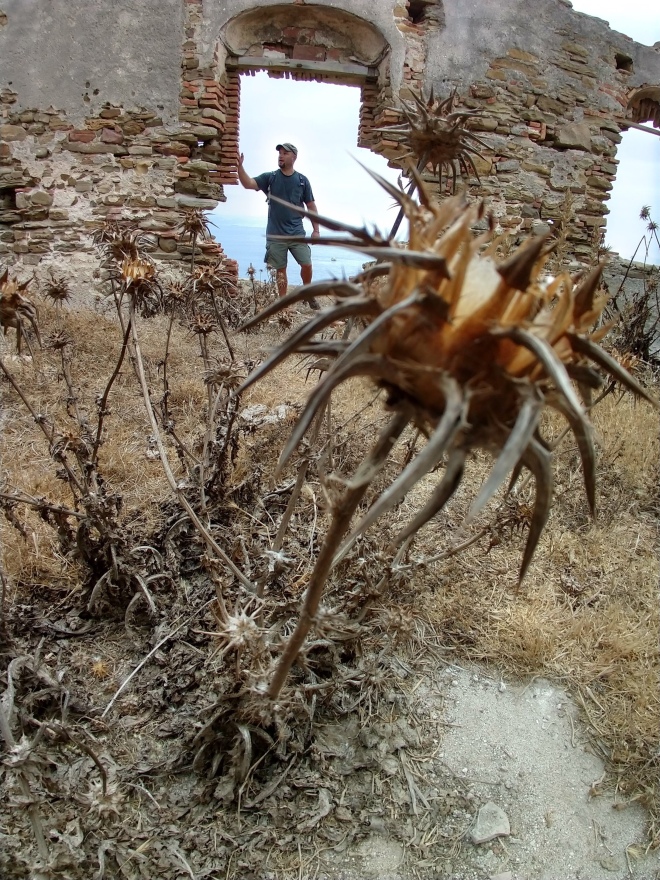
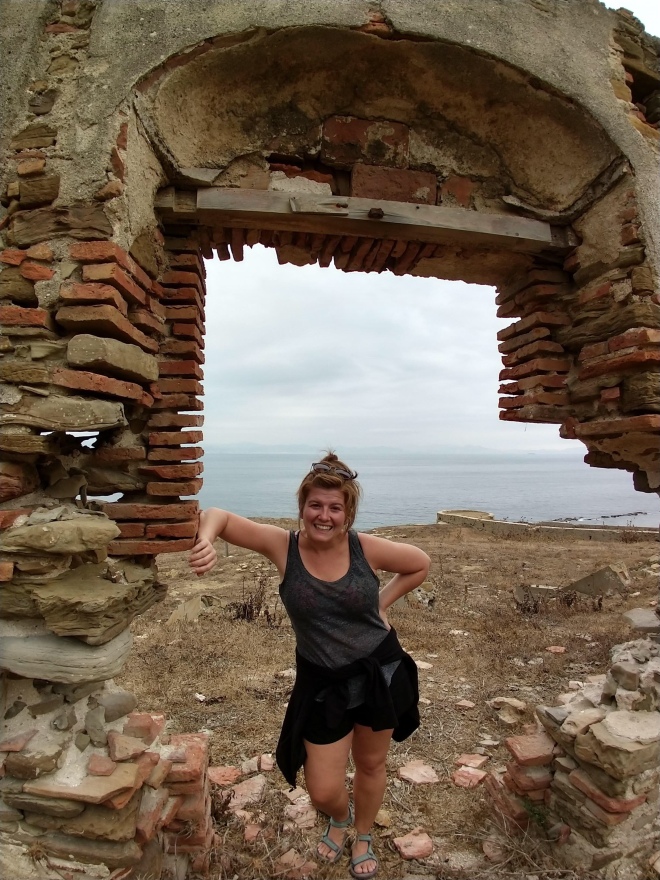
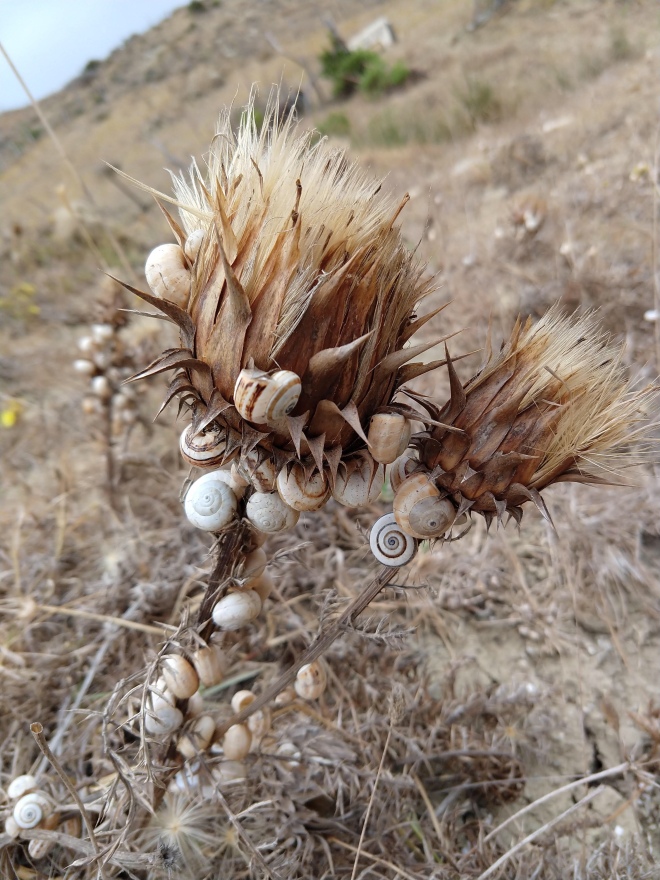

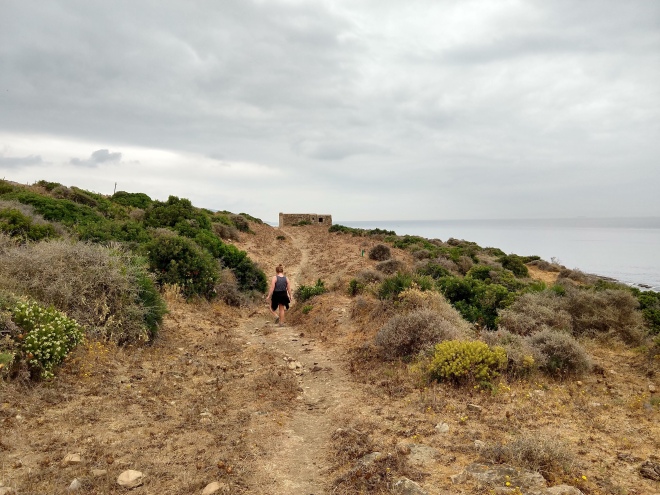
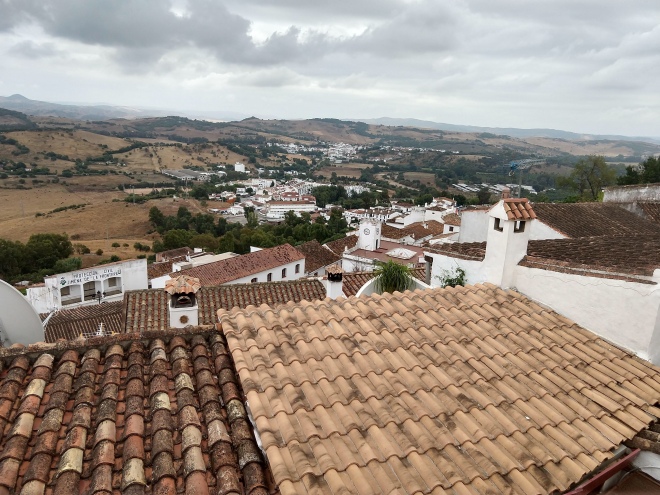 View from our bedroom window
View from our bedroom window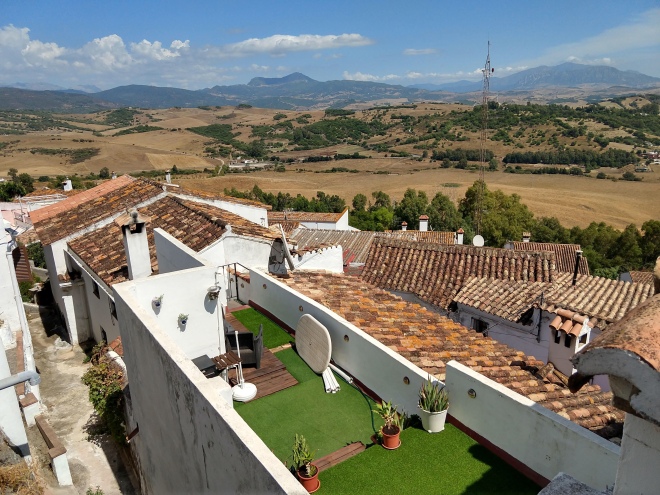
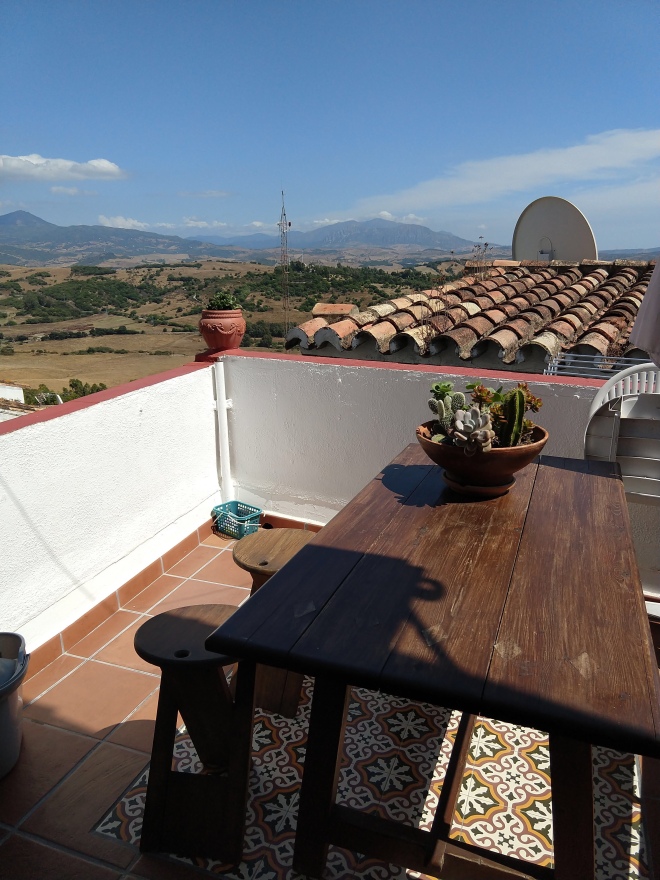
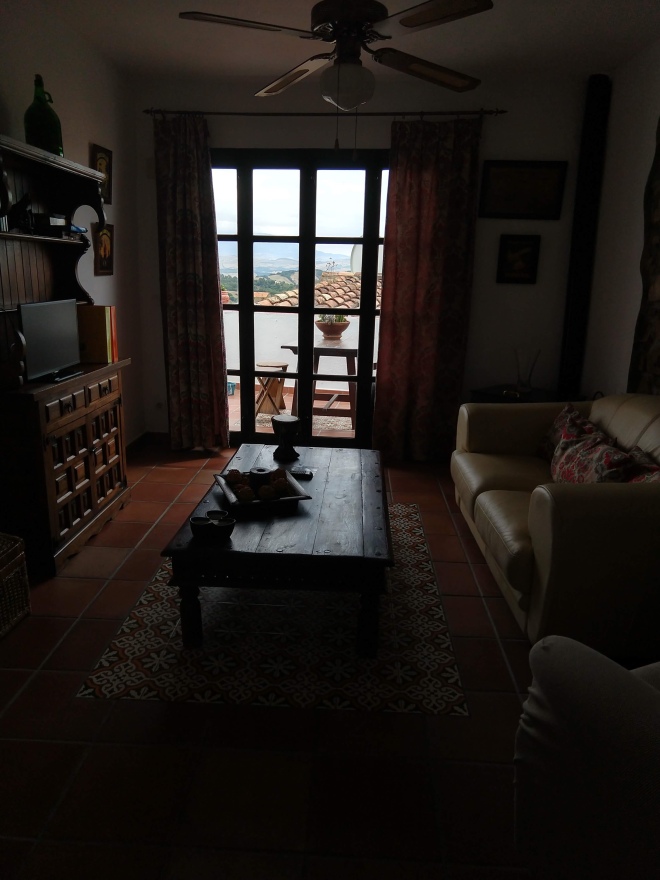
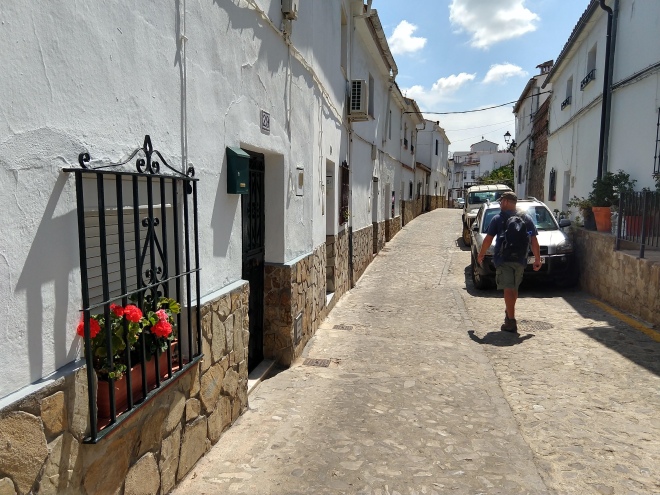
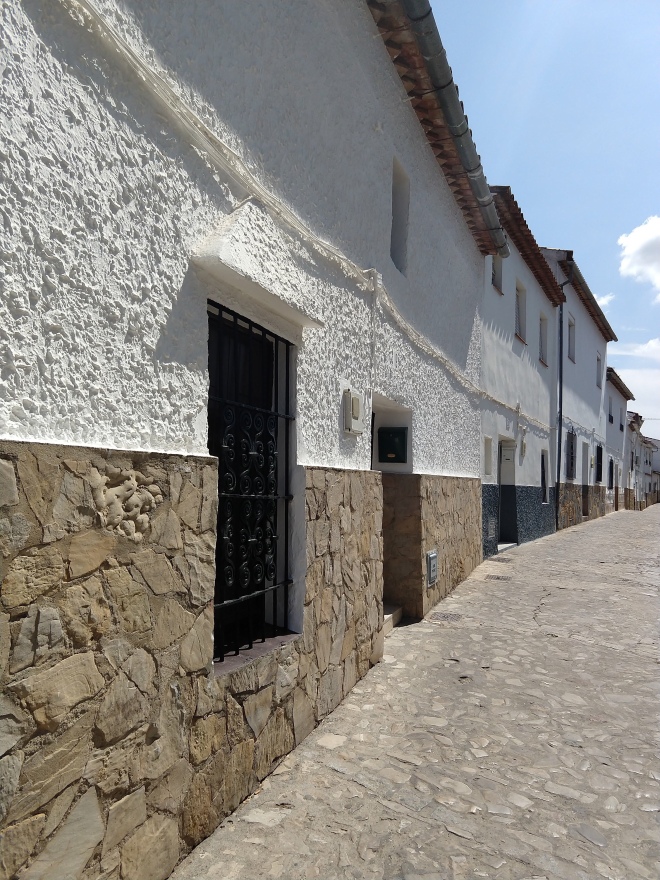
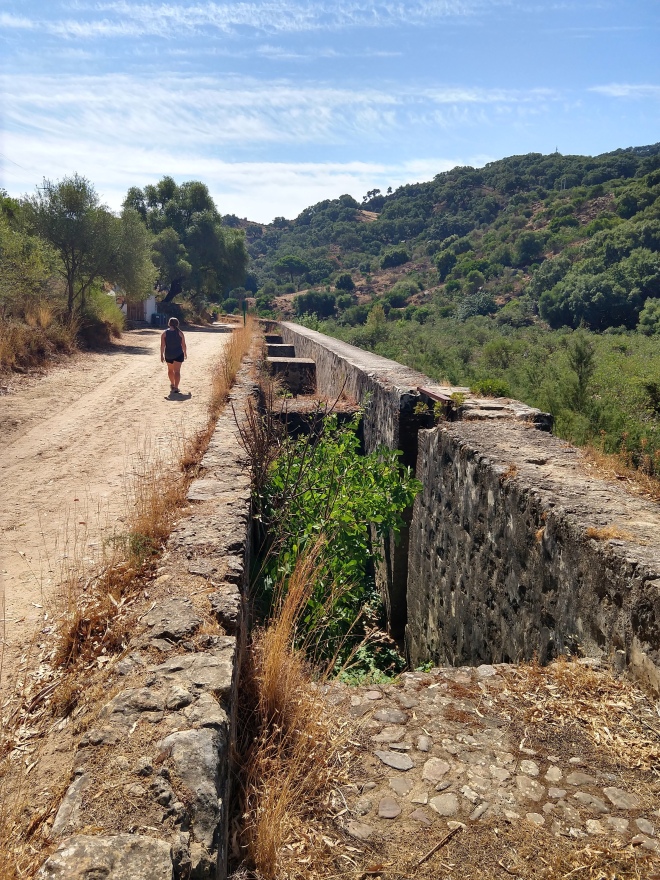

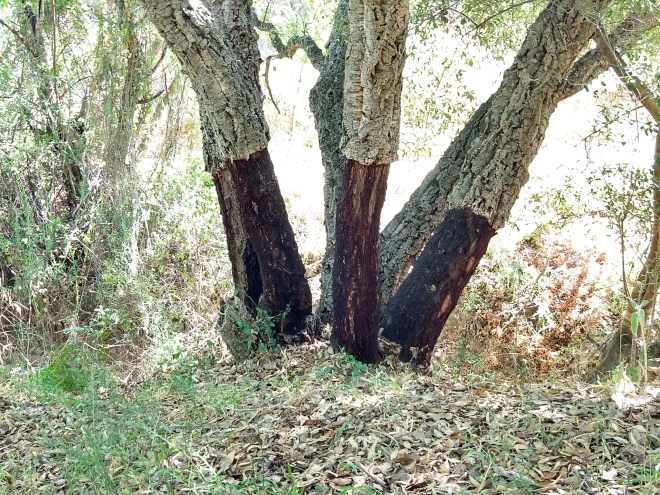
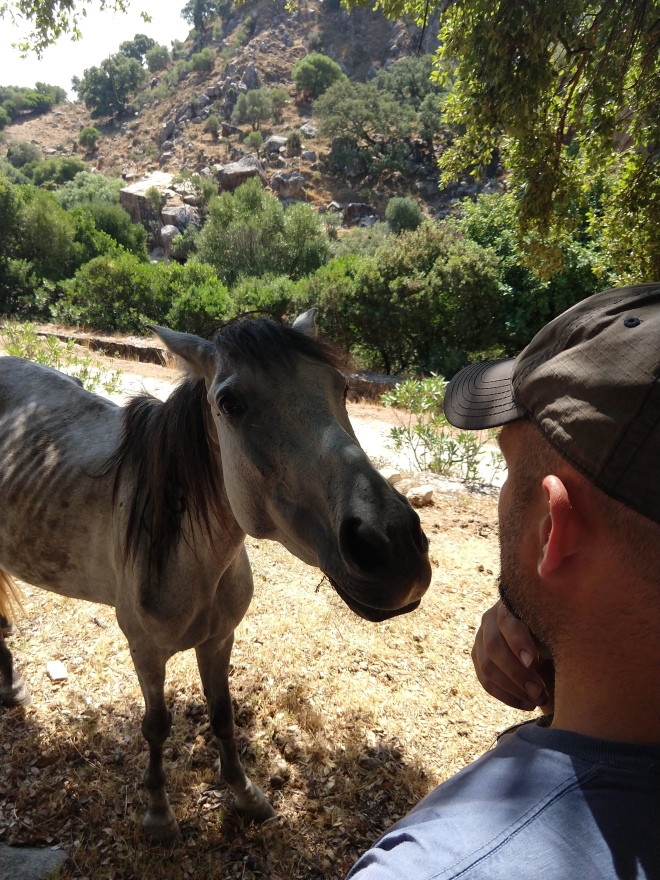
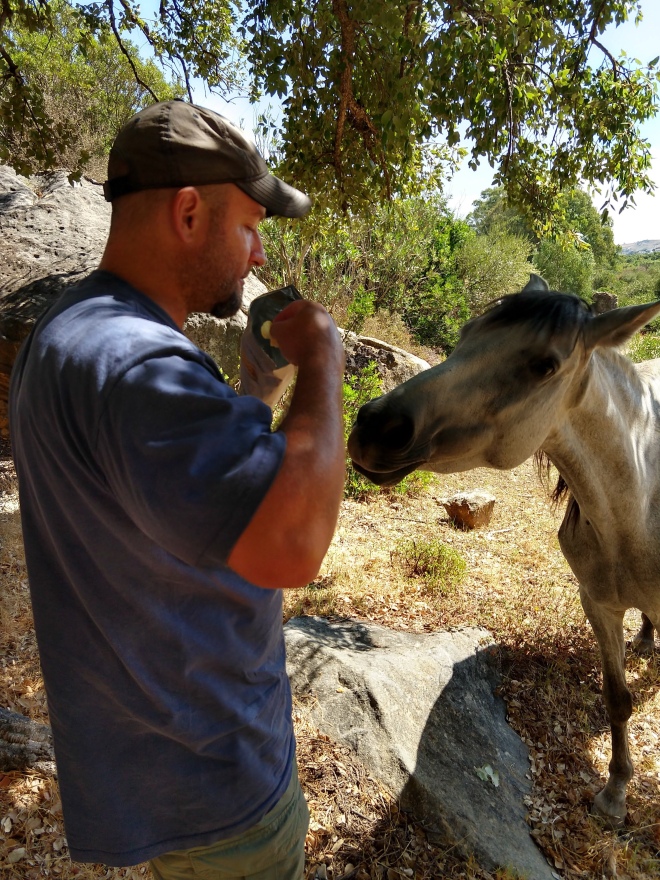

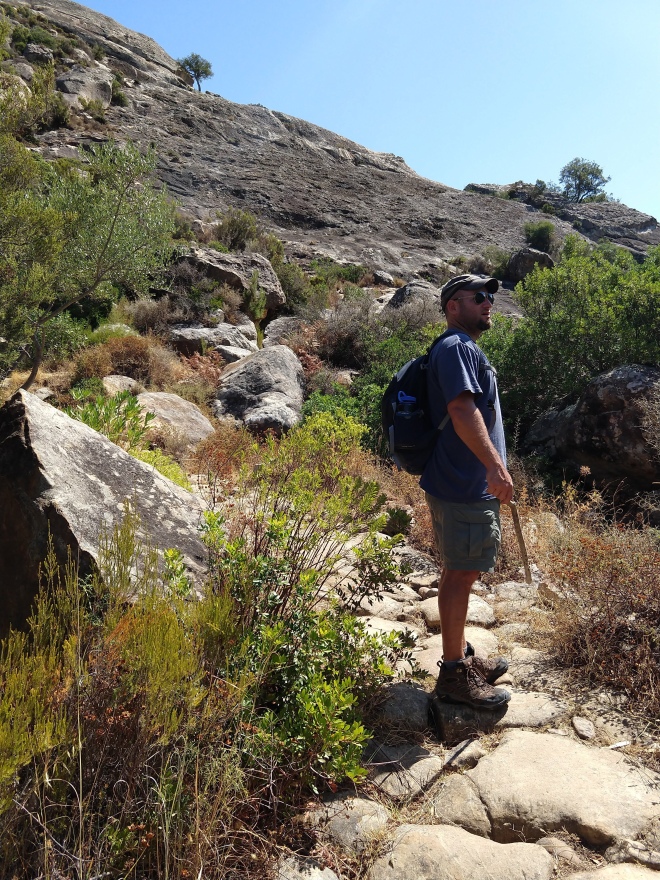
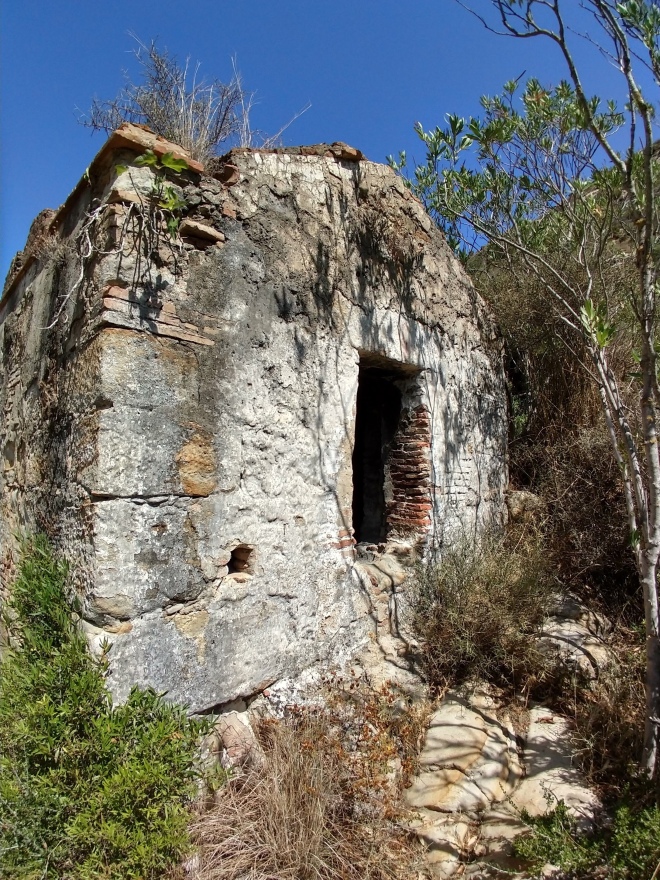
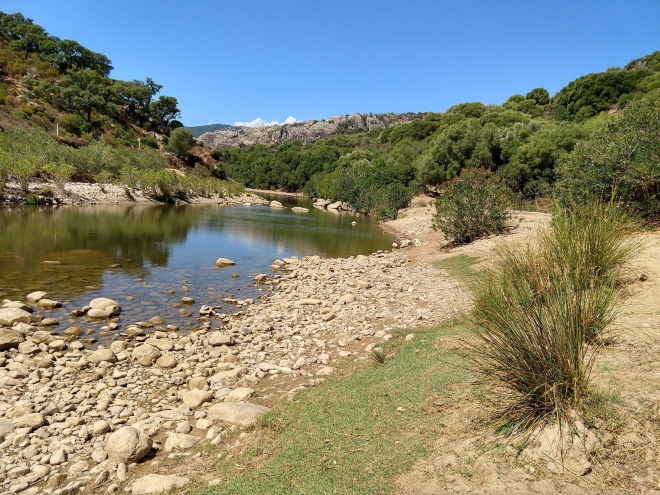
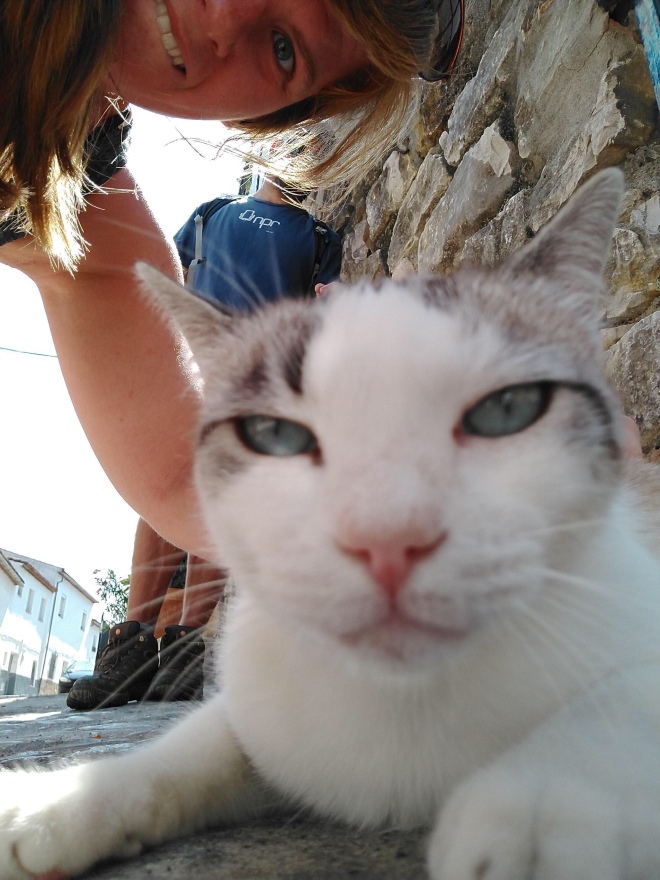
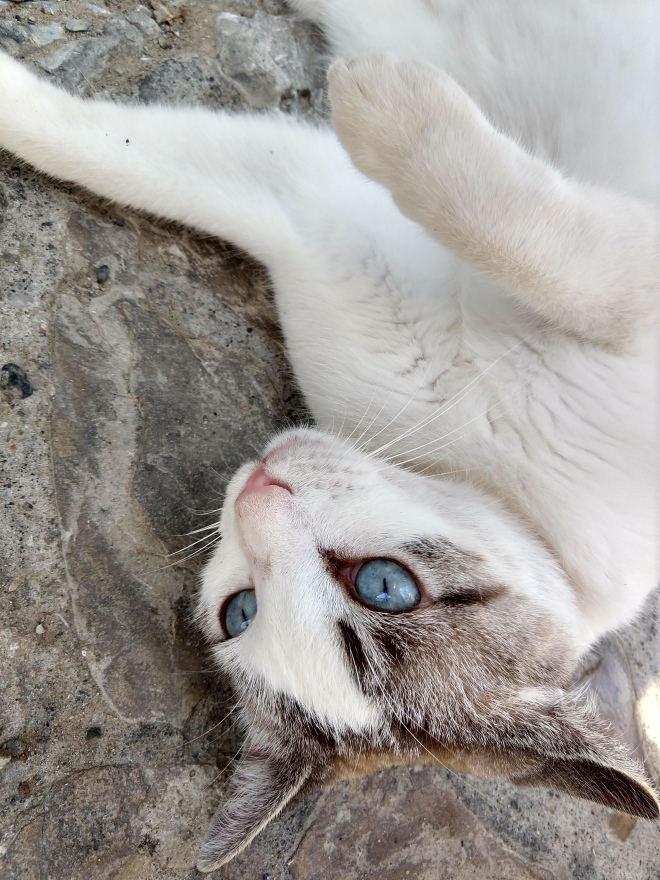
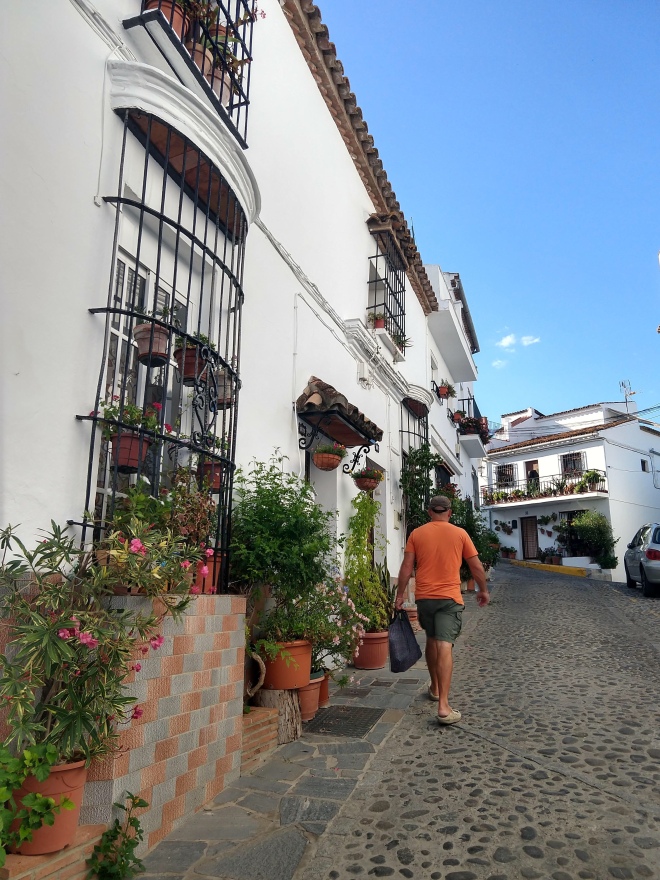
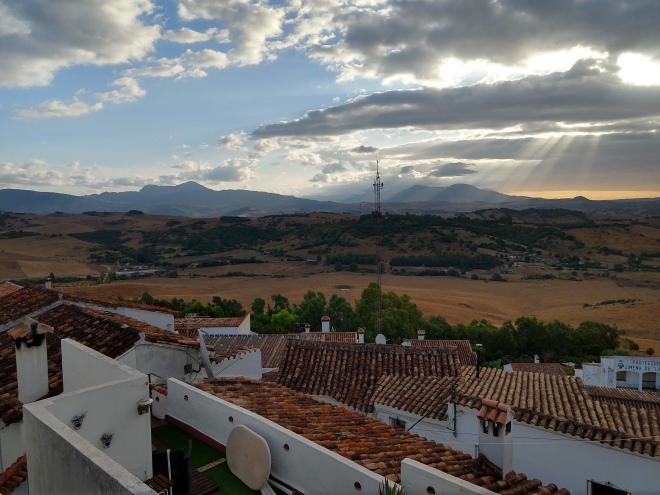
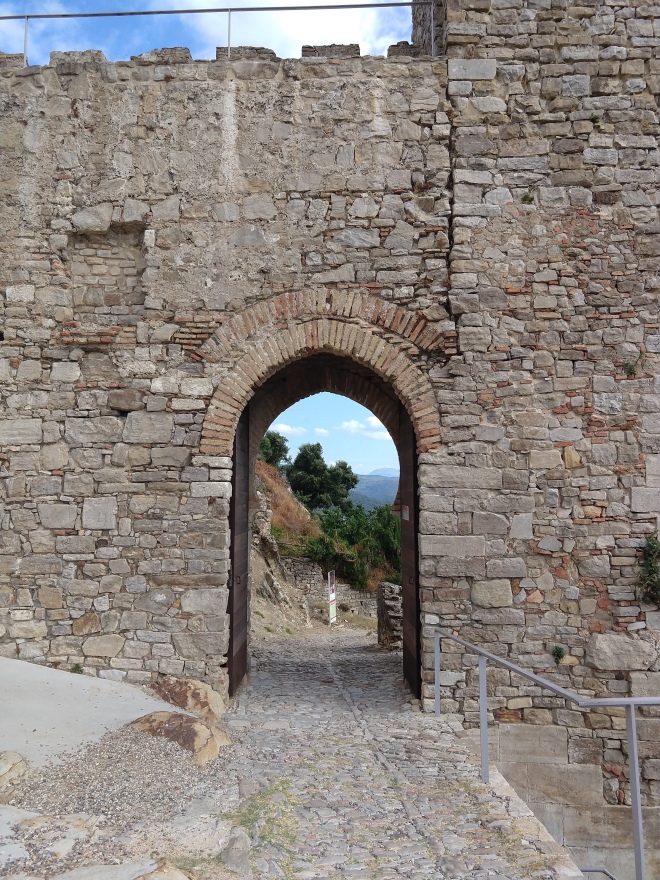
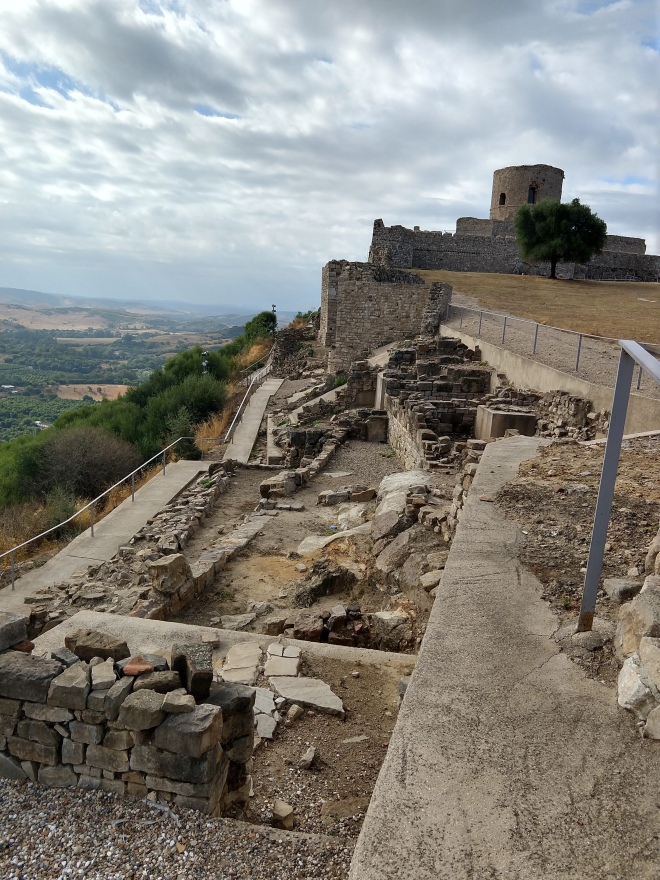
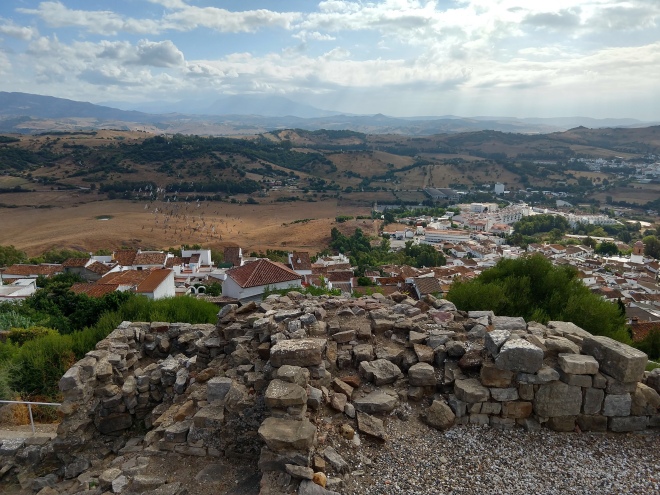
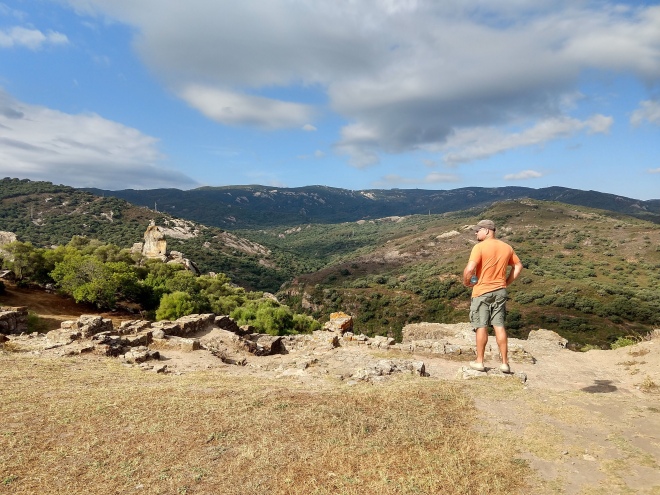
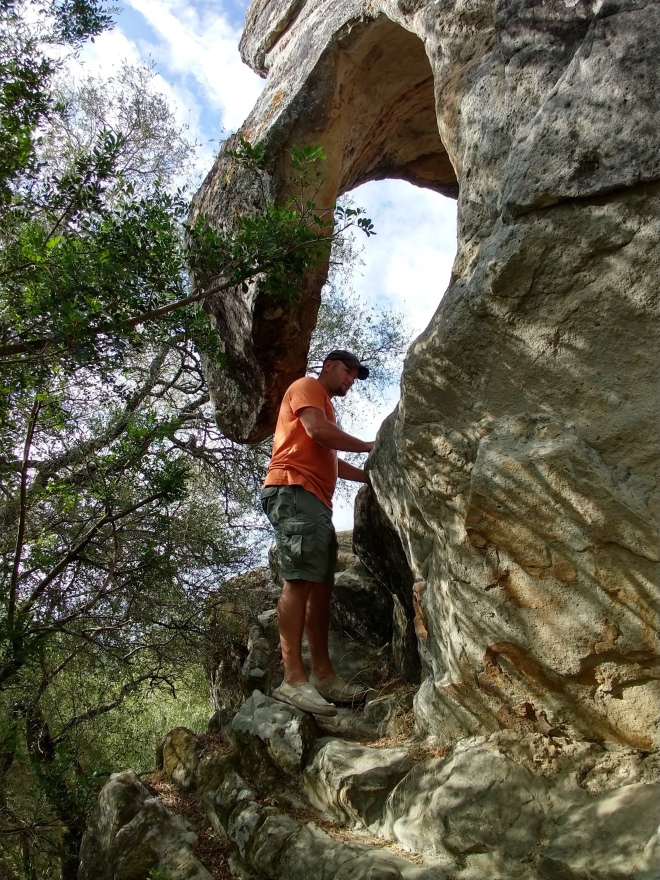
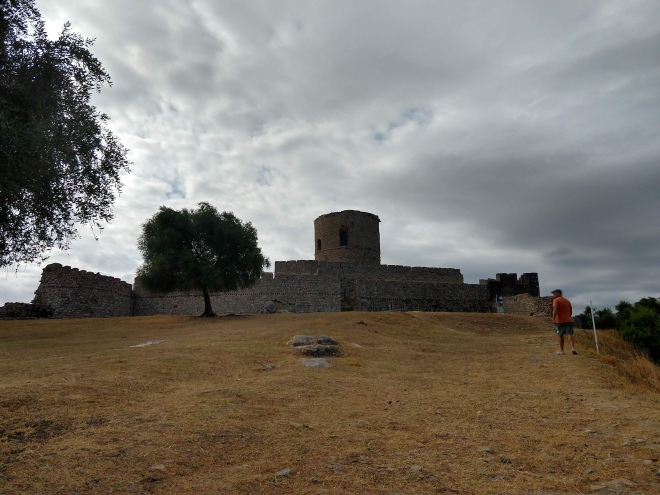

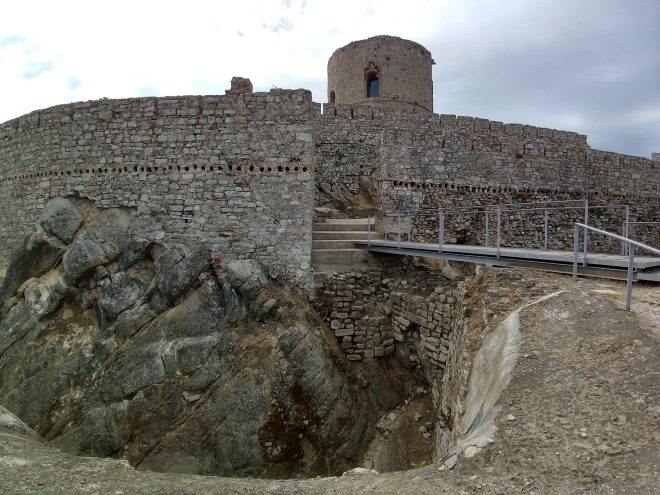
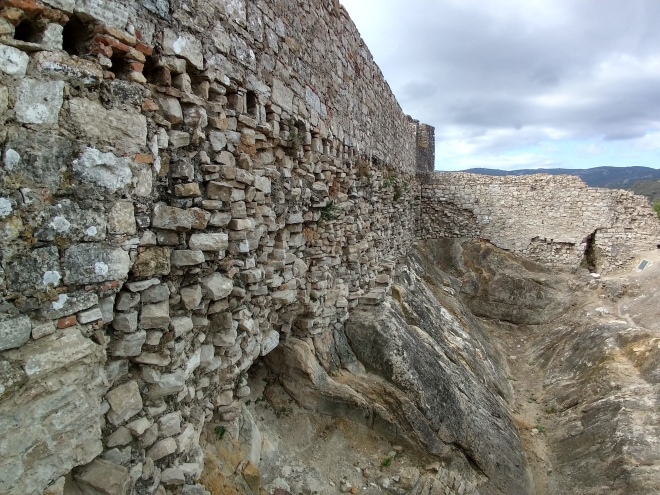
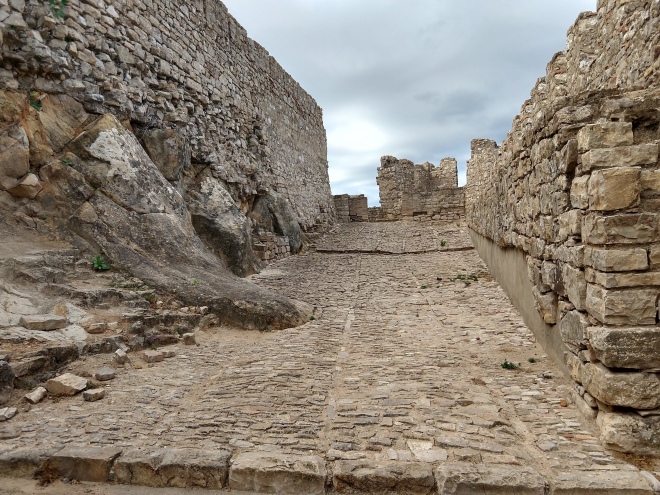
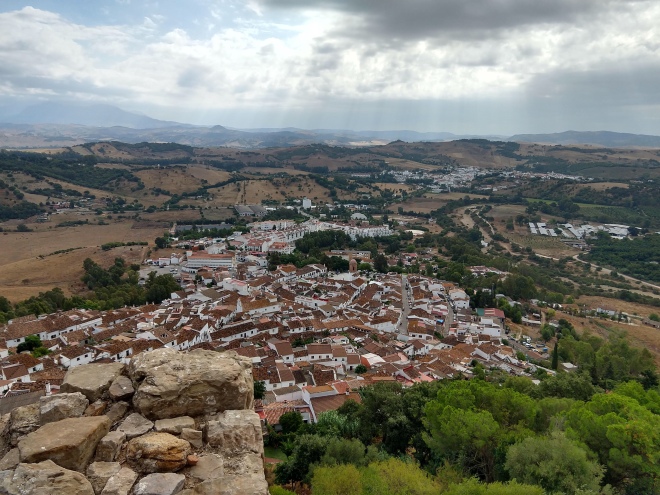
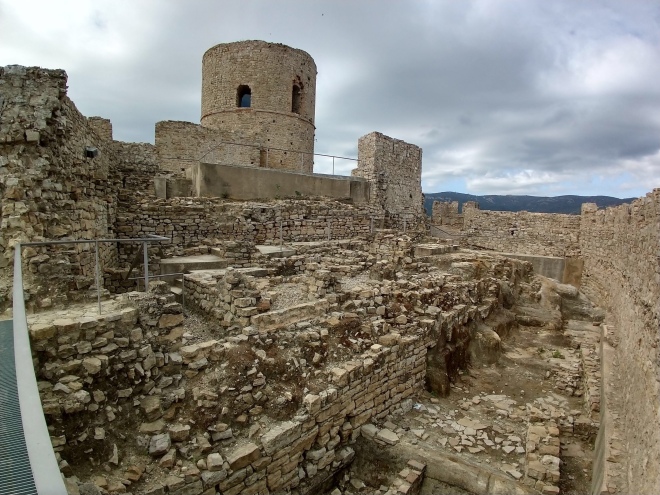

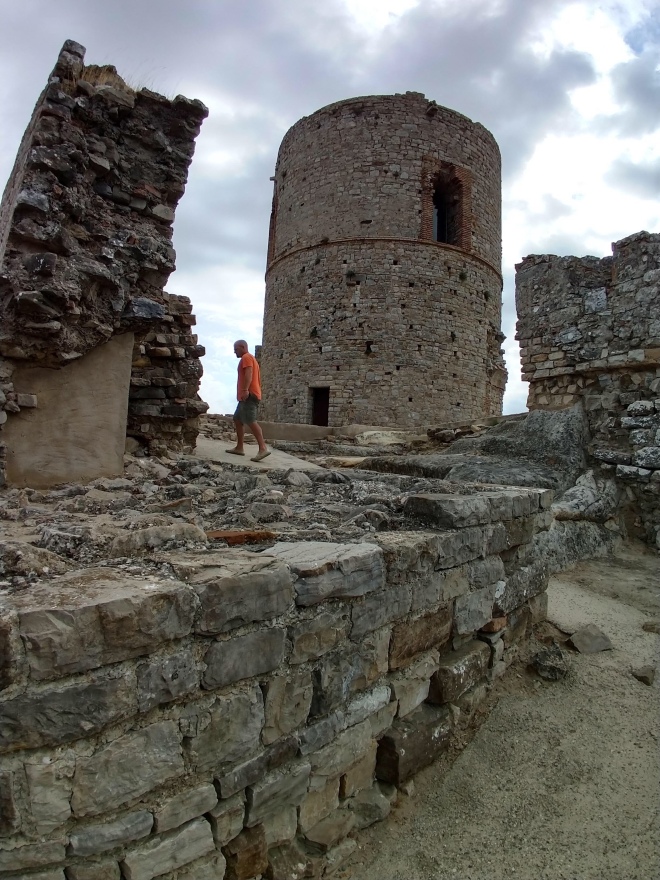

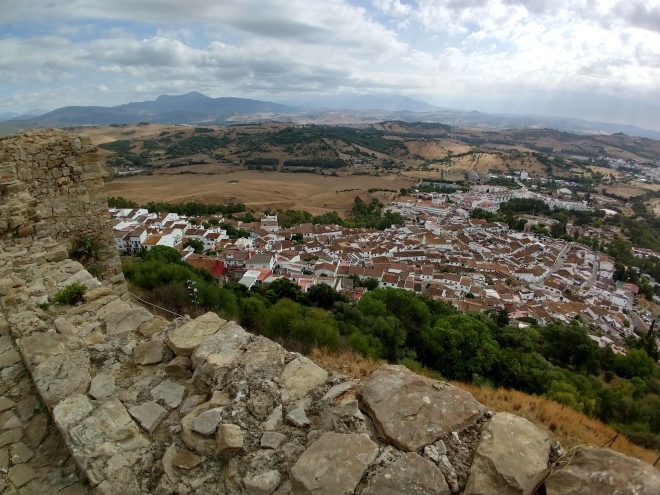
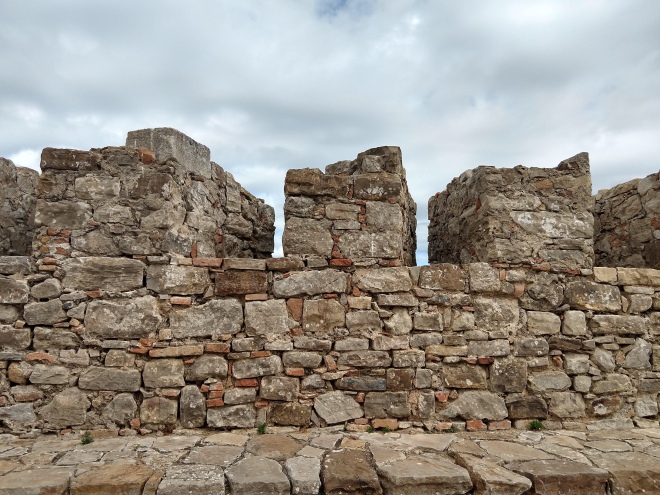
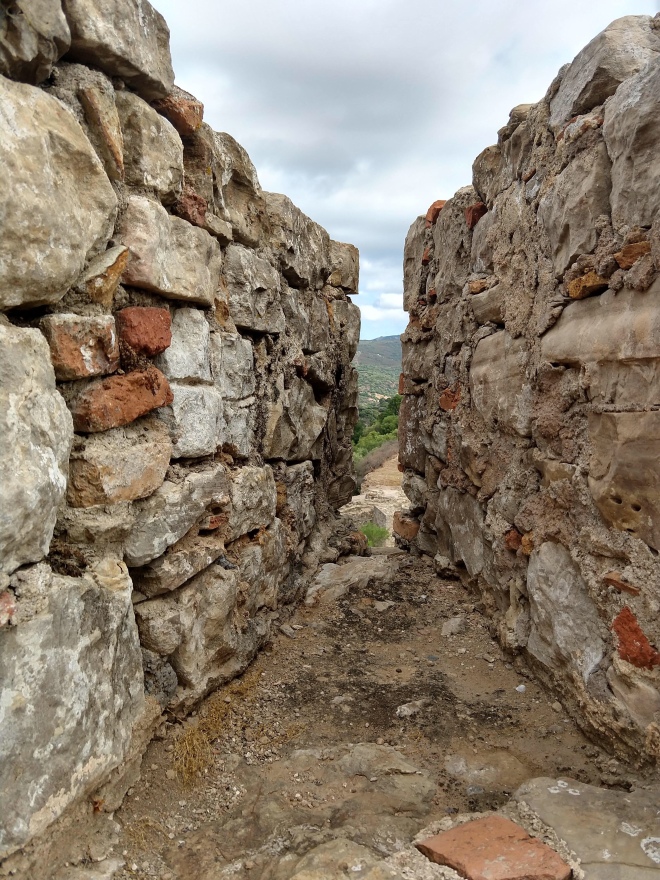
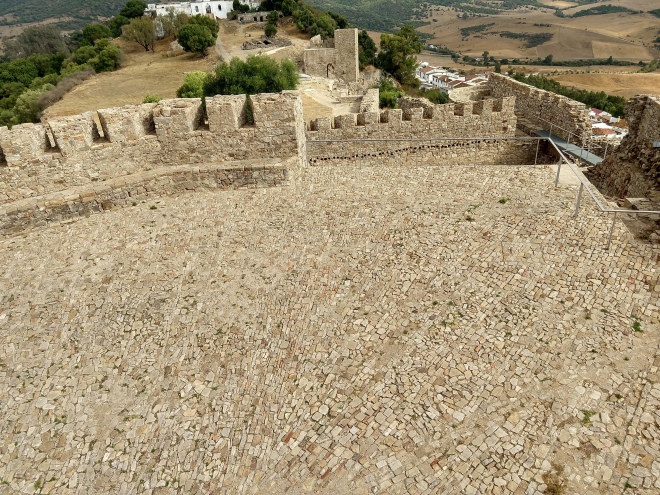
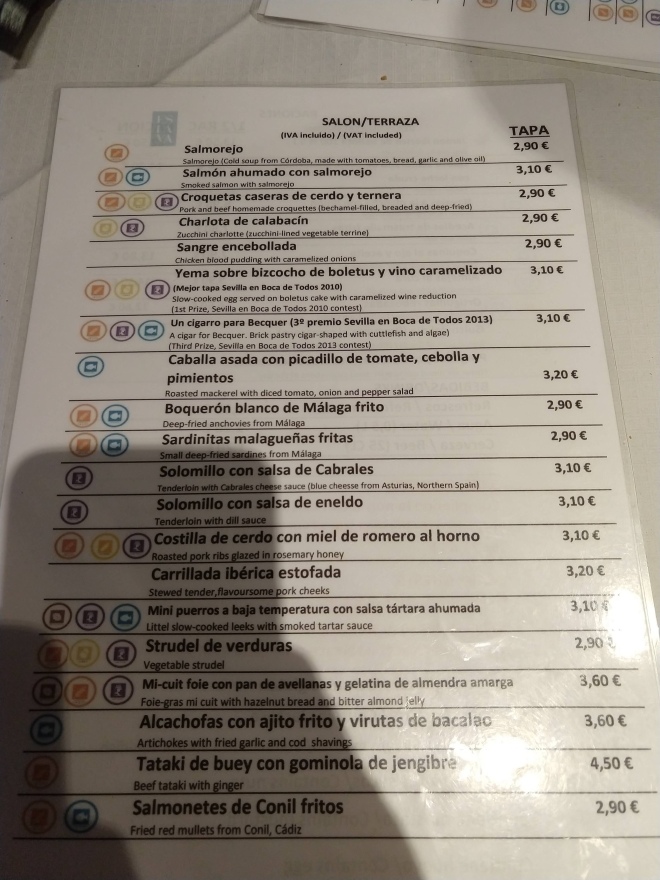

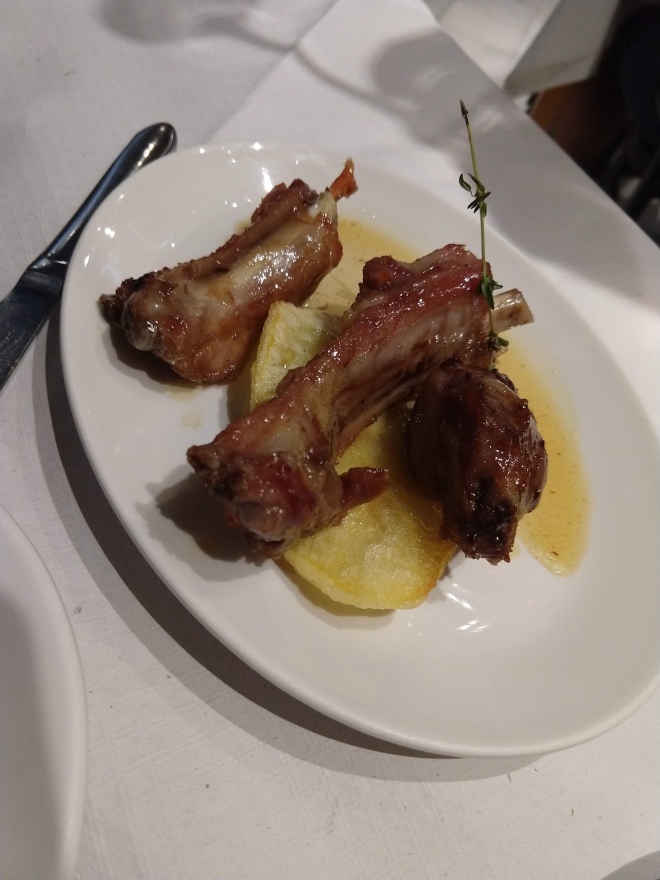
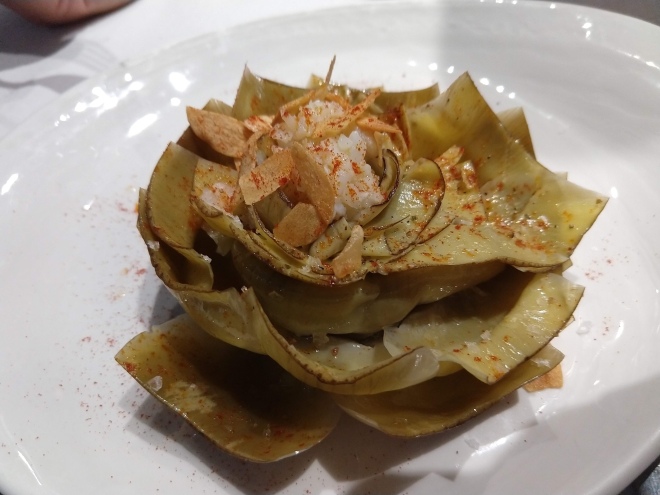
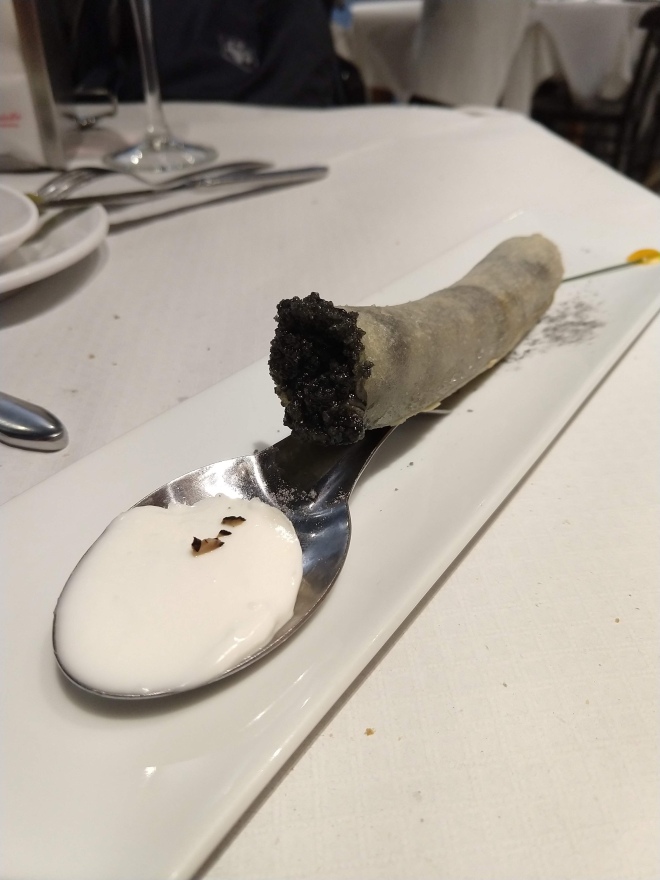
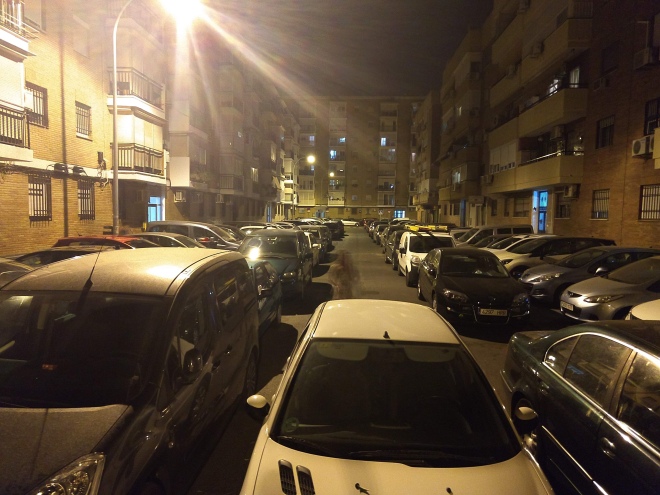
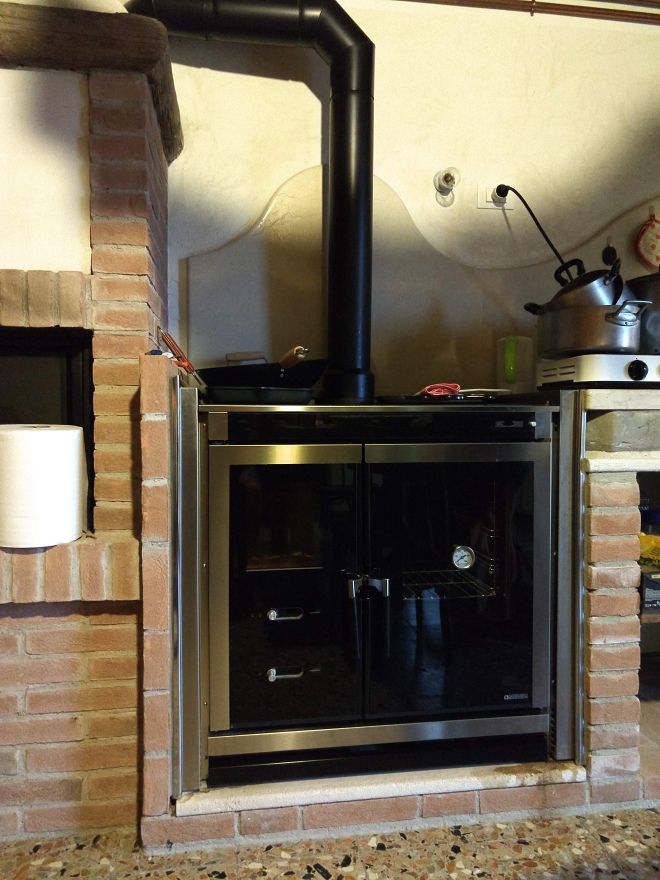
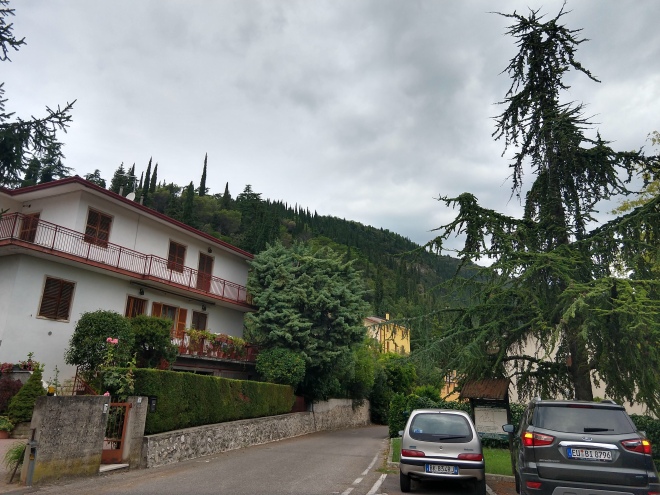
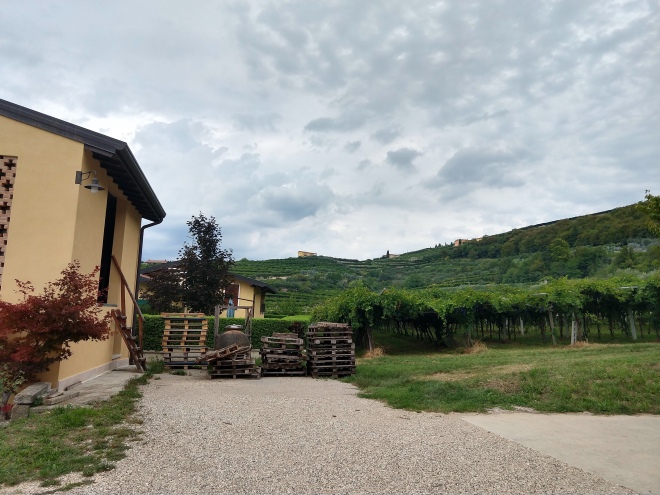
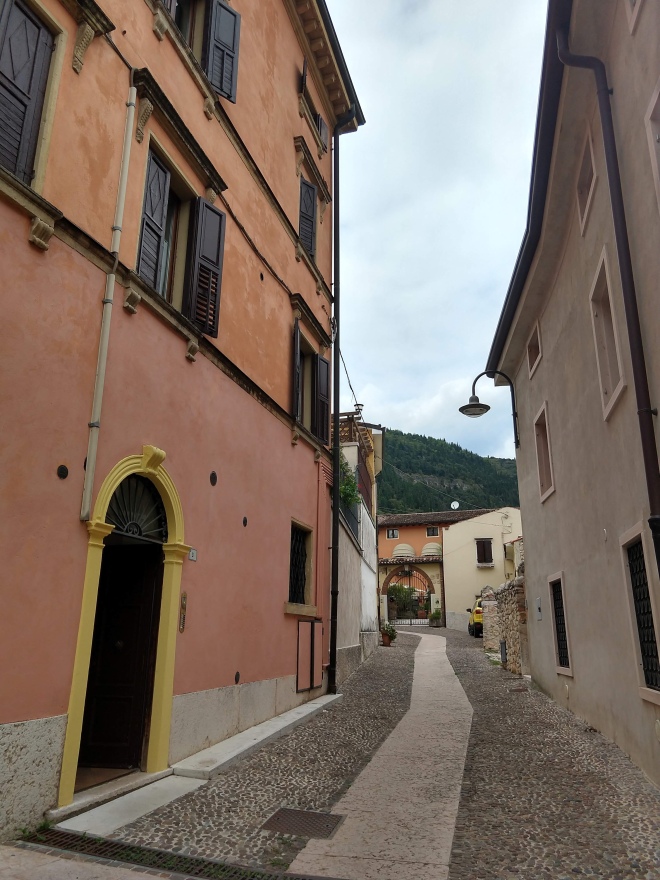
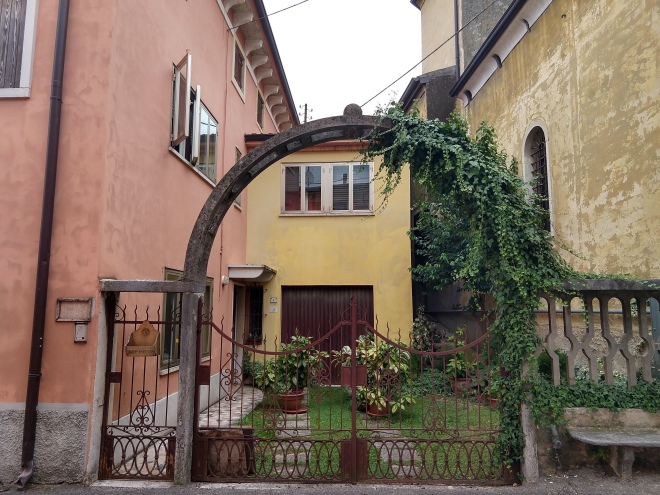
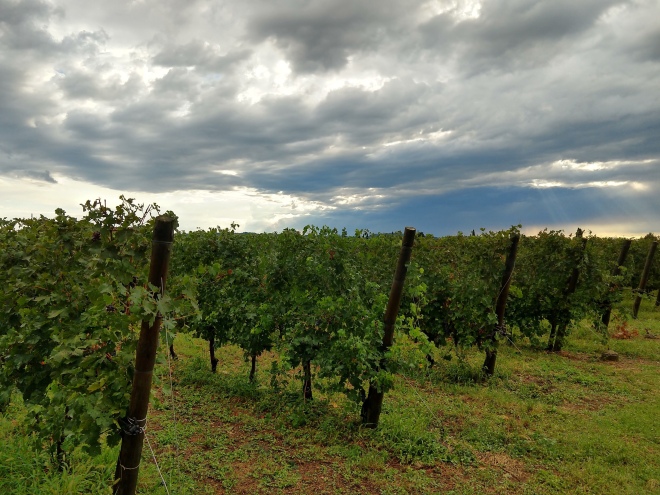
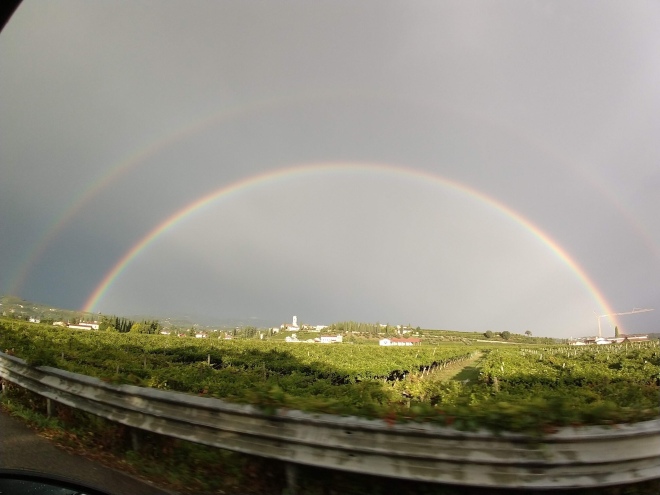
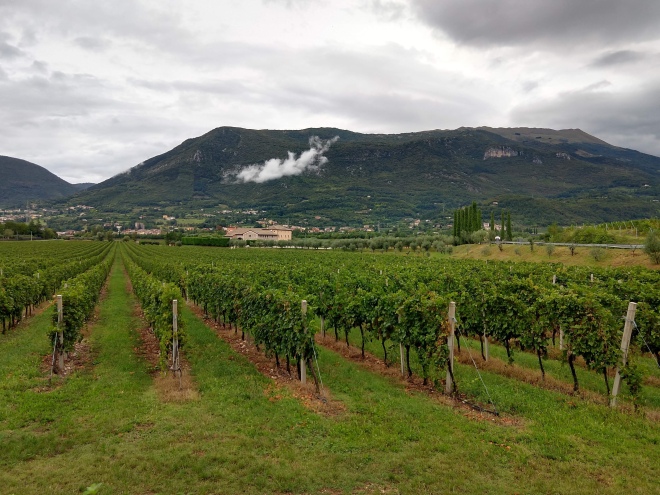
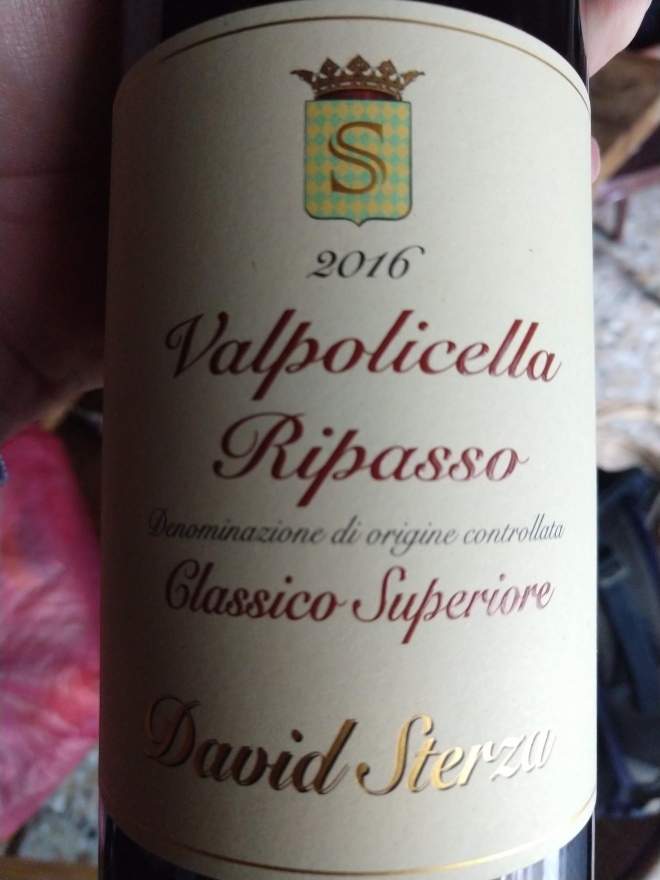
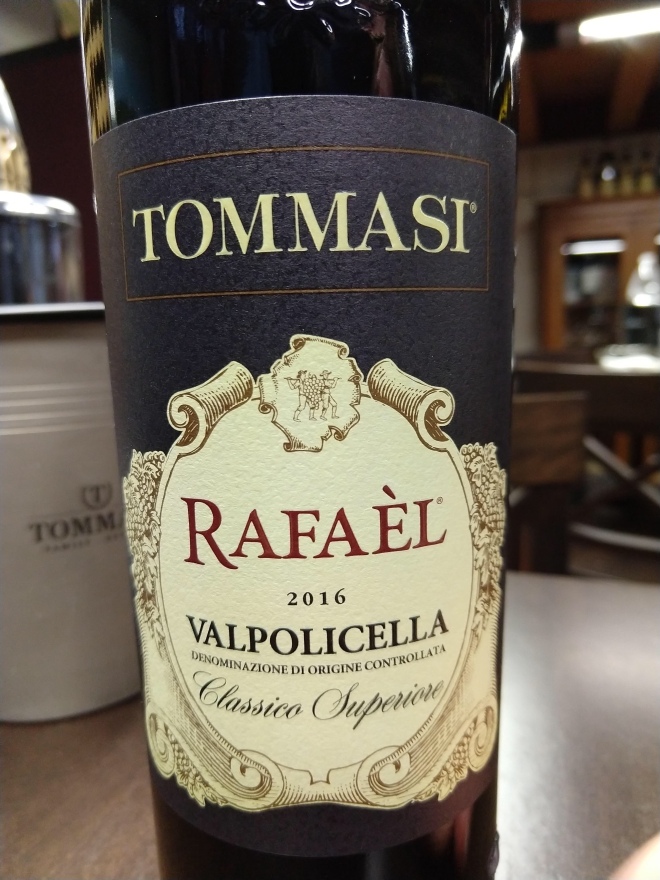
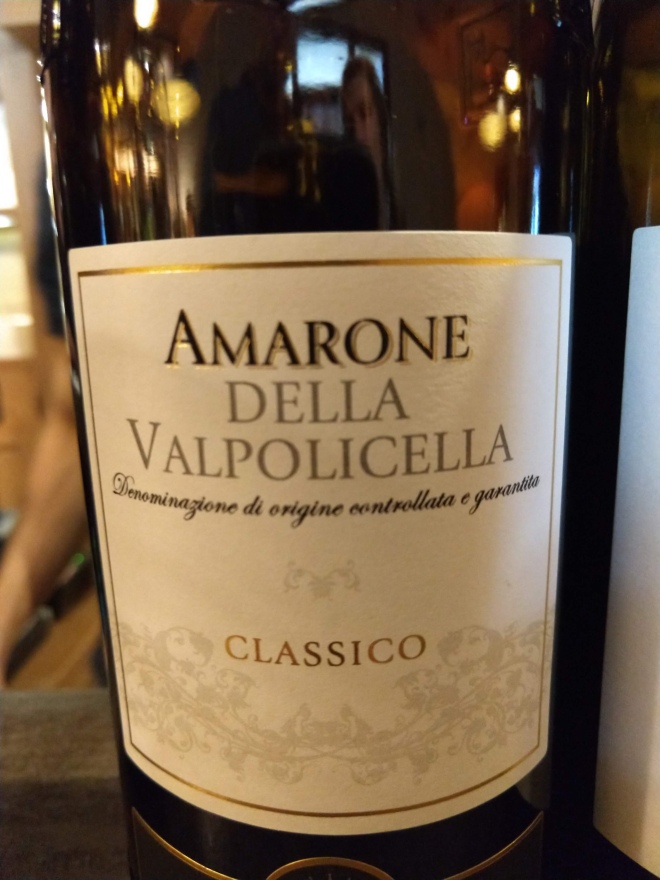
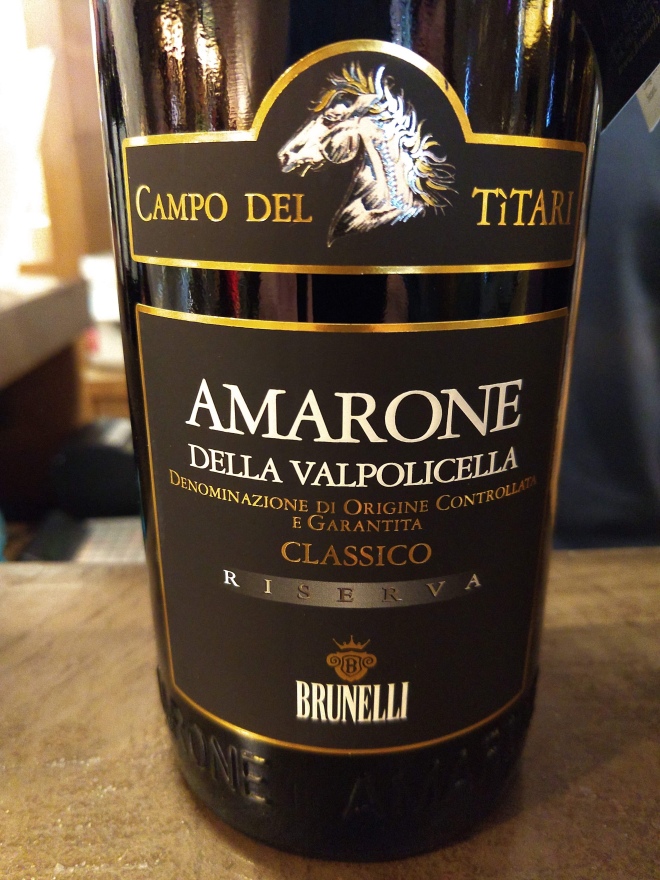
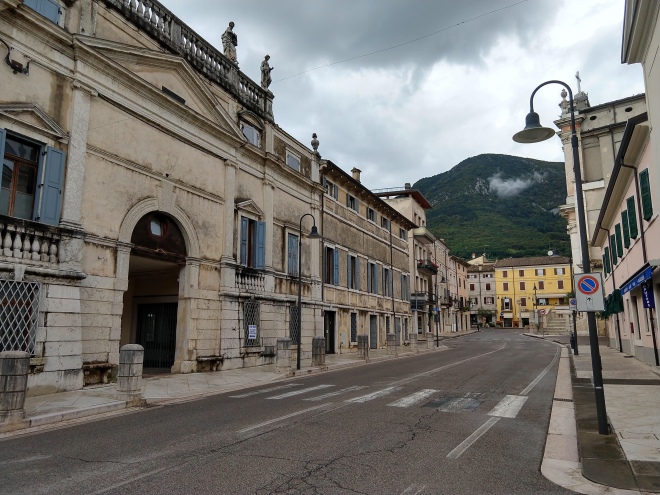
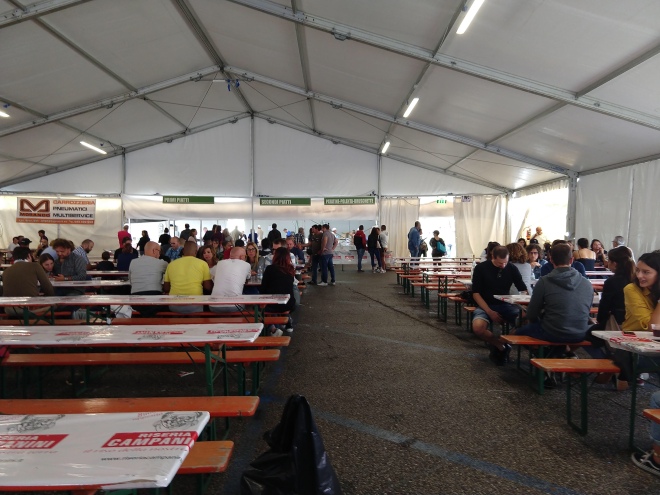
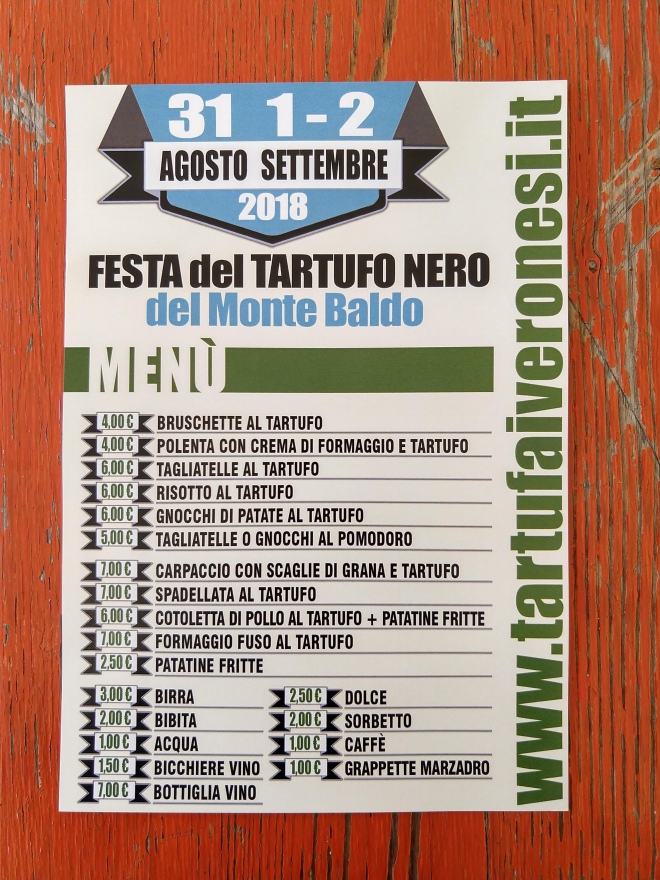
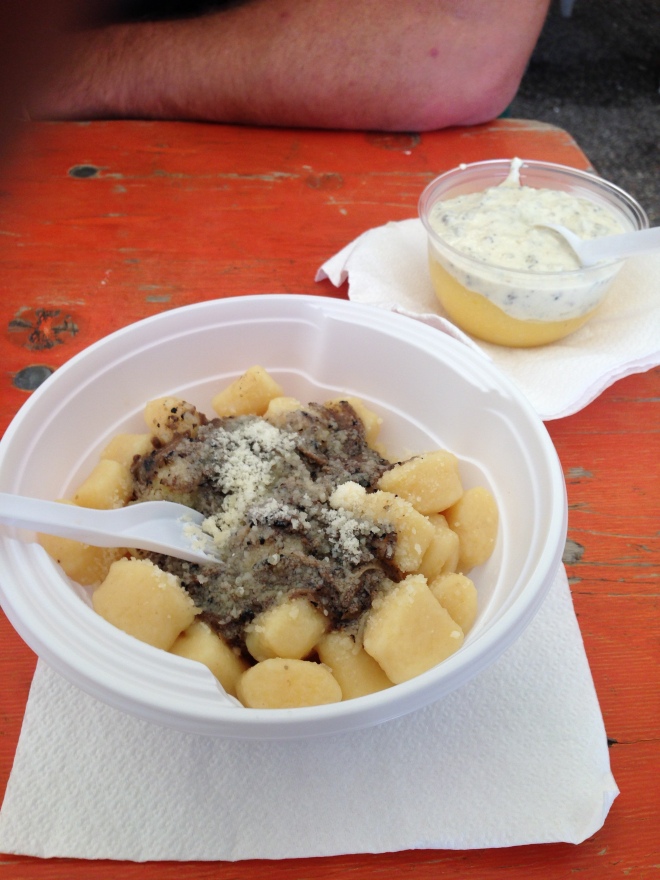
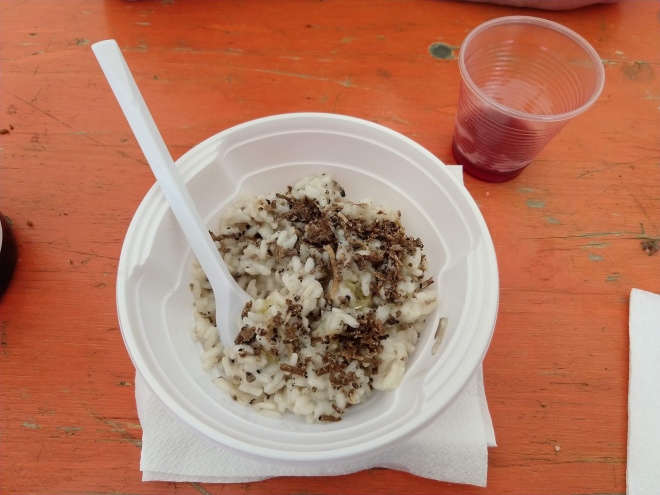
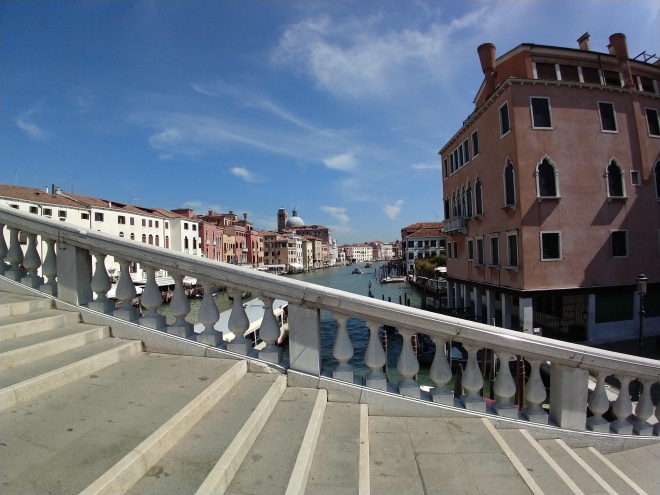
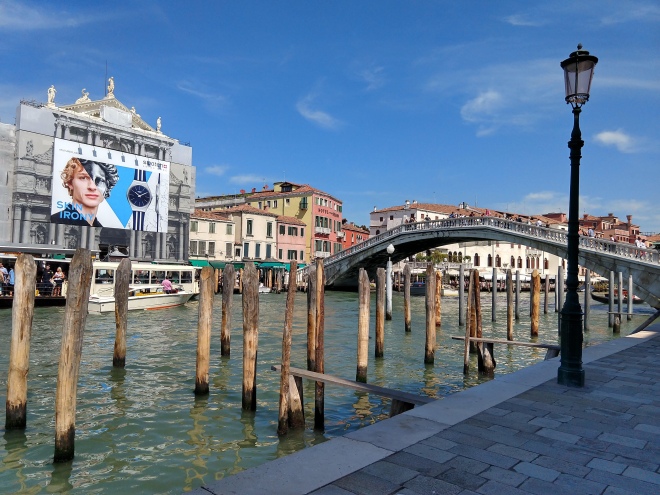
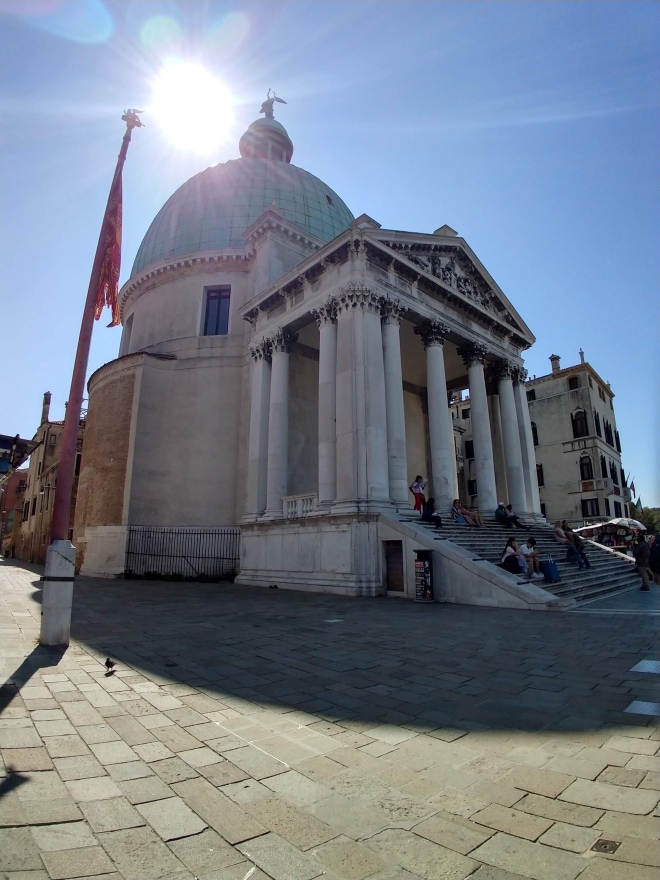
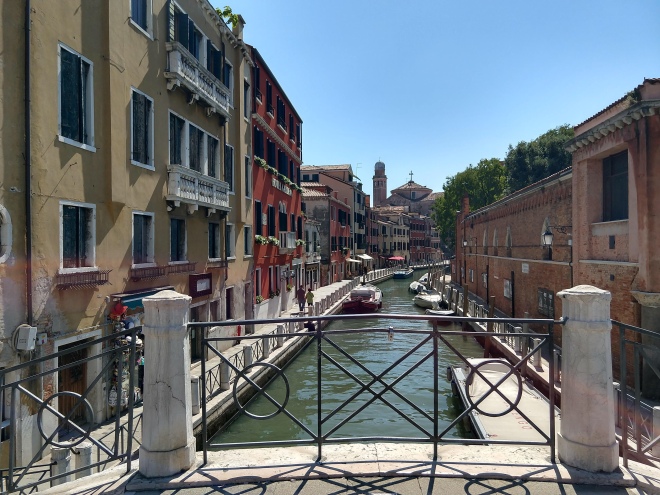
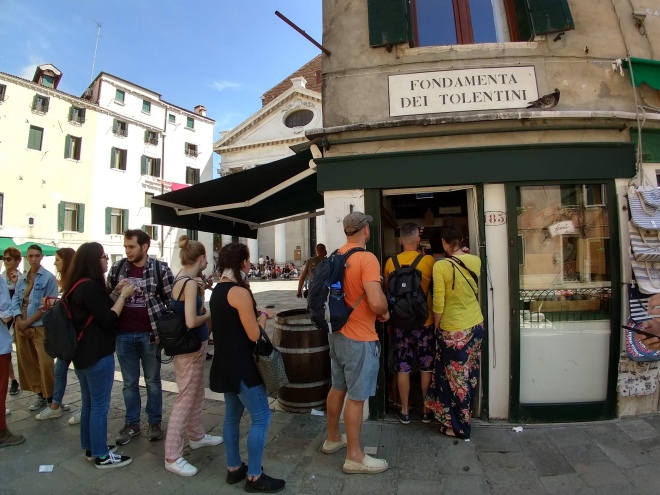
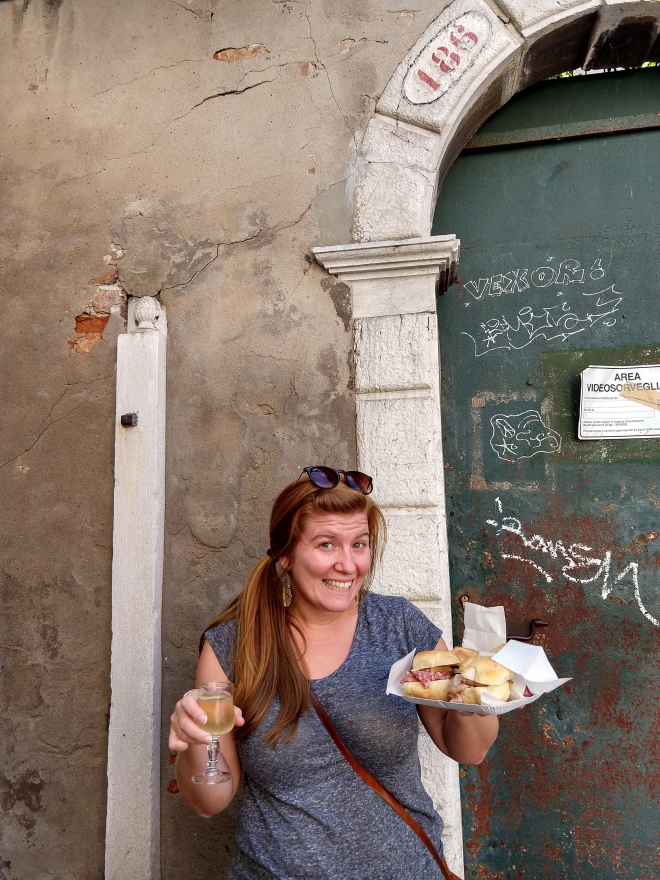
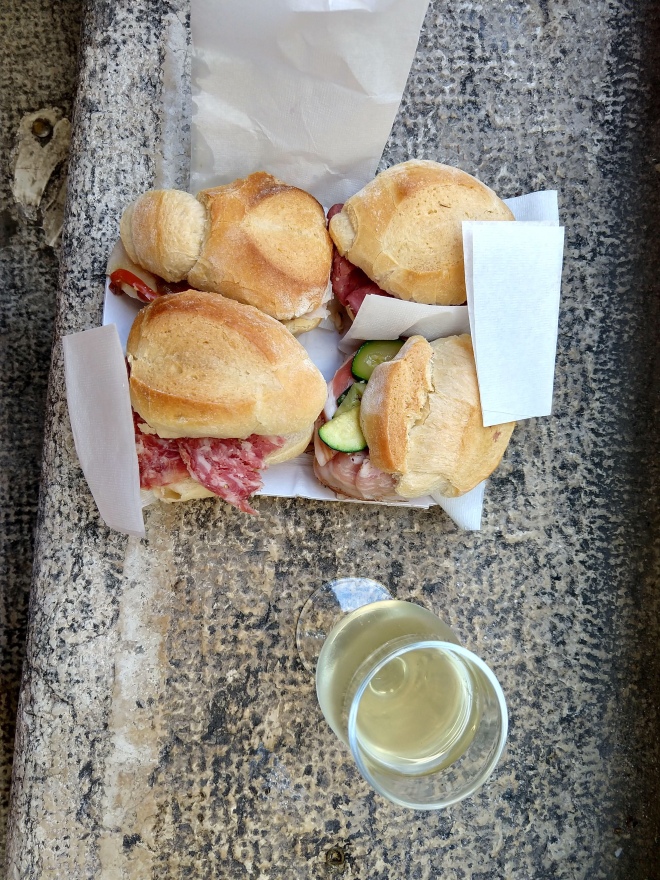
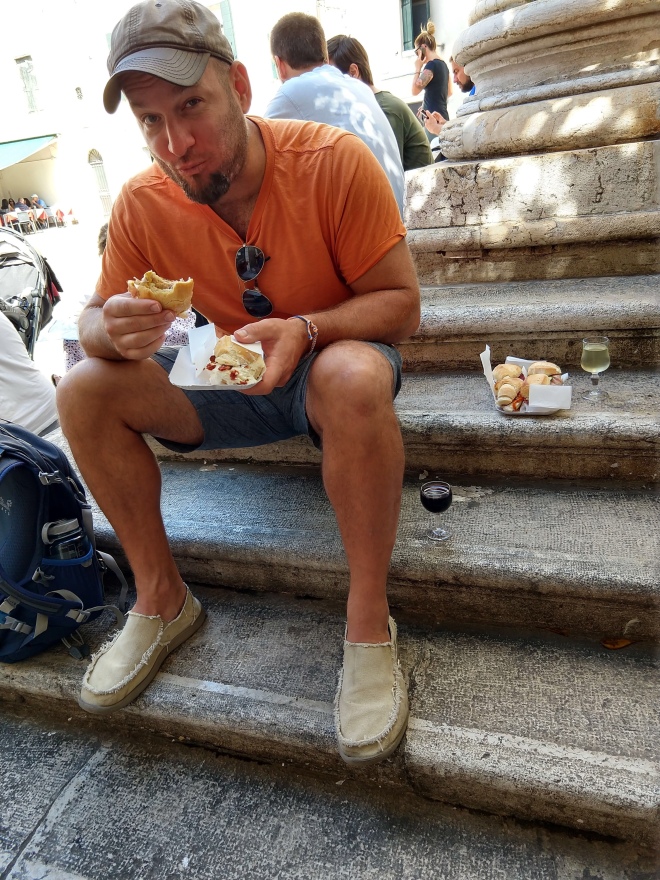
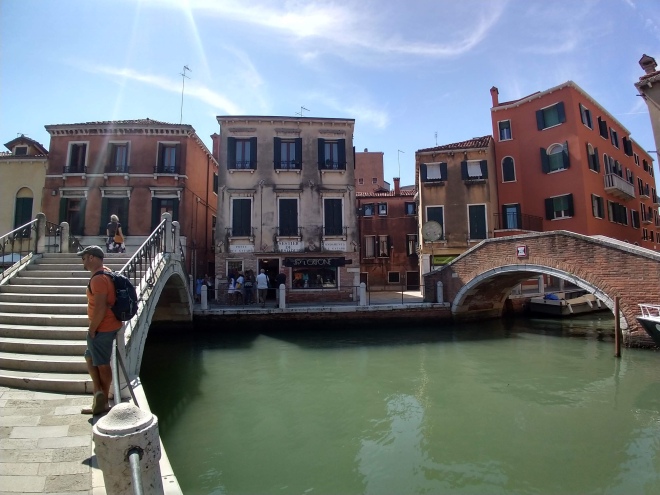
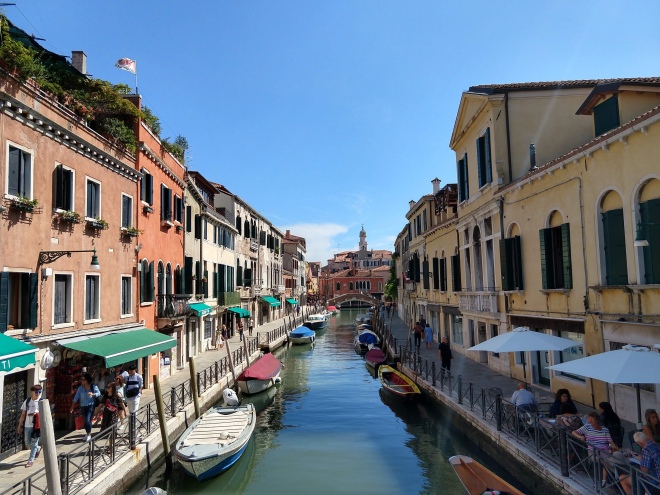
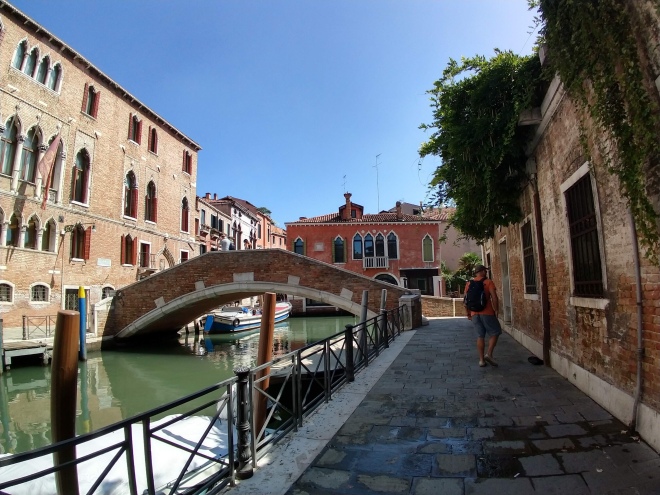
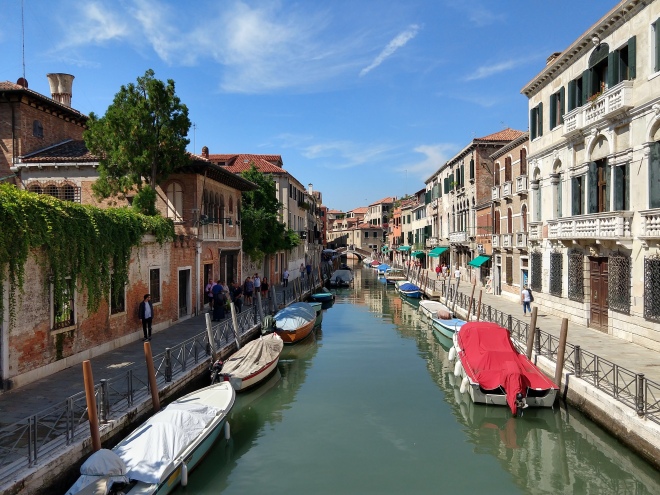
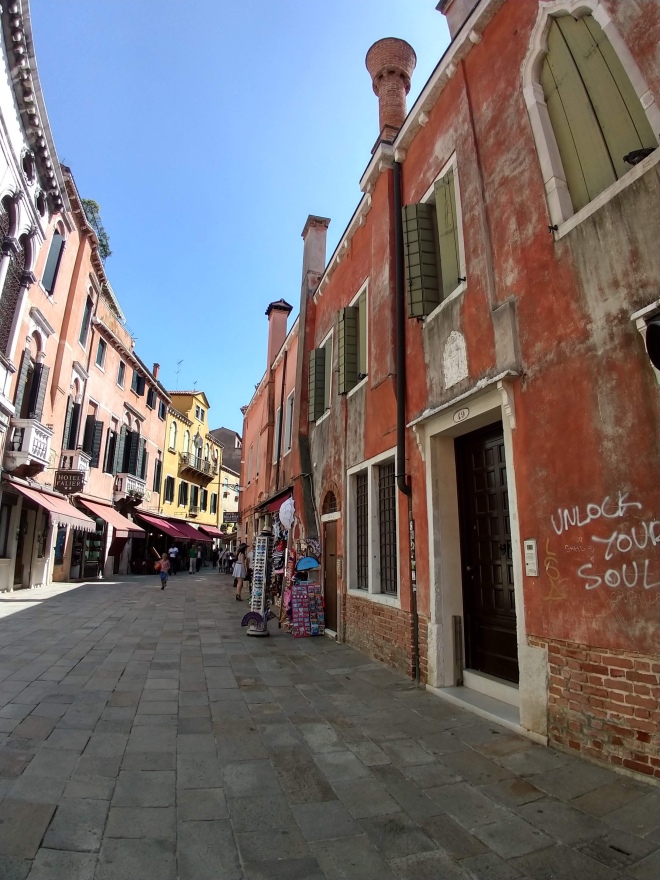
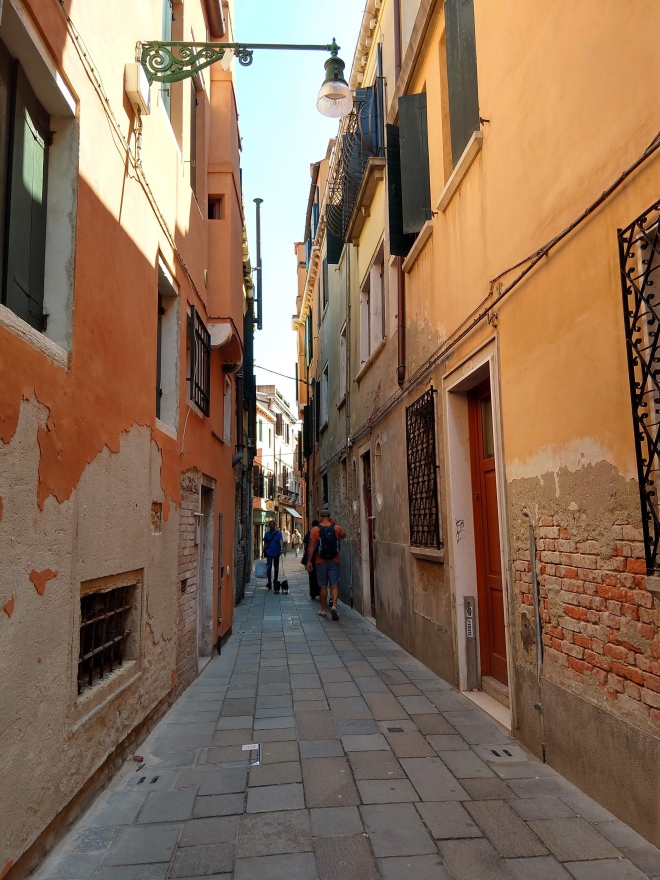
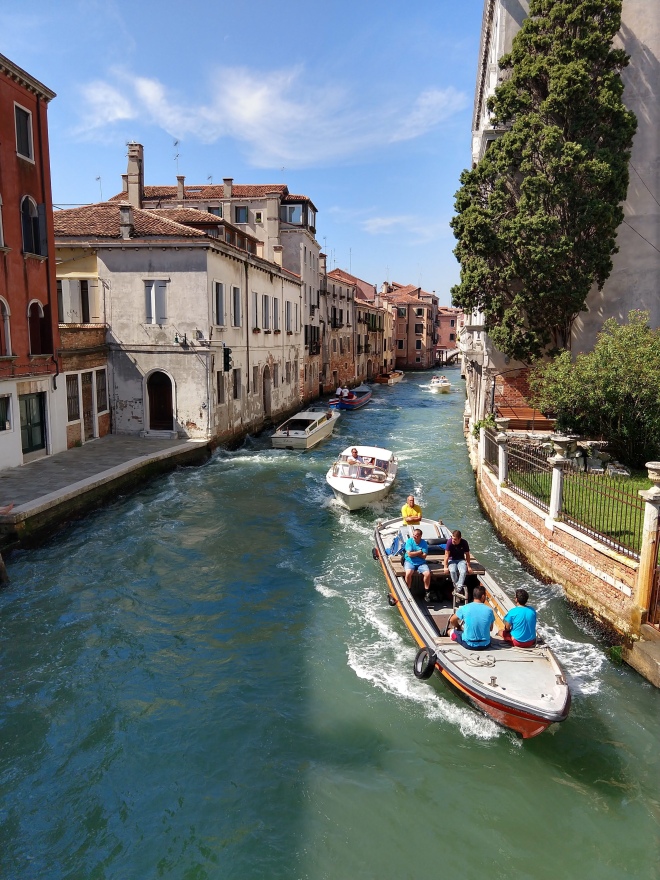
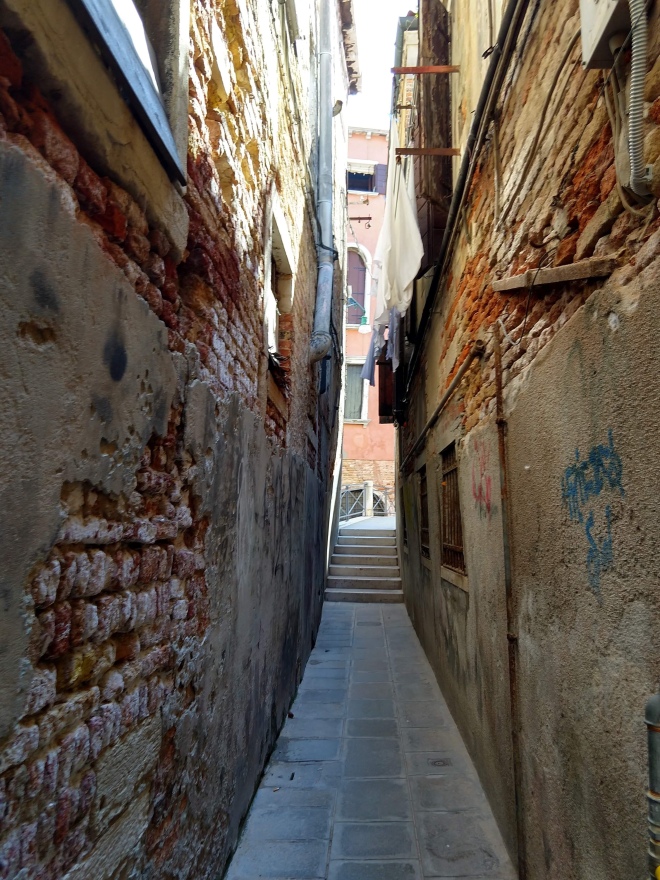
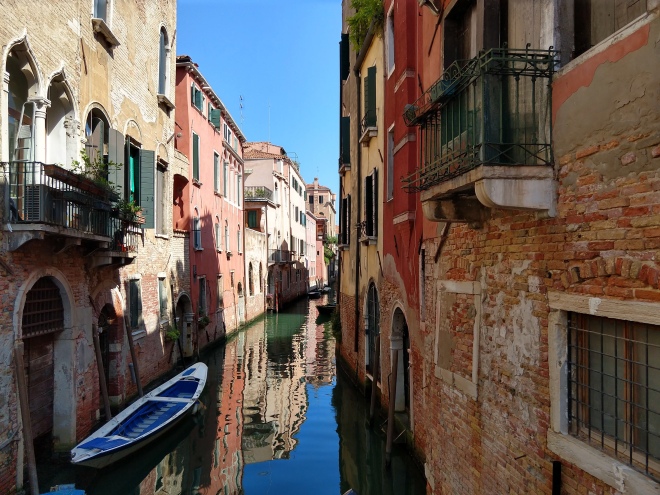
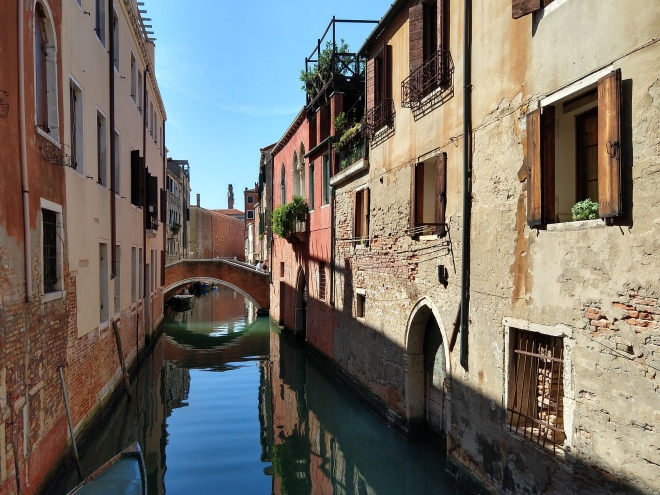
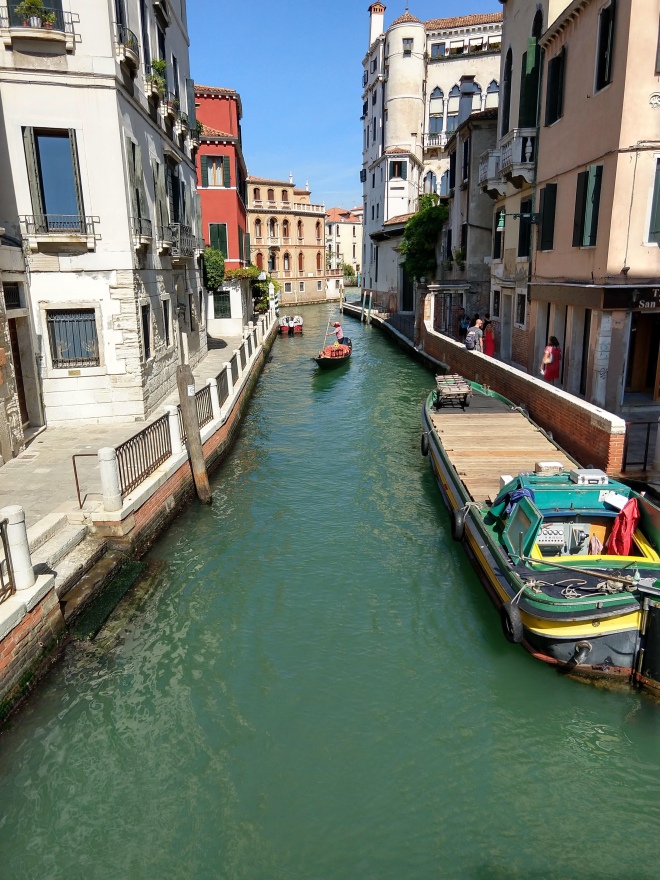
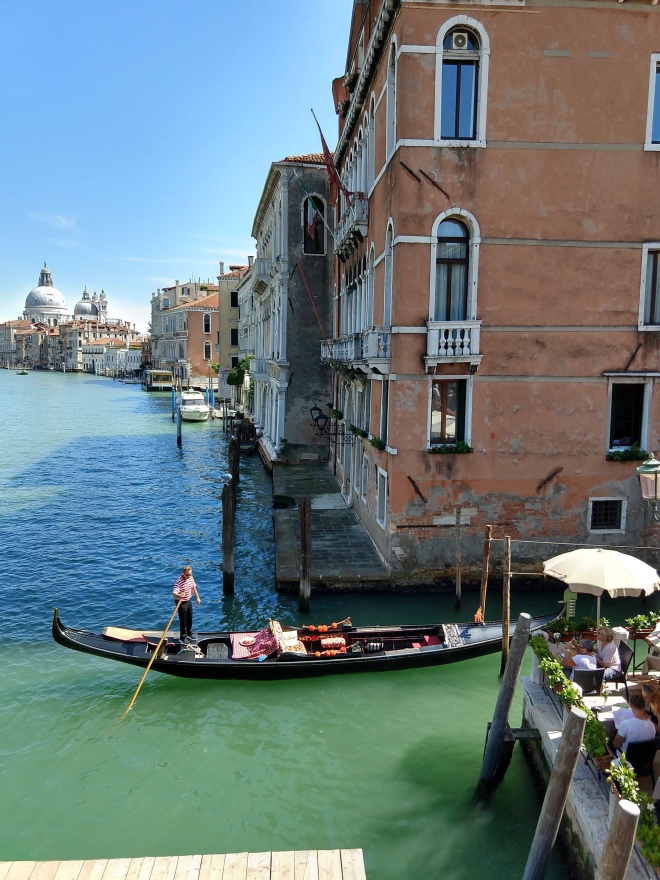
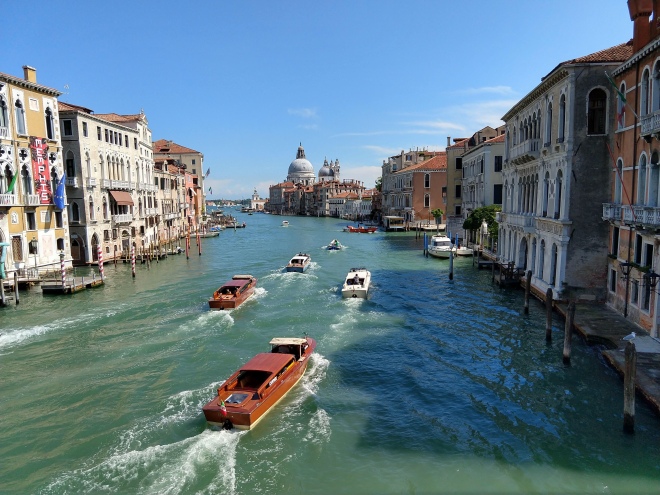
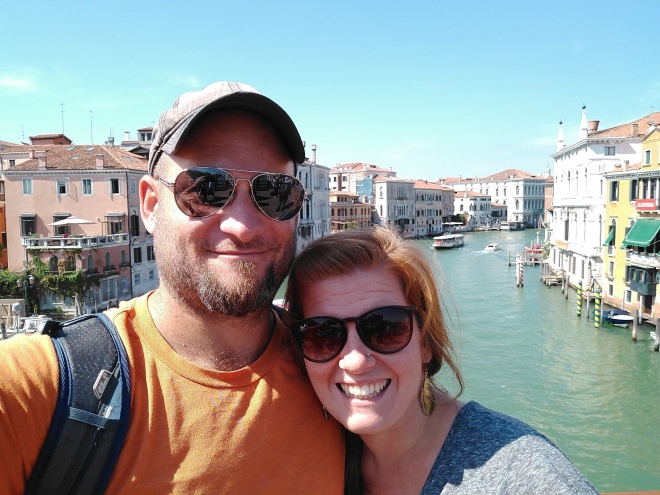
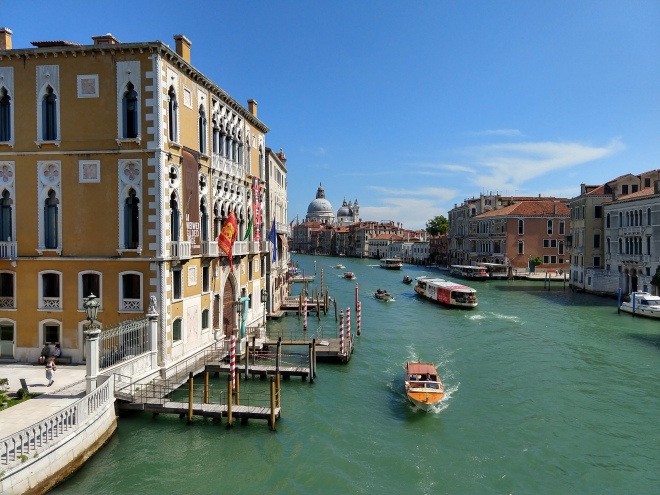
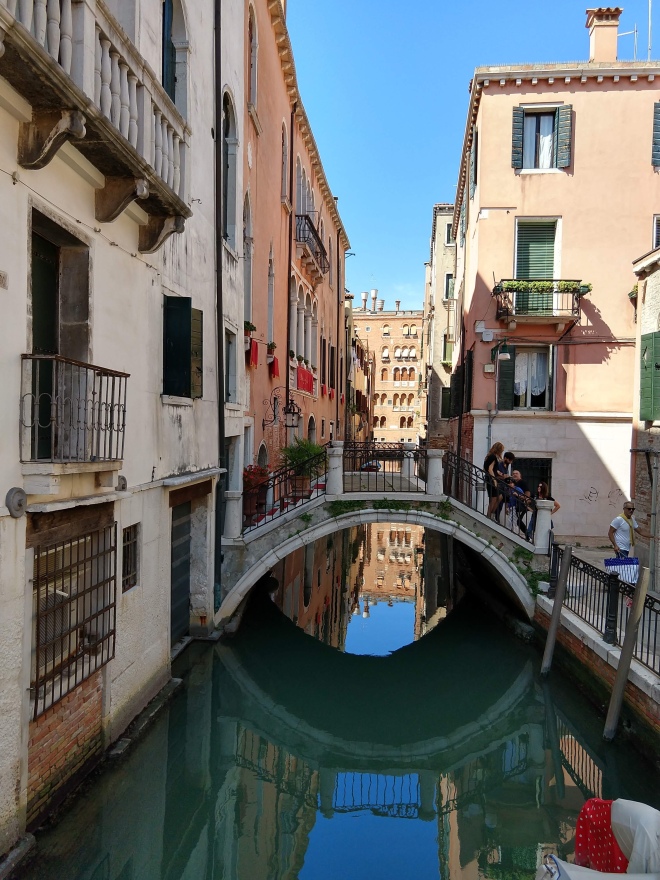
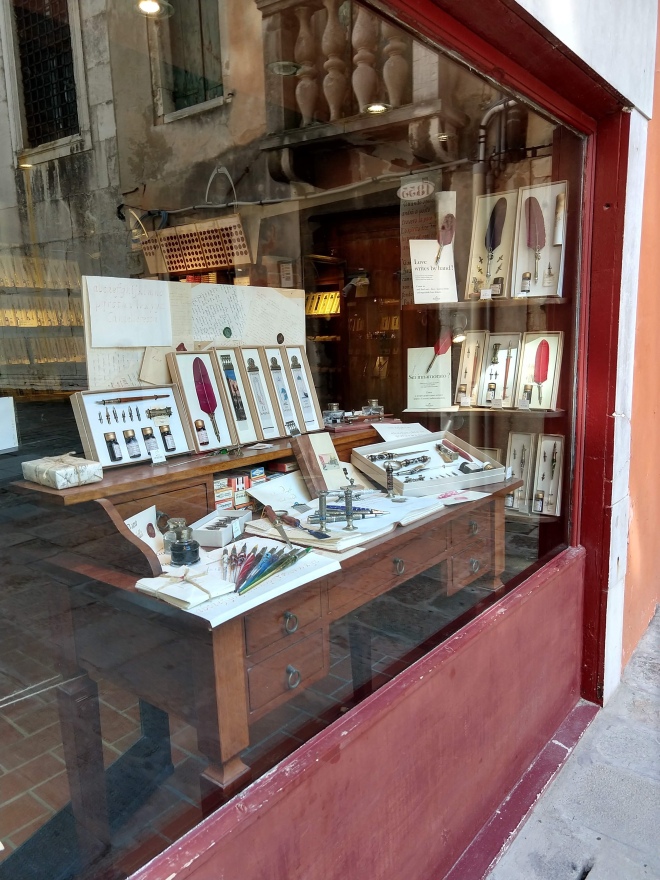
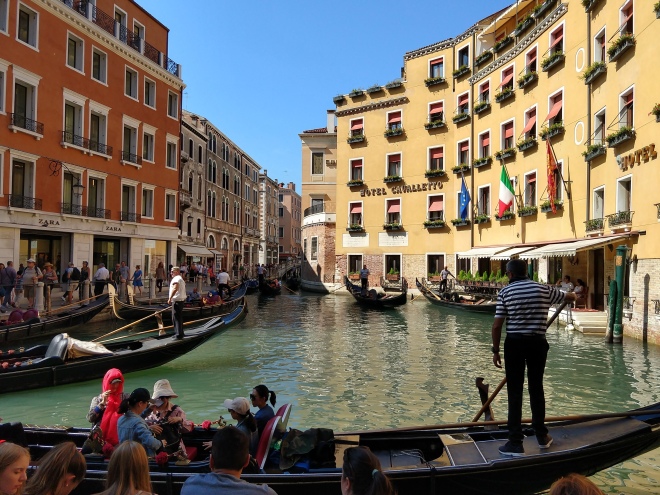
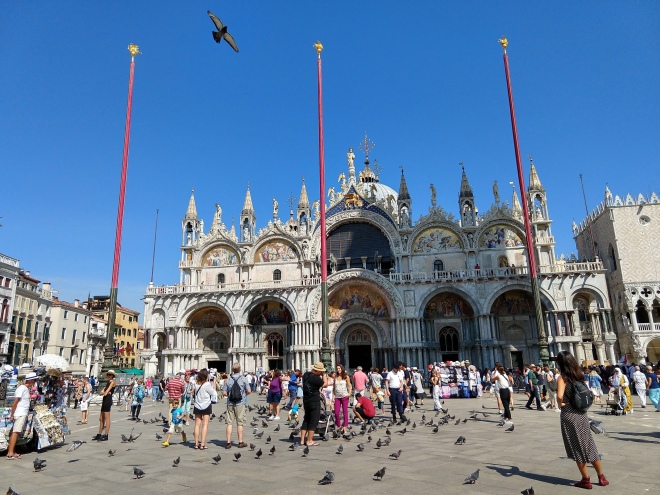

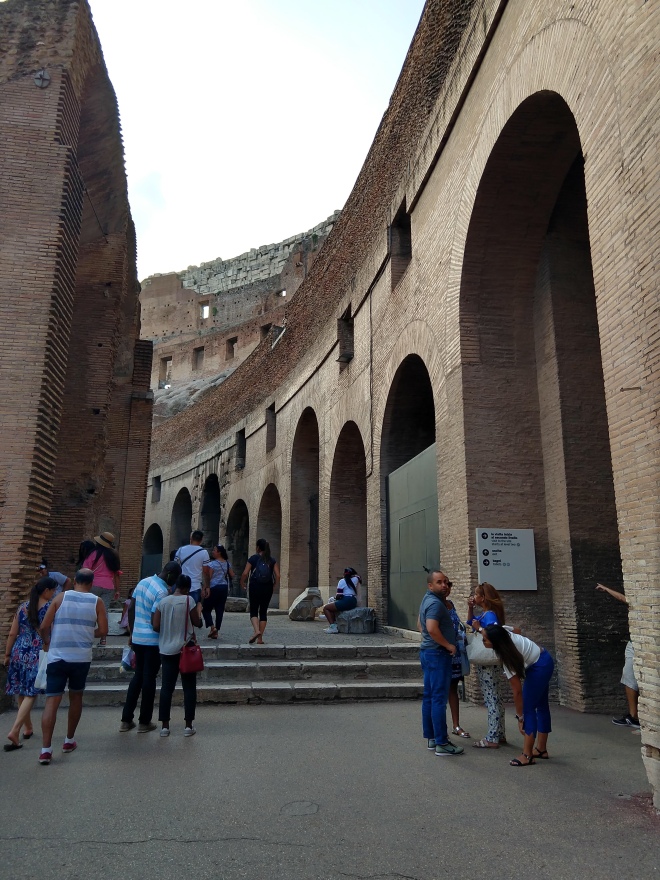
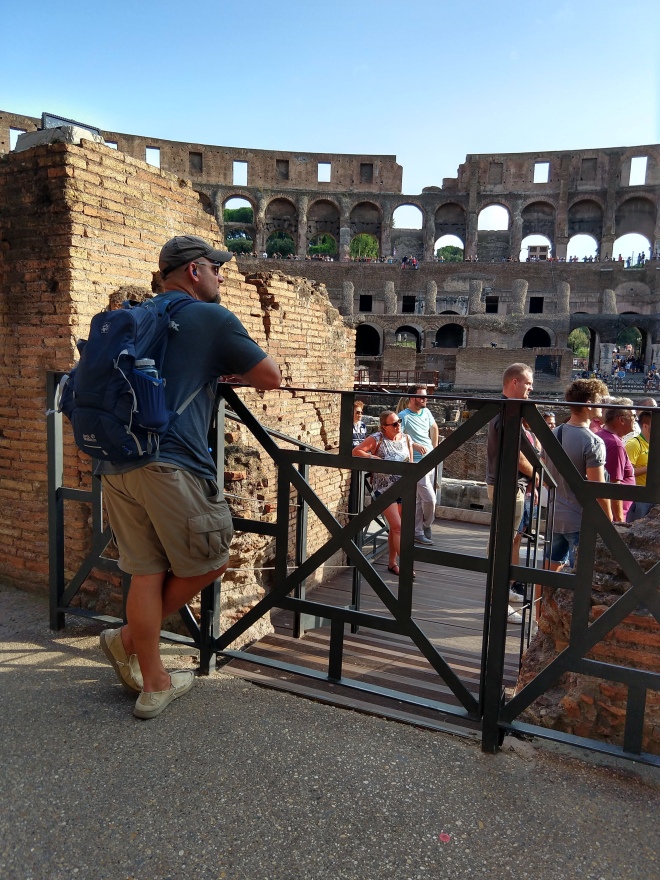
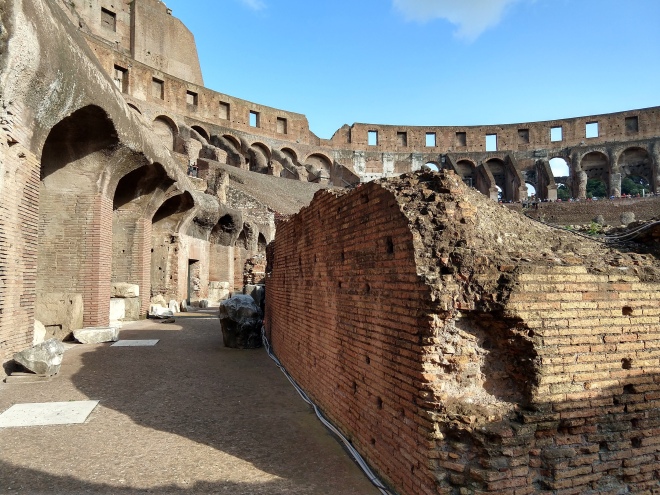
 Panorama of the inside
Panorama of the inside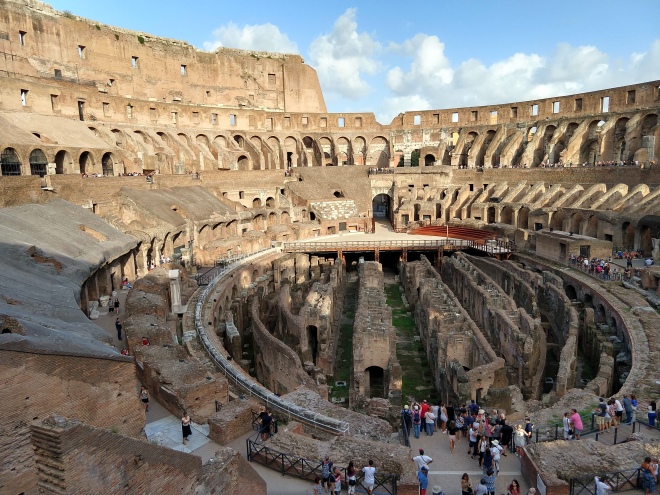
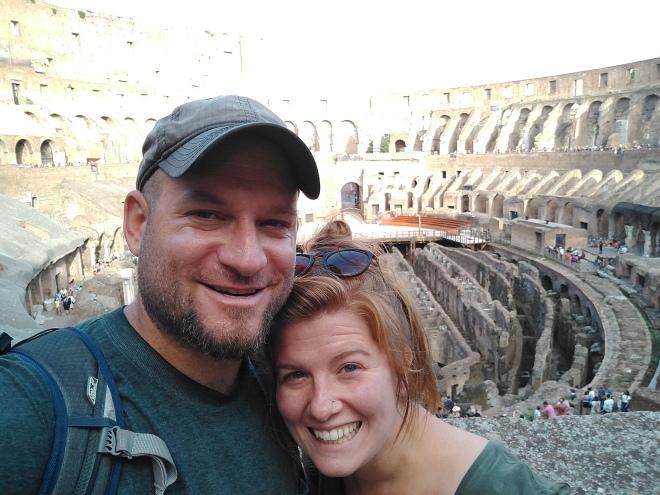
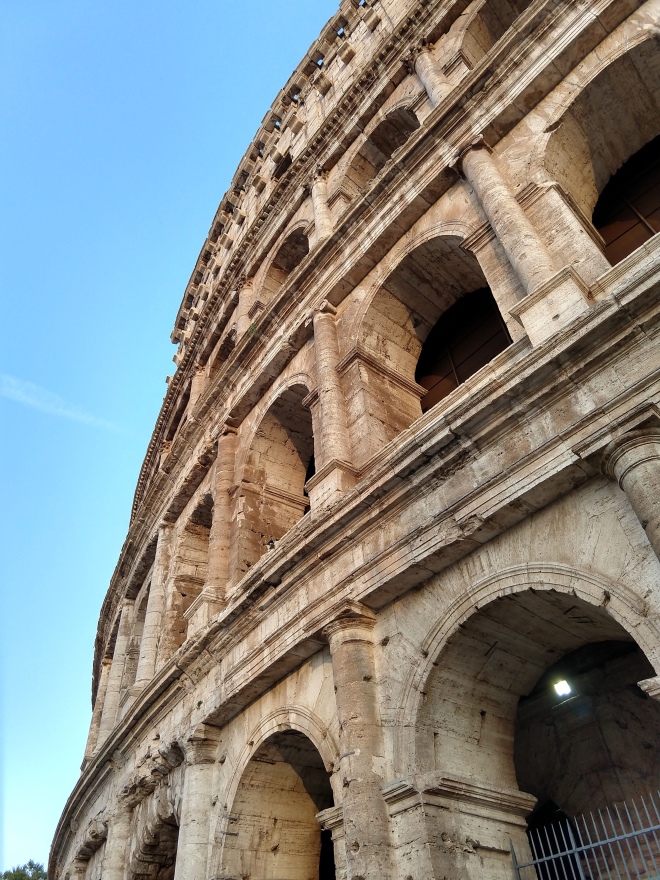
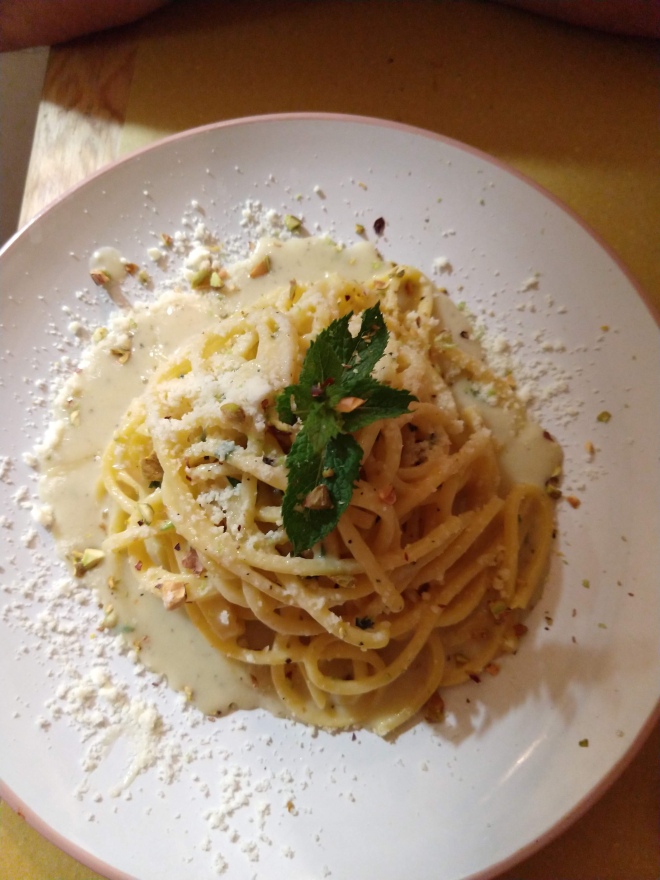
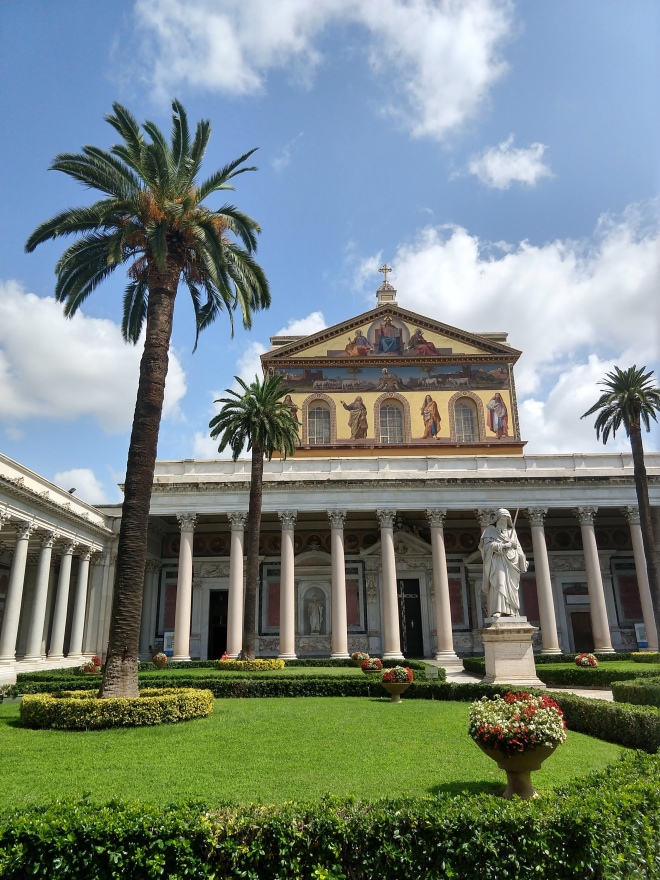
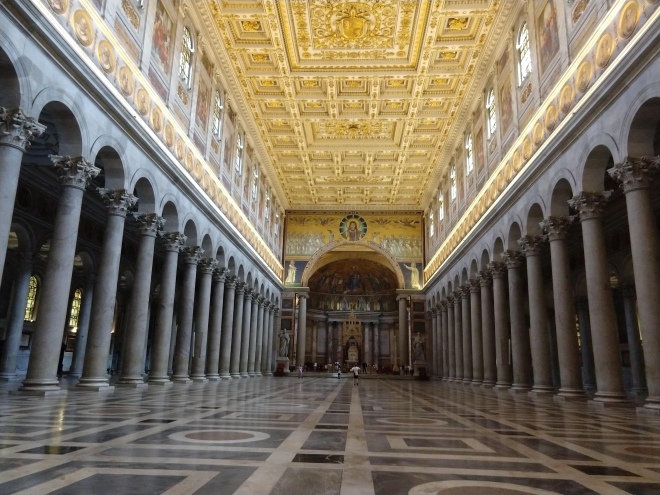
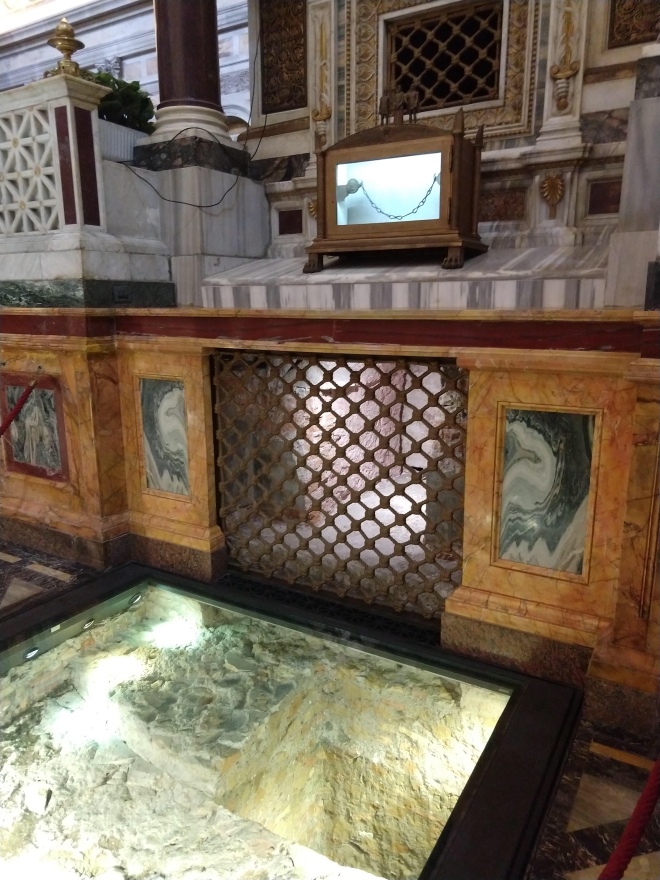
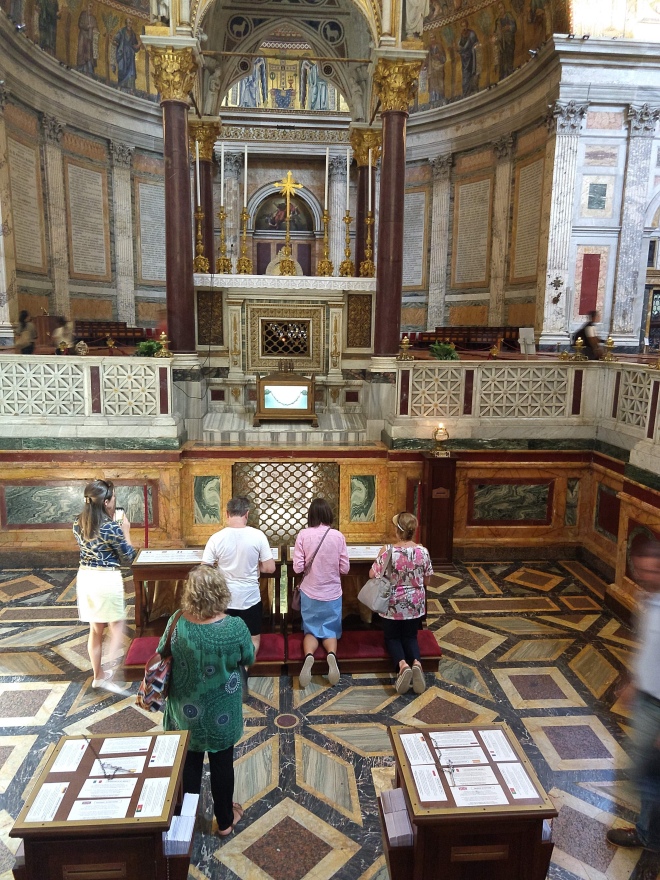
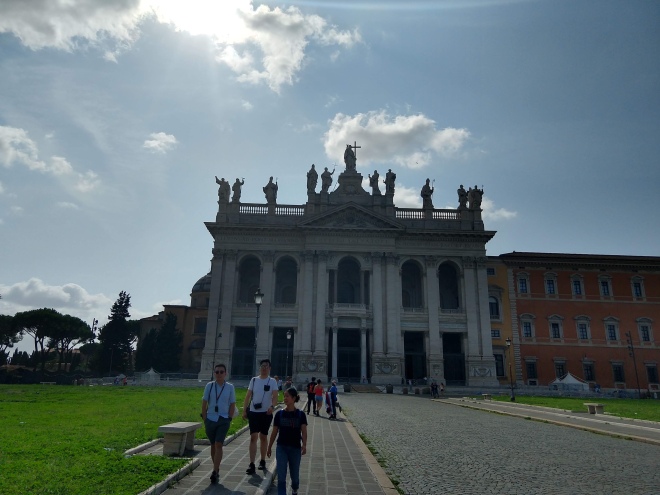
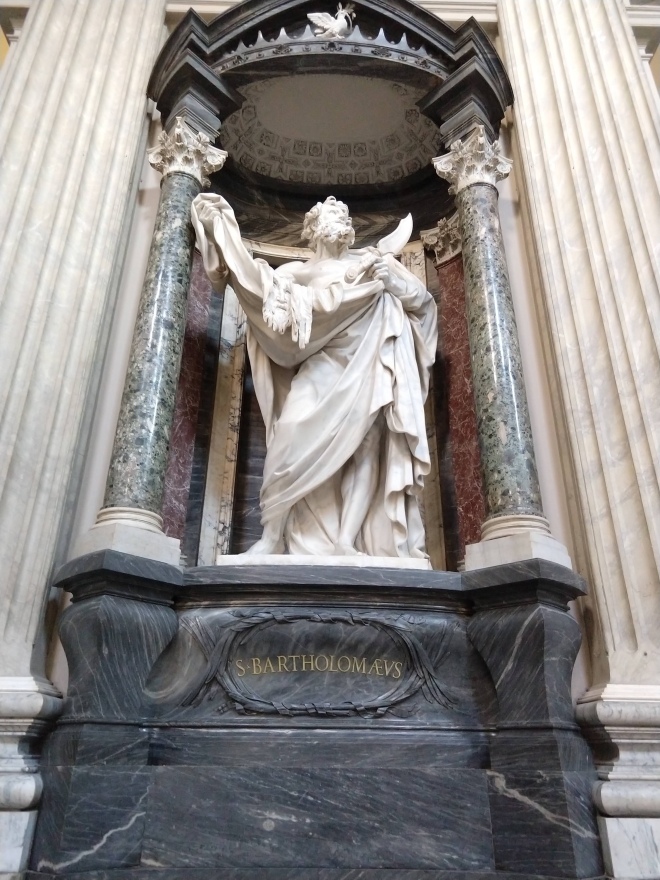
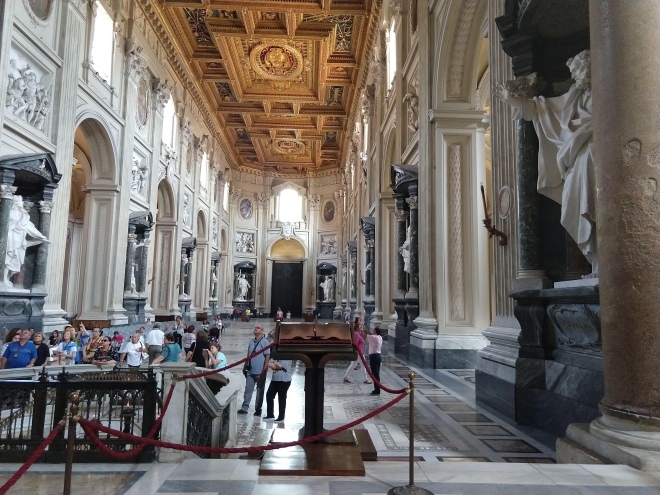
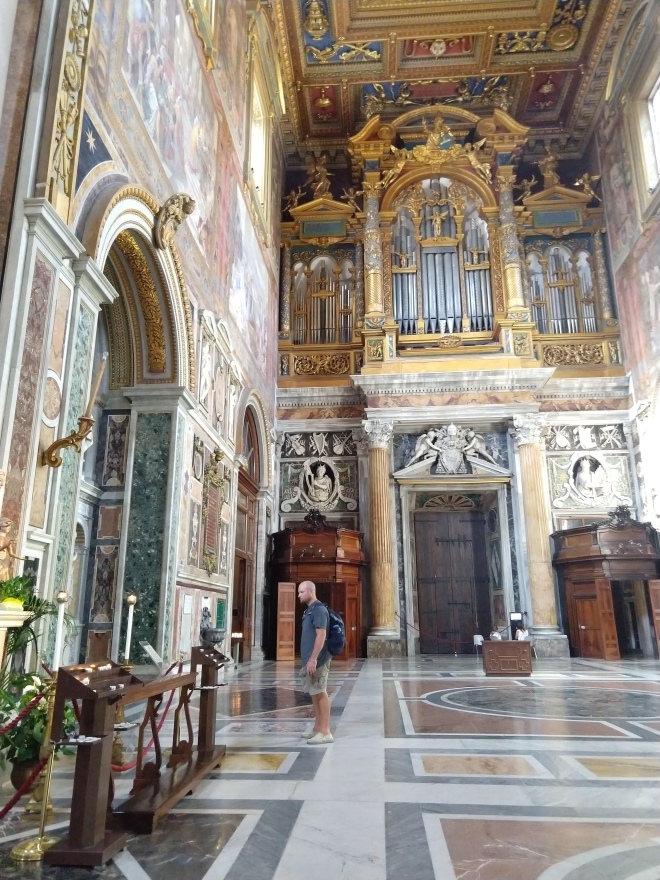
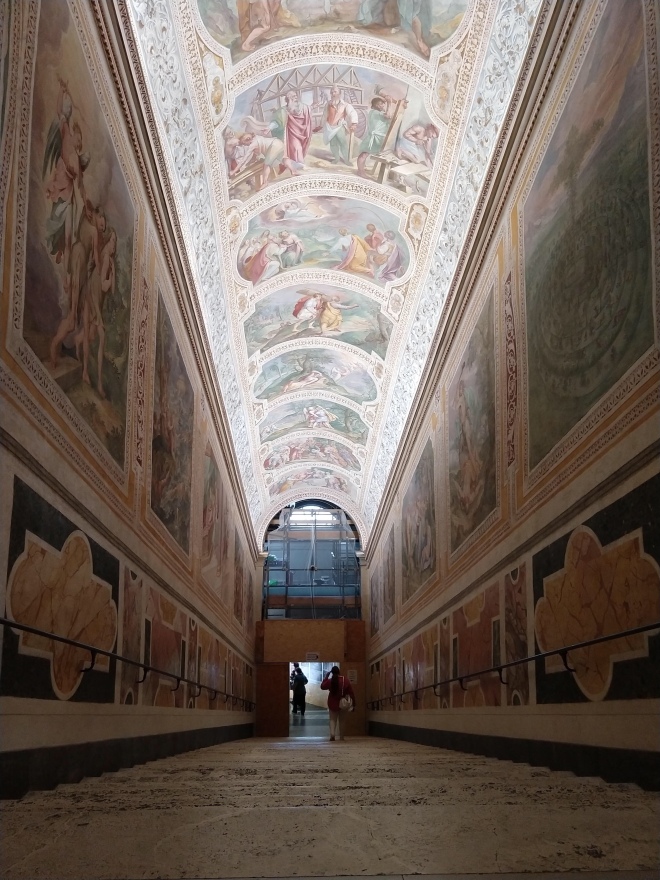
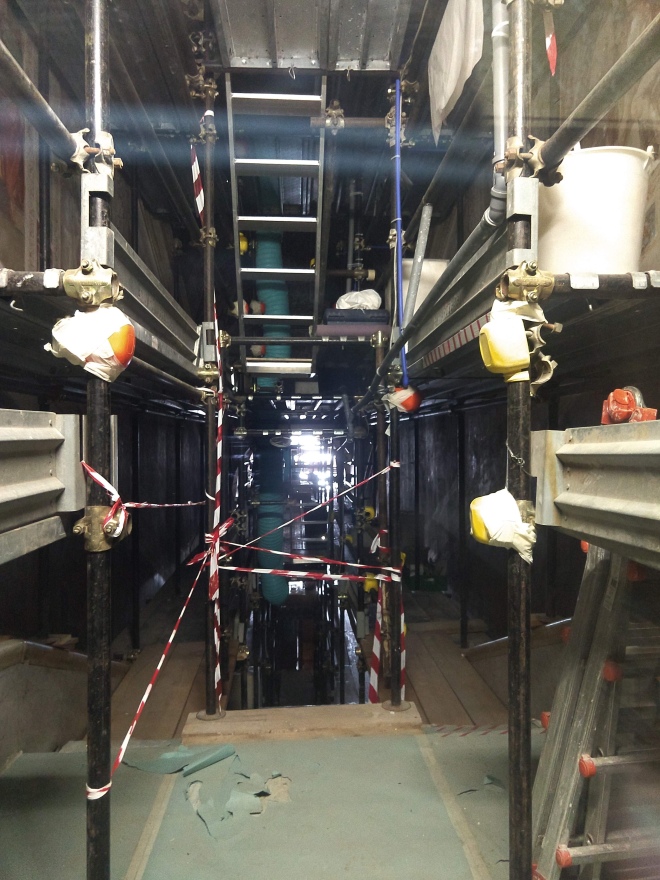

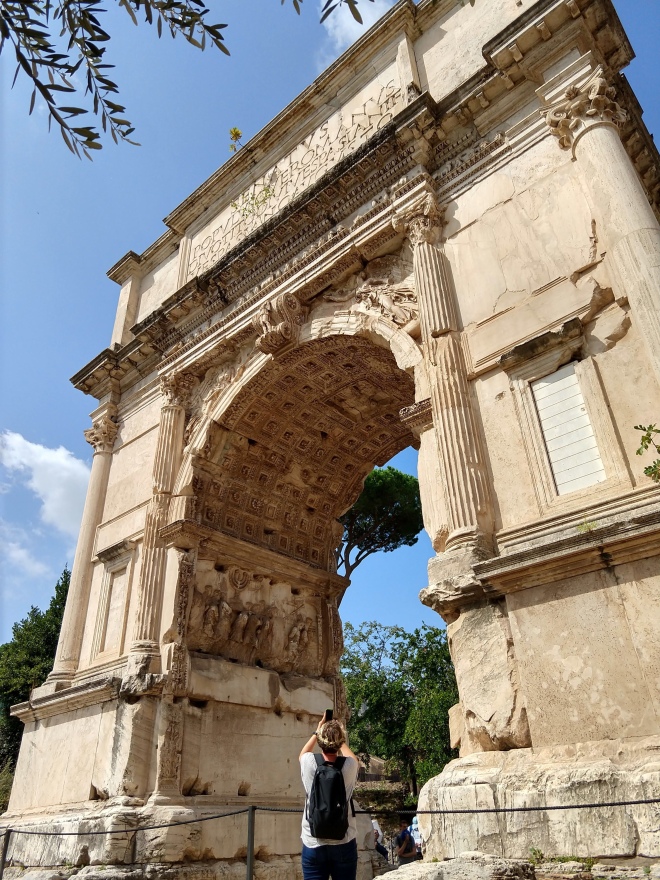
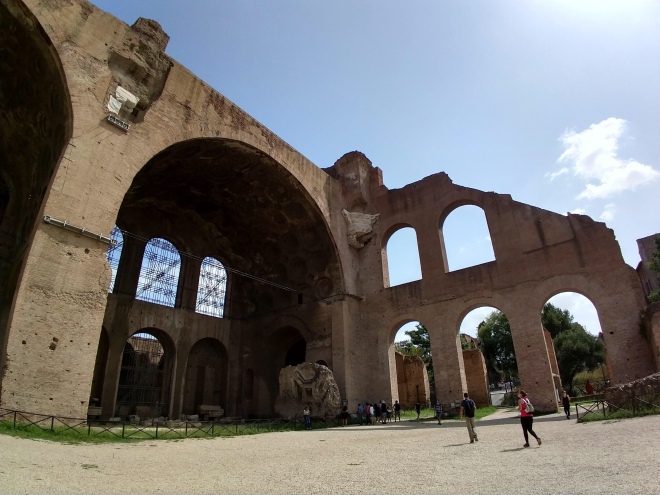
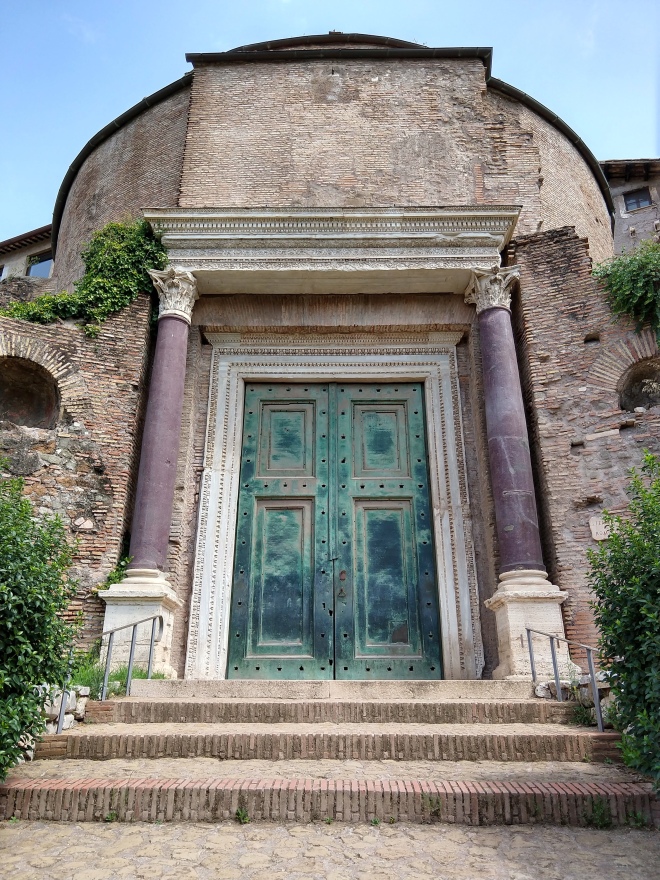
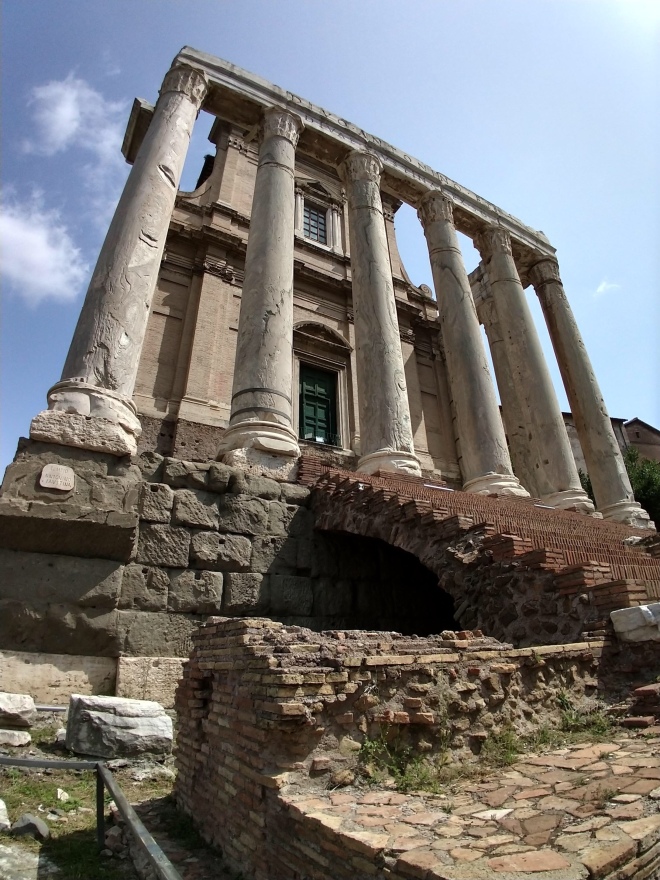

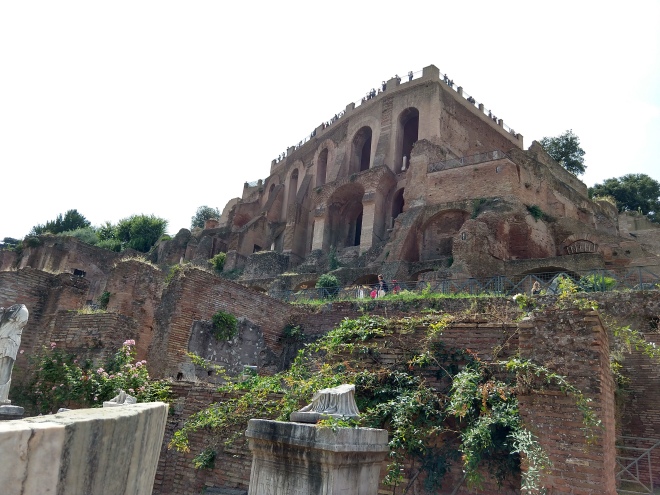
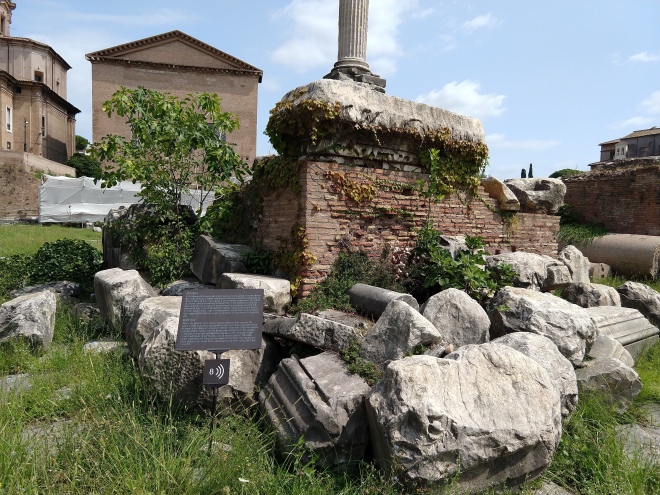
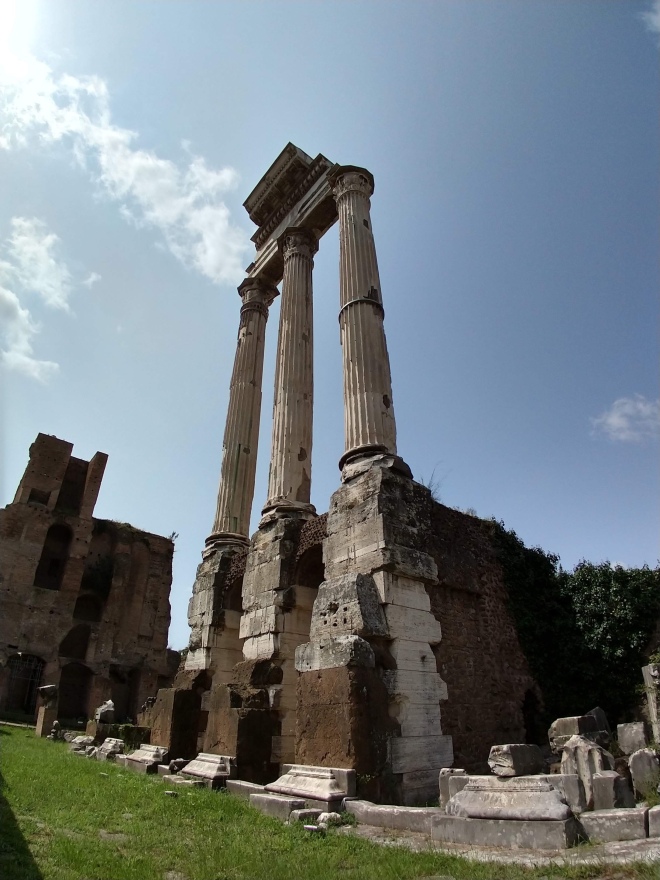
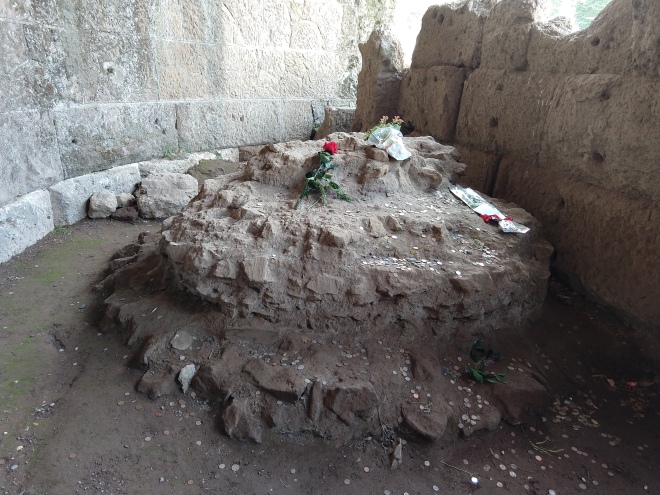
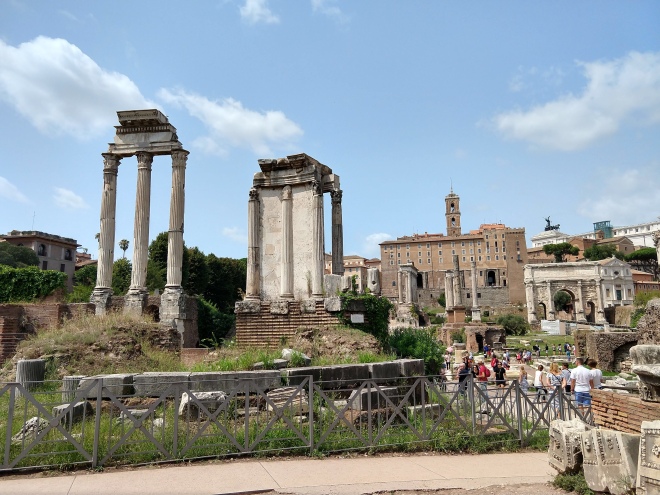

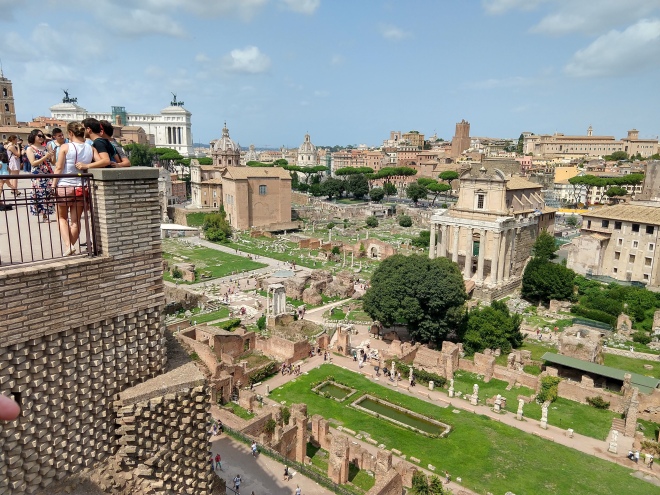
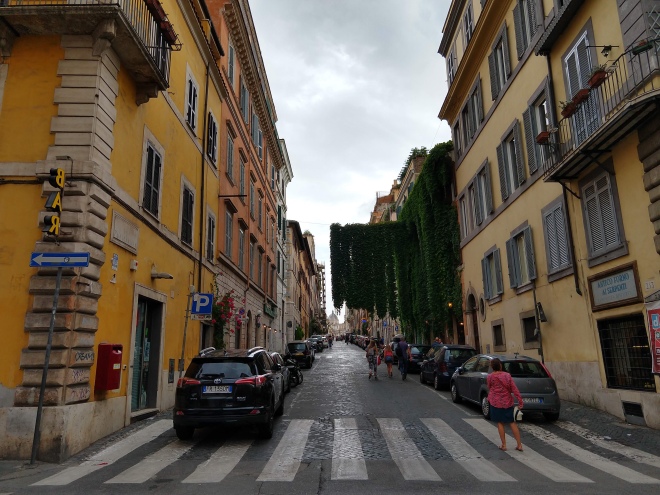
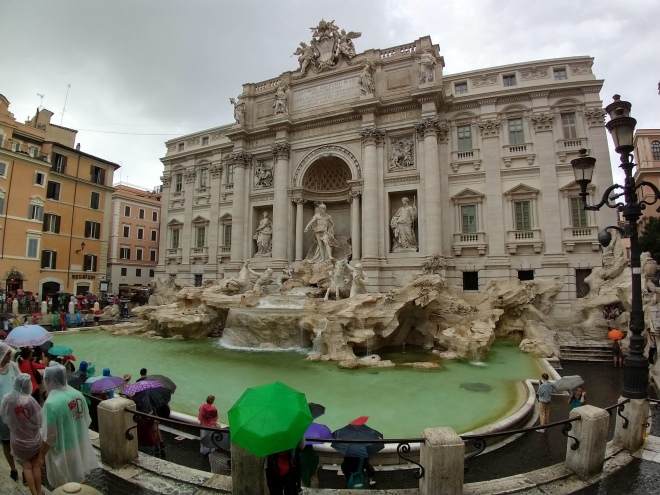
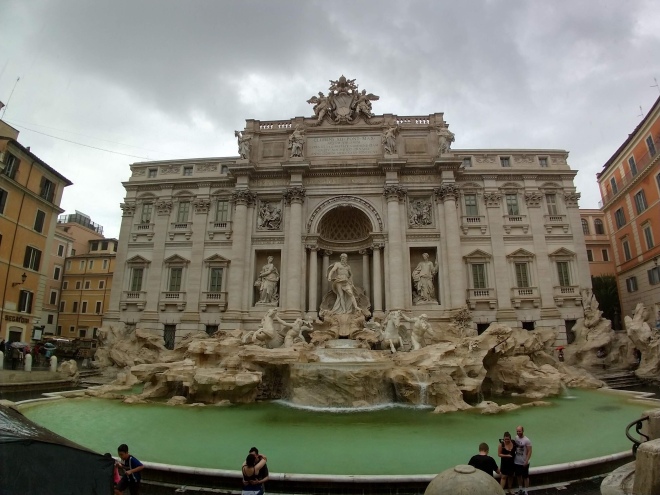
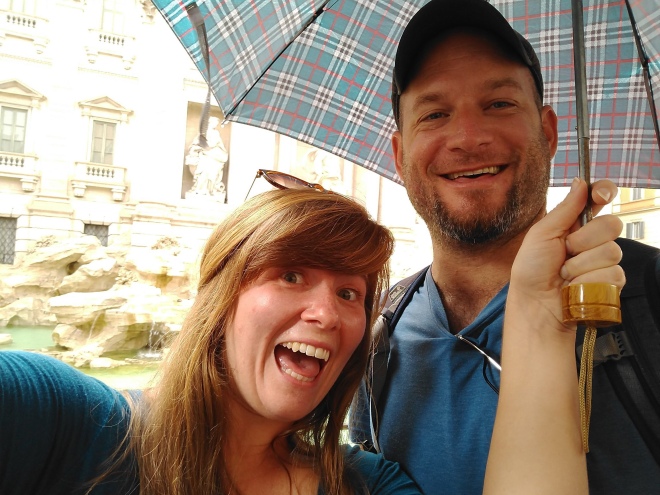
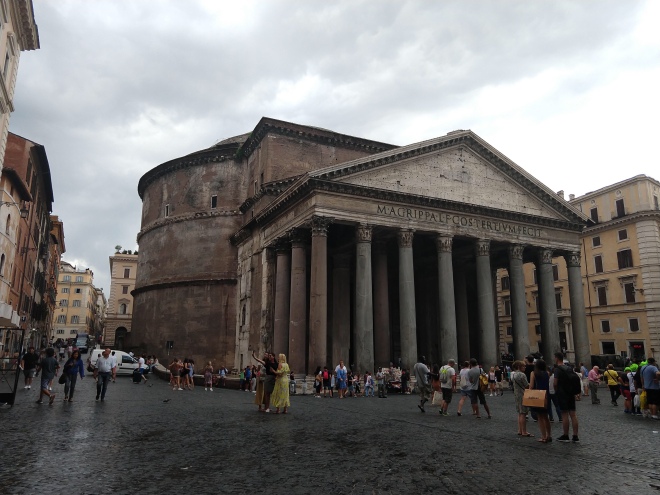
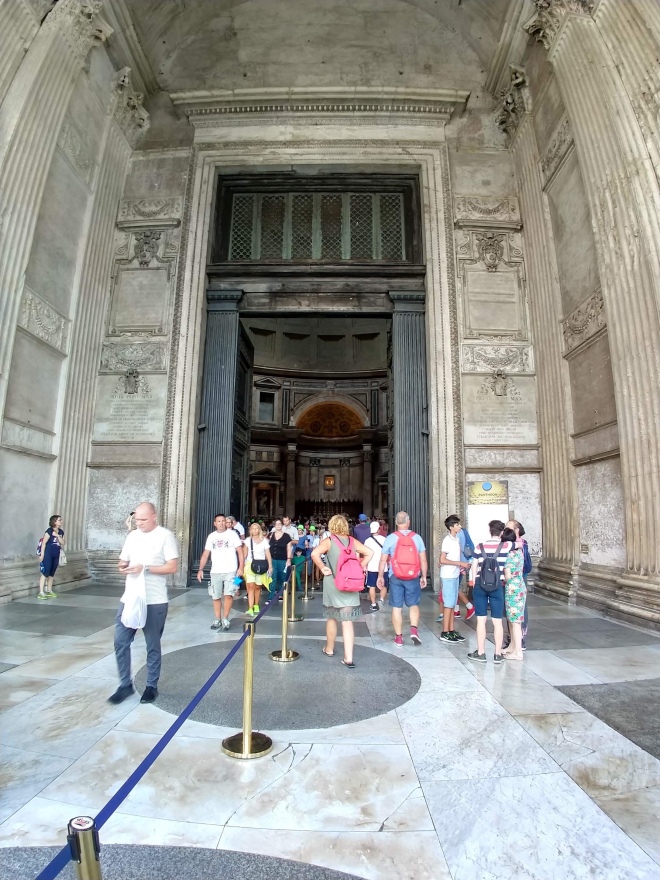

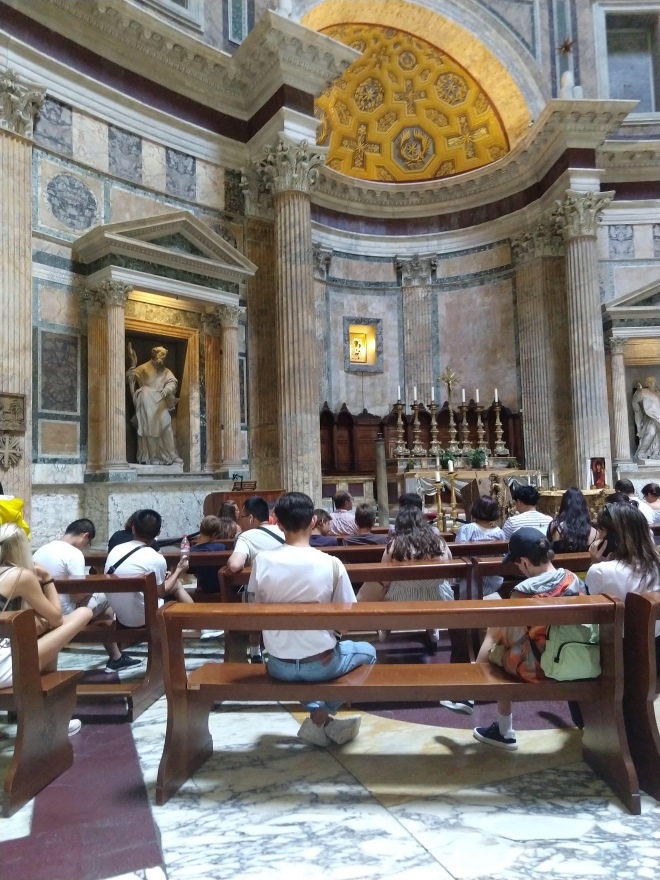
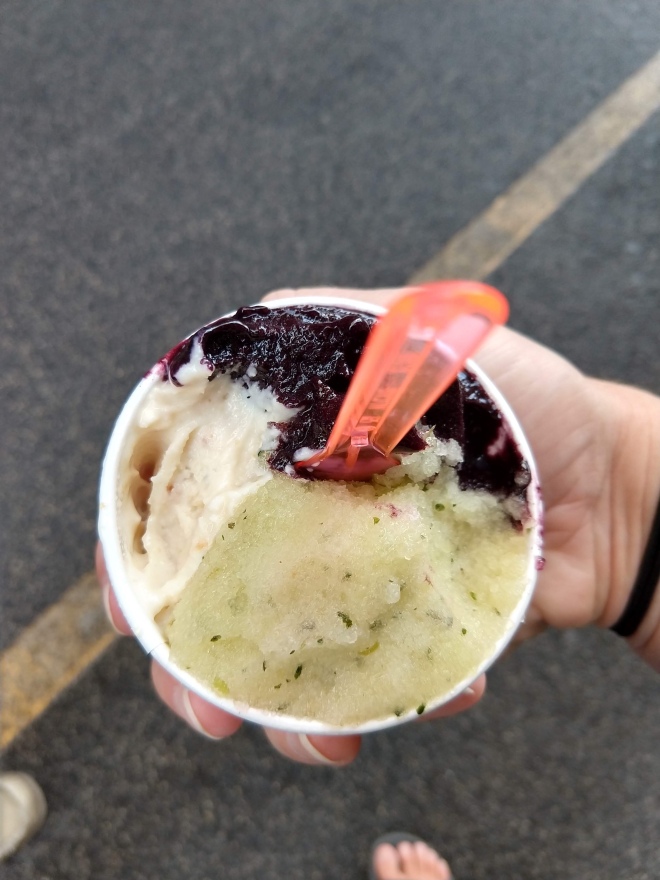
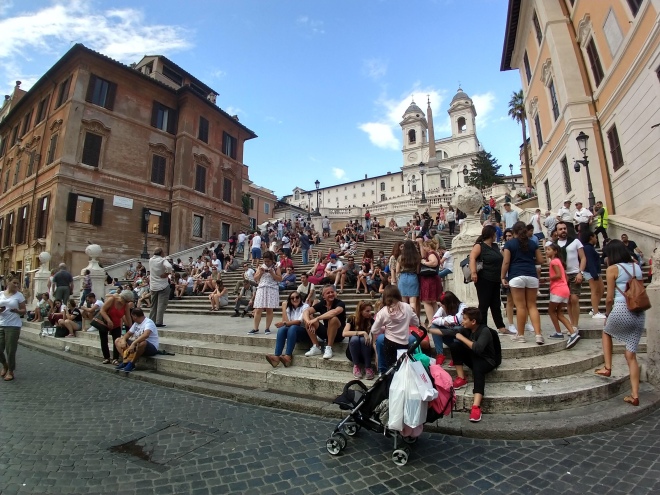
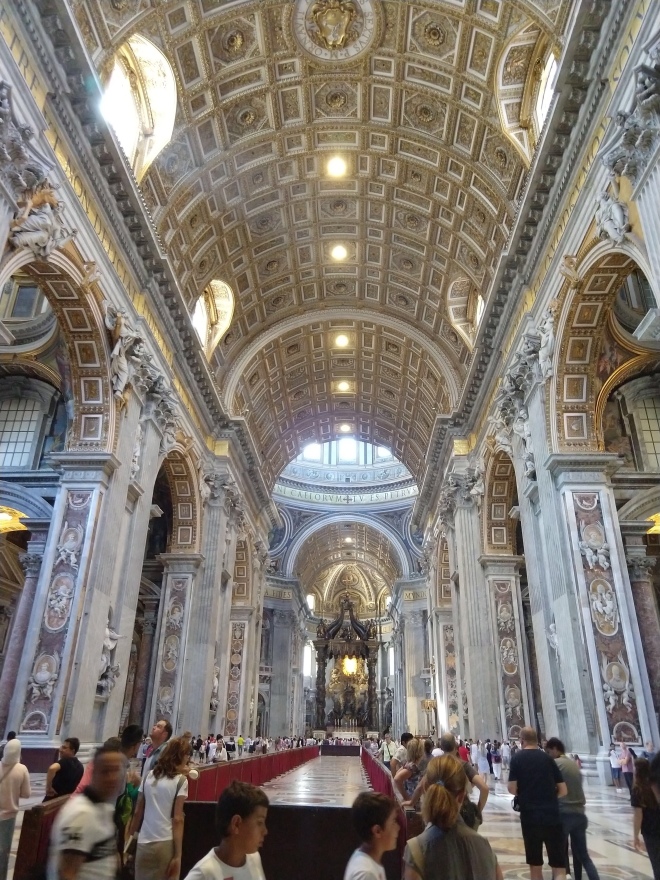
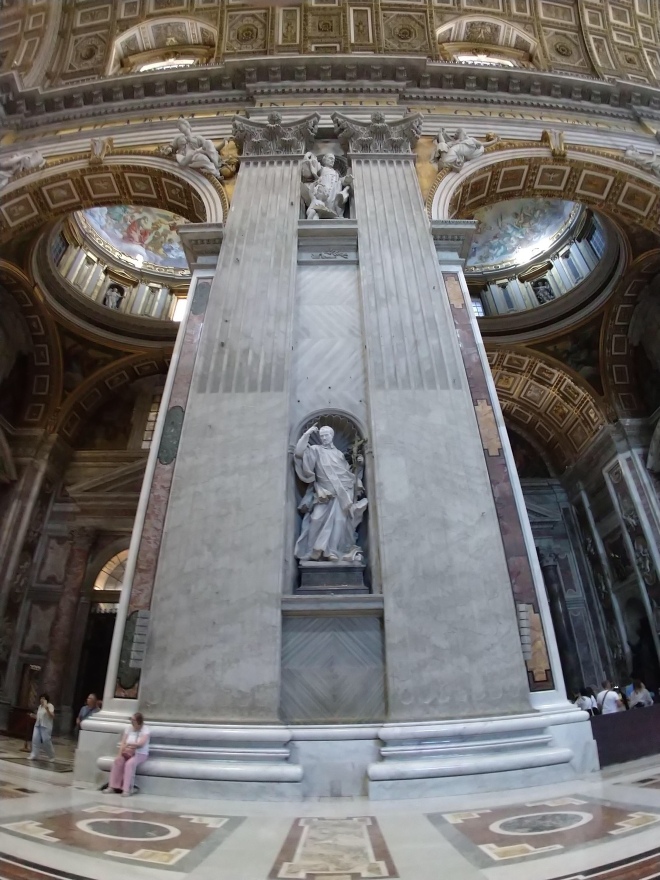
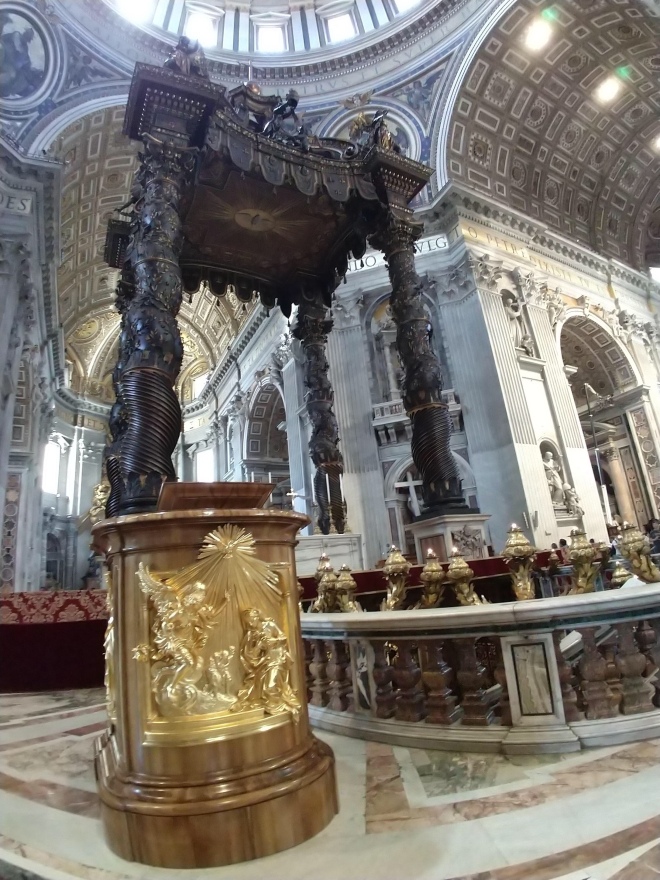
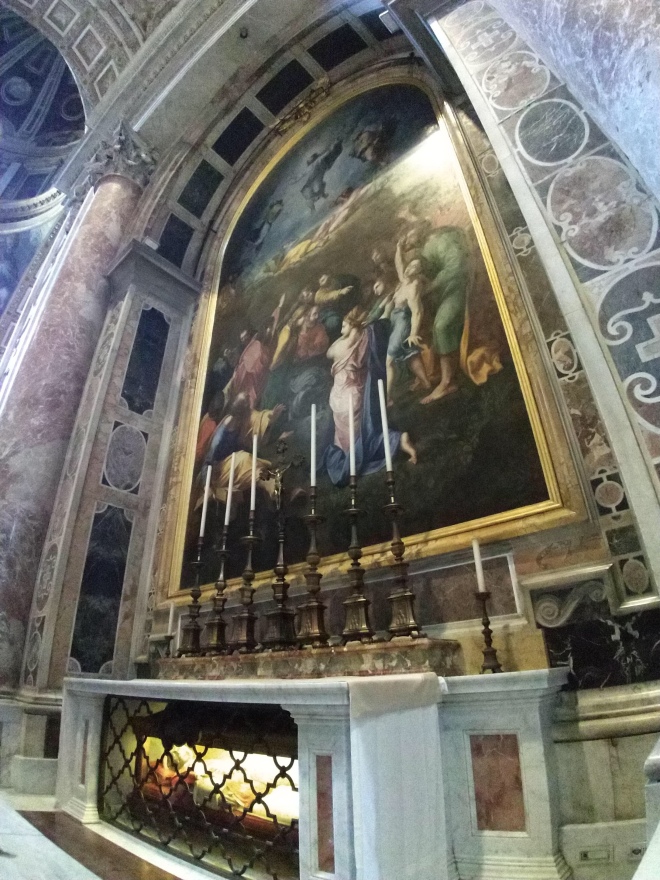
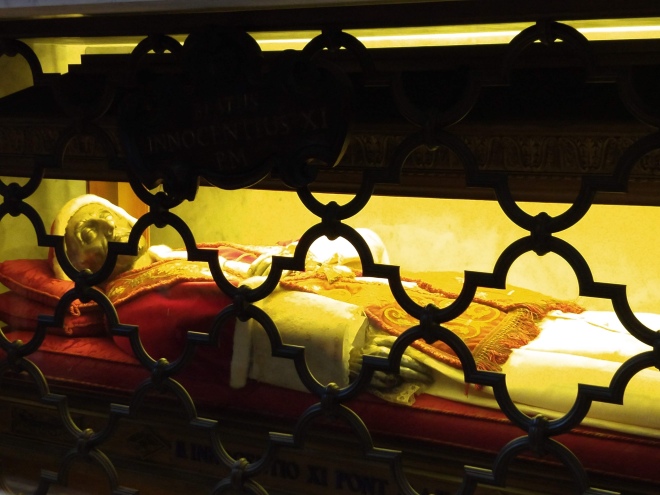
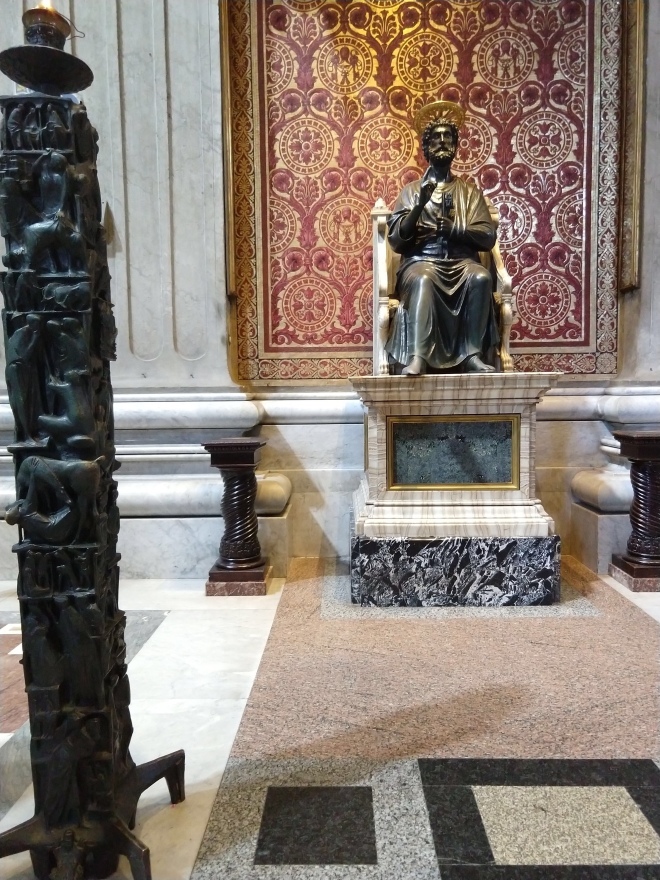
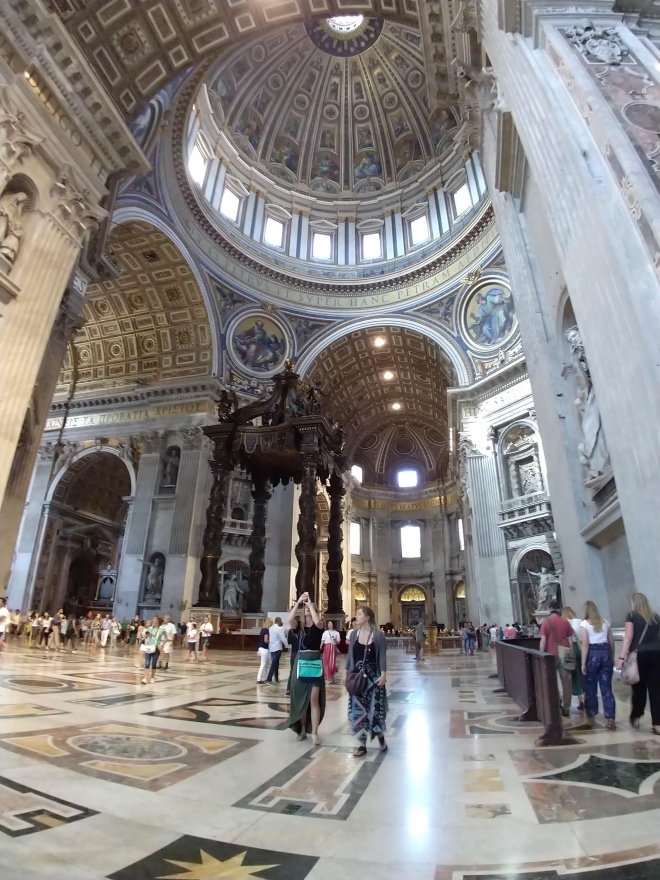
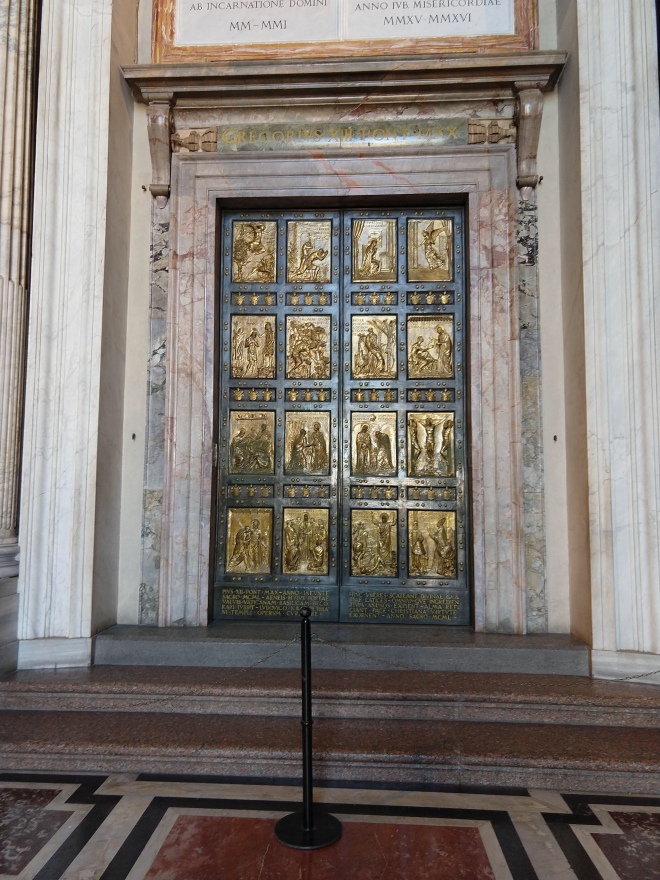
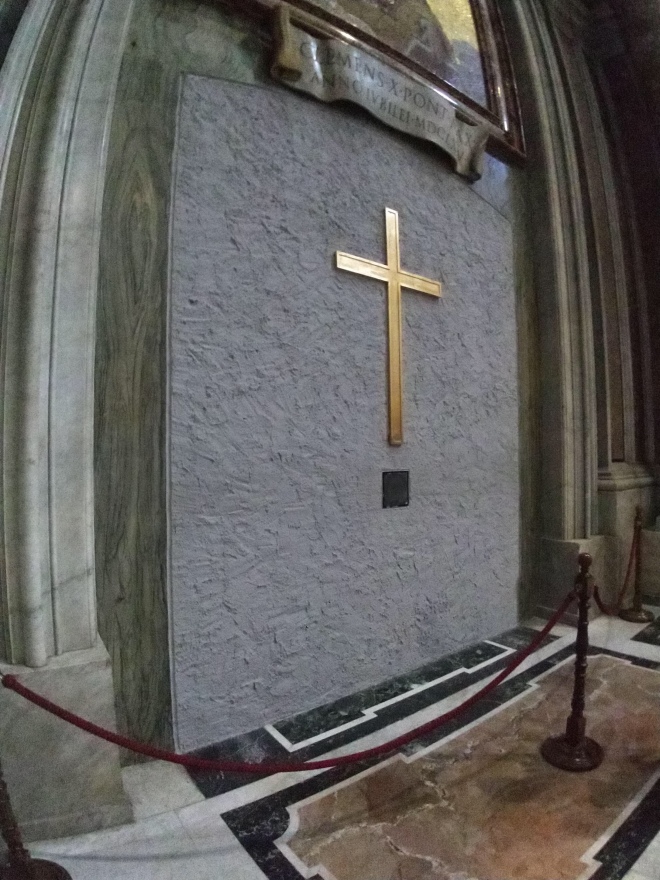 The inside of the Holy door remains bricked until it’s time for it to be used.
The inside of the Holy door remains bricked until it’s time for it to be used. 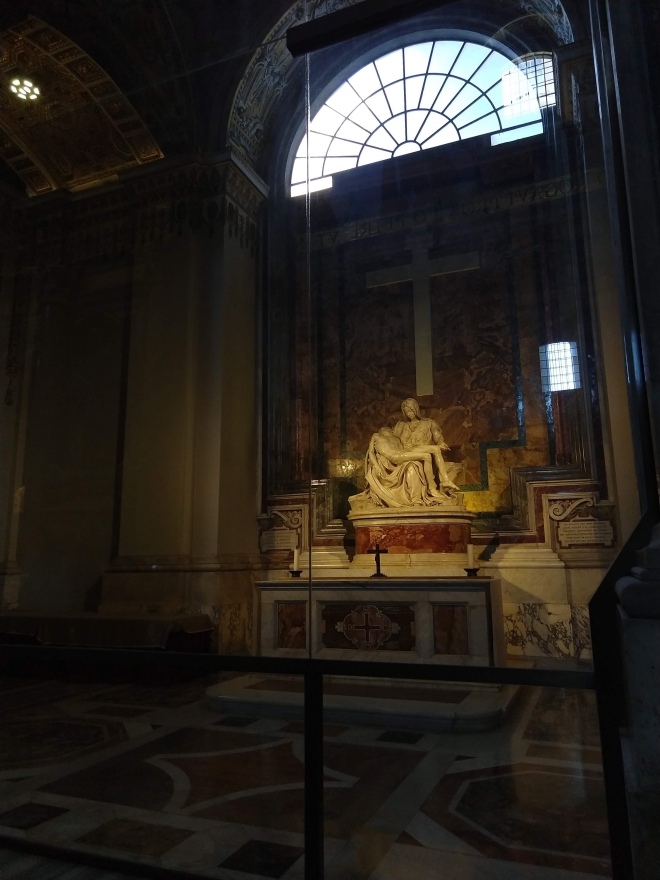
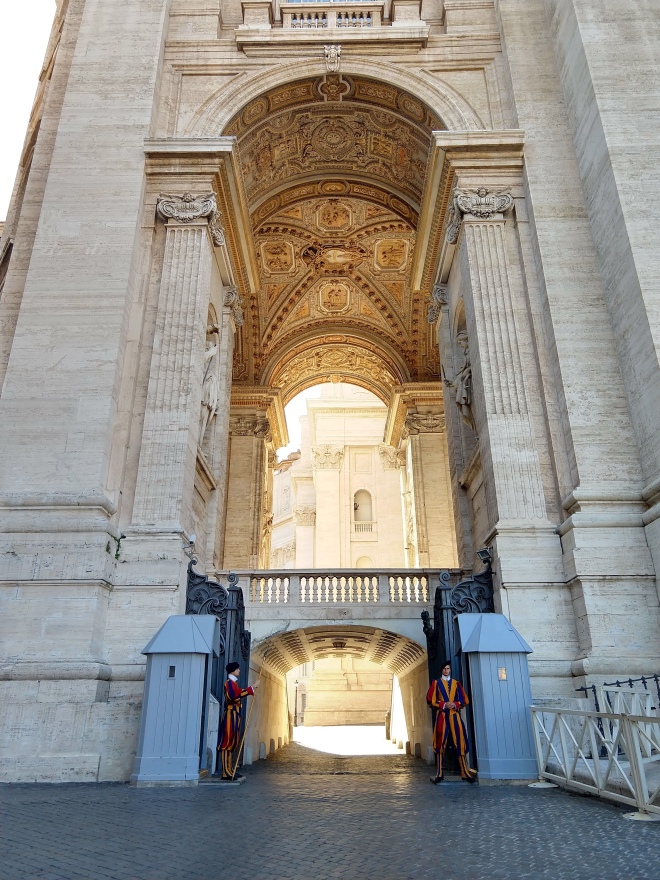
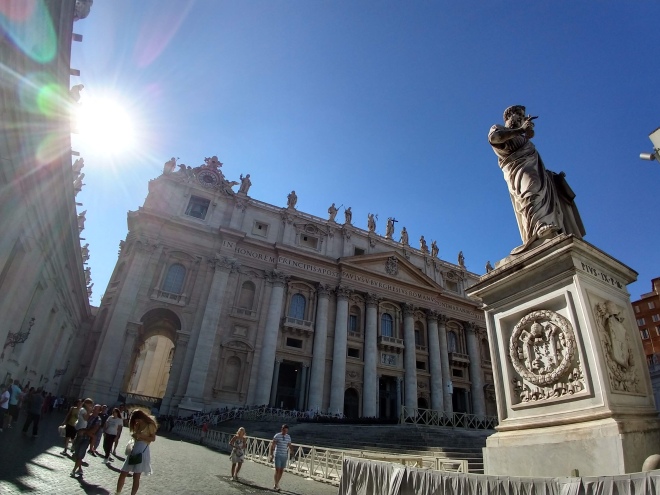
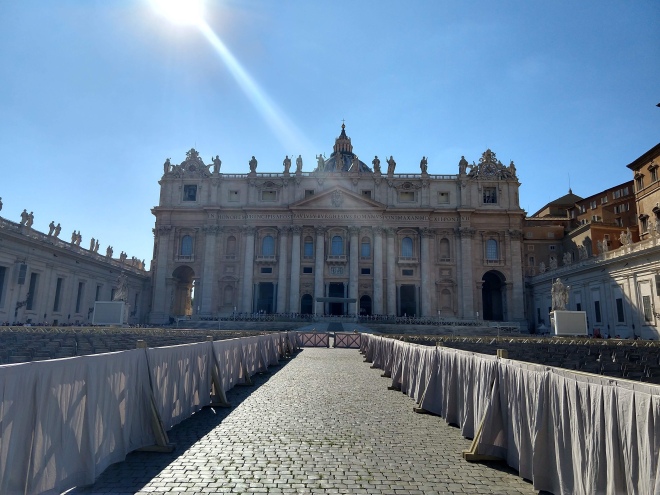
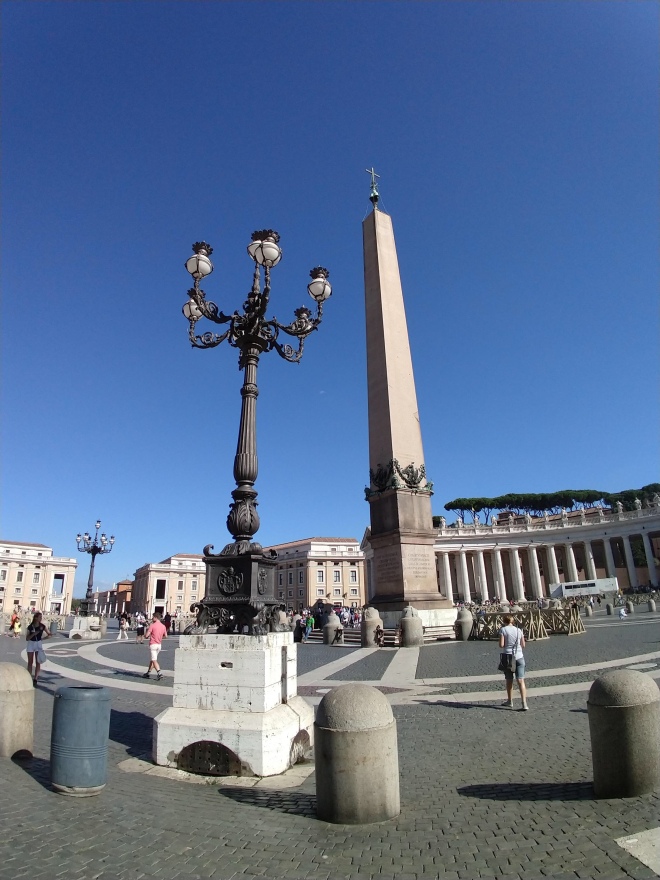
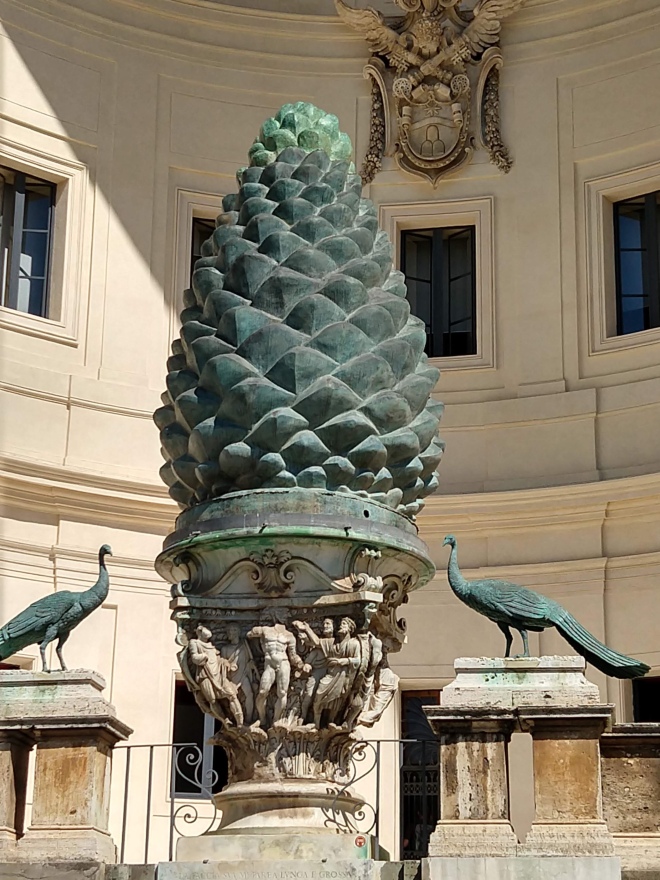
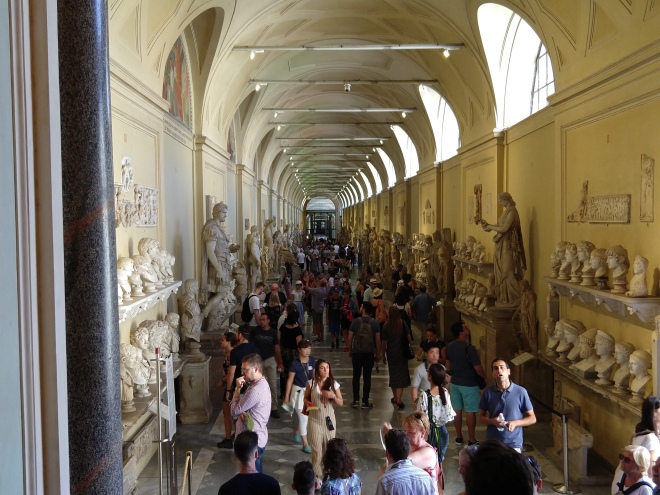
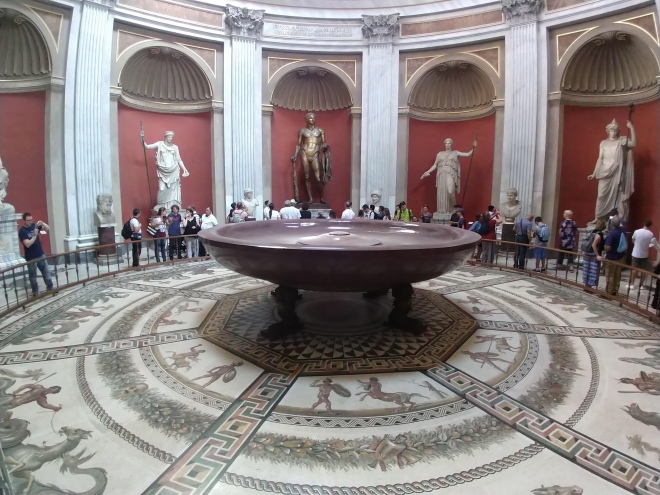
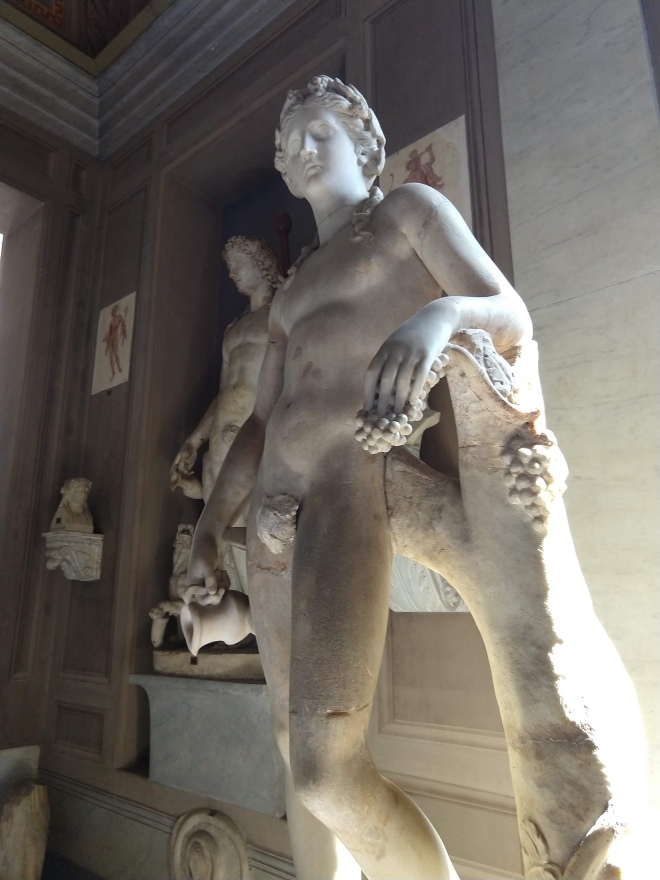
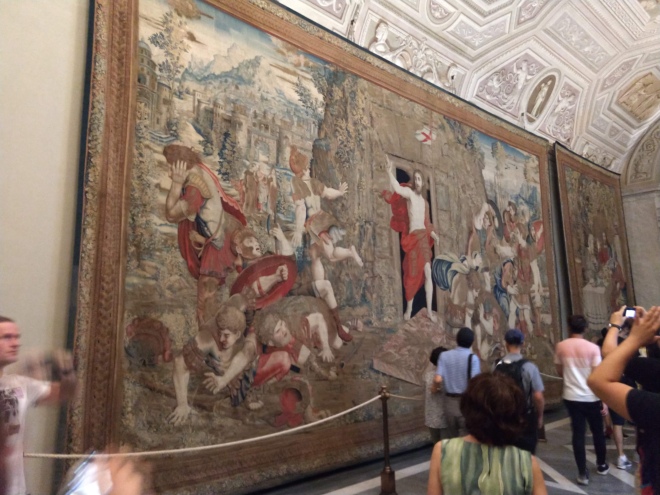

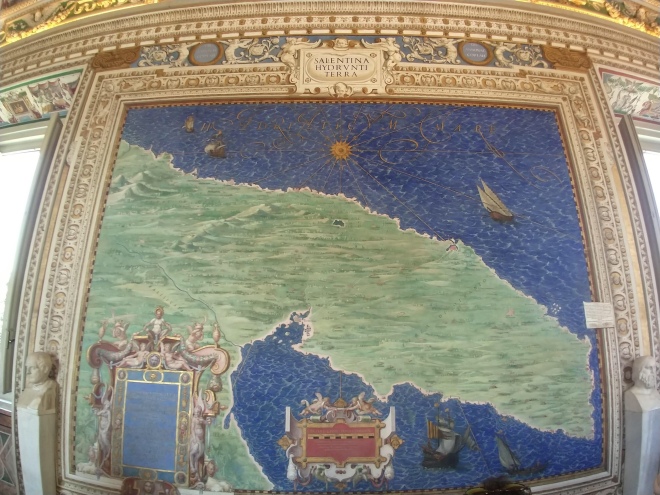
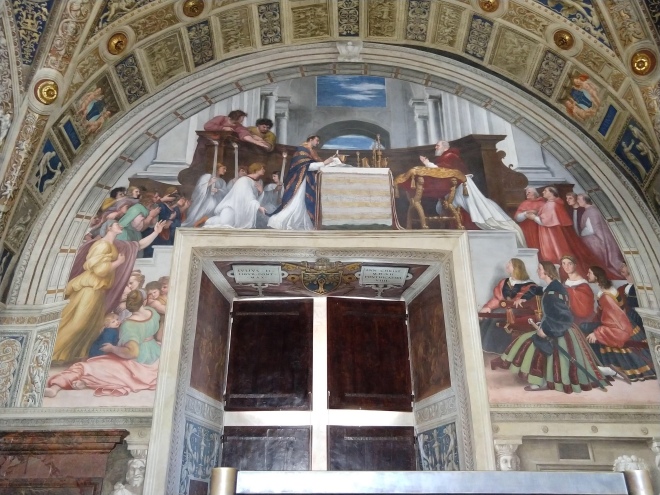
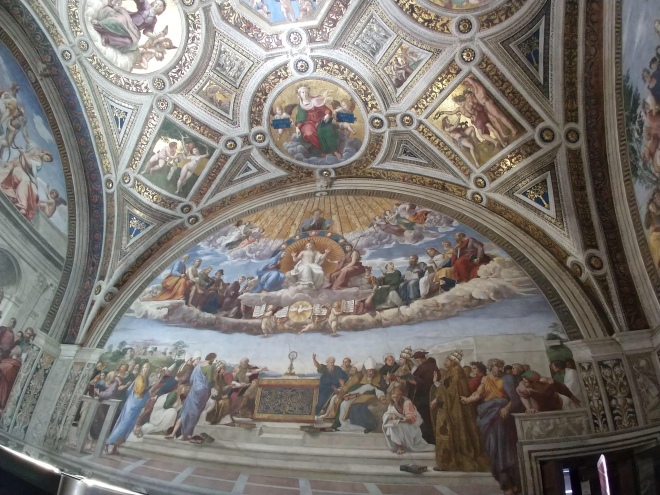
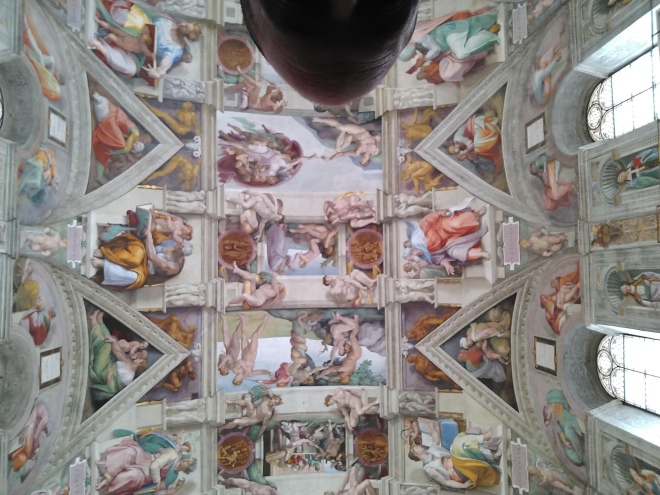
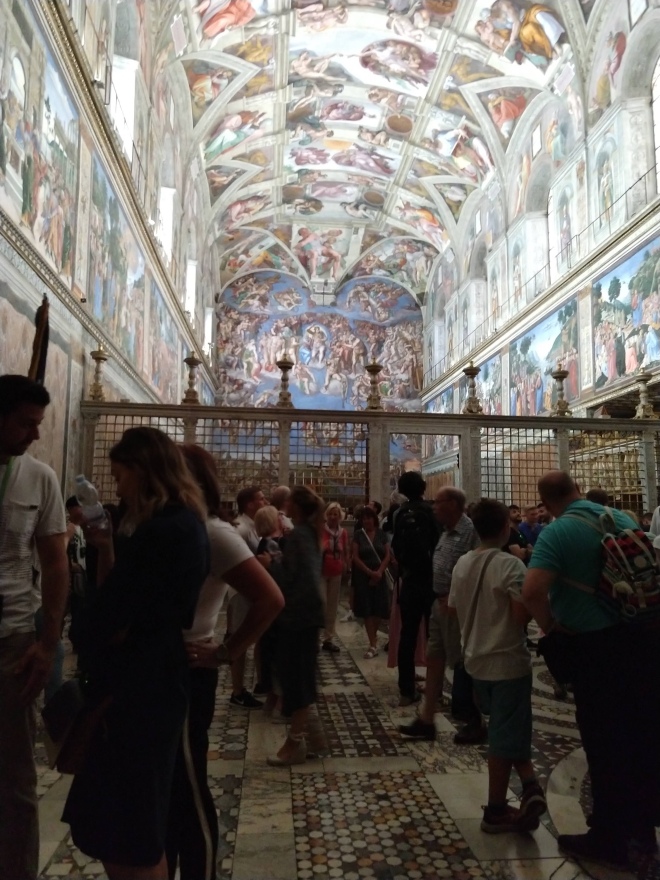
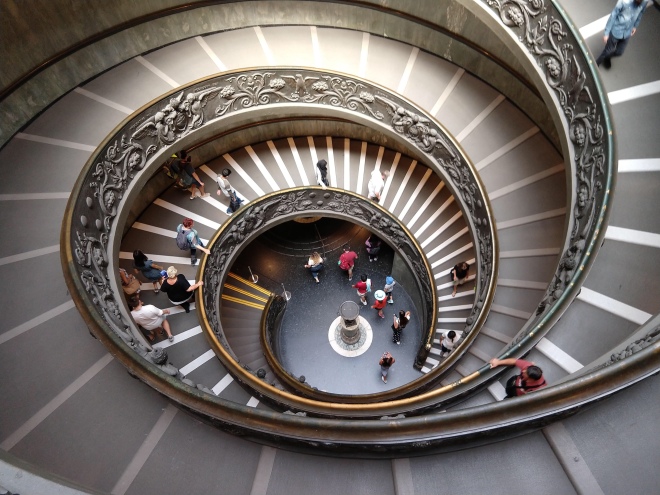
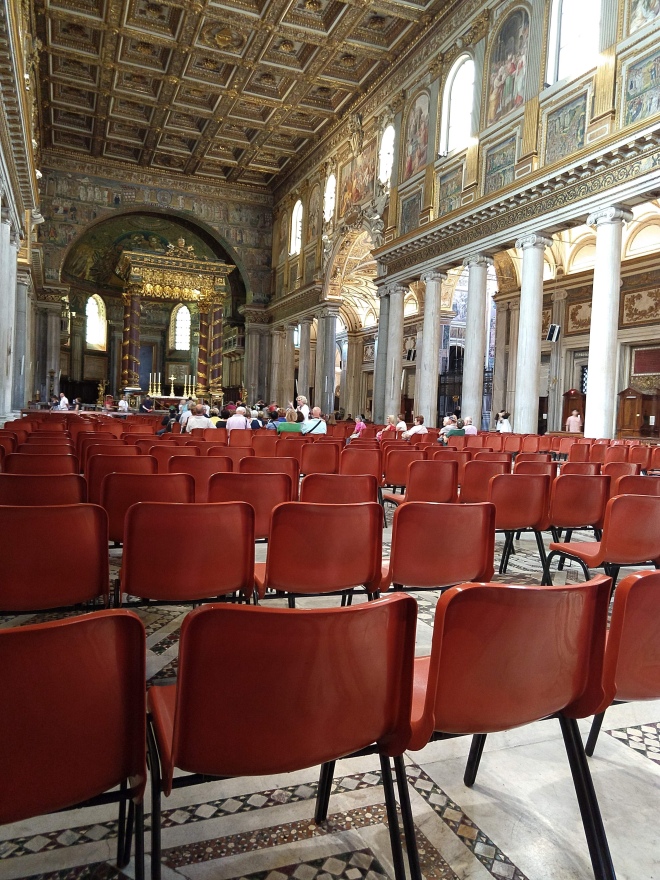
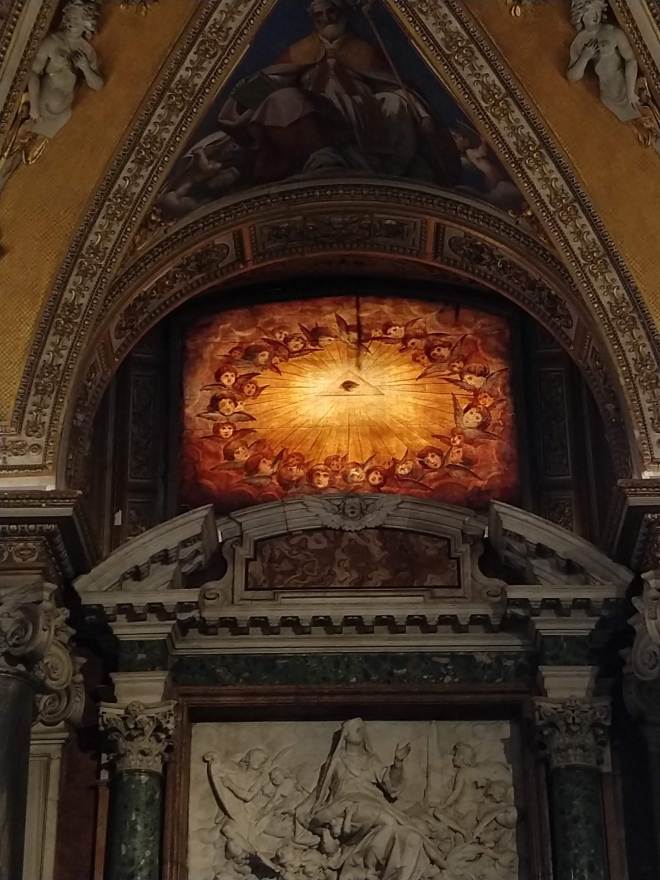
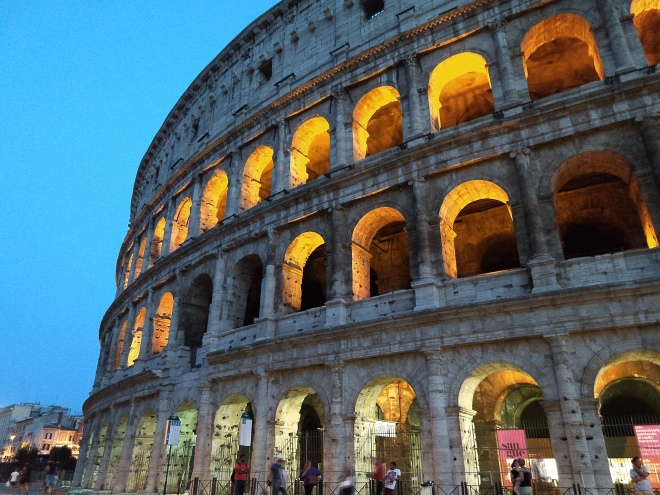
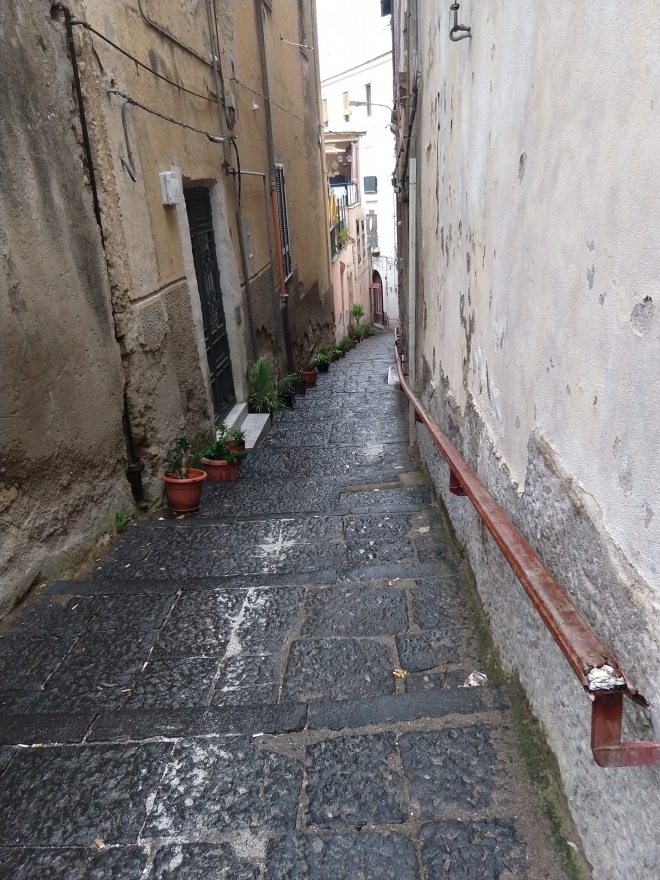
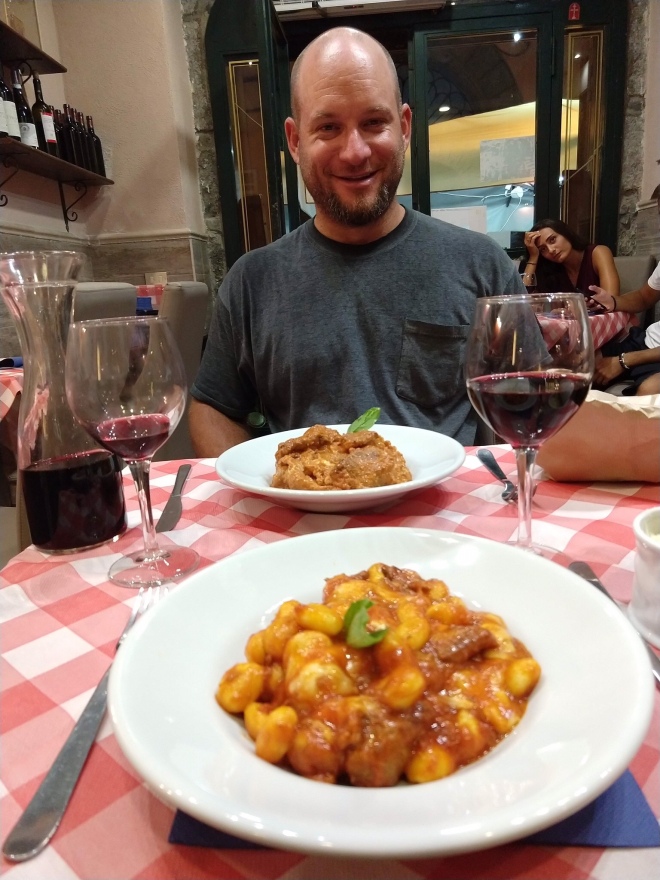
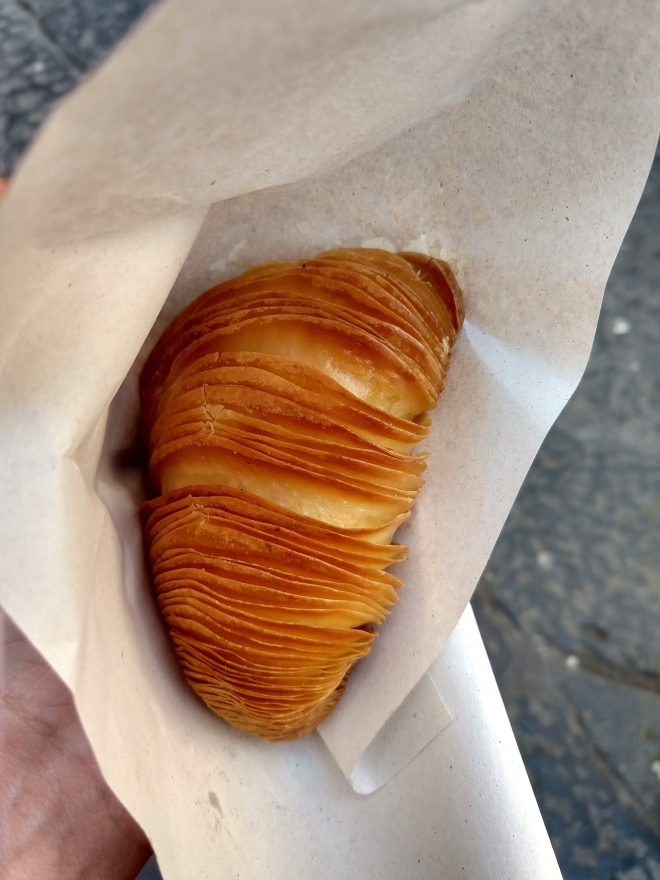
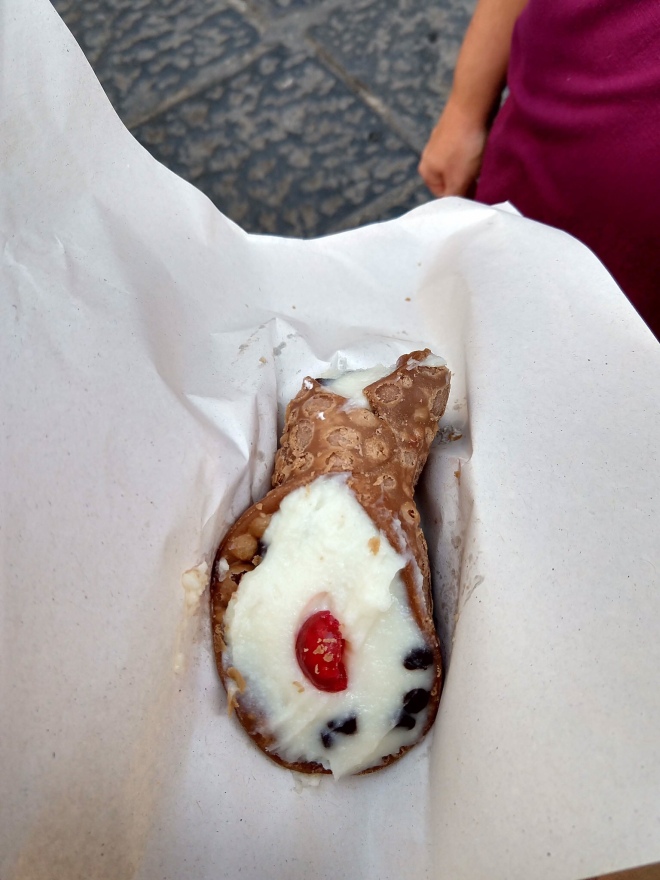
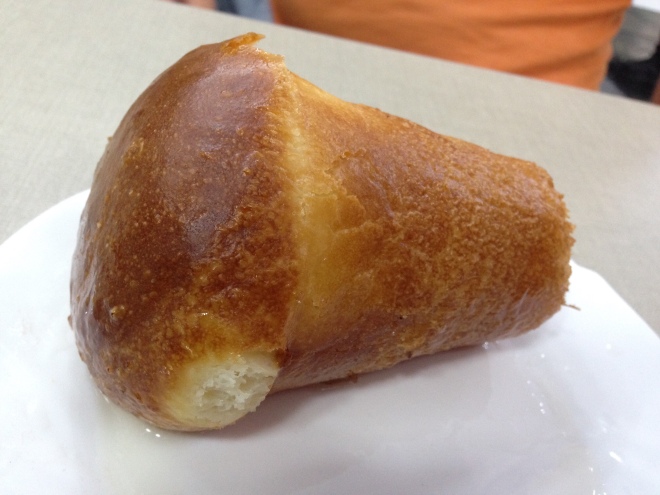
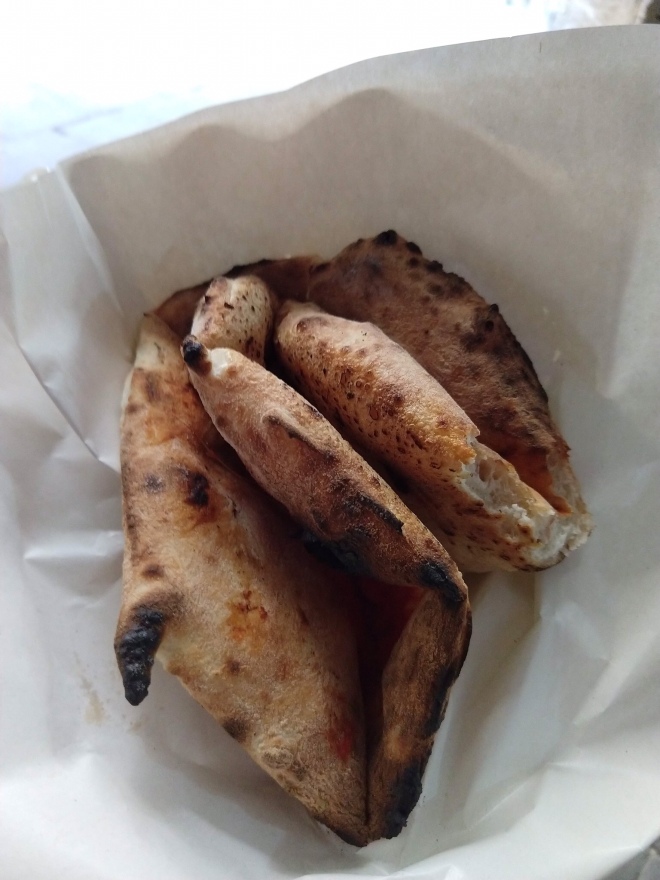
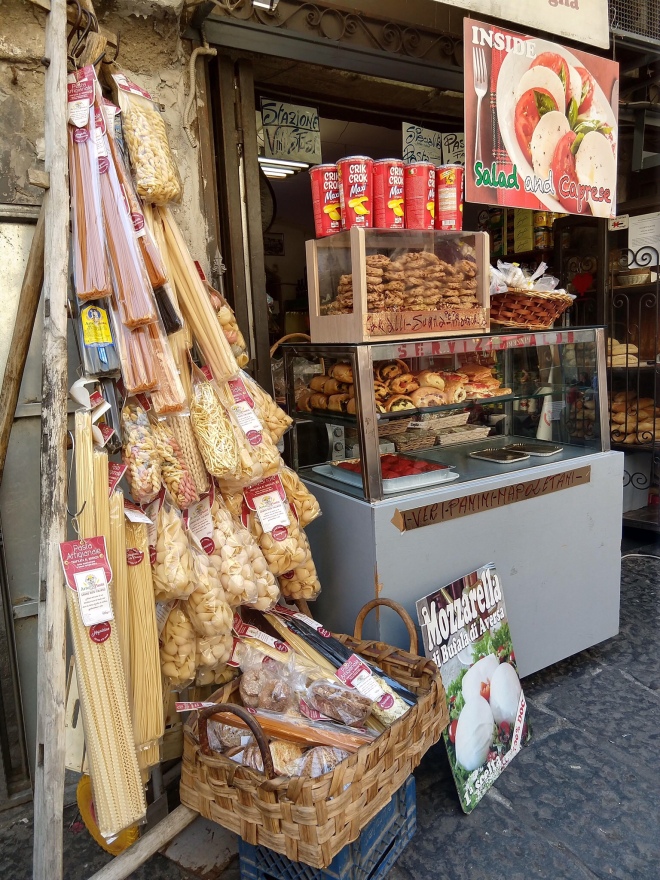
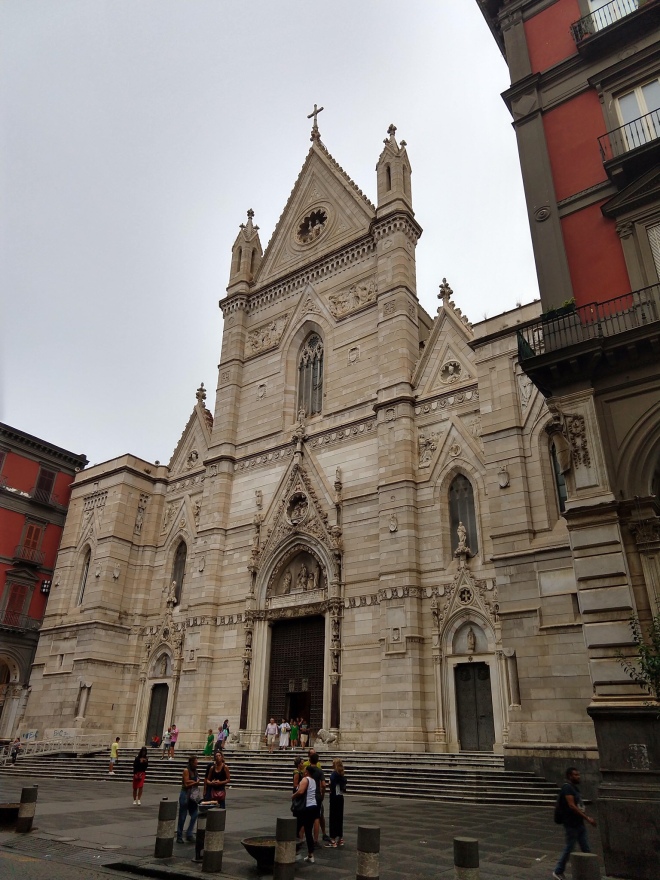
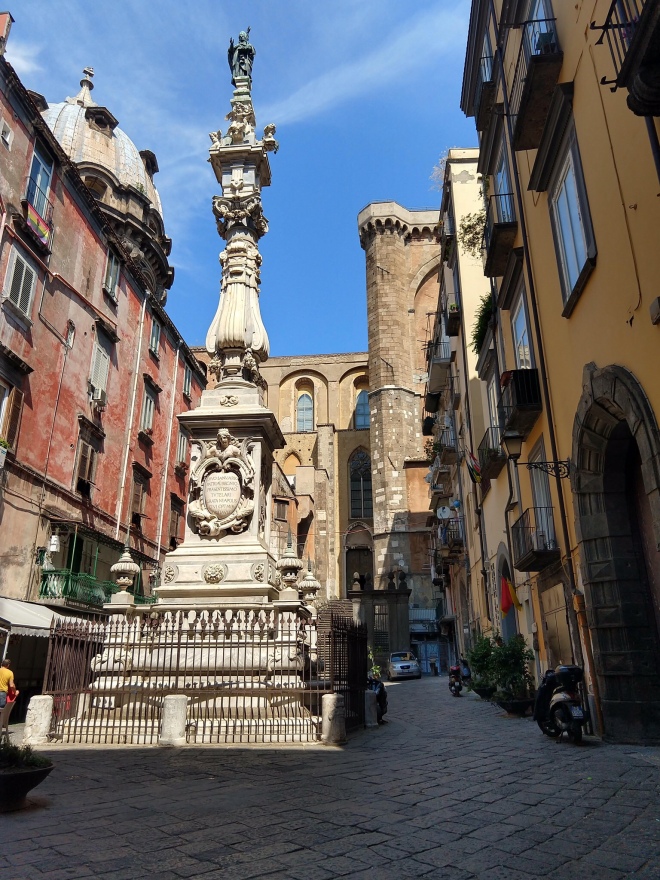
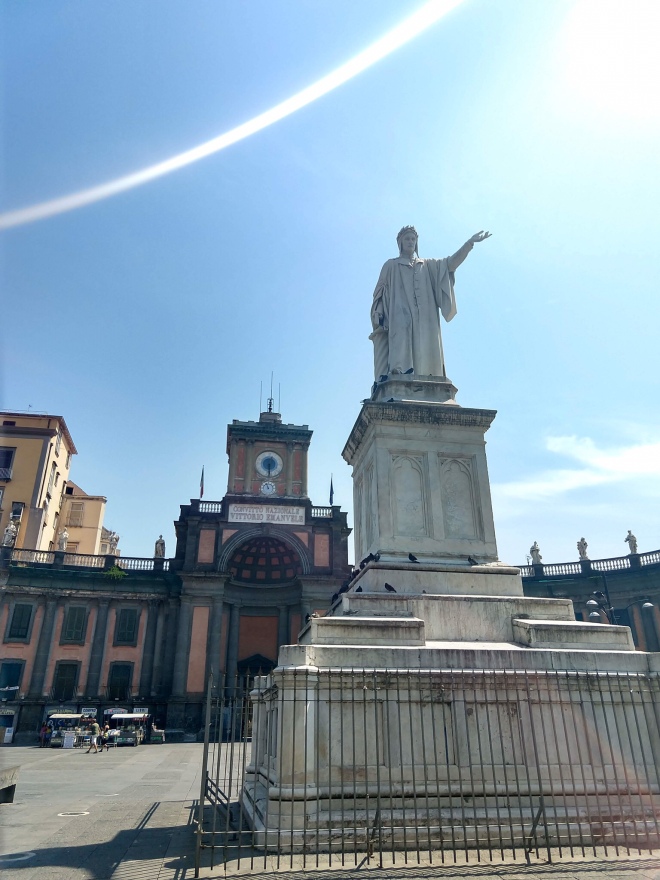
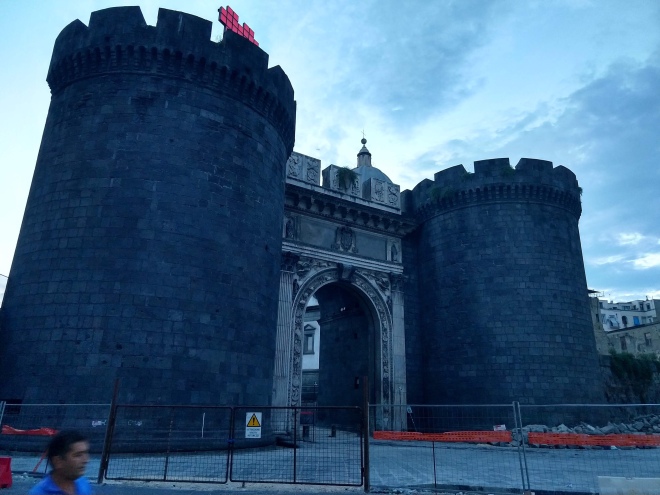

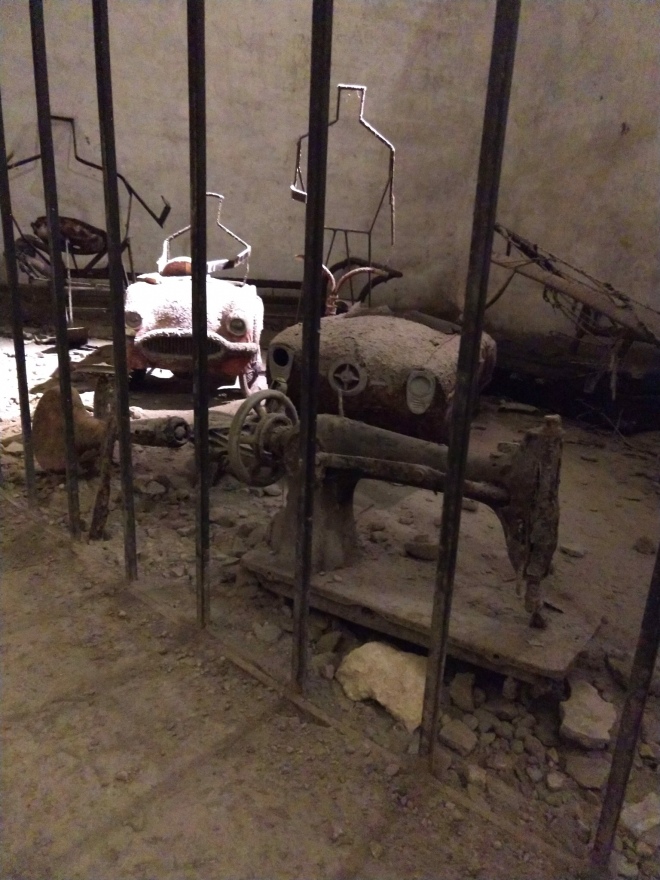
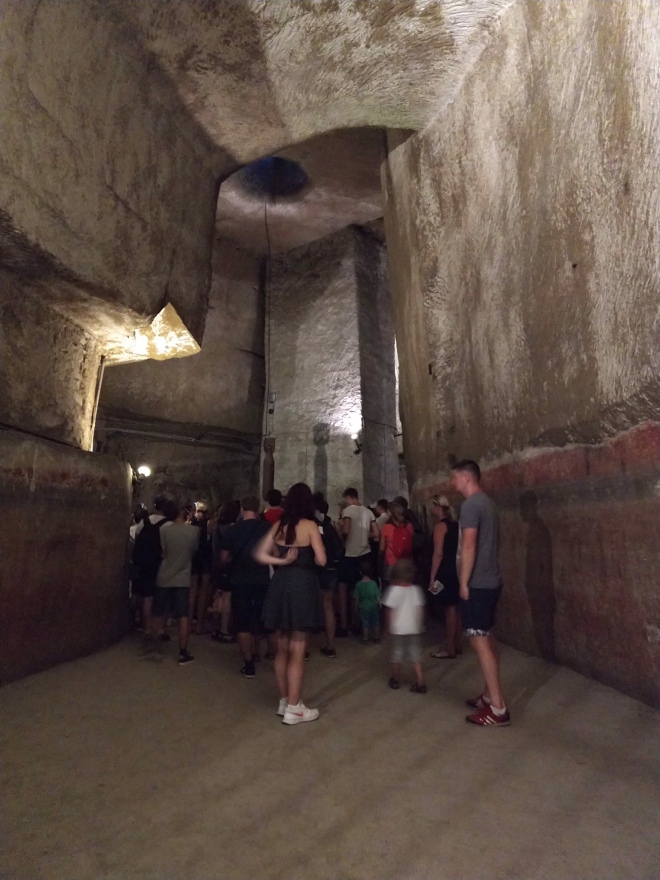
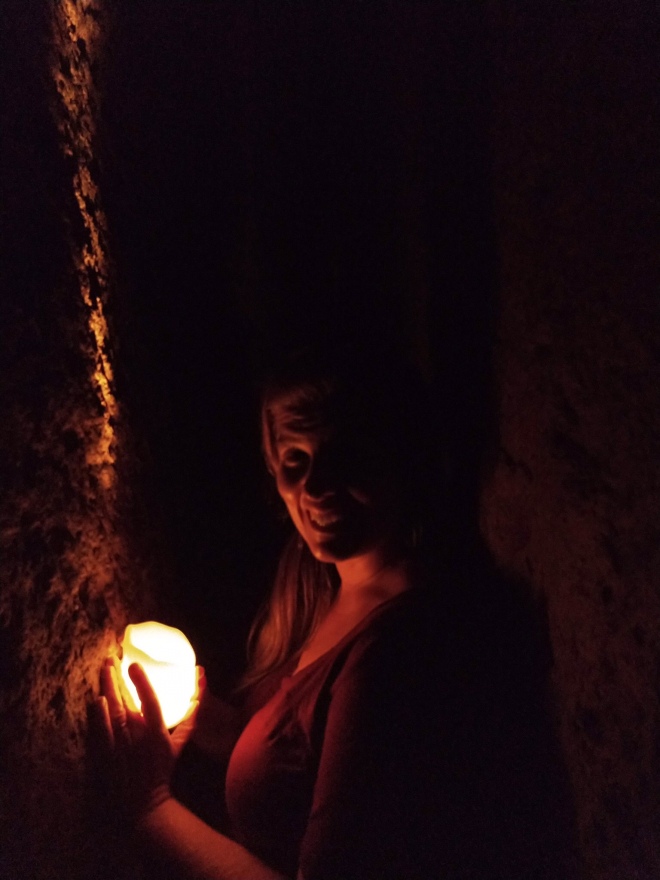
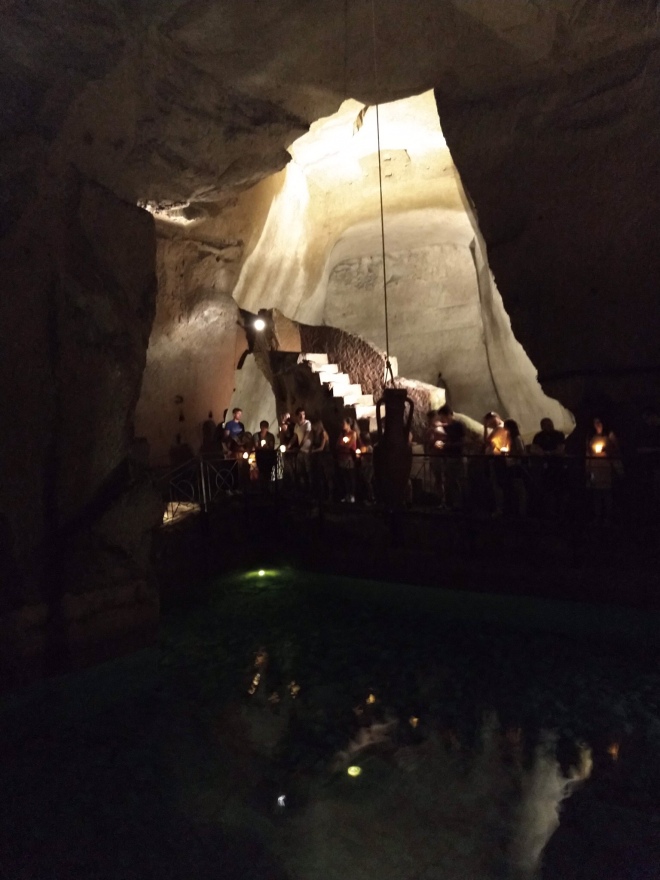
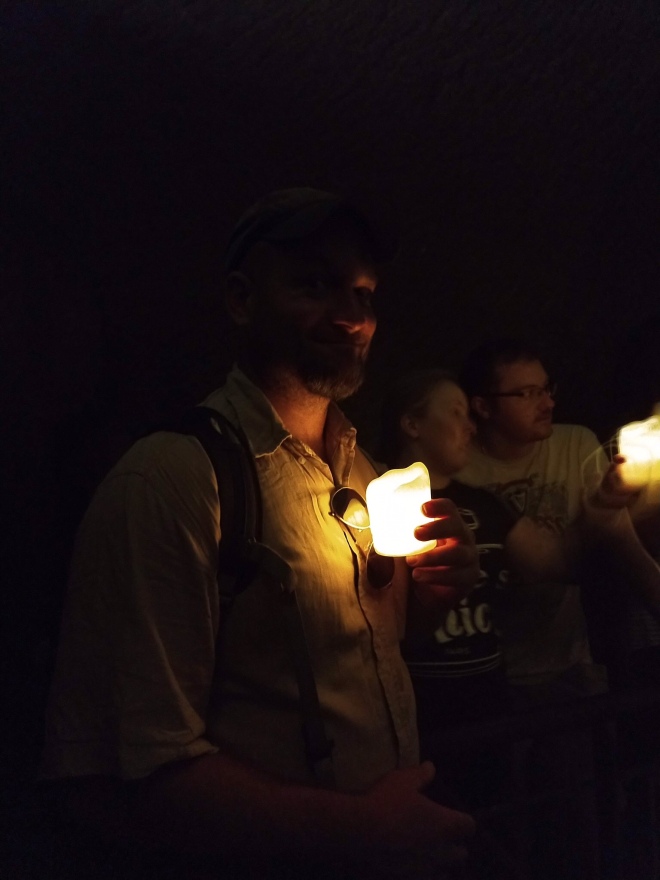
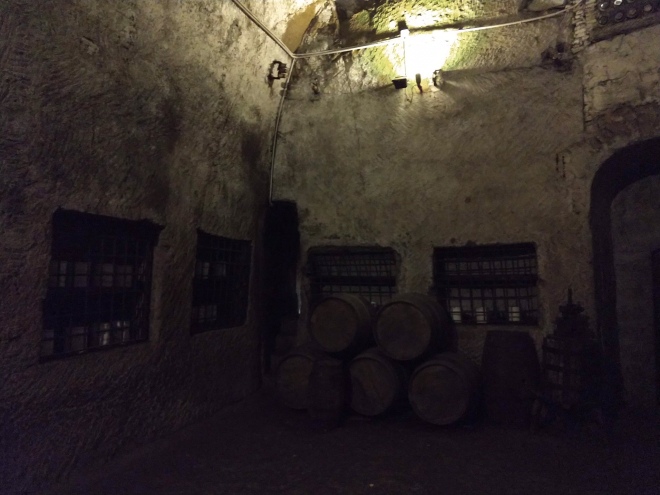
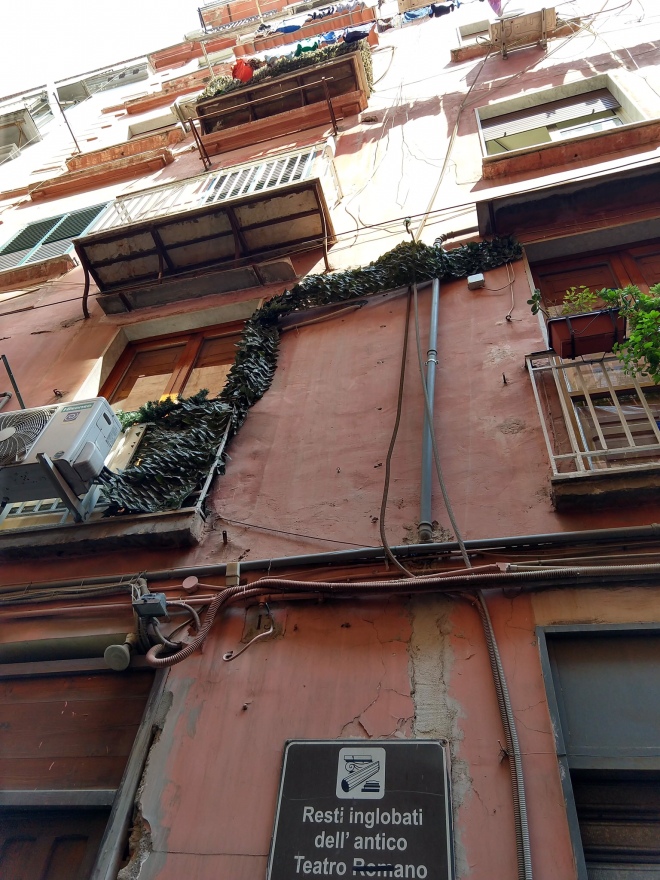
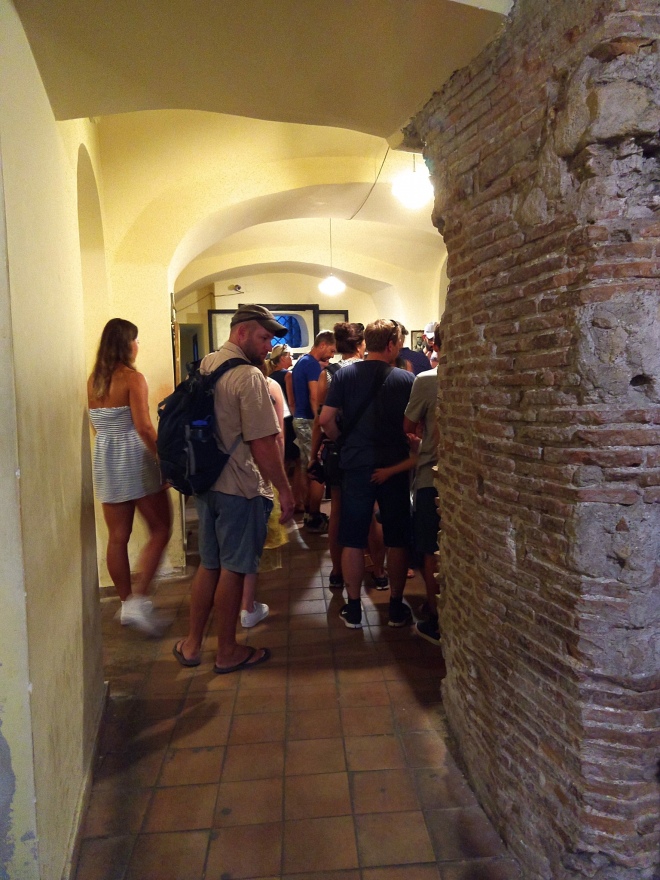
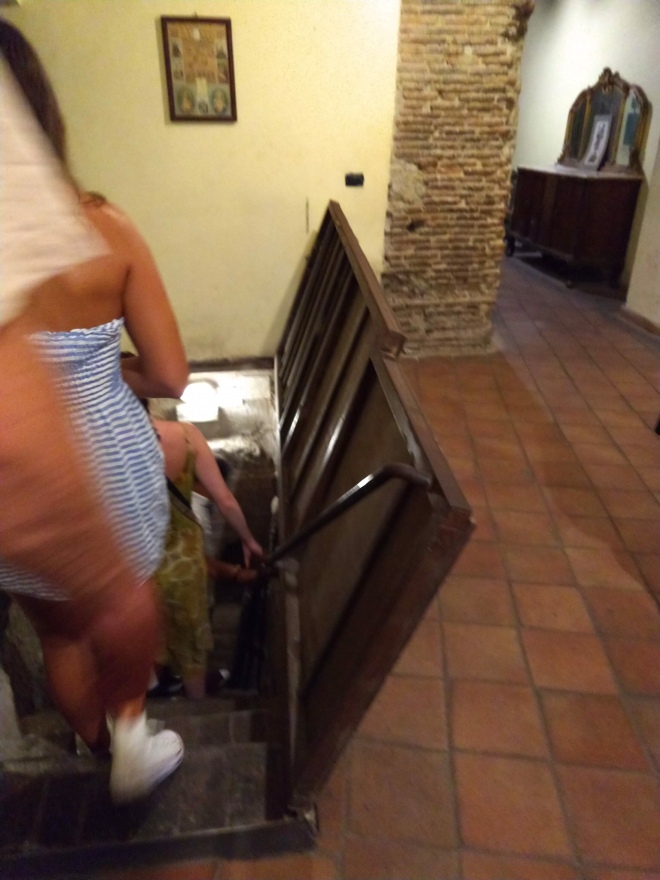
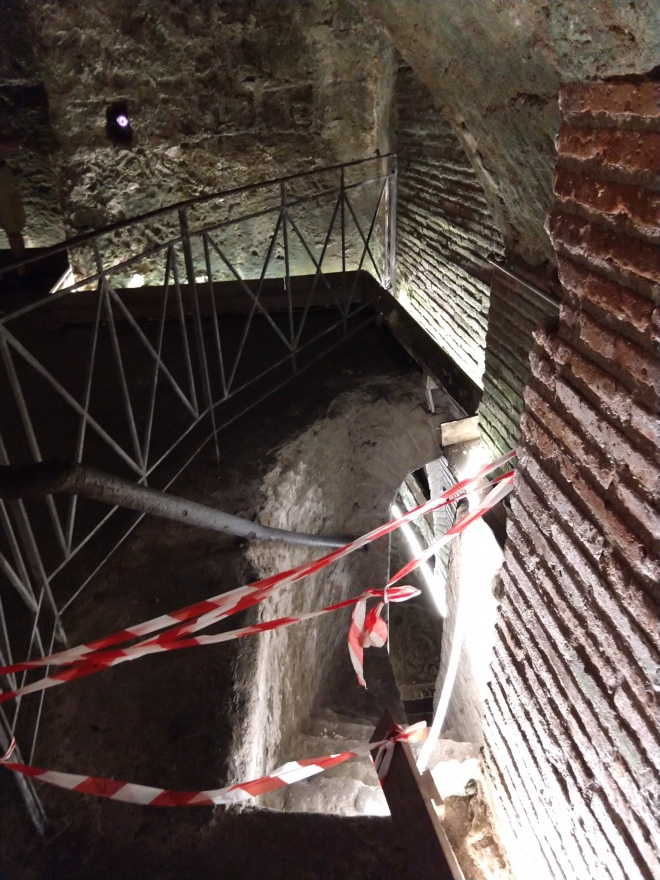
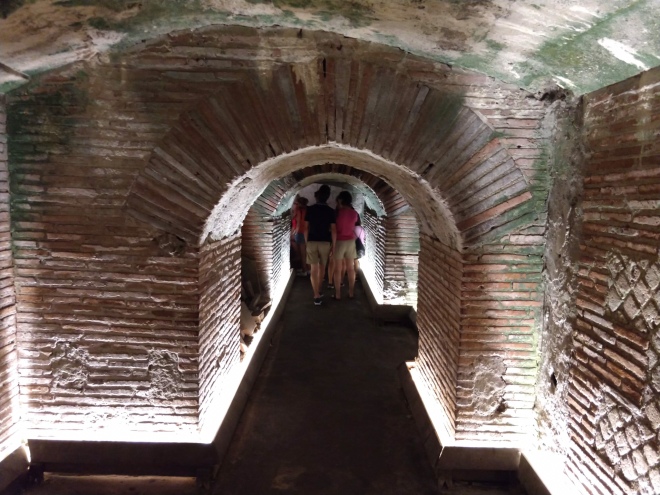
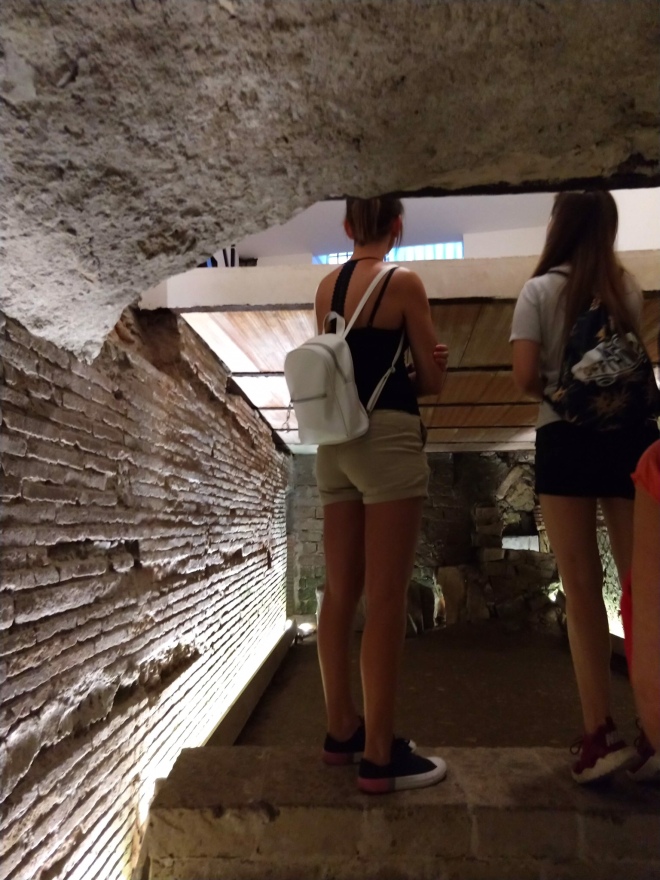
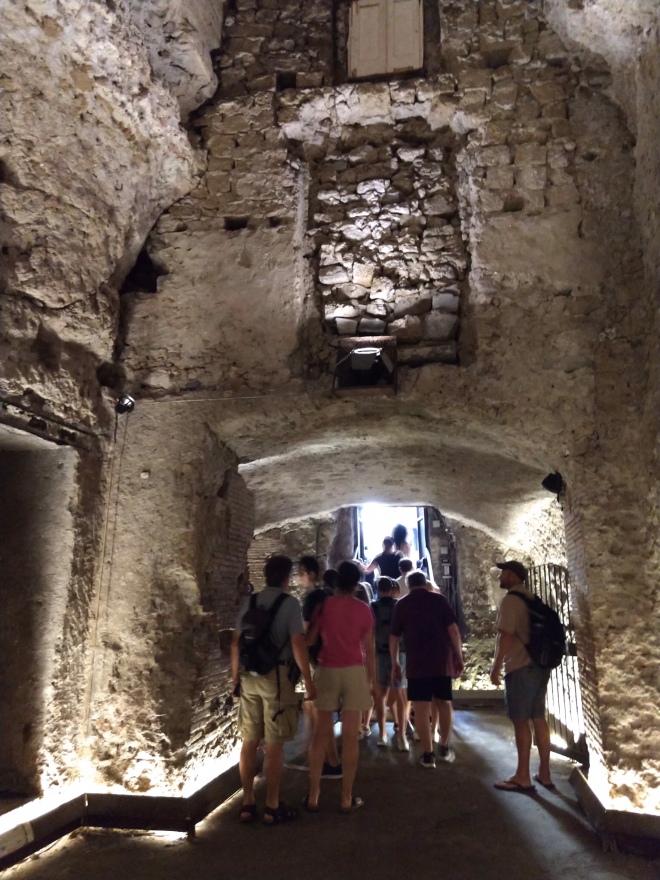
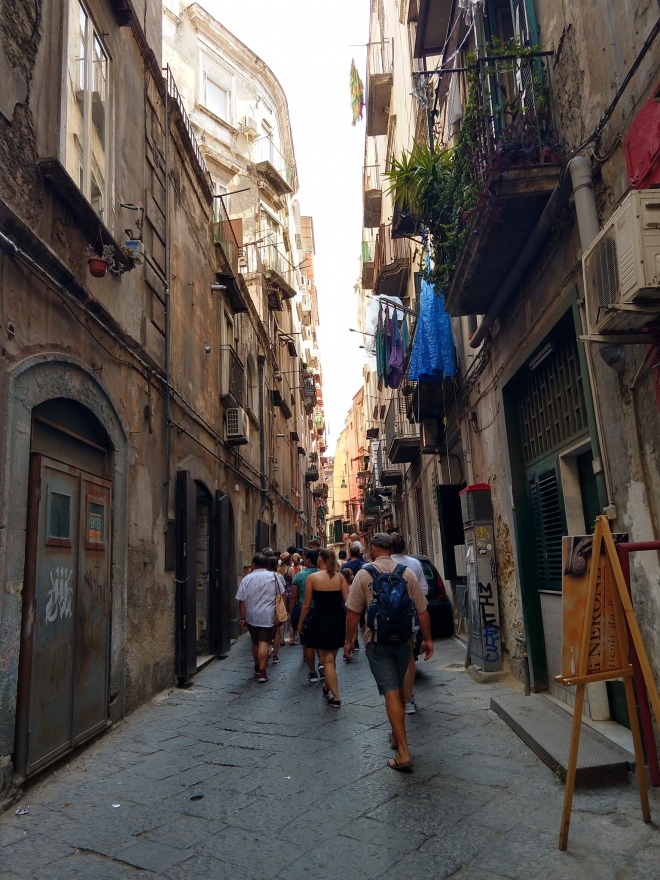
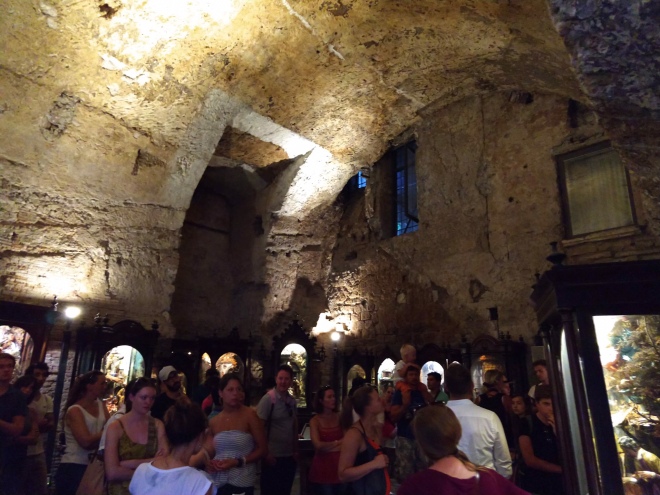
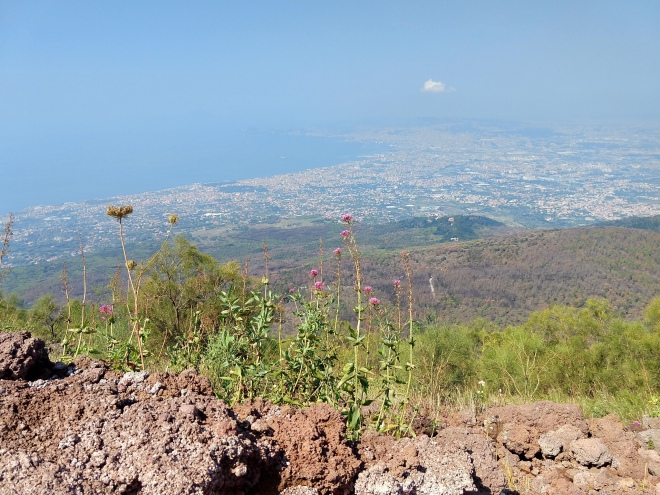
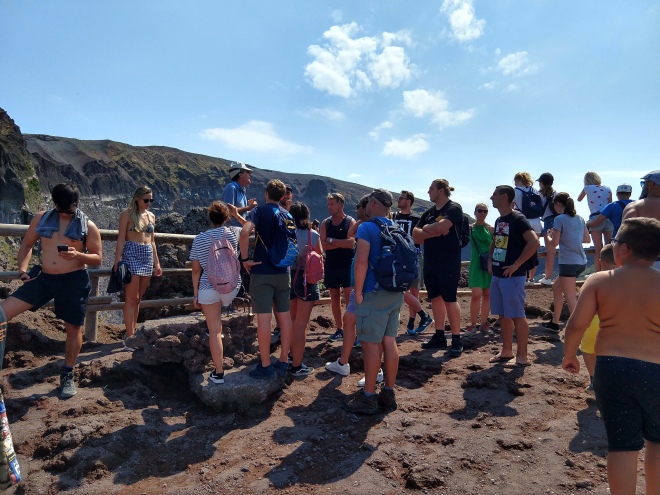
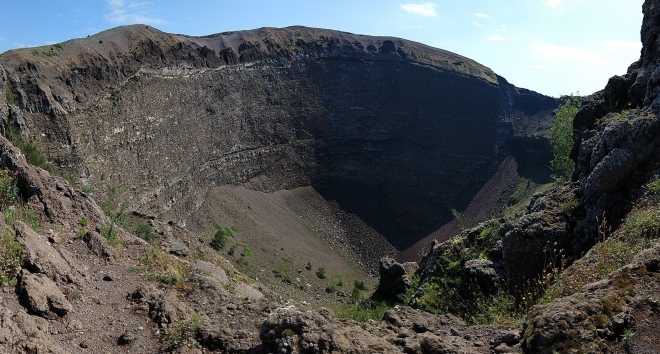
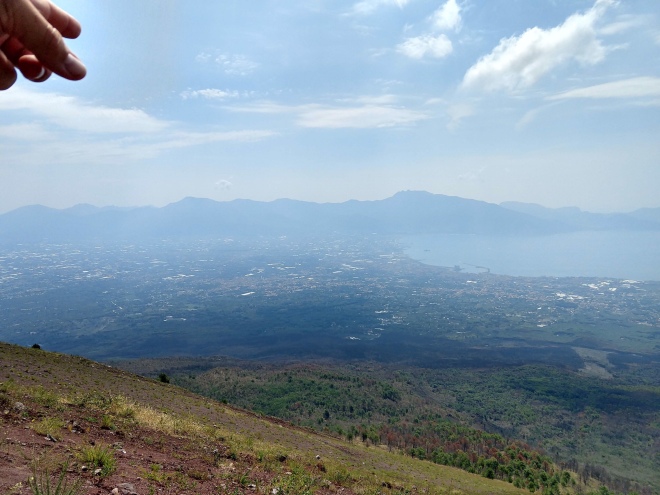
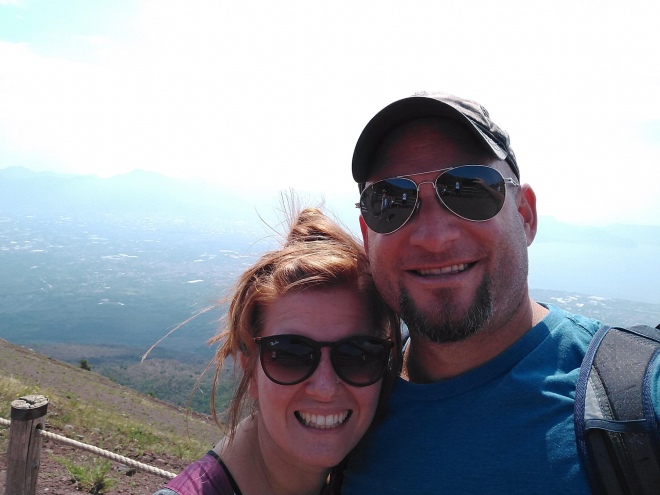
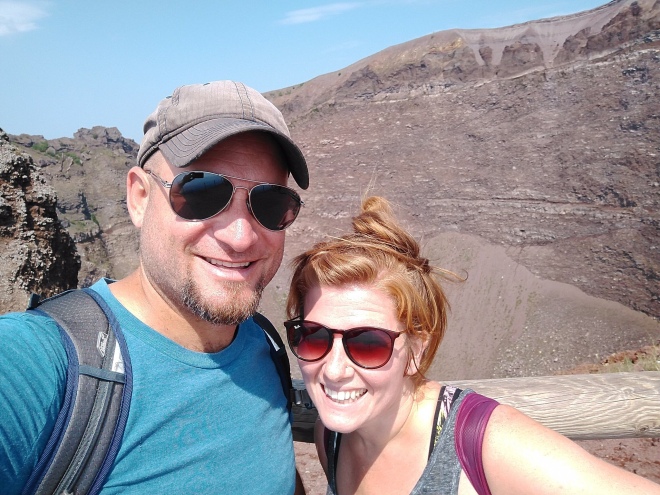
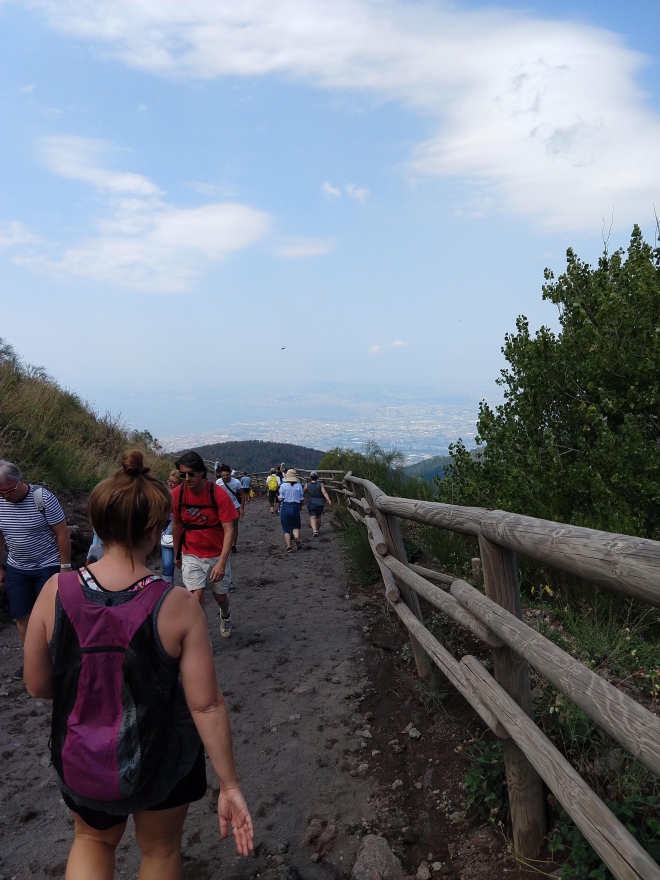
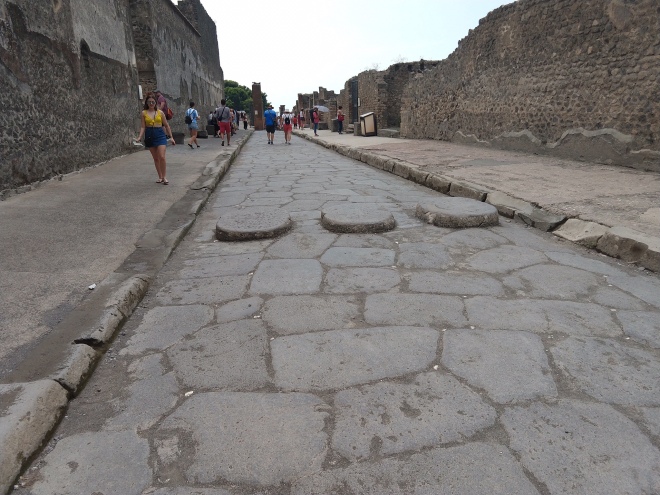
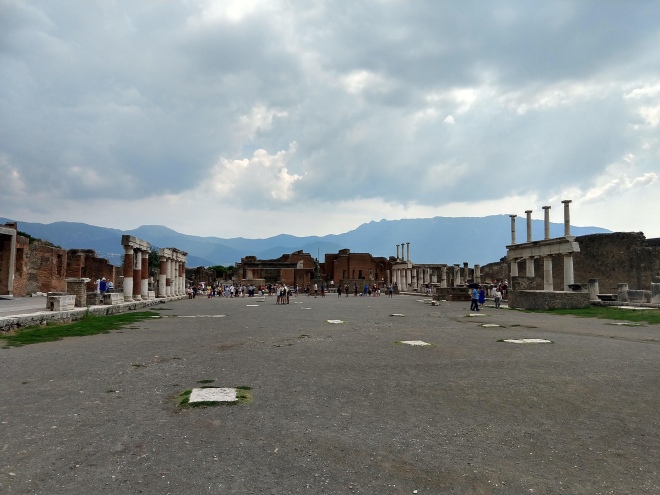
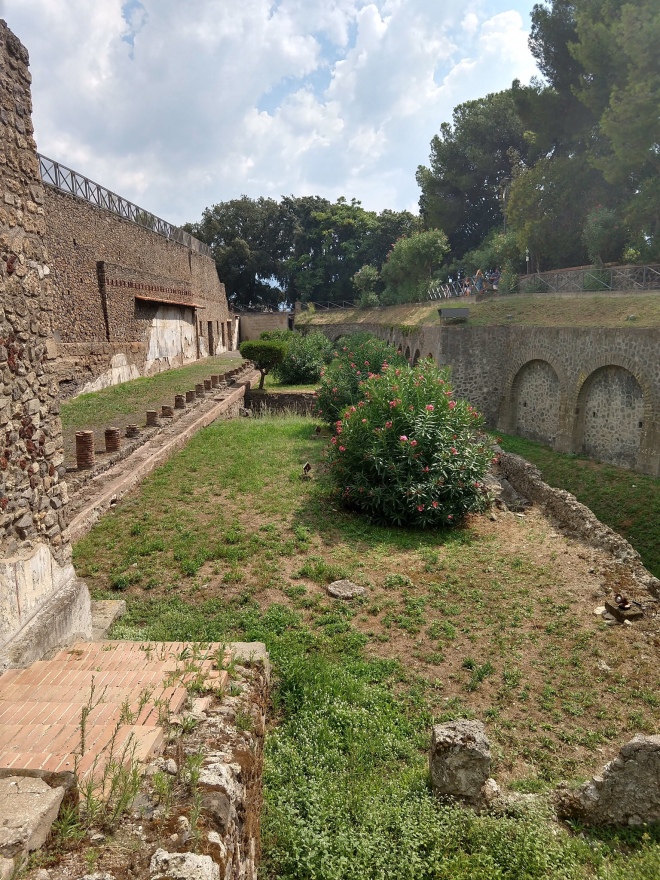
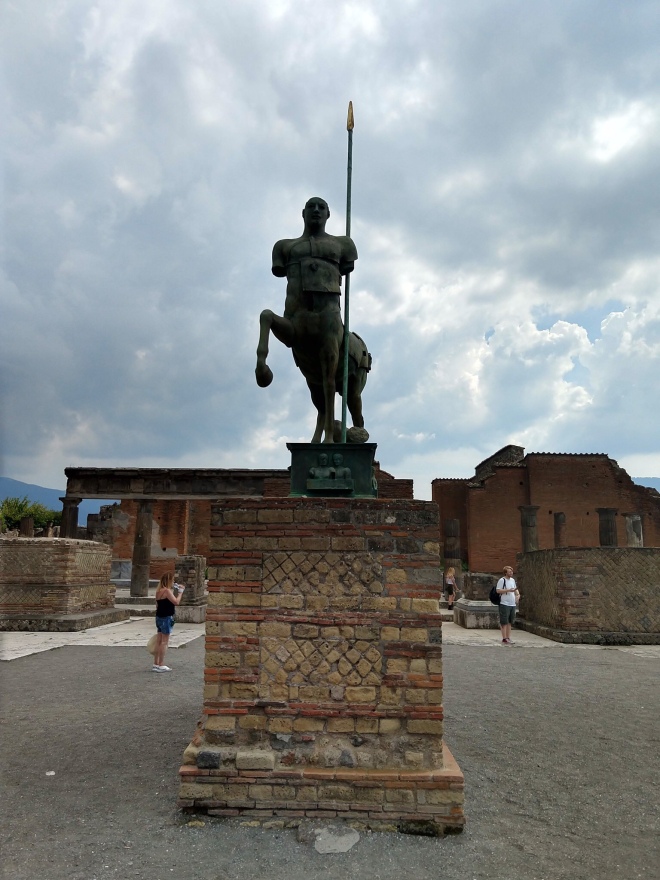
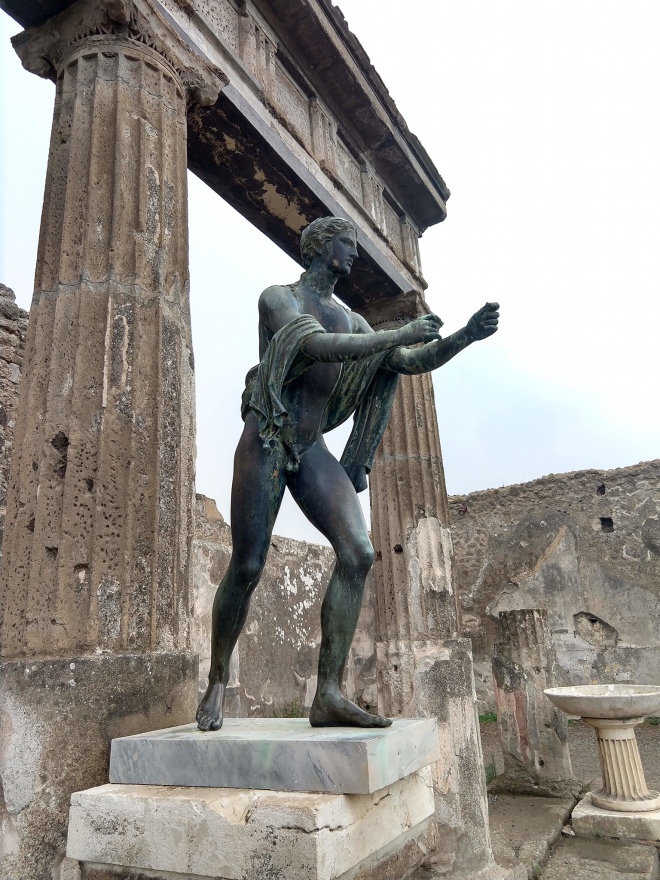
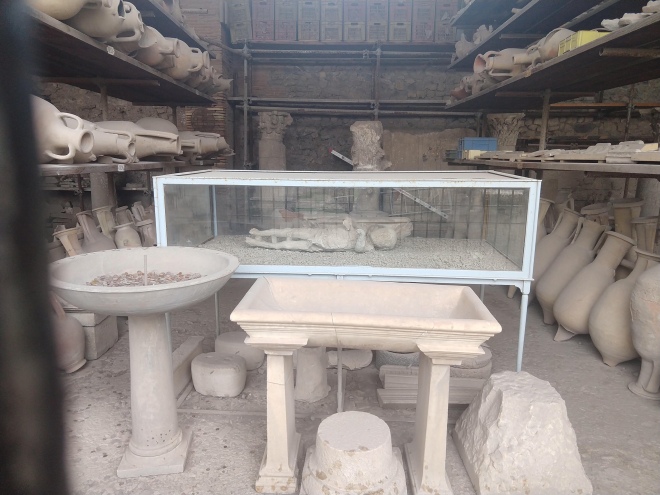
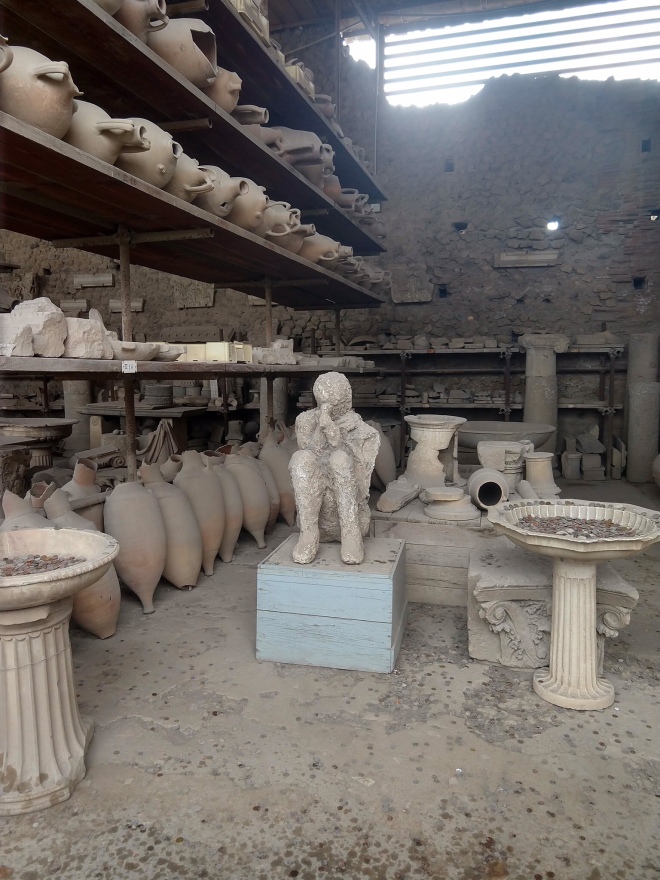
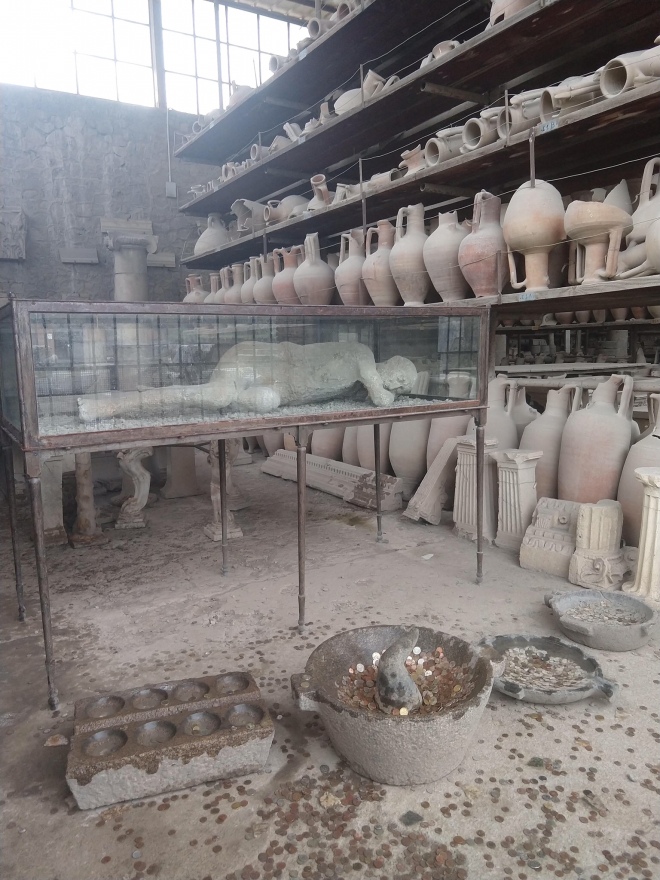
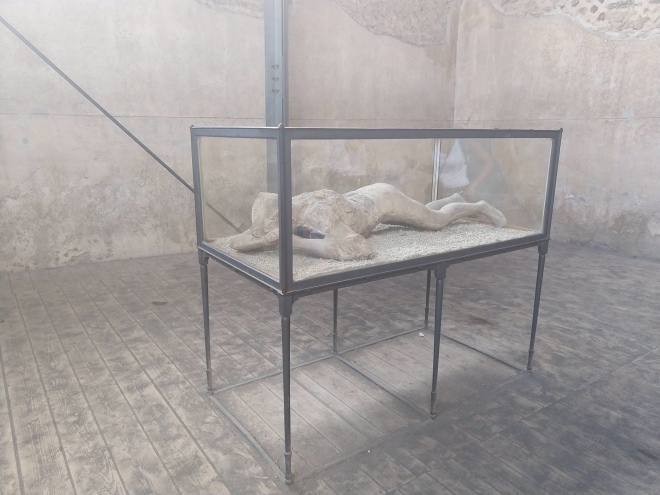
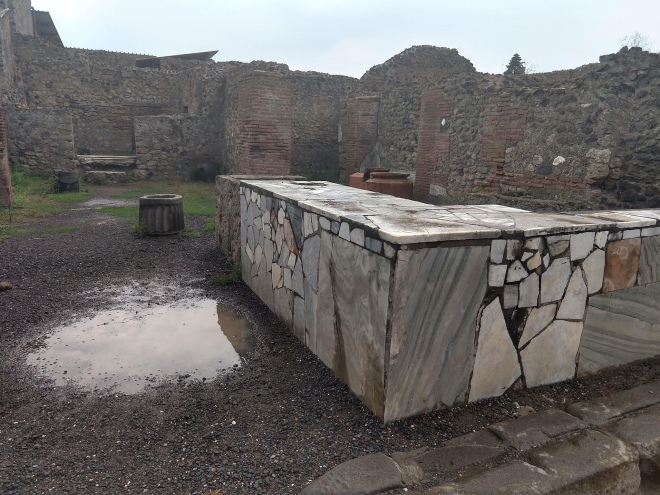
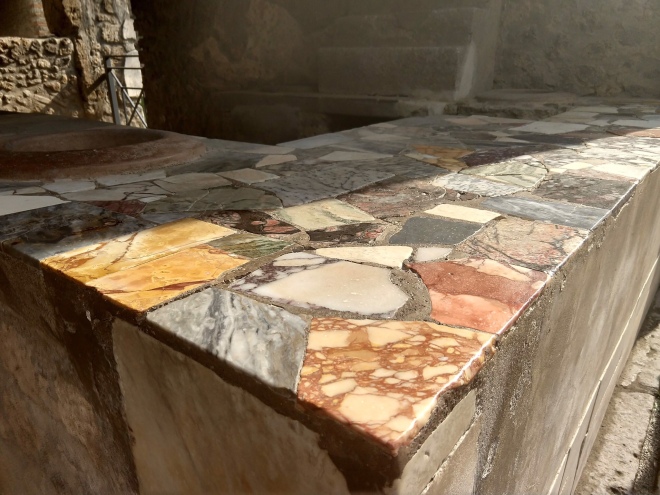
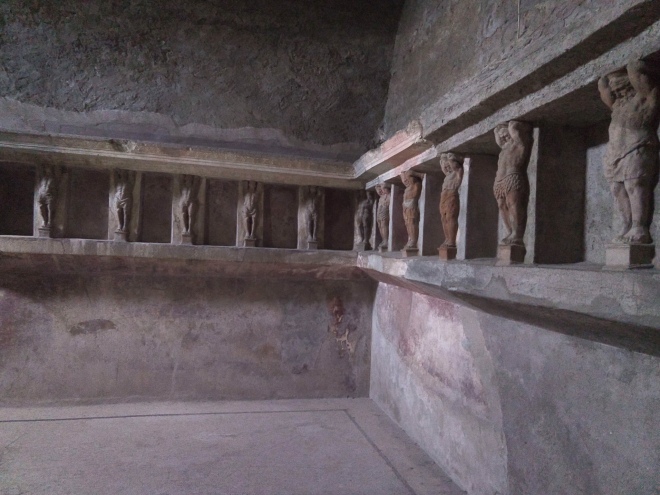
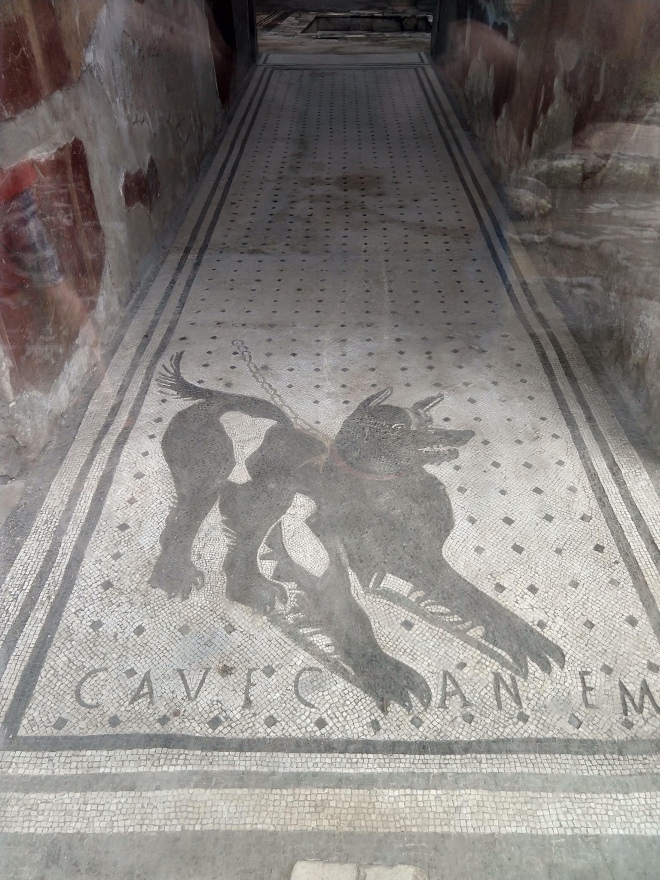
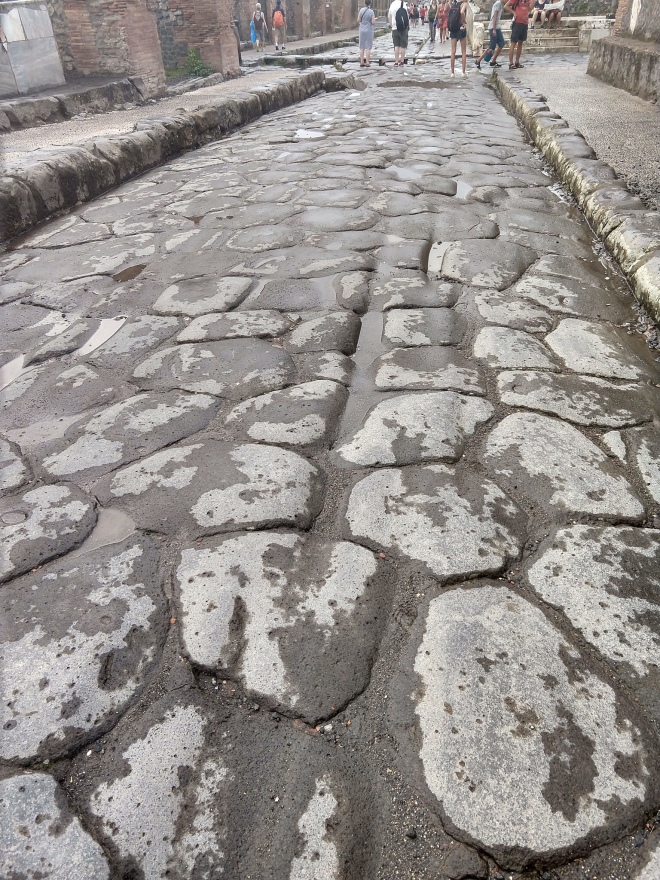
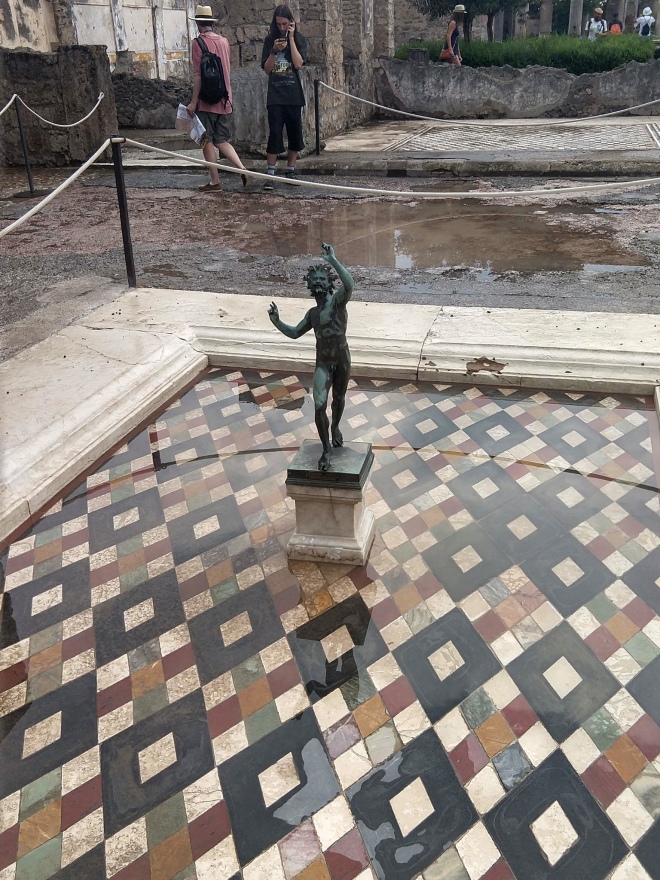
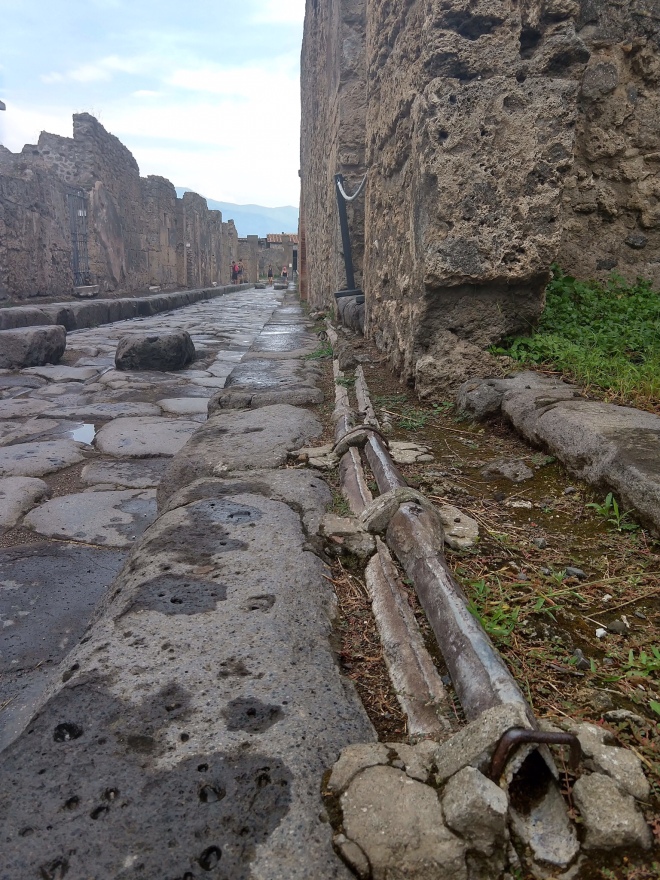
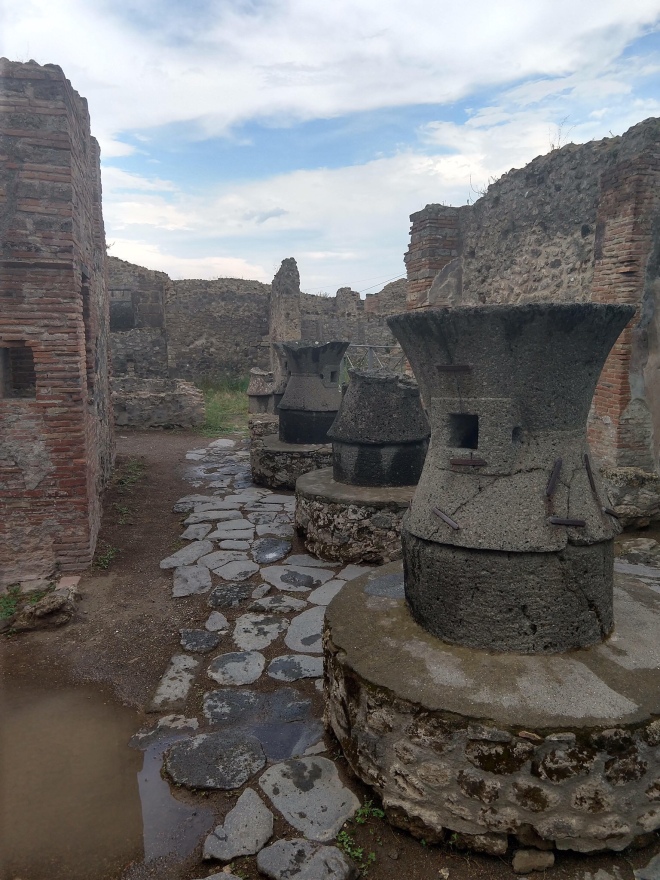

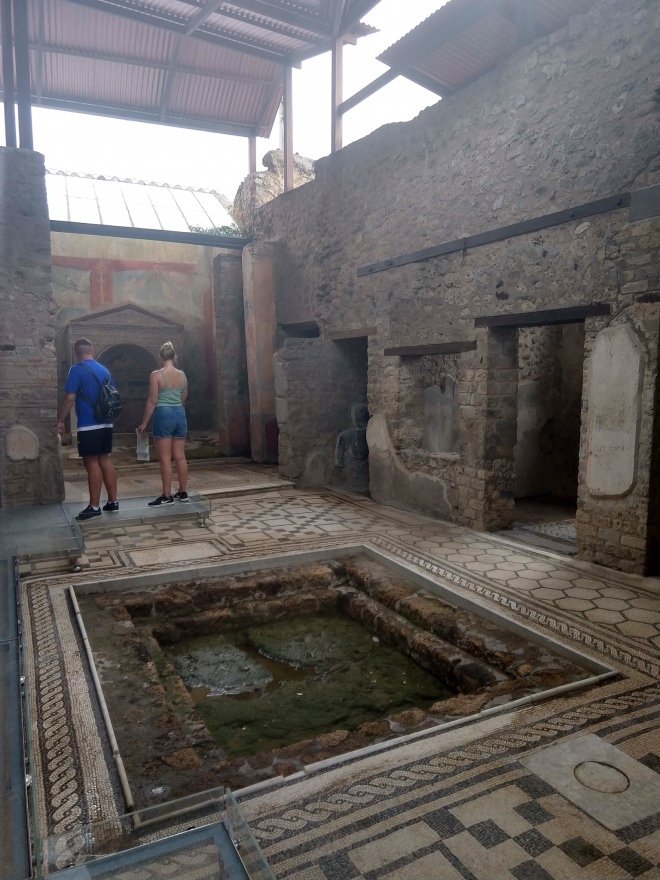
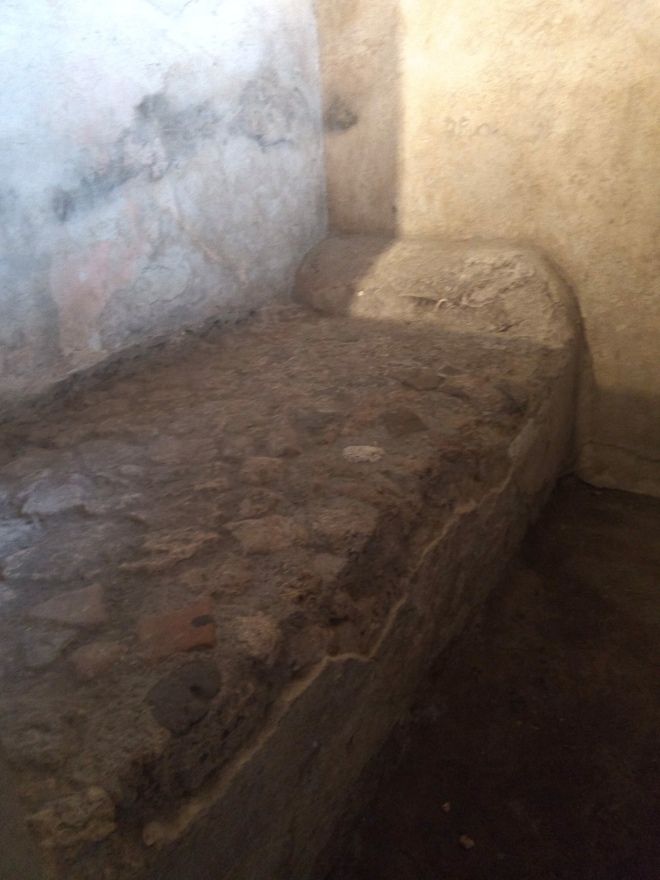
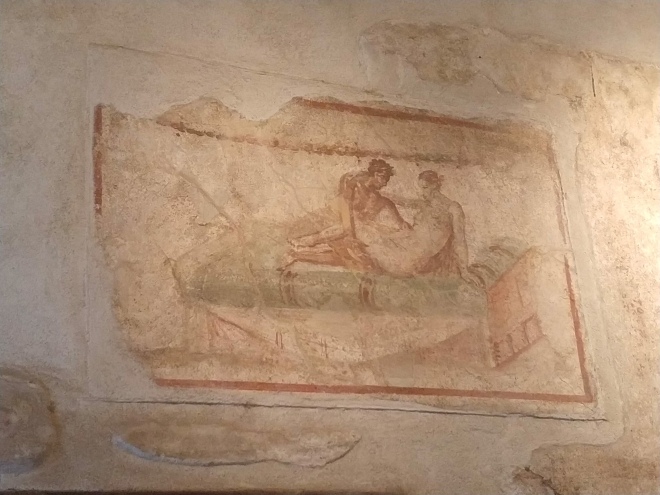
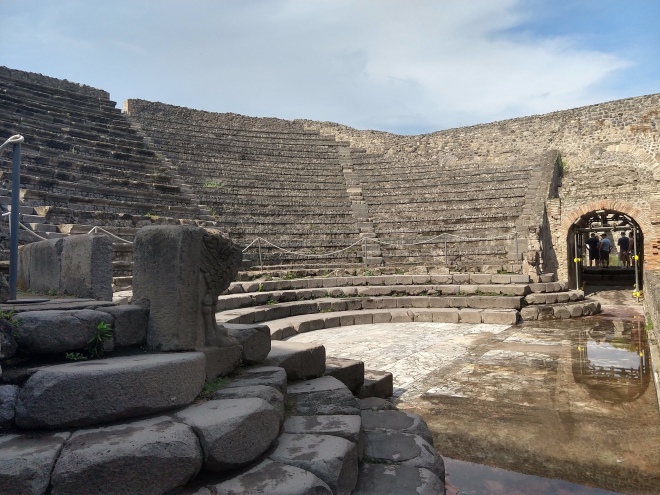
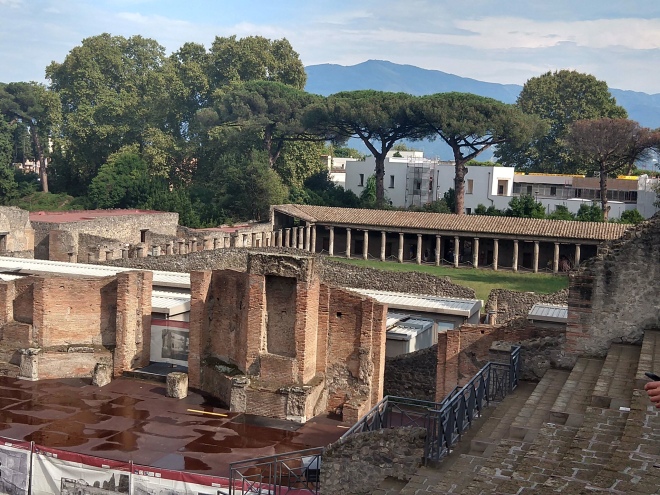
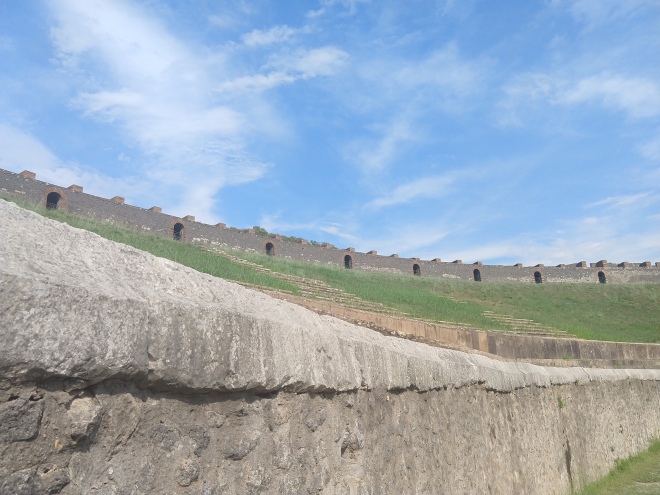
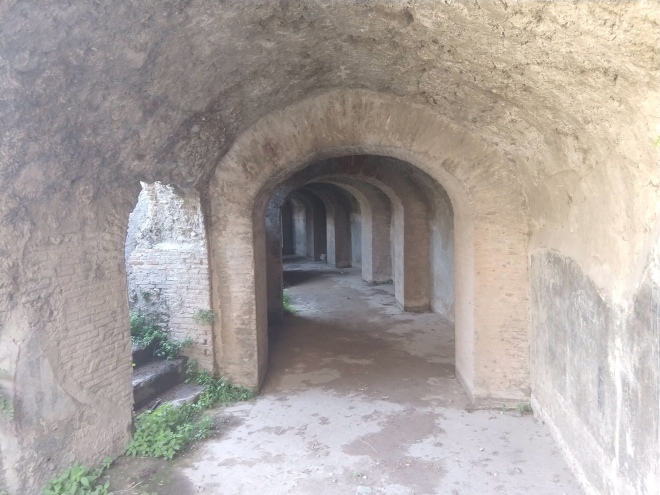
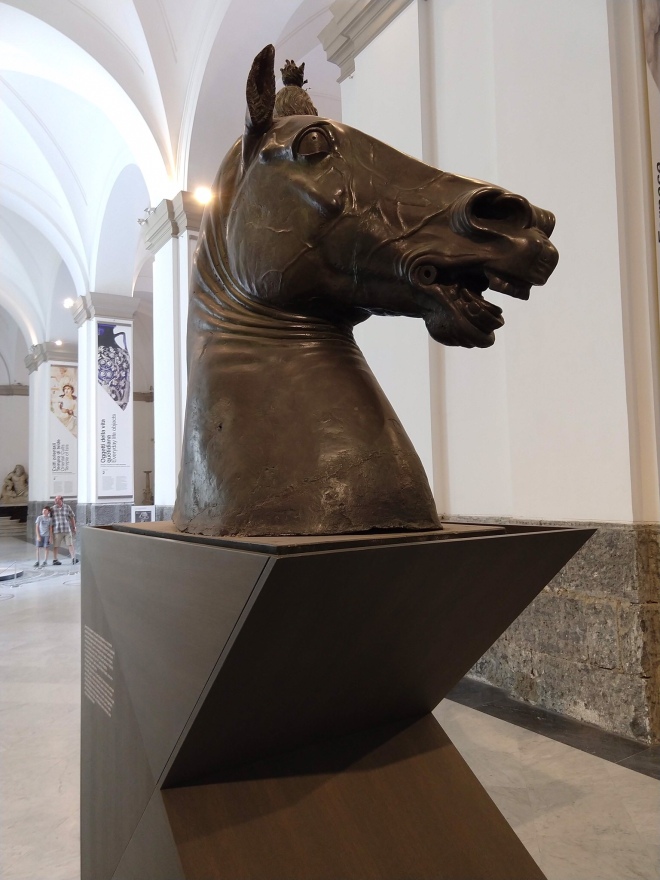
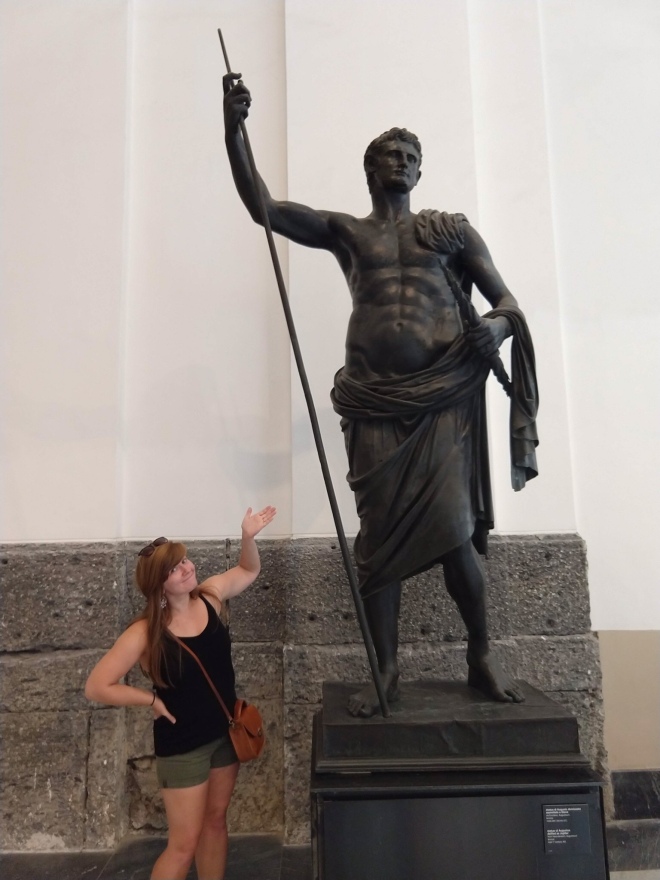
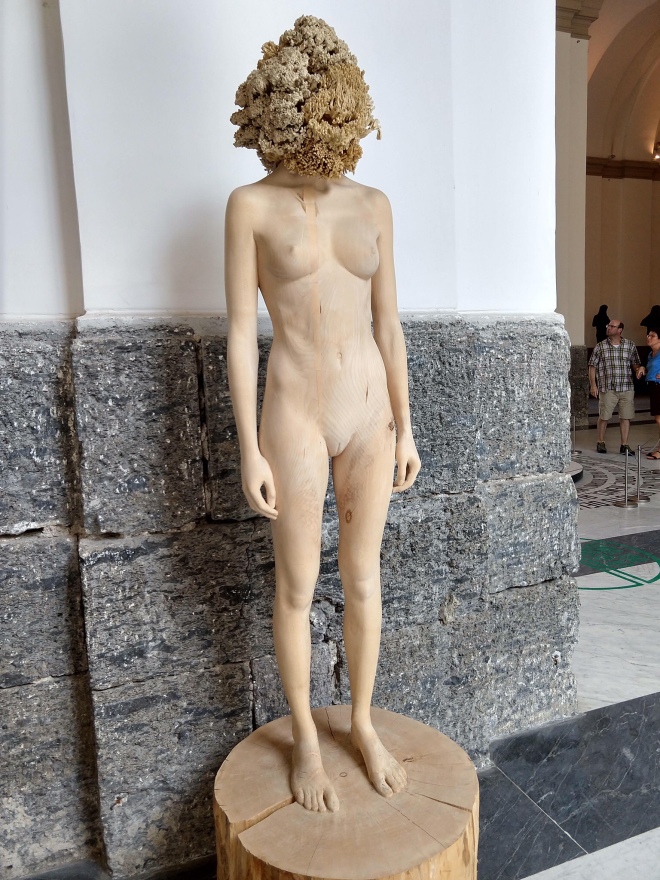
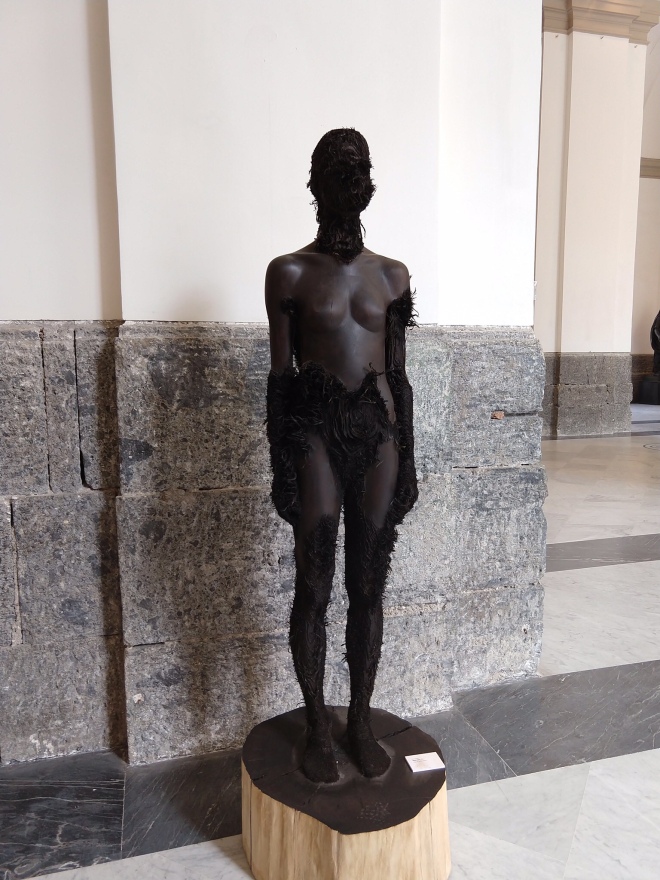
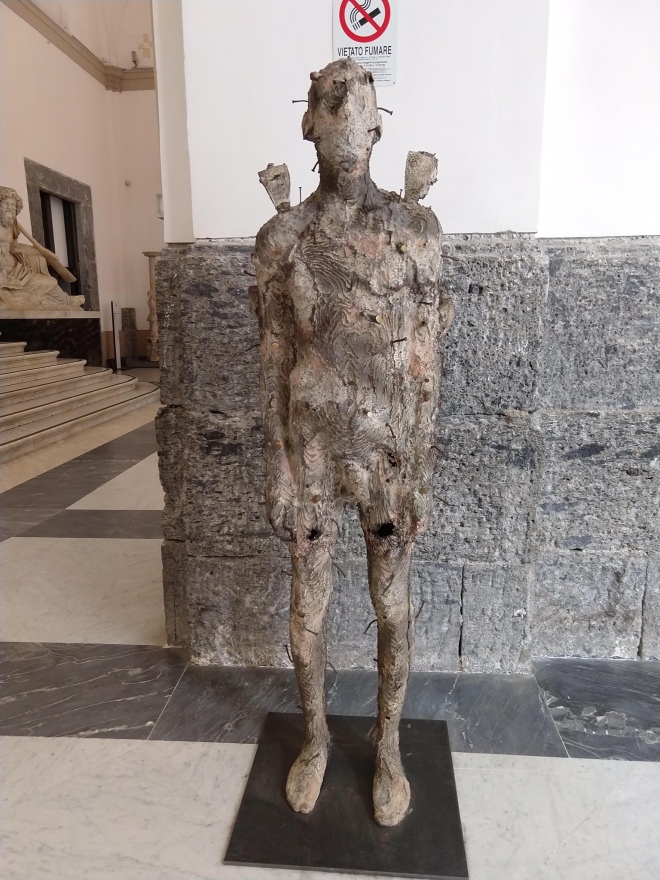
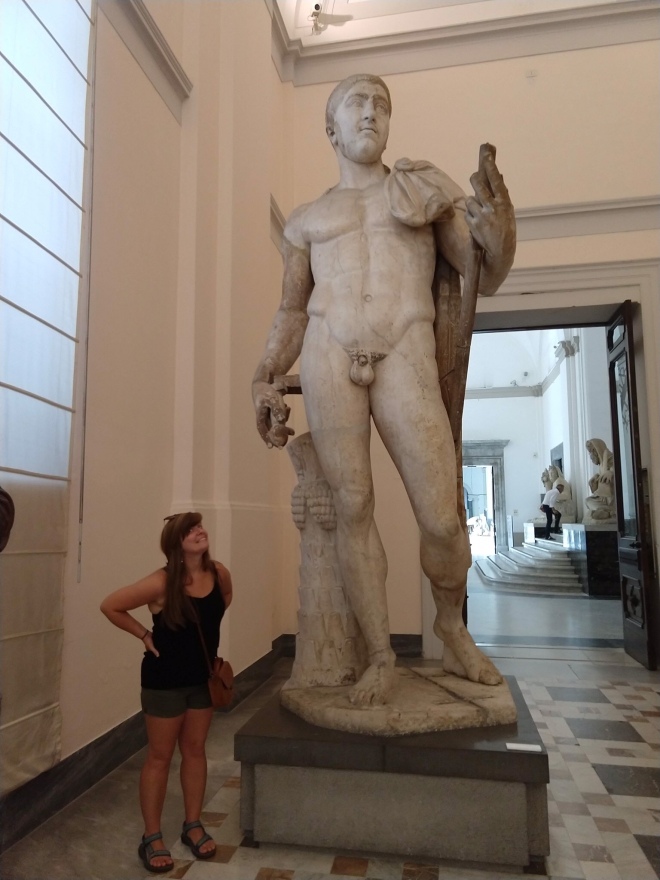
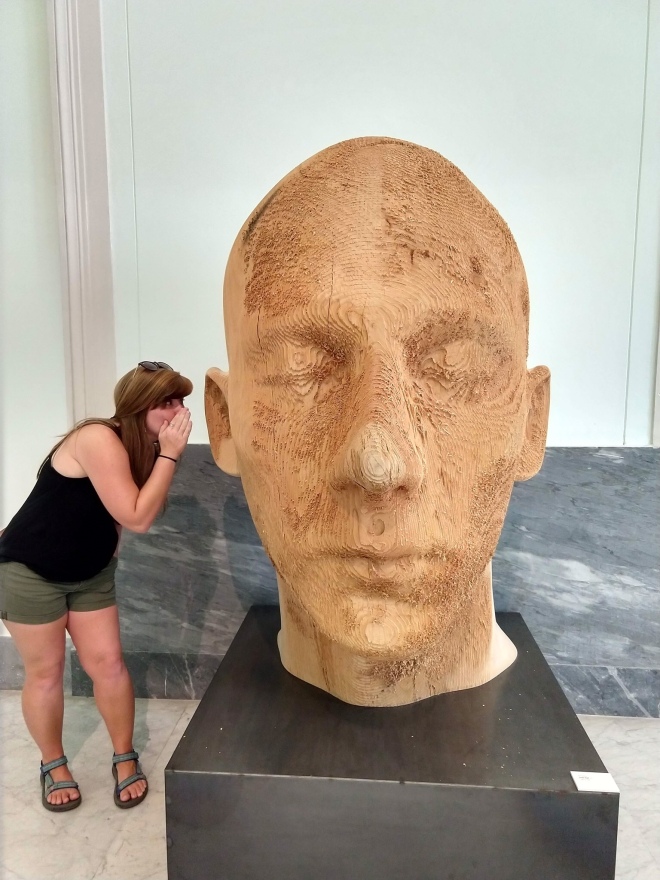 It adds a different dimension to the art, not just having the statue carved smoothly out of the wood. I love it!
It adds a different dimension to the art, not just having the statue carved smoothly out of the wood. I love it!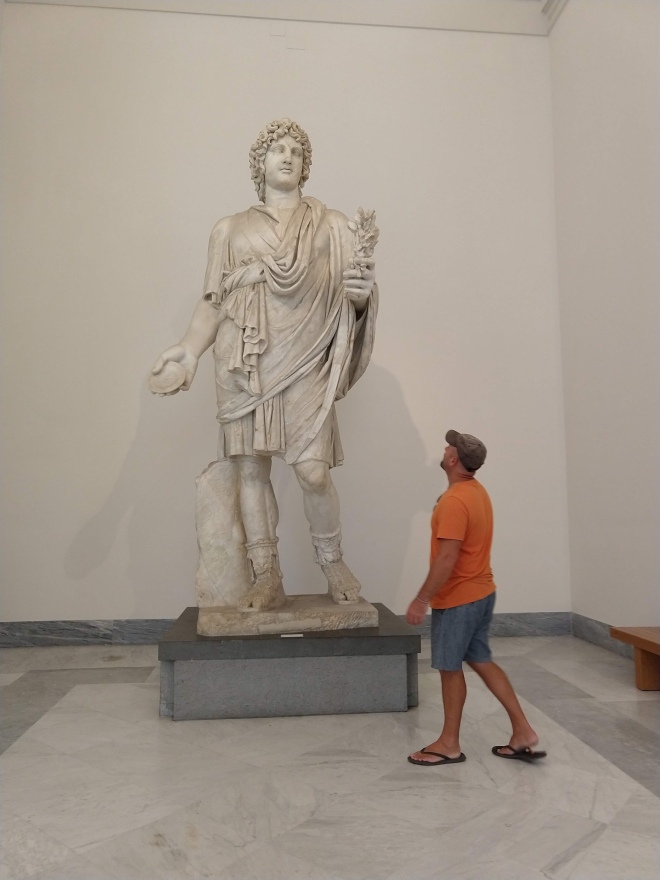
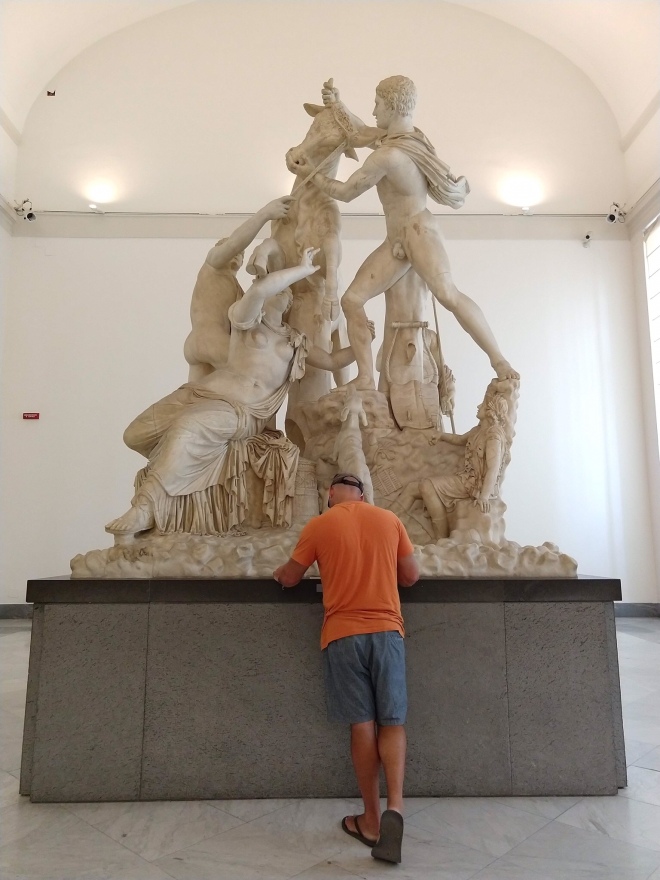
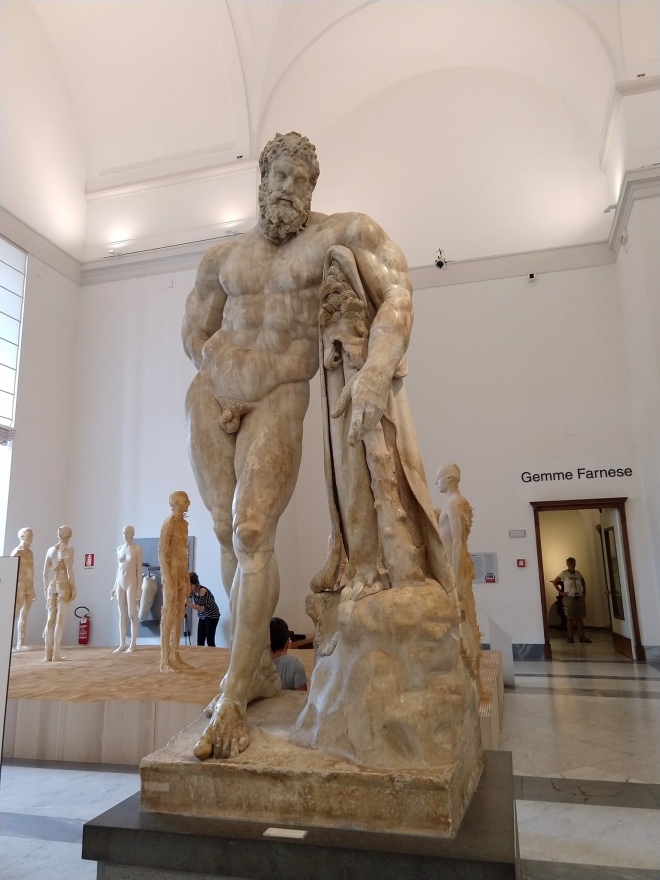
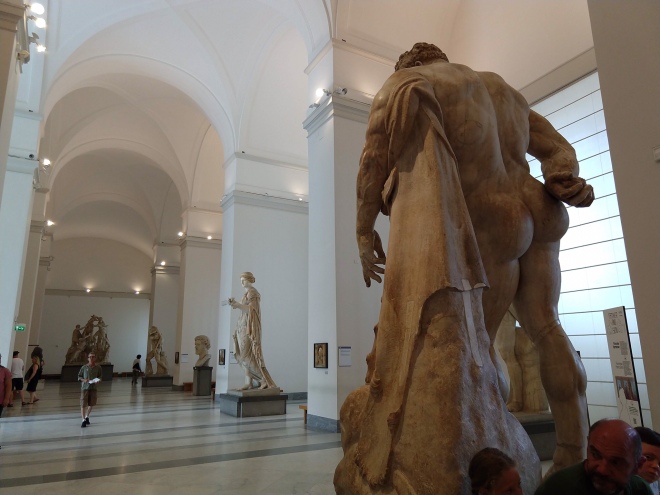
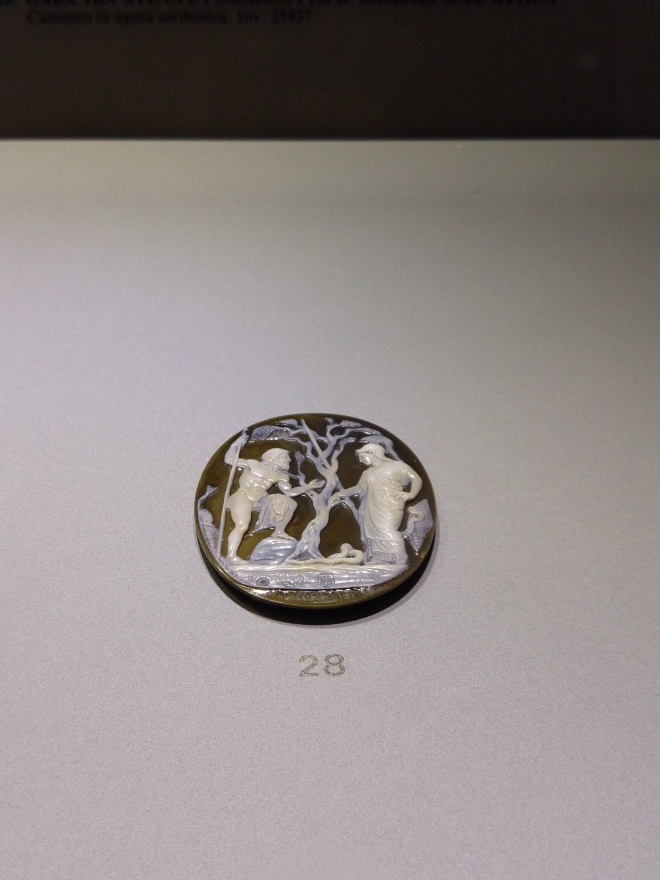
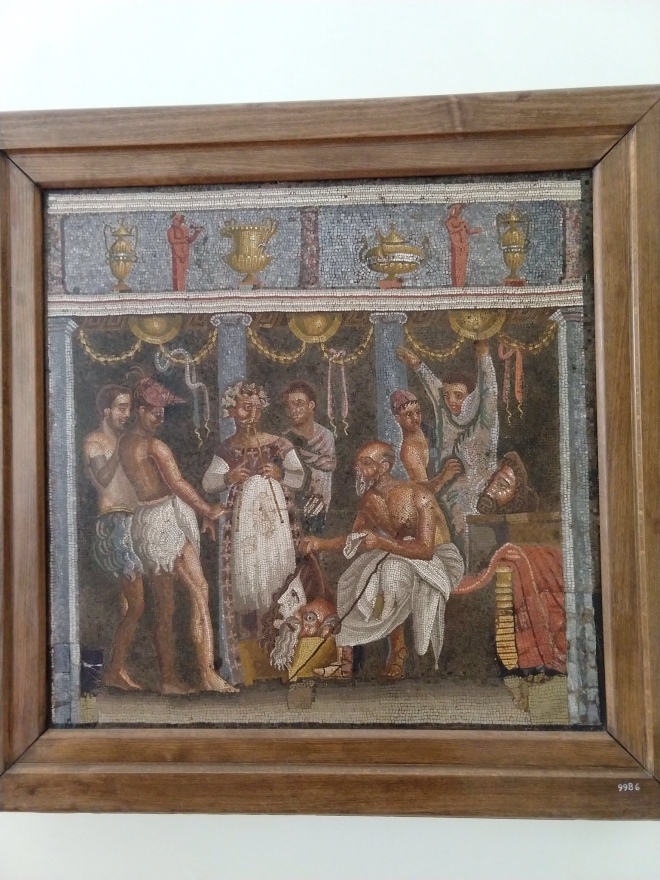
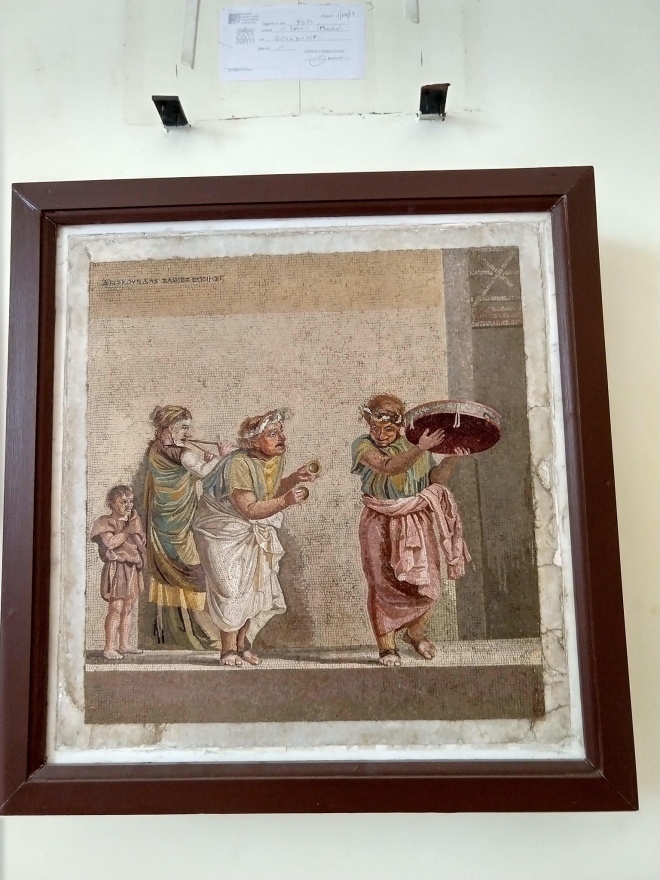
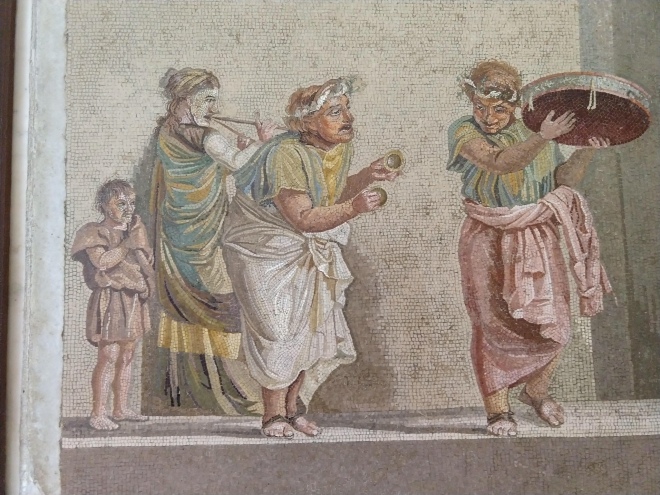
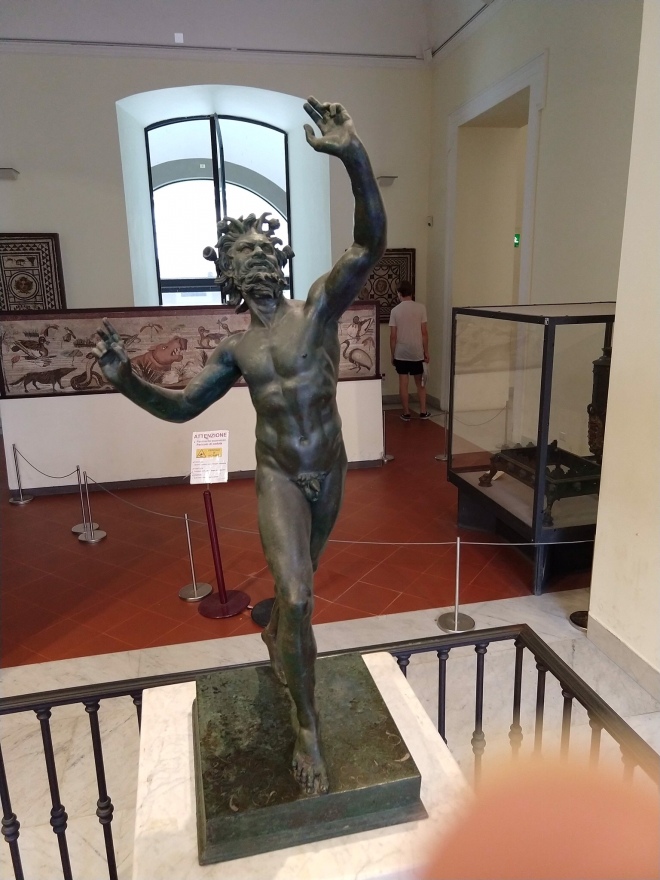
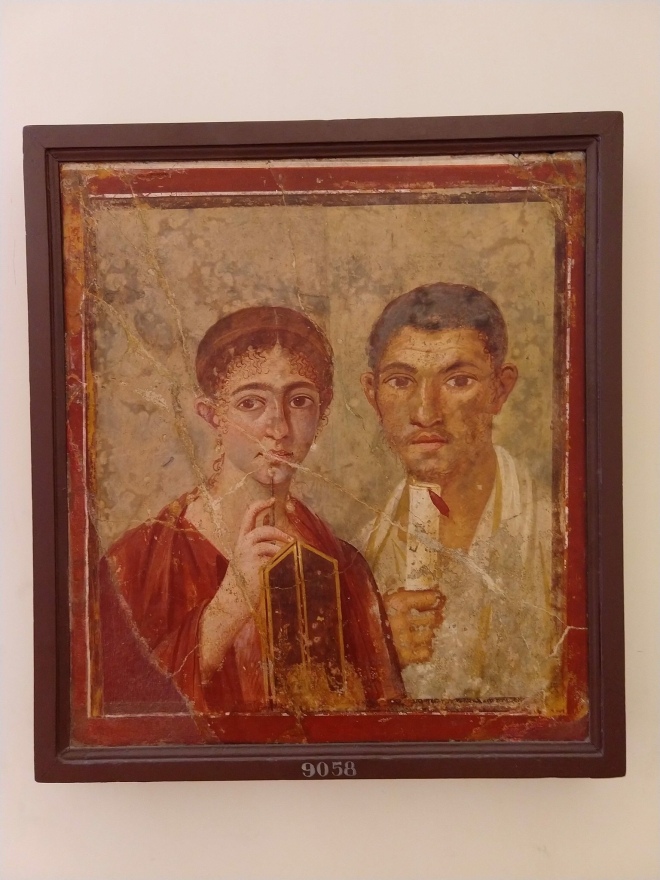
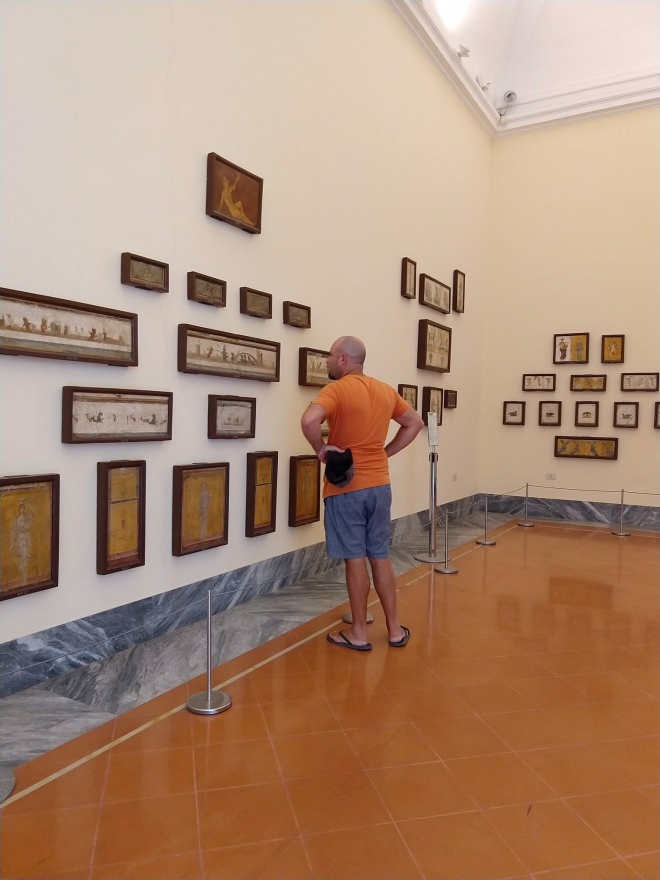
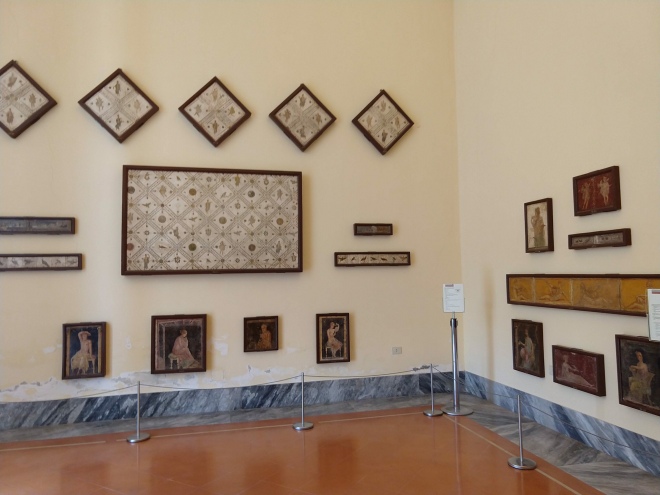
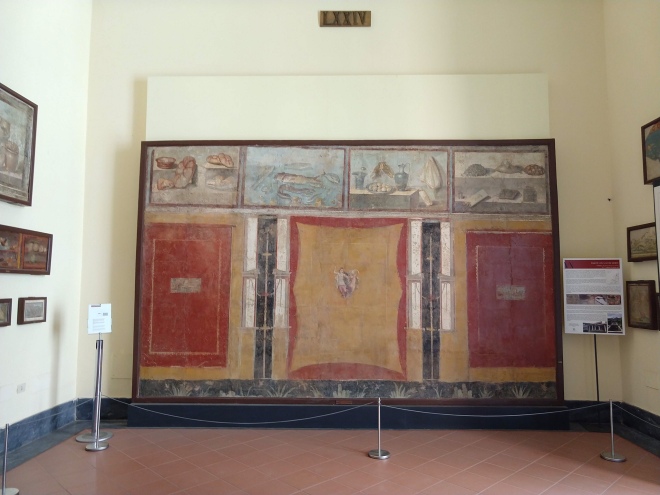
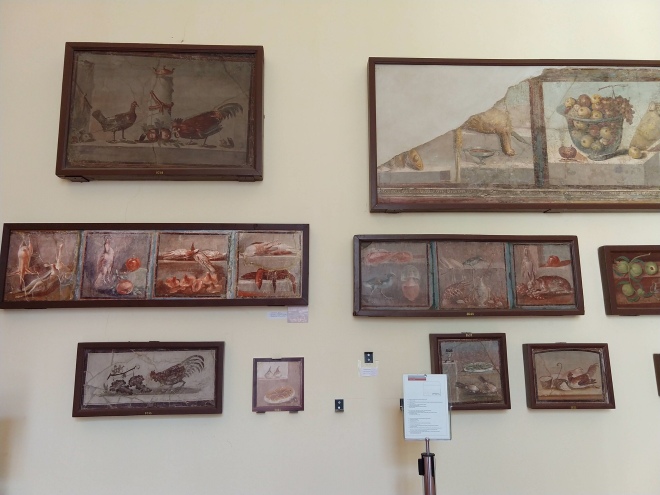
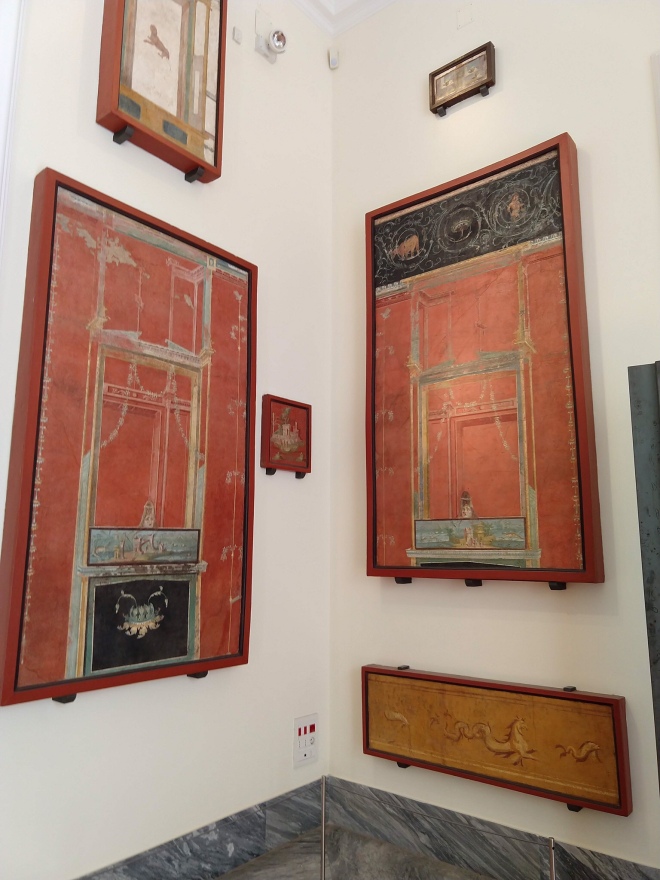
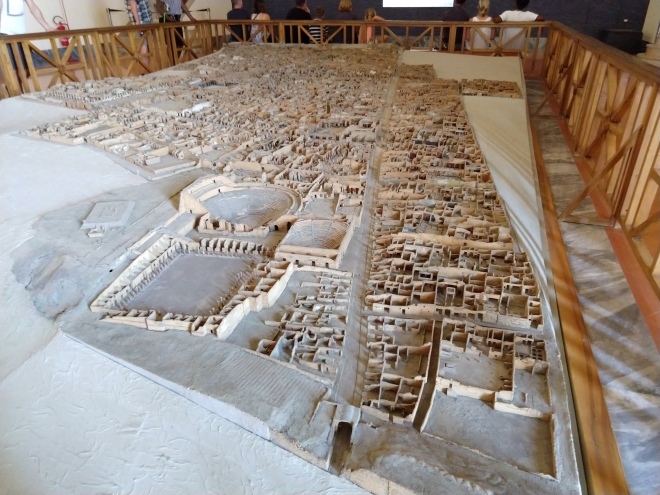
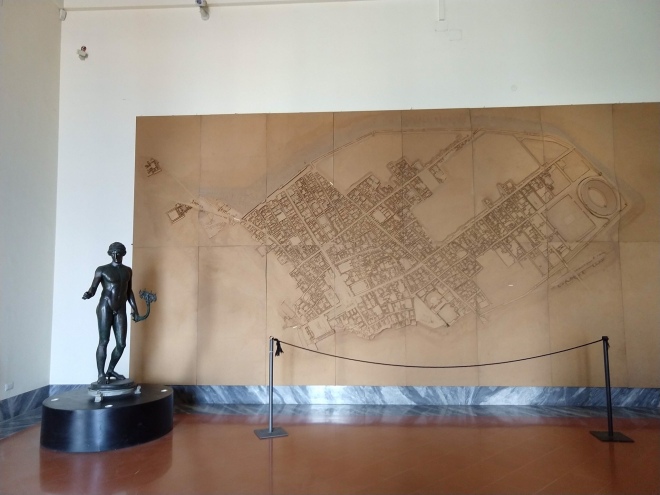
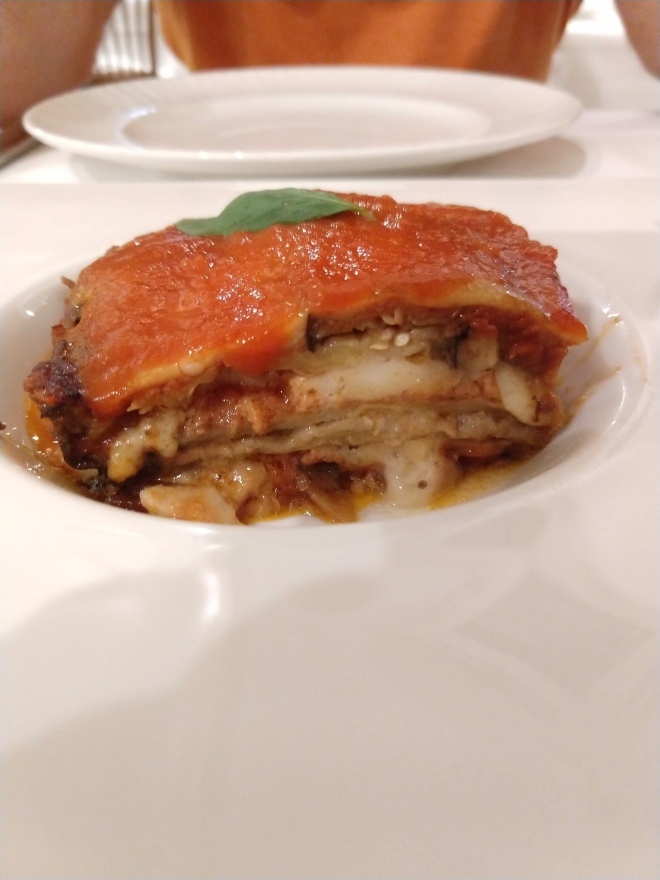
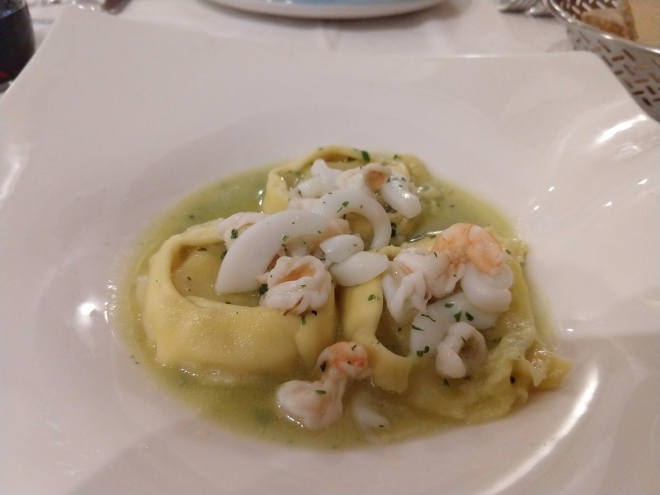
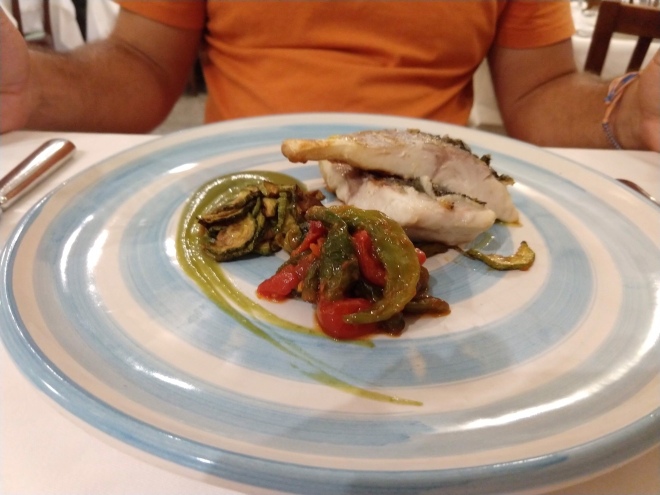
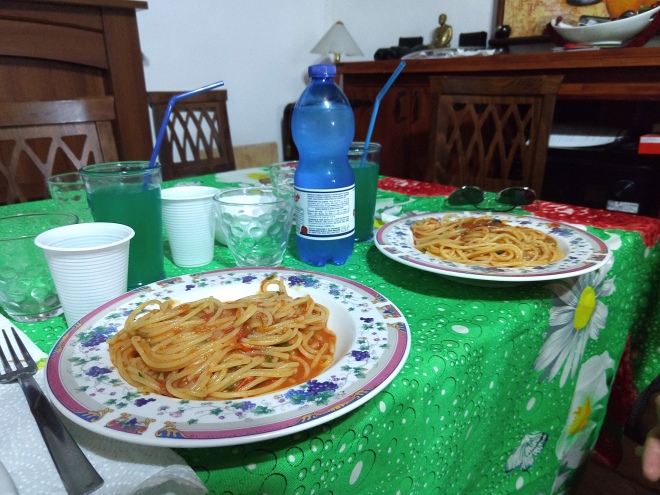
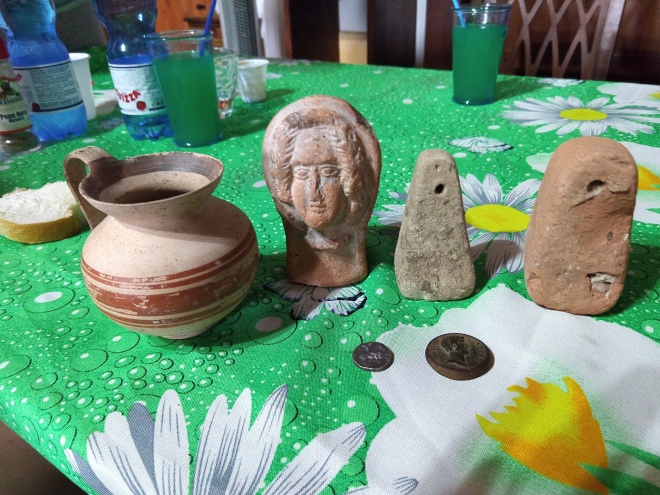
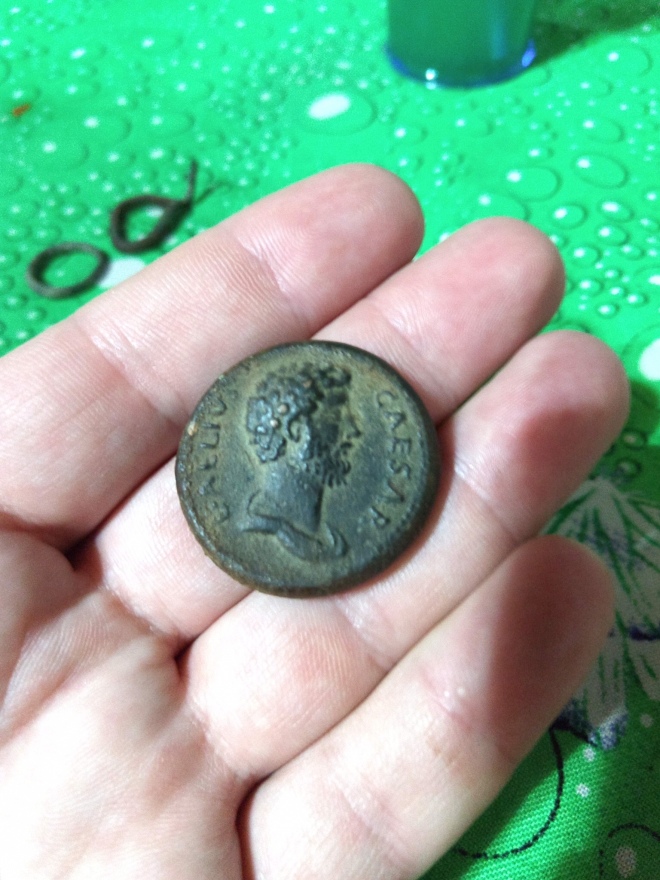
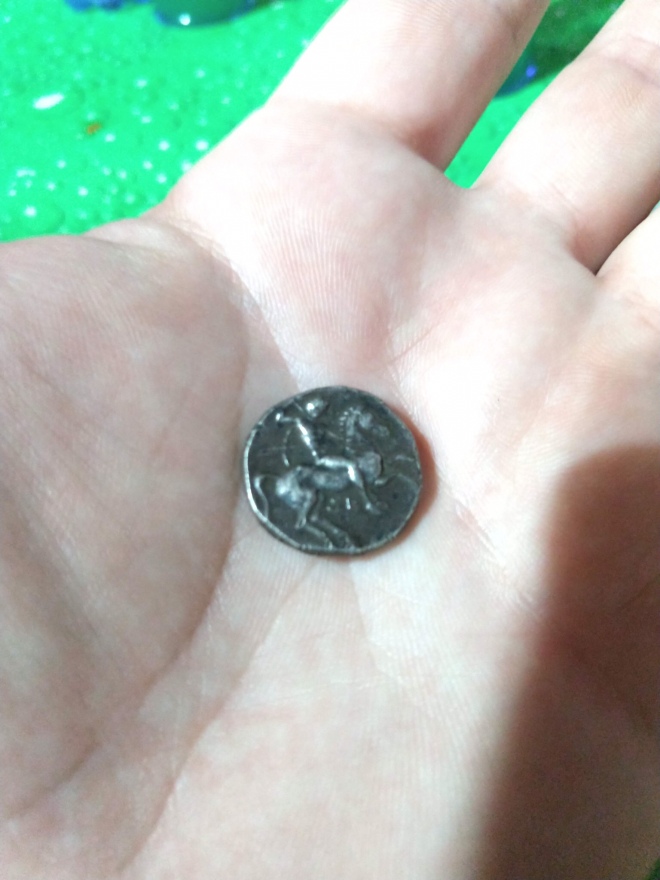
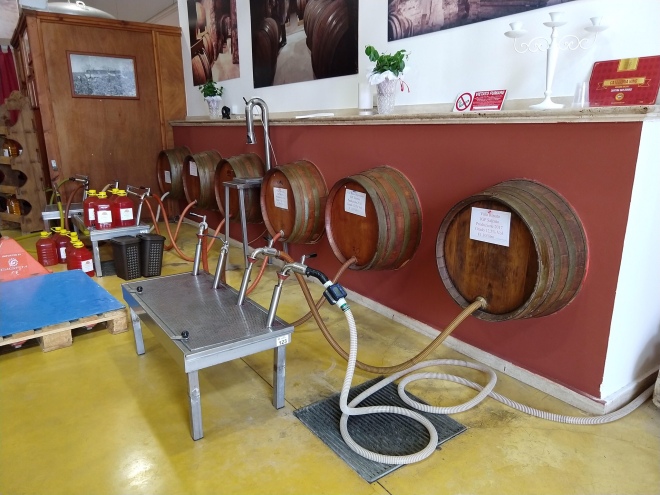
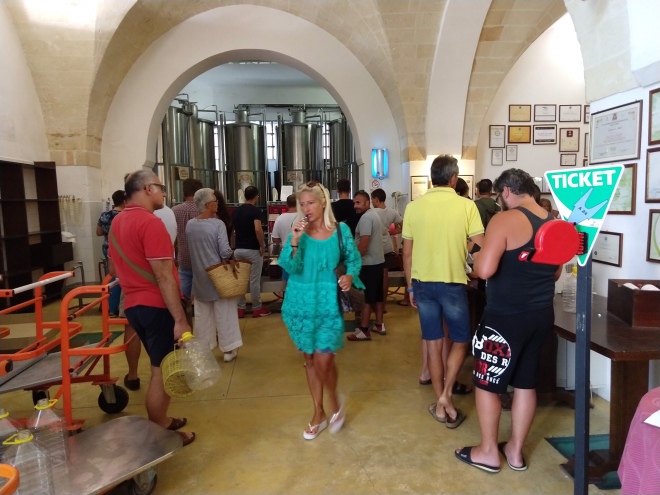
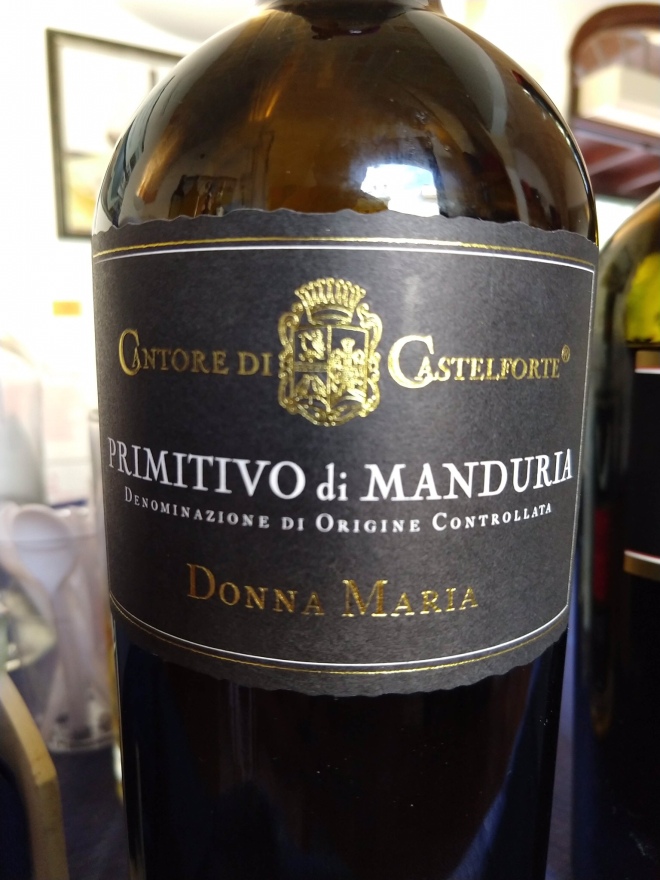
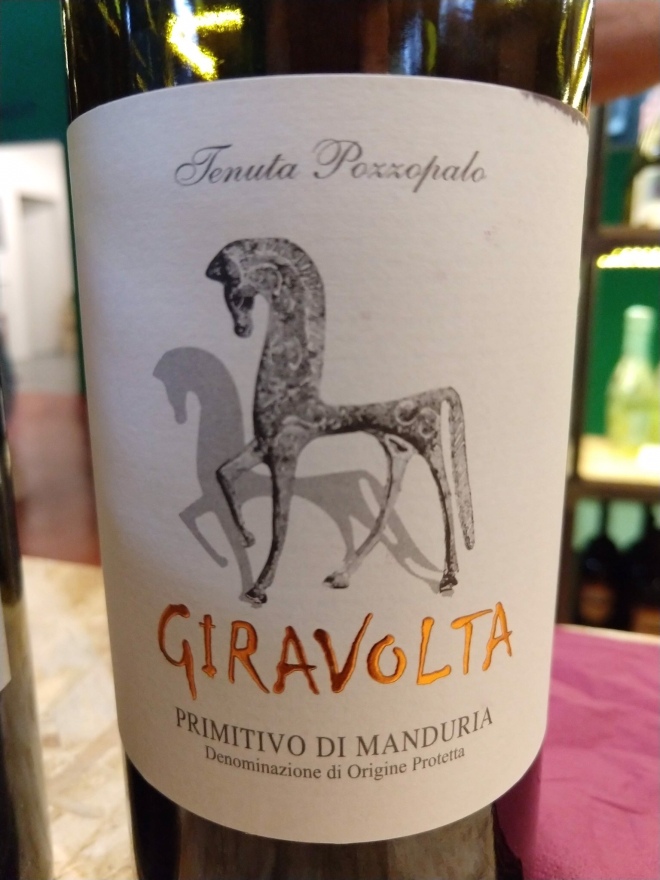
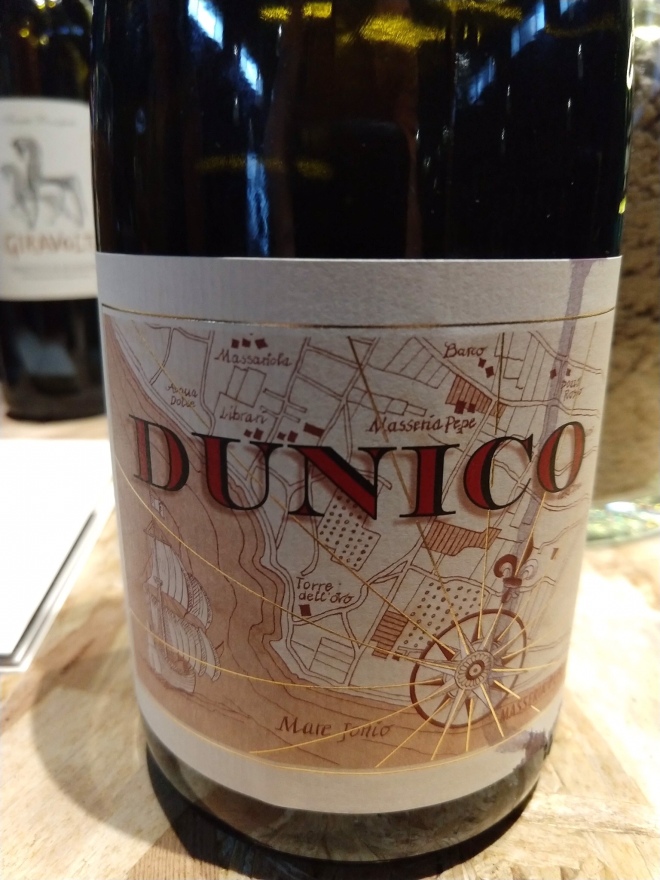
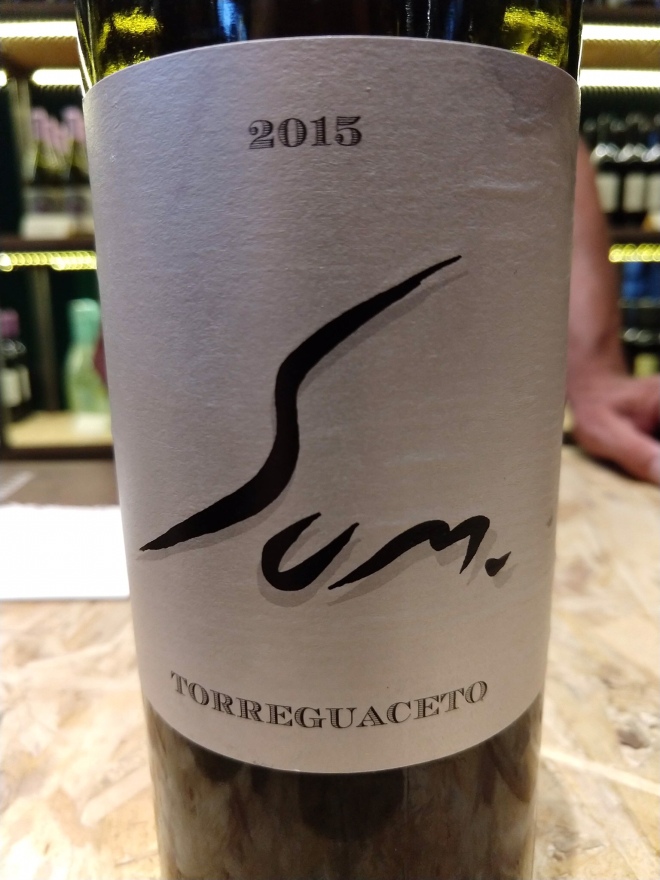
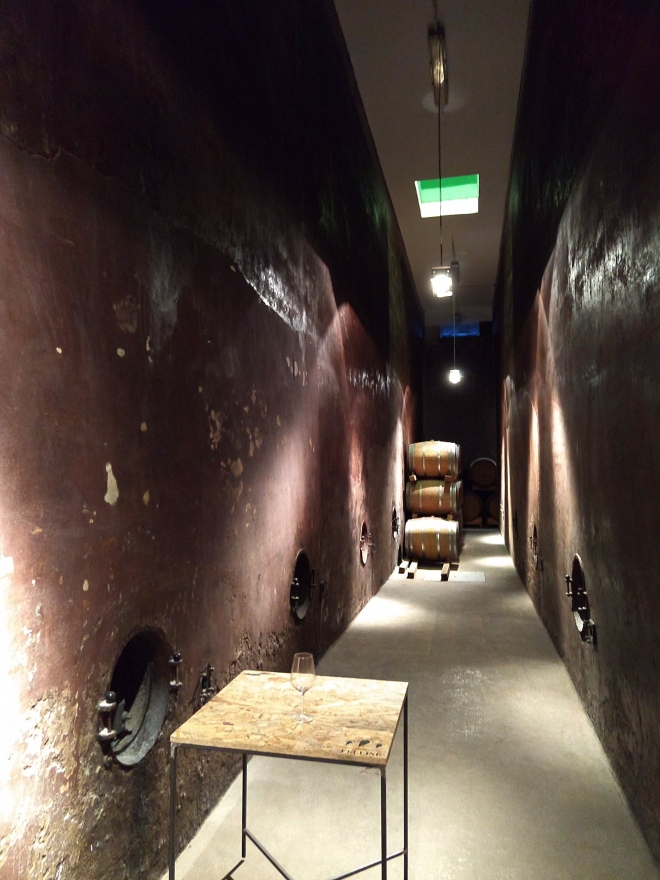
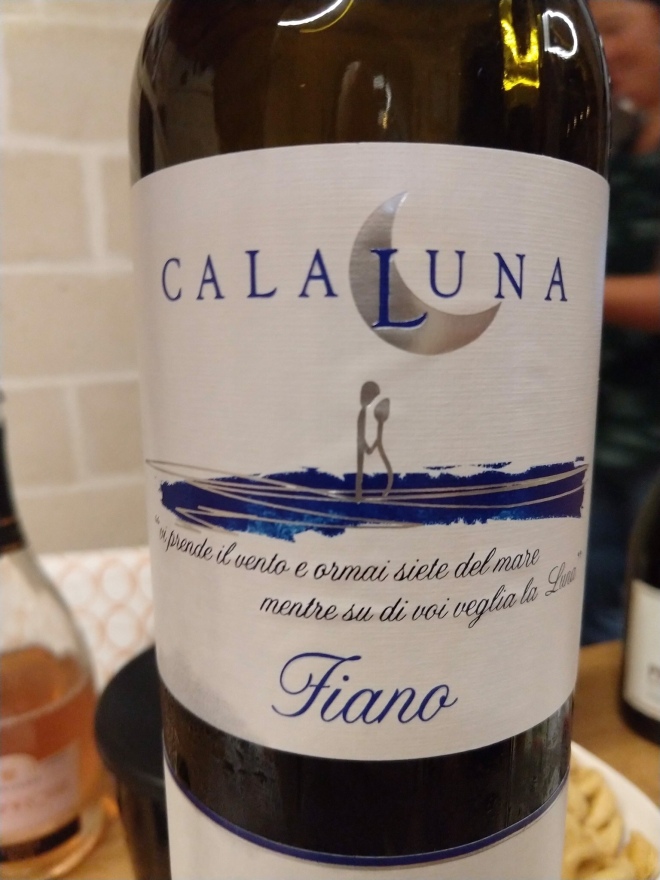
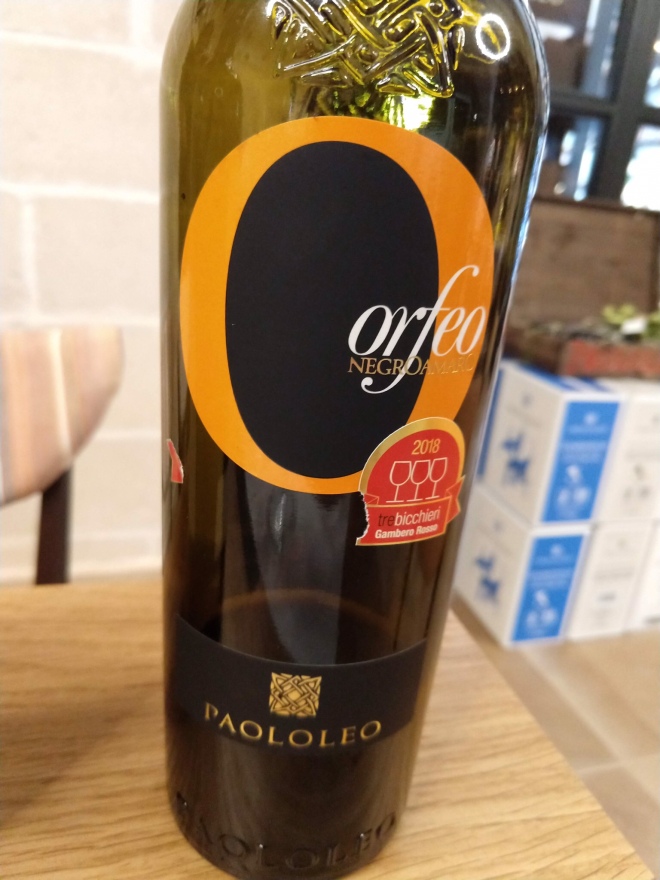
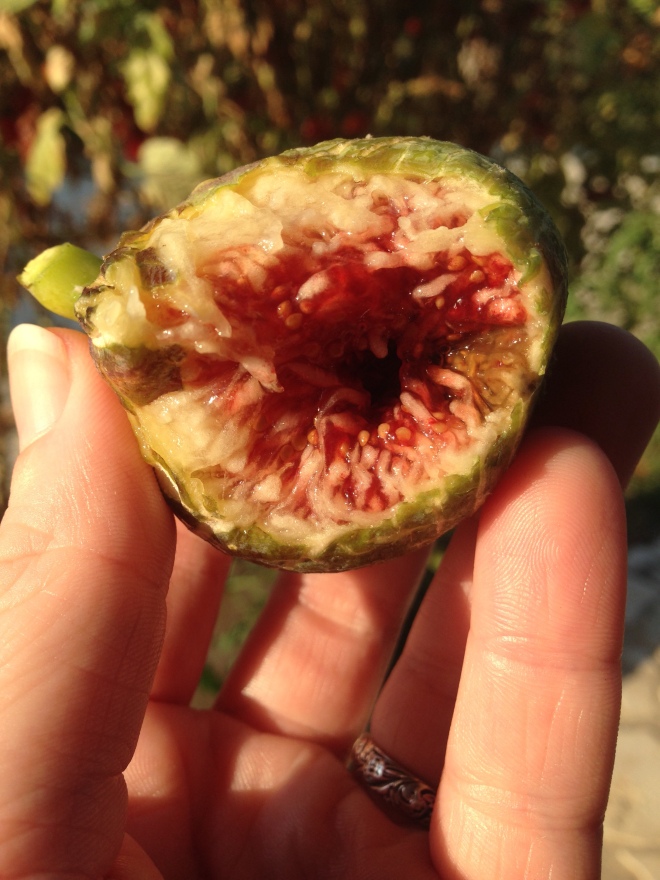
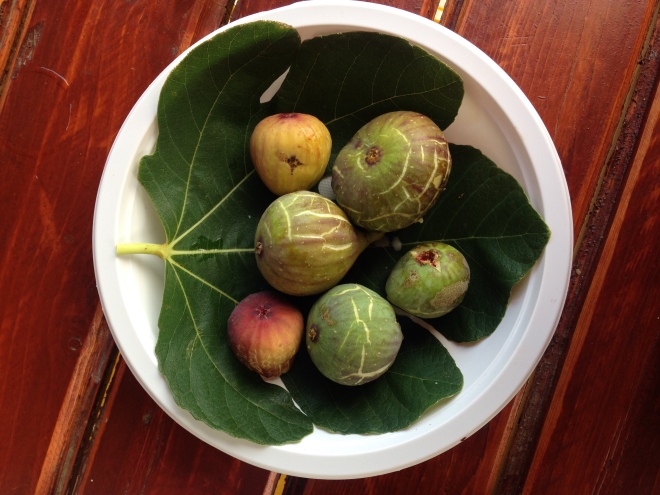
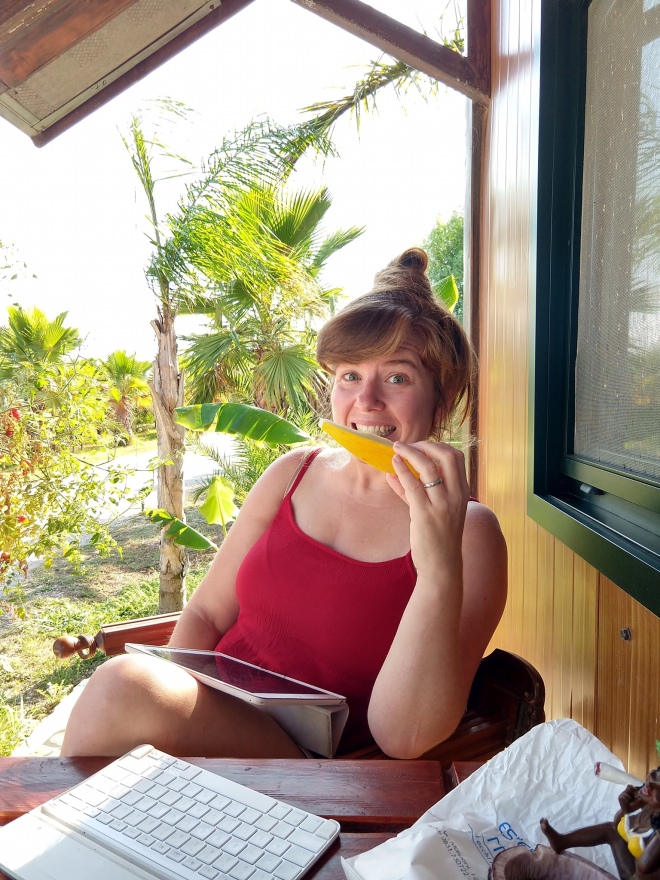
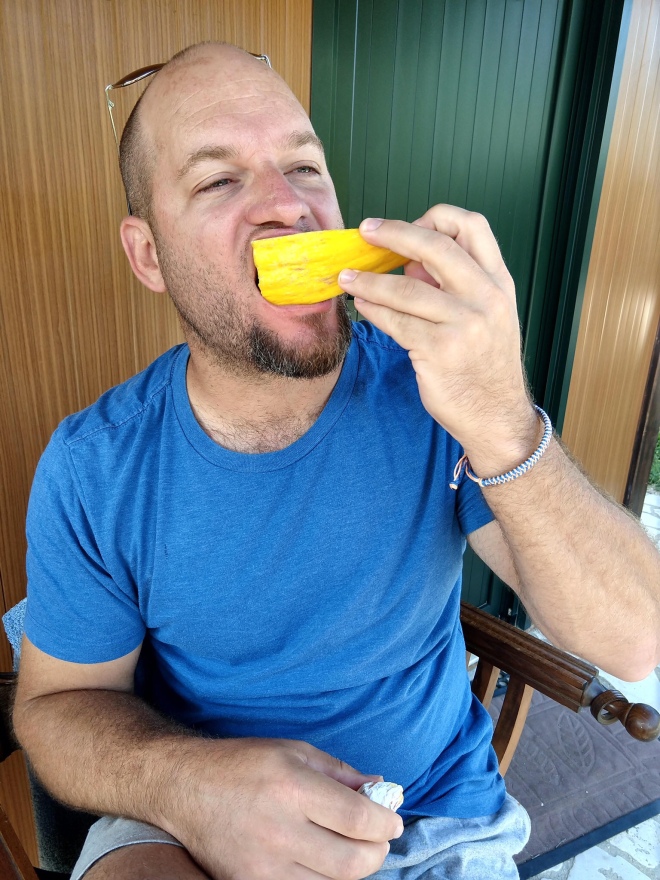
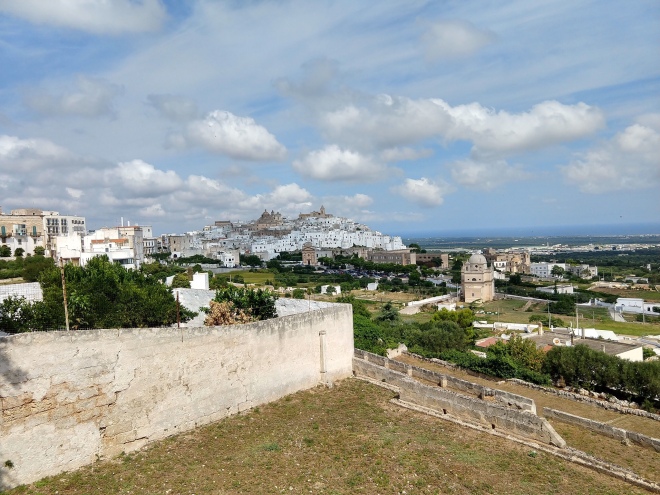
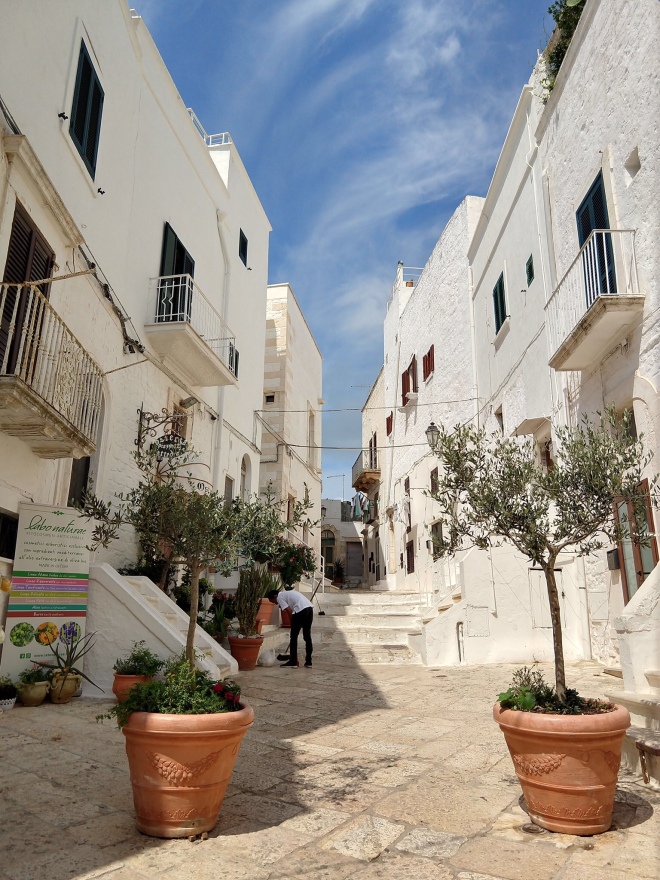
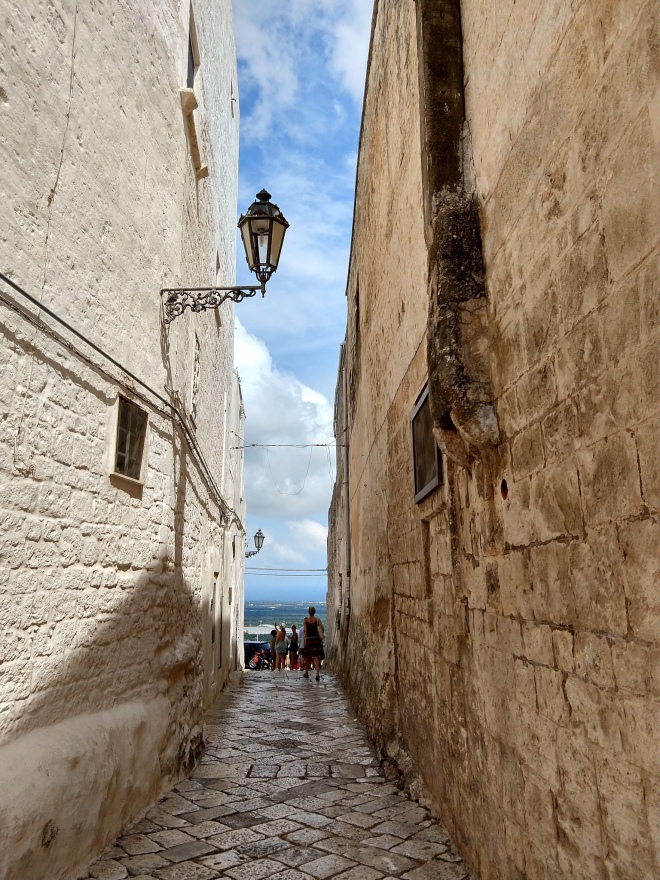

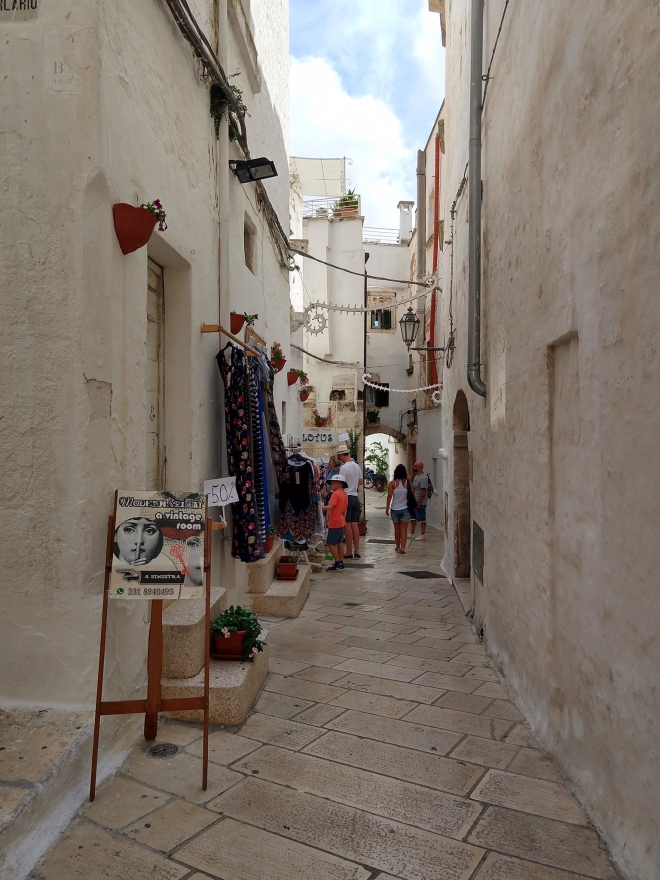
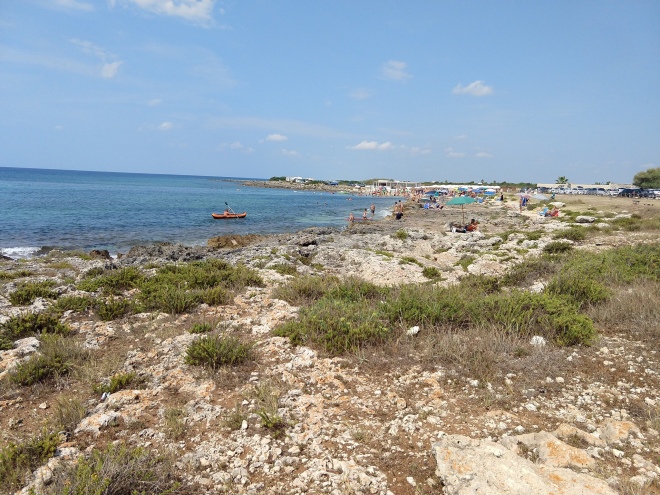
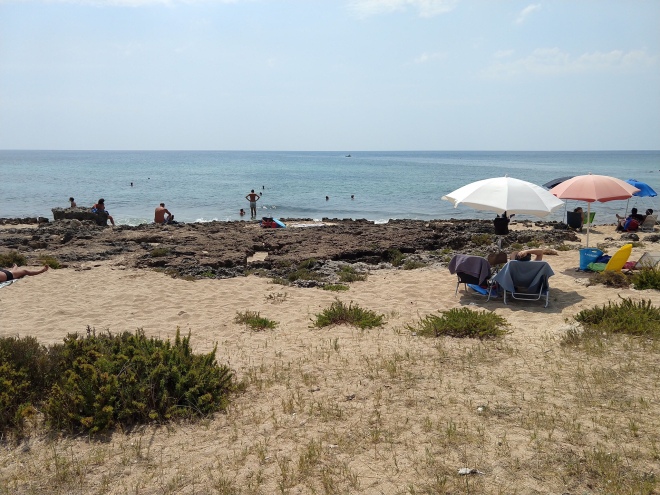
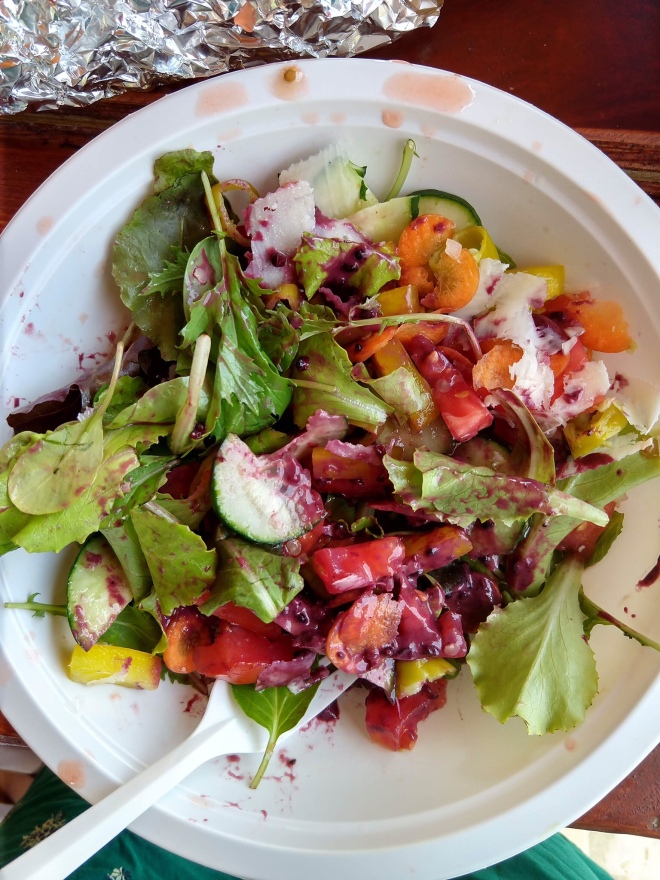
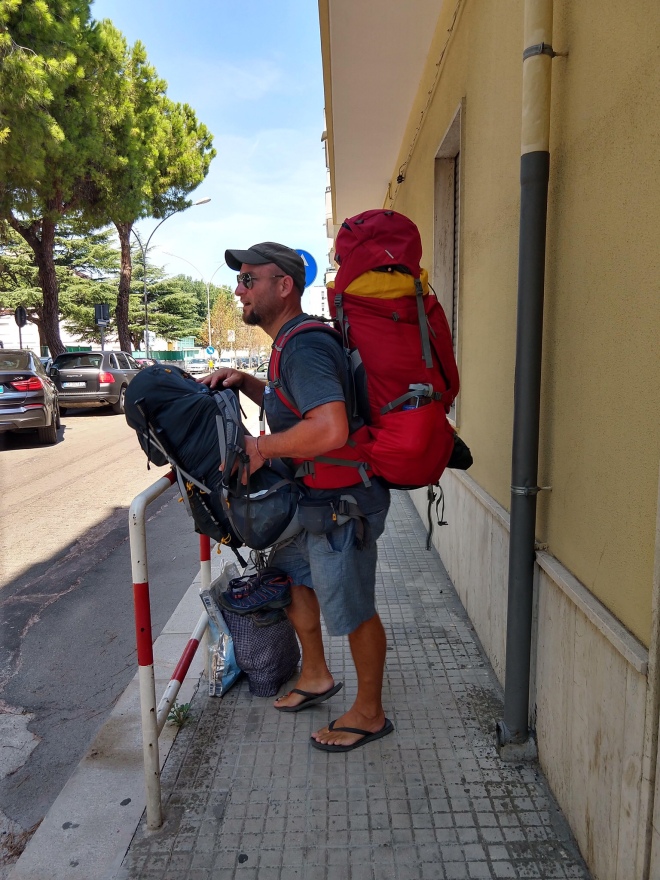
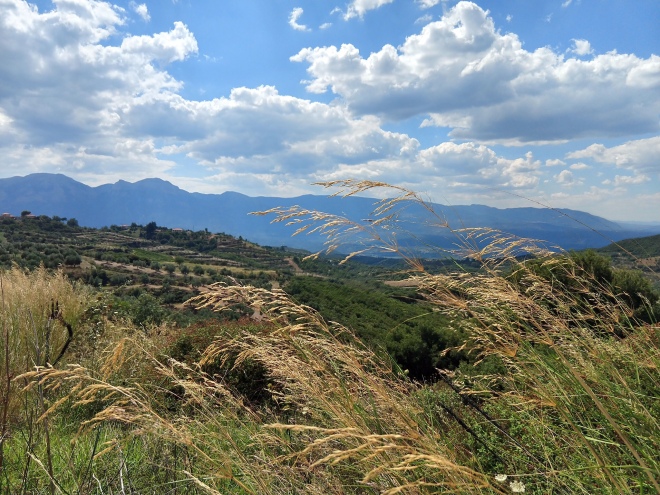
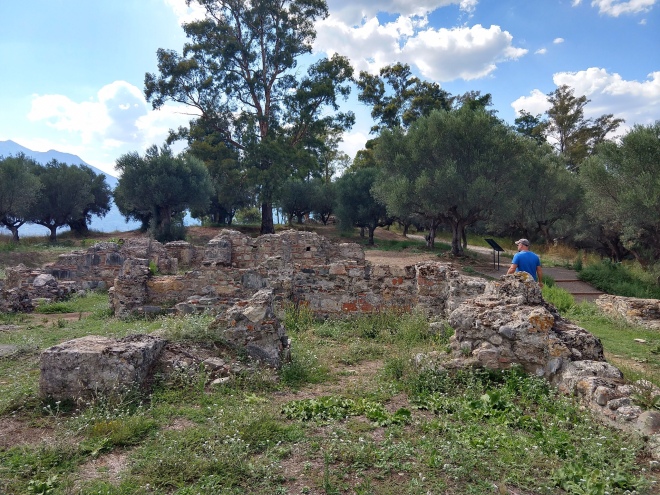
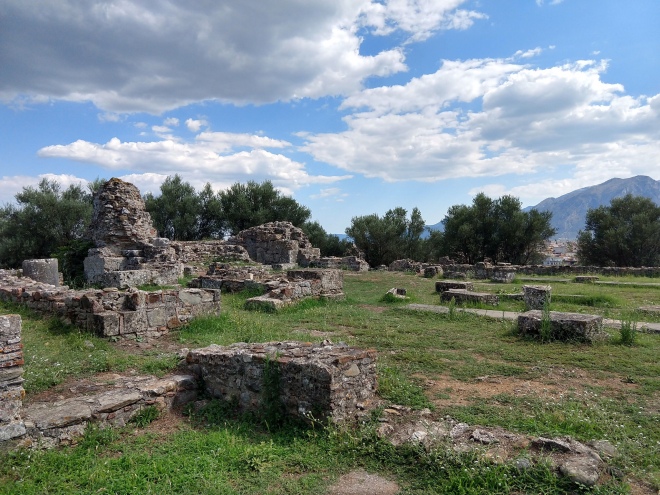
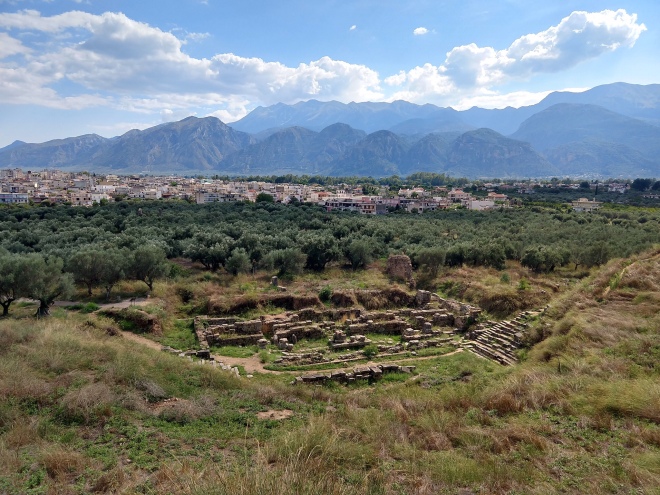
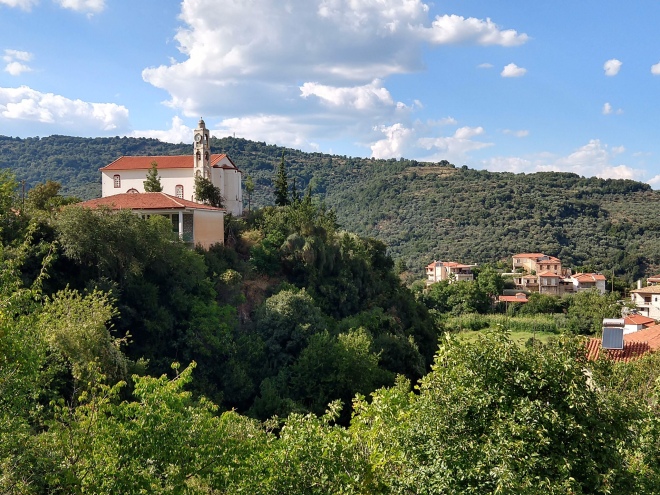

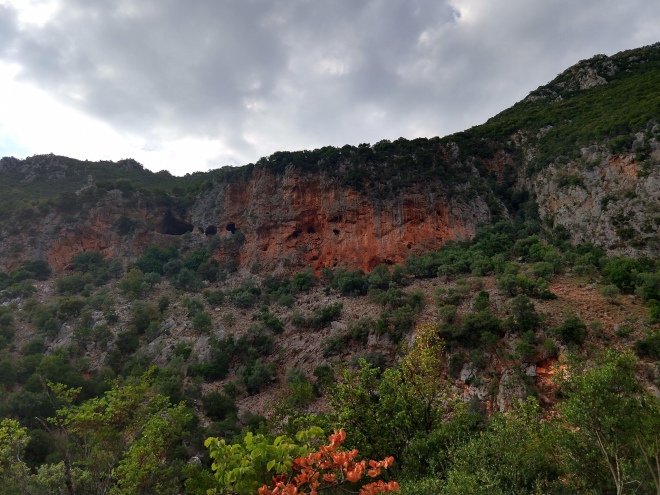
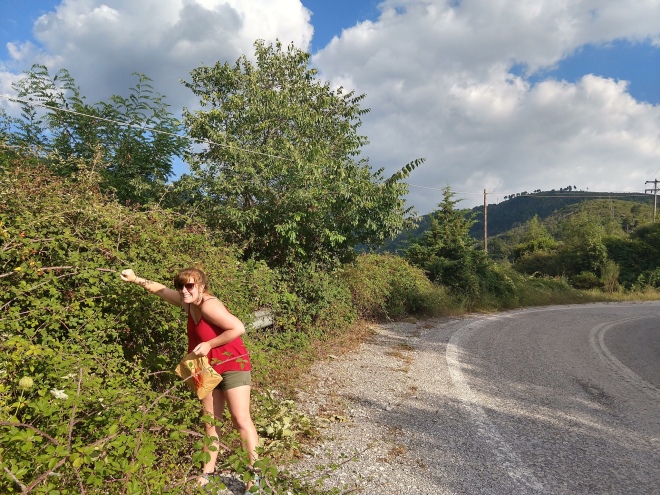
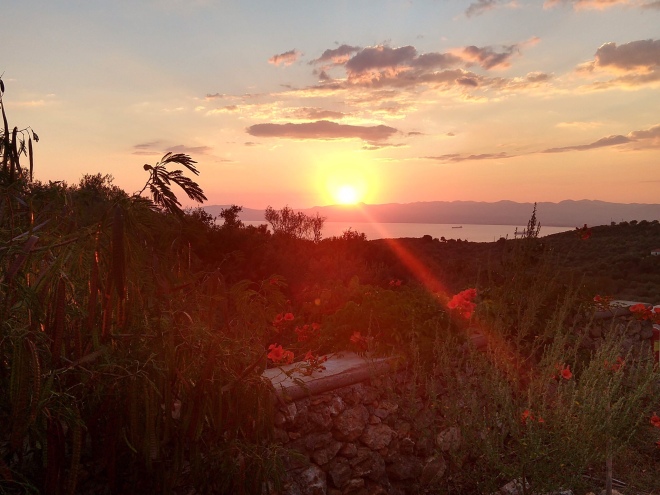
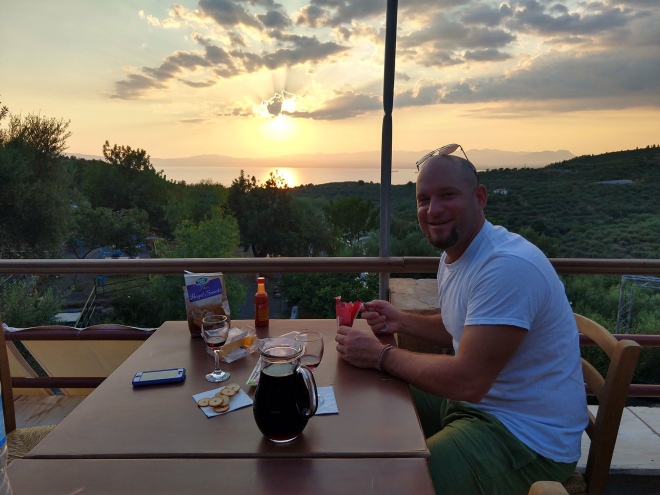
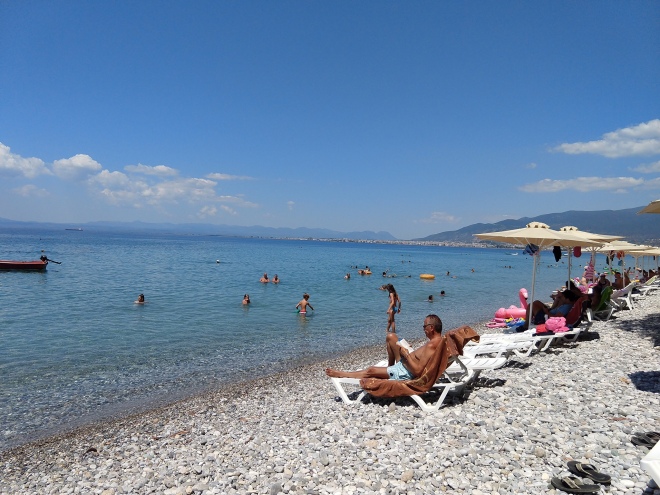
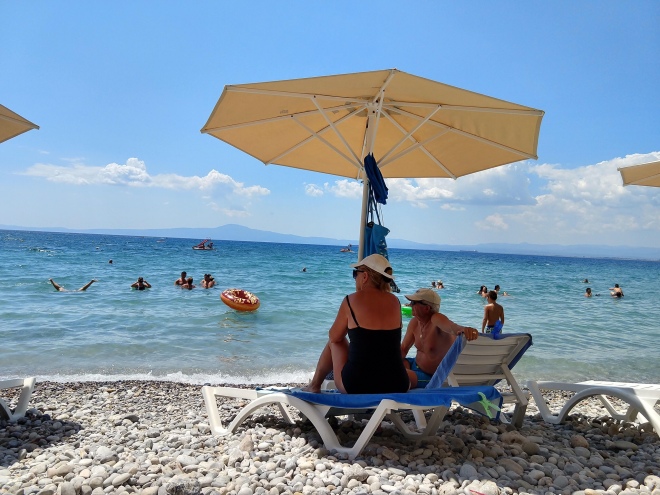
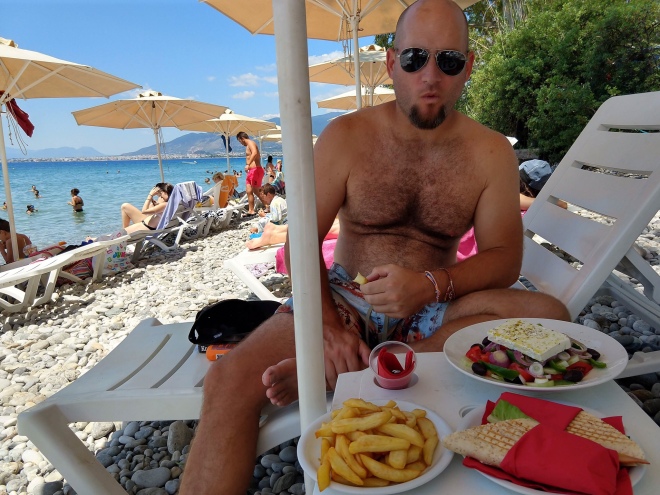
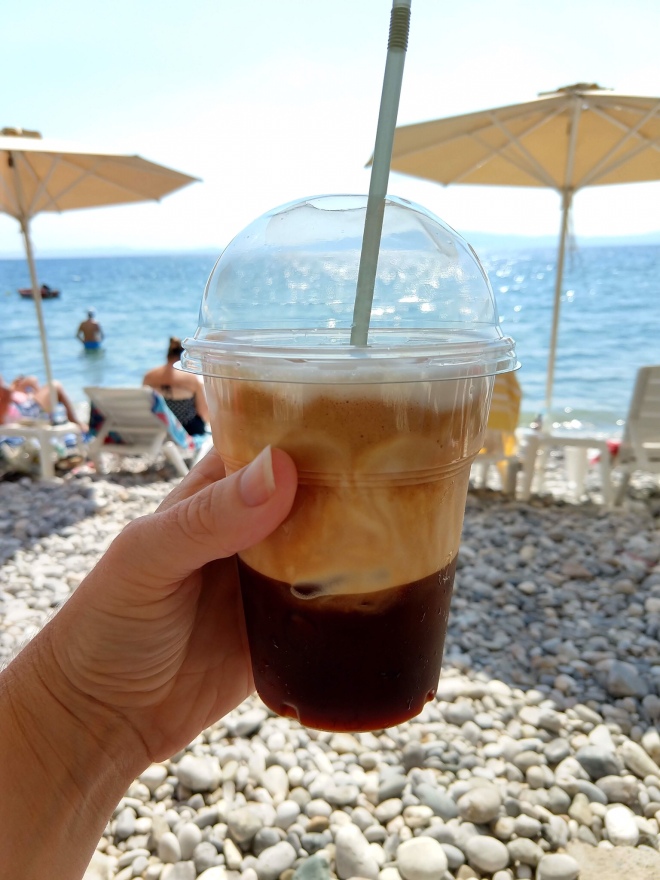
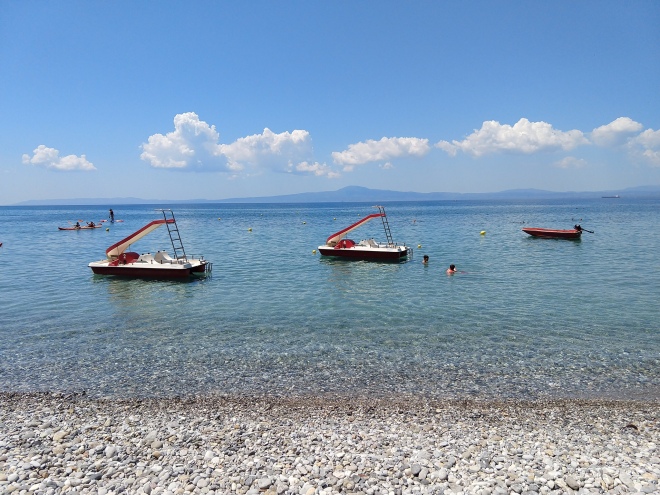
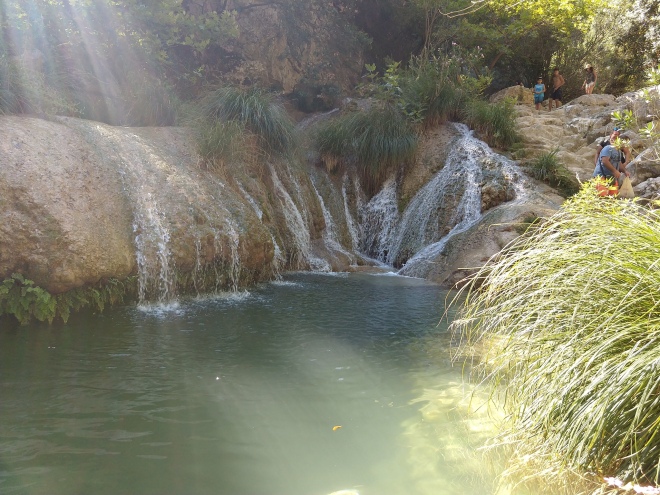
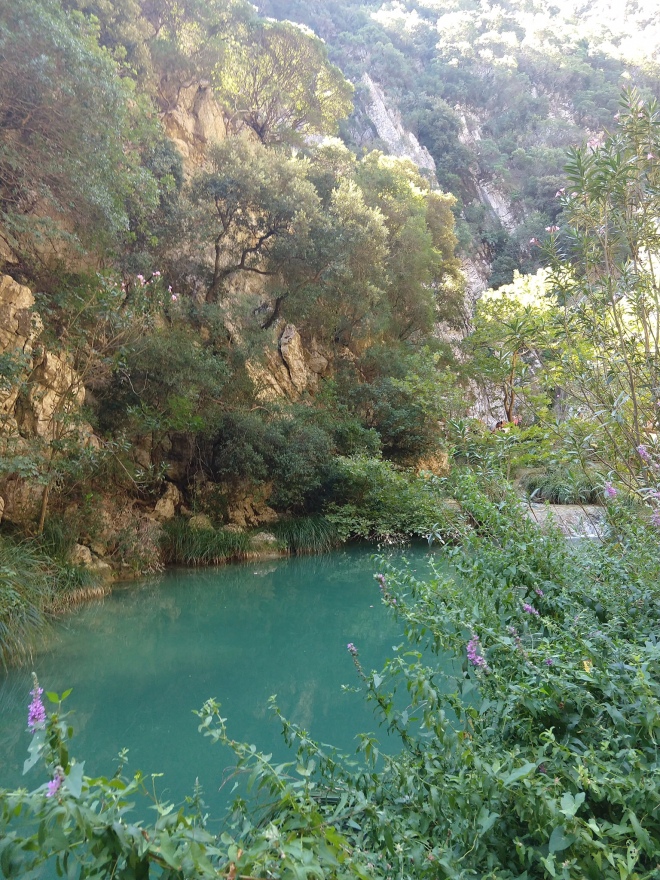
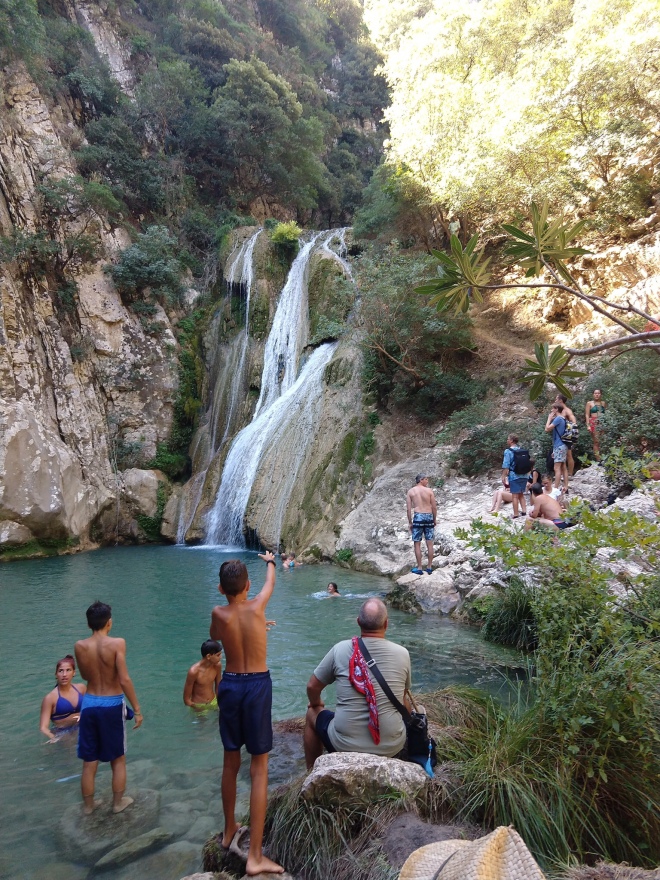

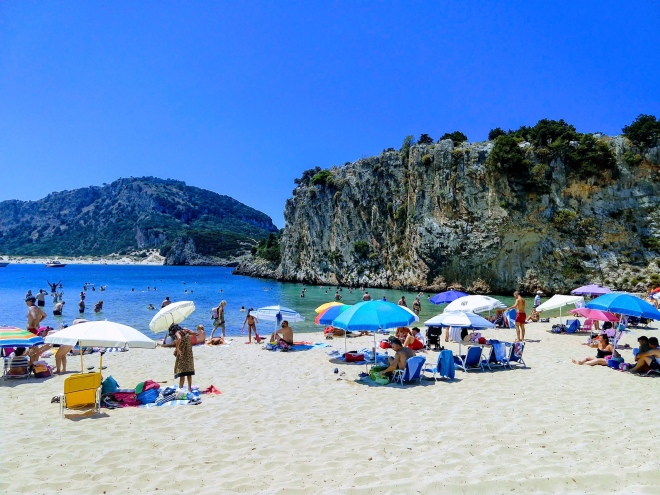
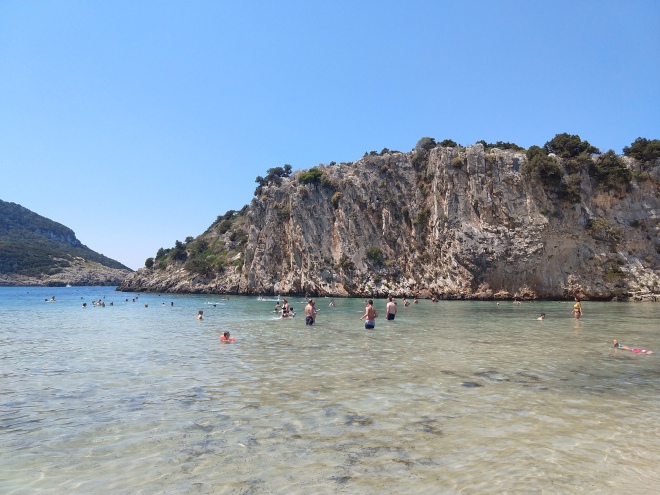
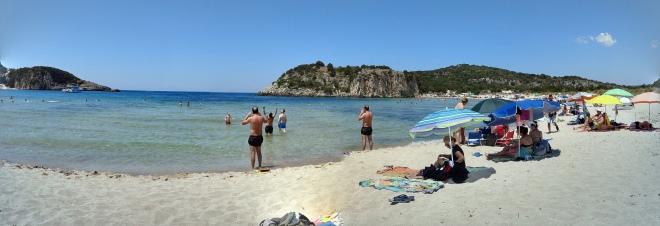
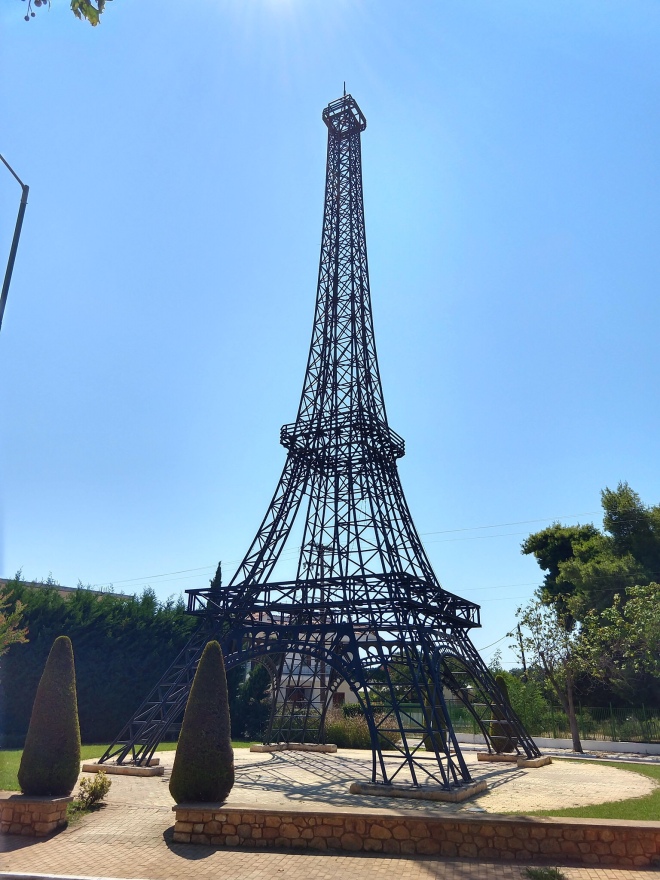
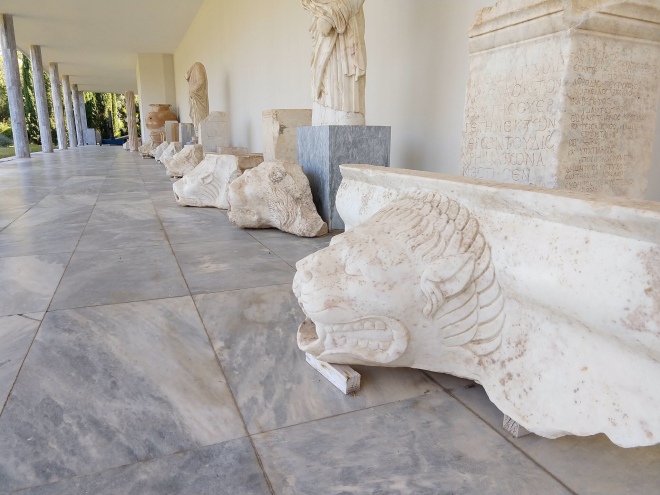
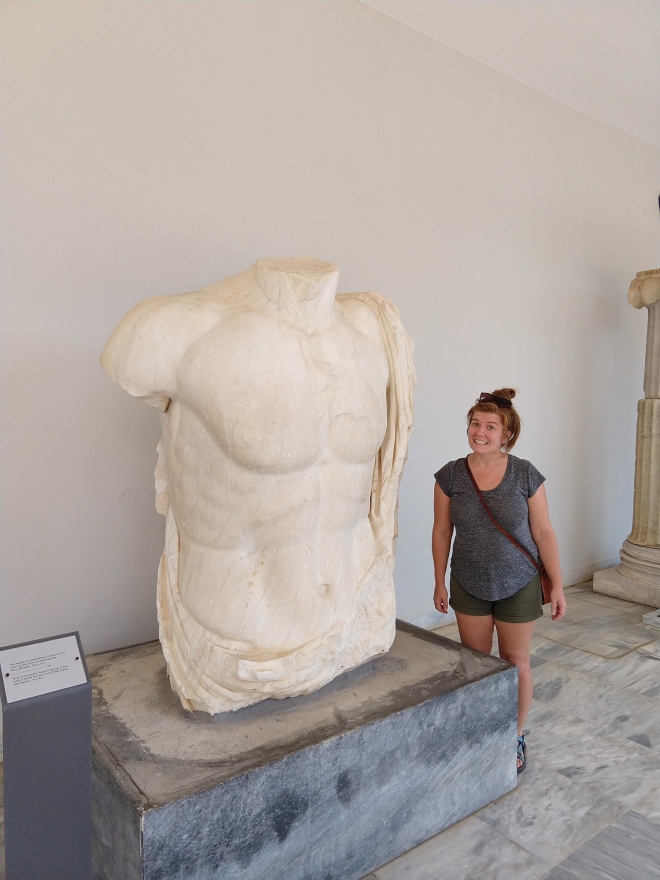
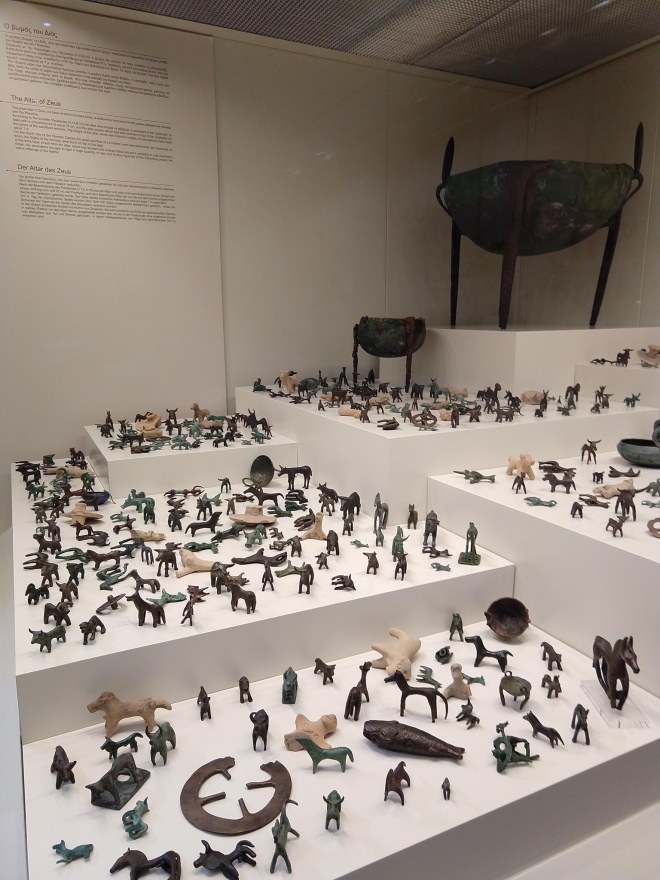
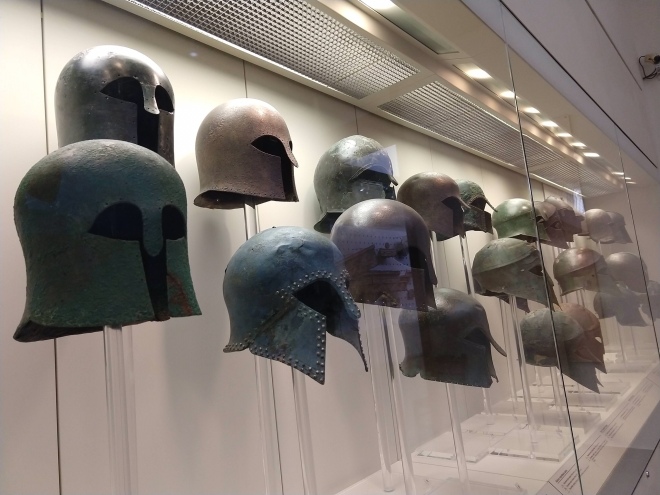
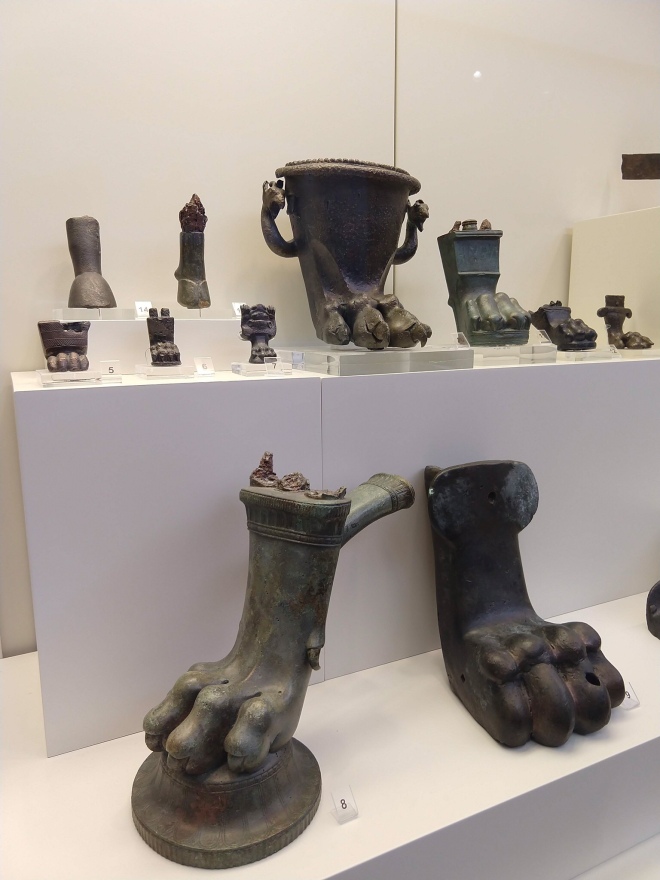
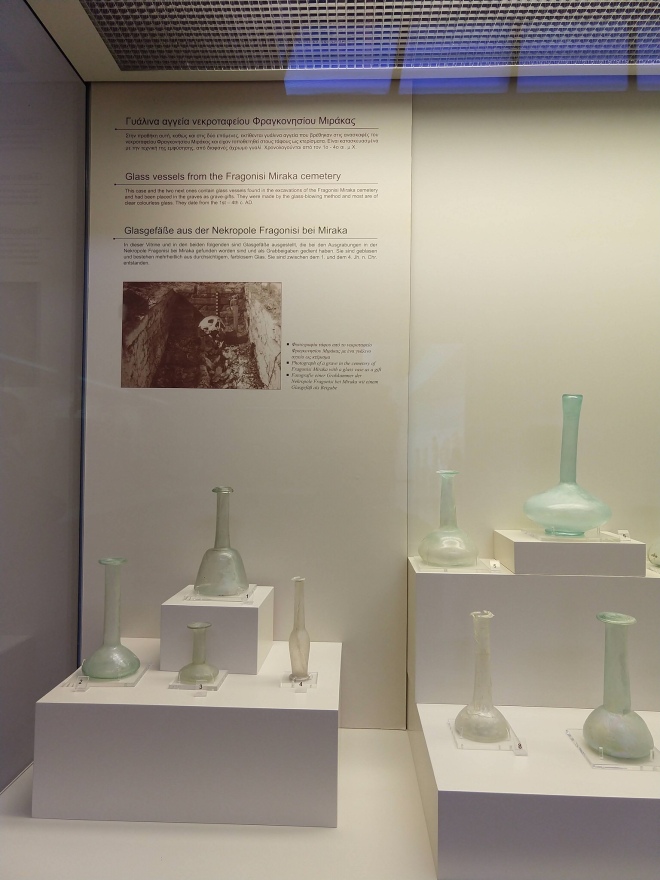
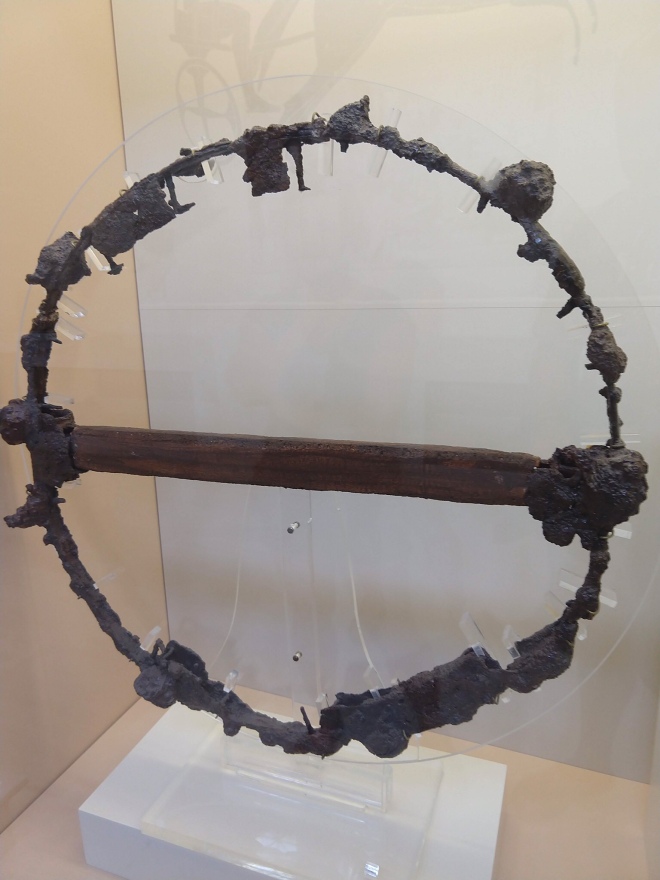

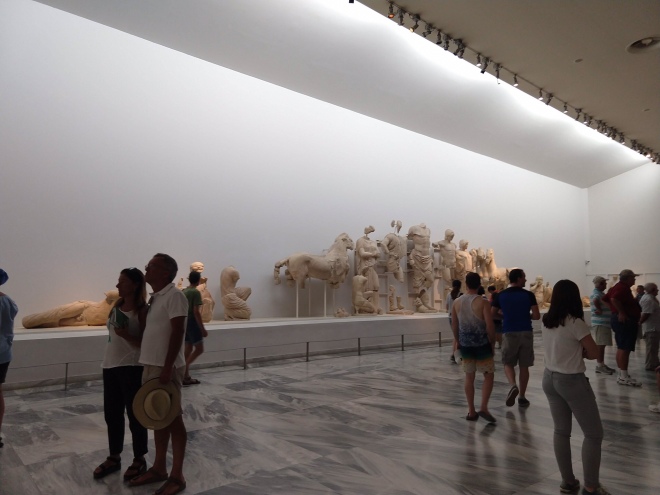
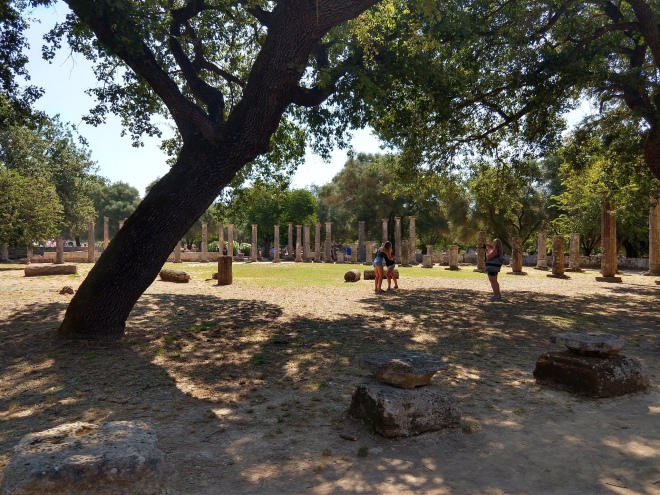
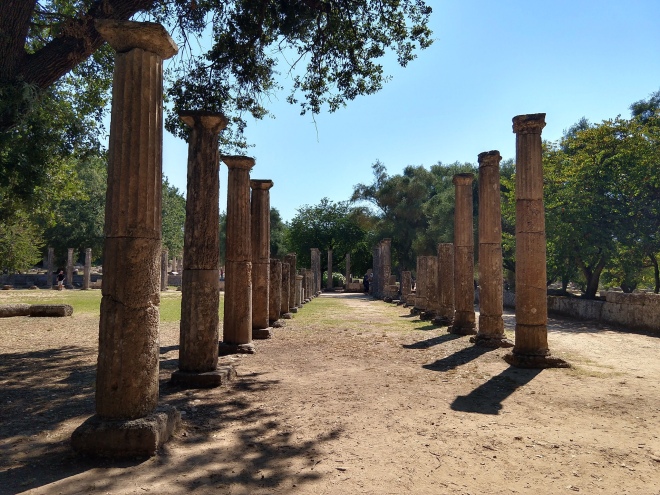
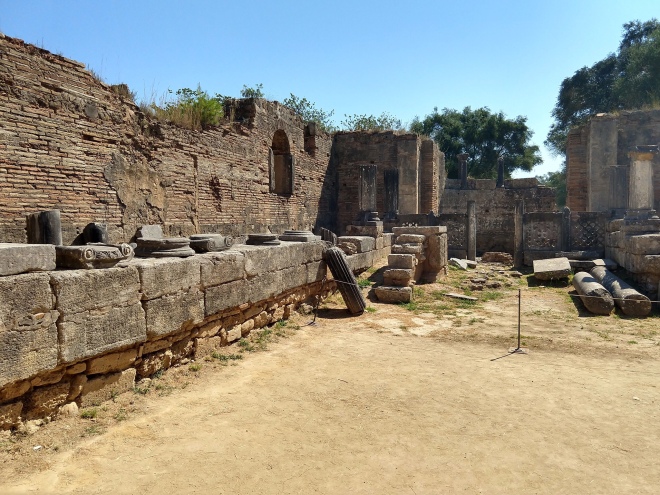
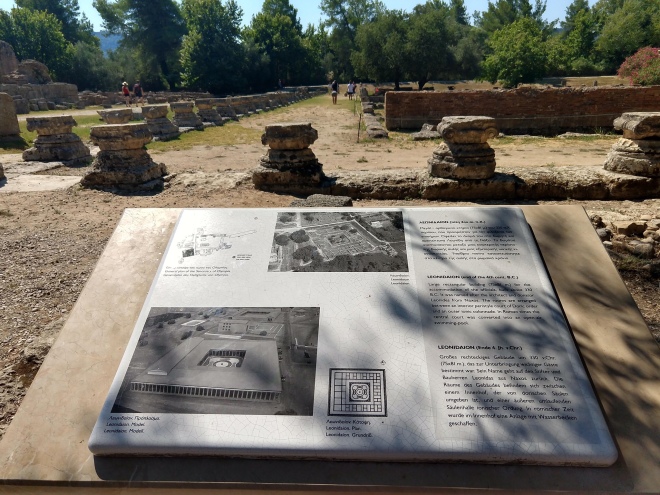
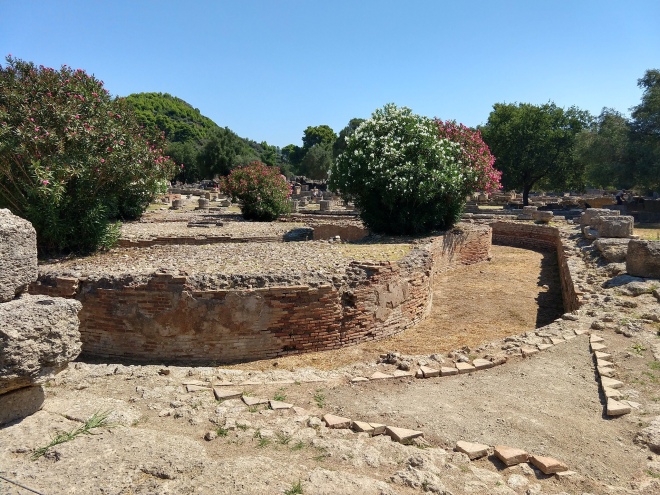
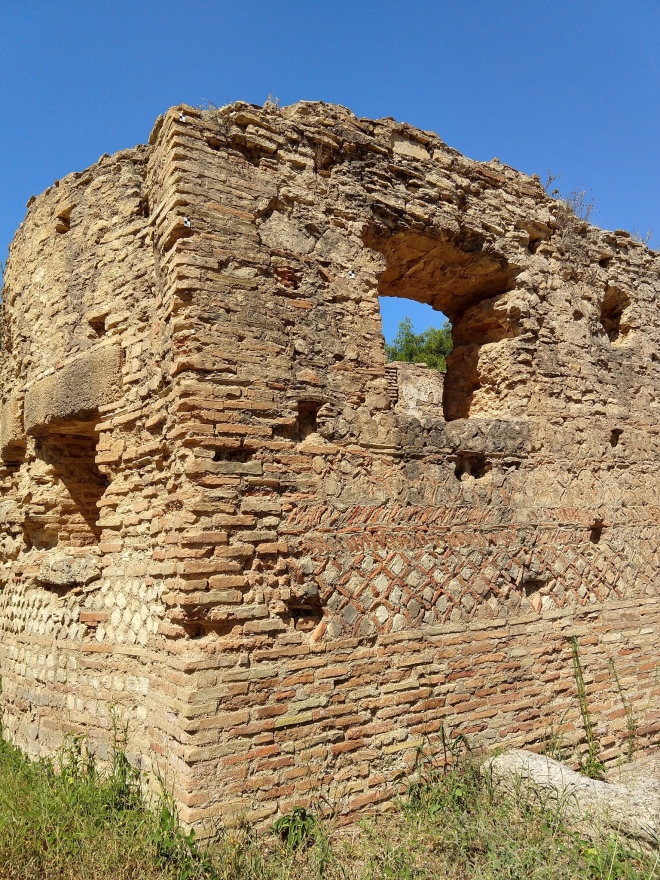
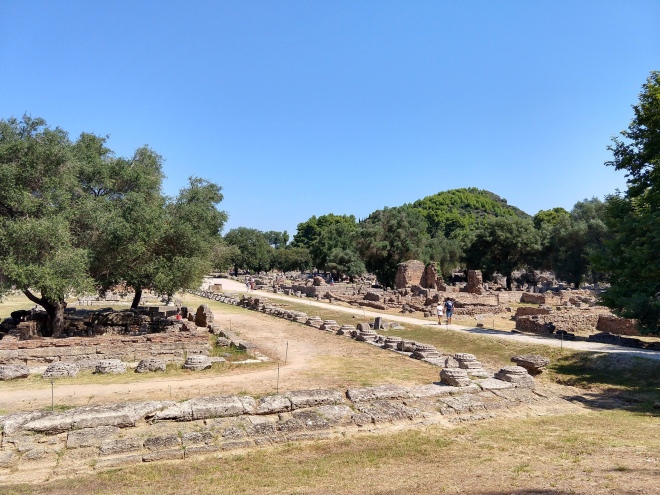
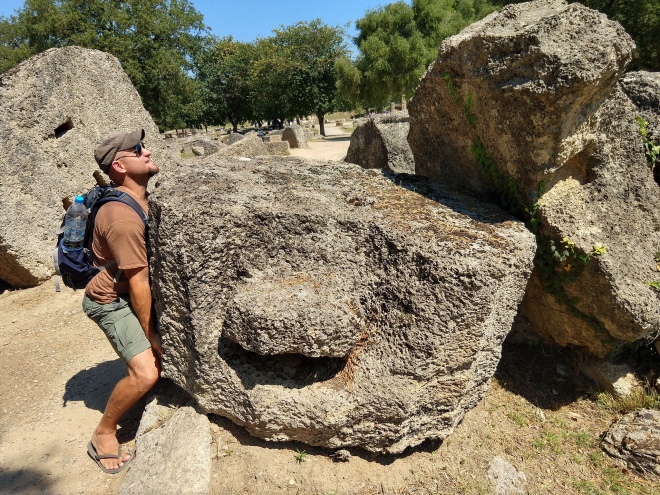 I told Kirk to stand next to the pieces to show size – he one upped me :)!
I told Kirk to stand next to the pieces to show size – he one upped me :)!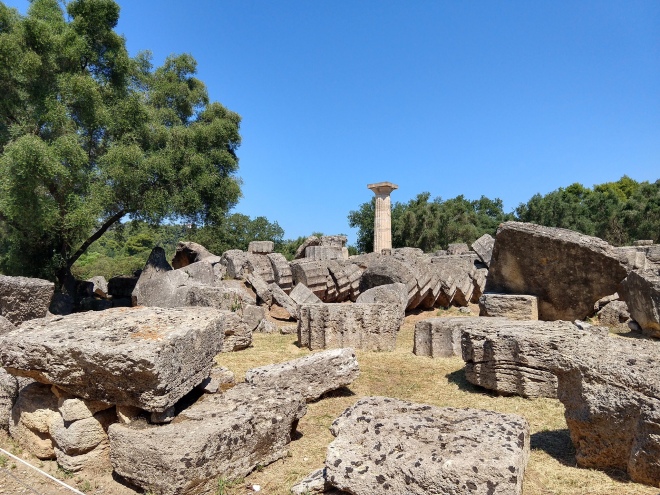
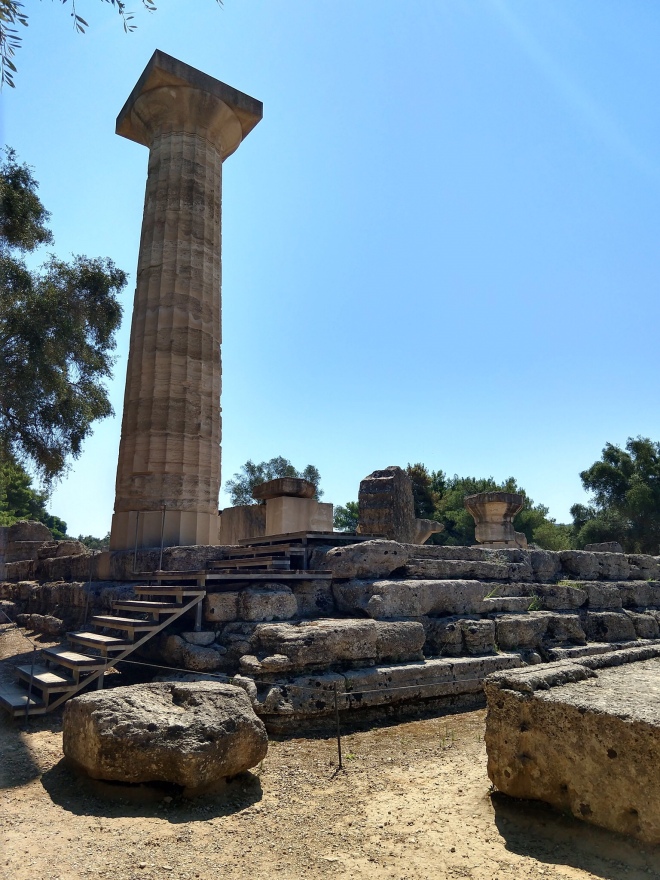
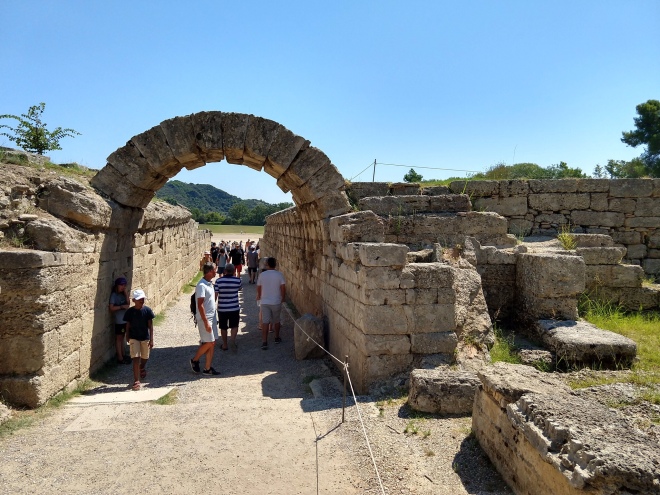

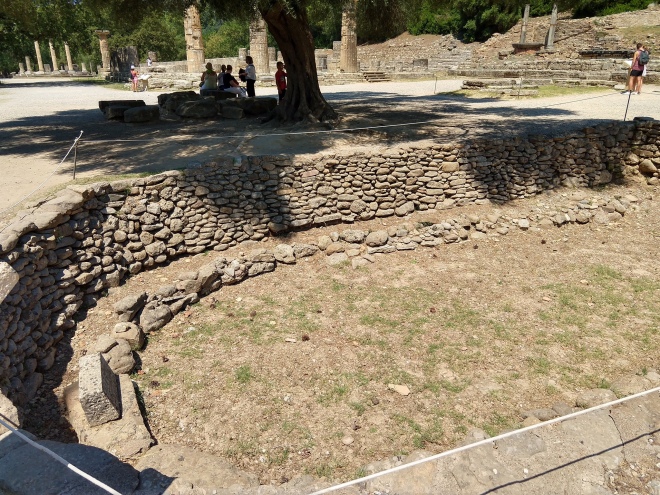
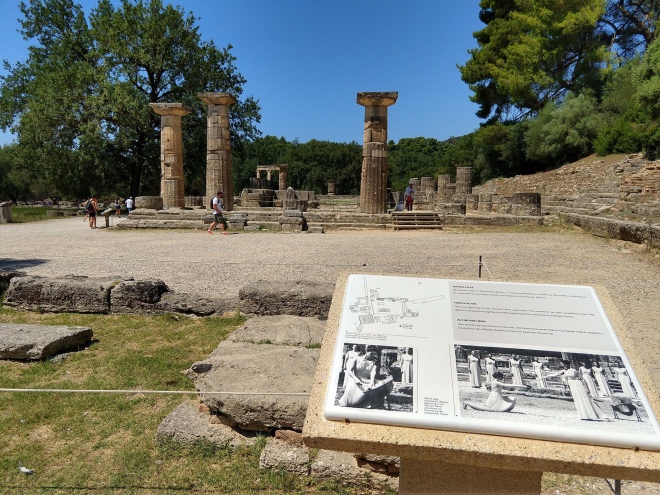

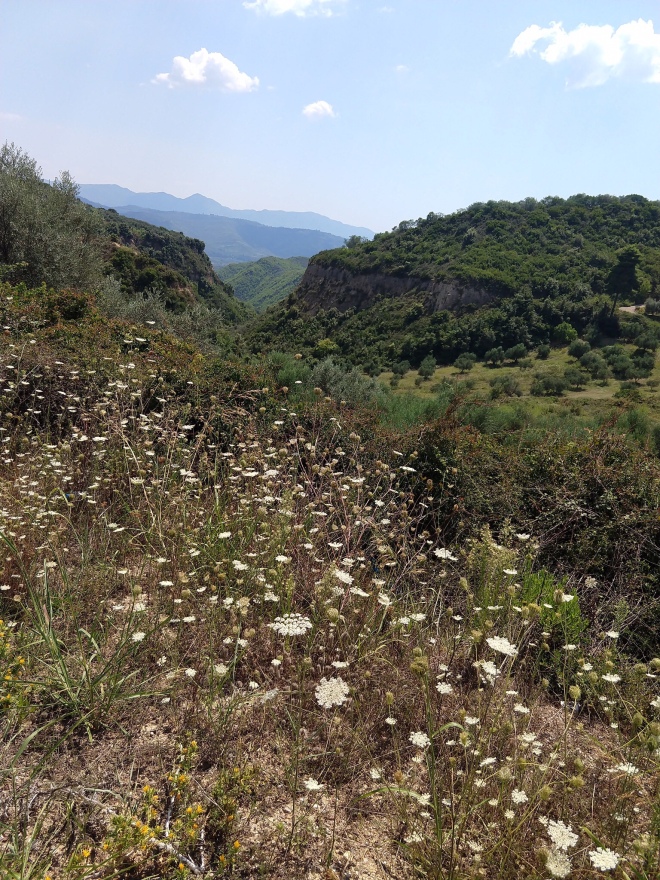
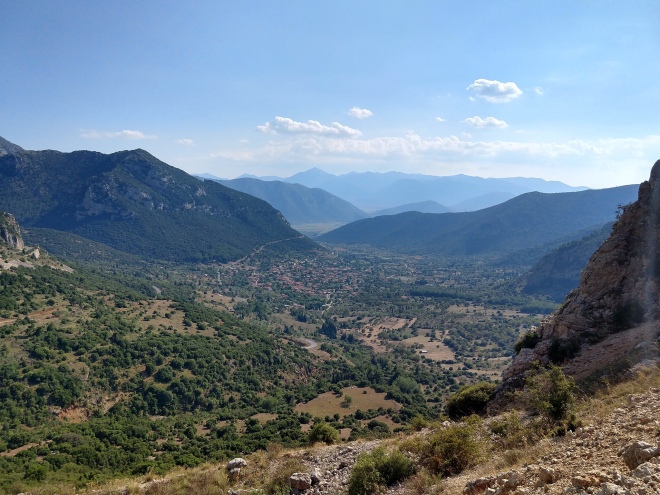
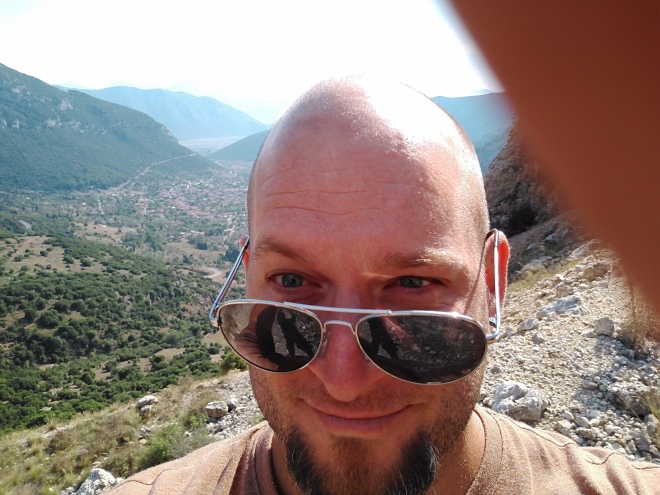
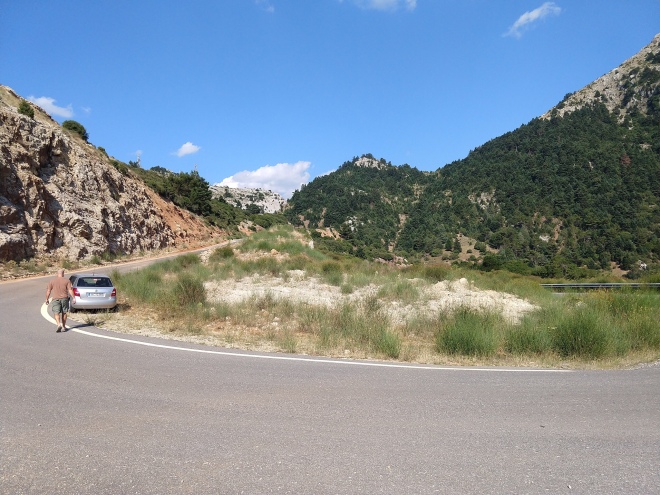
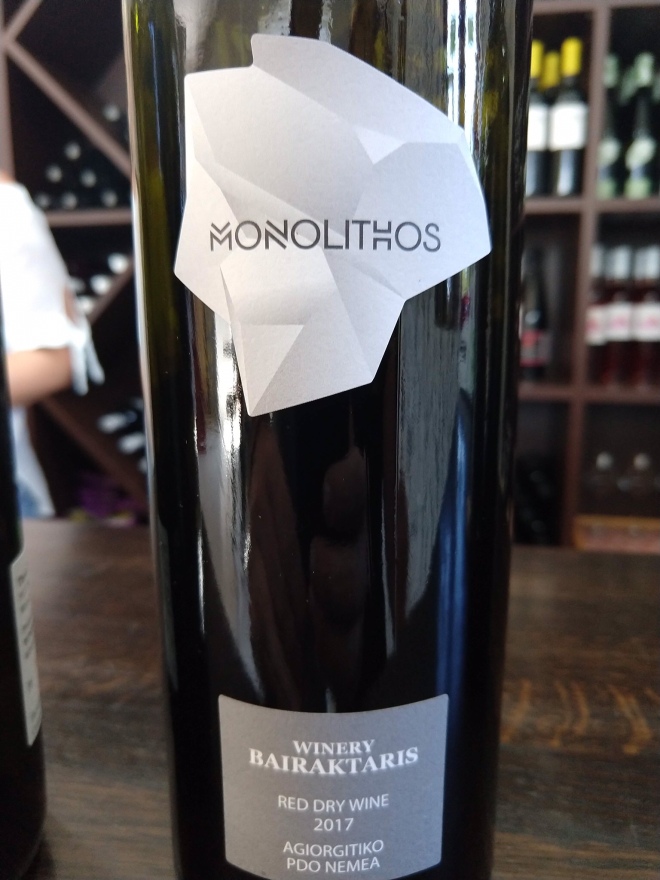
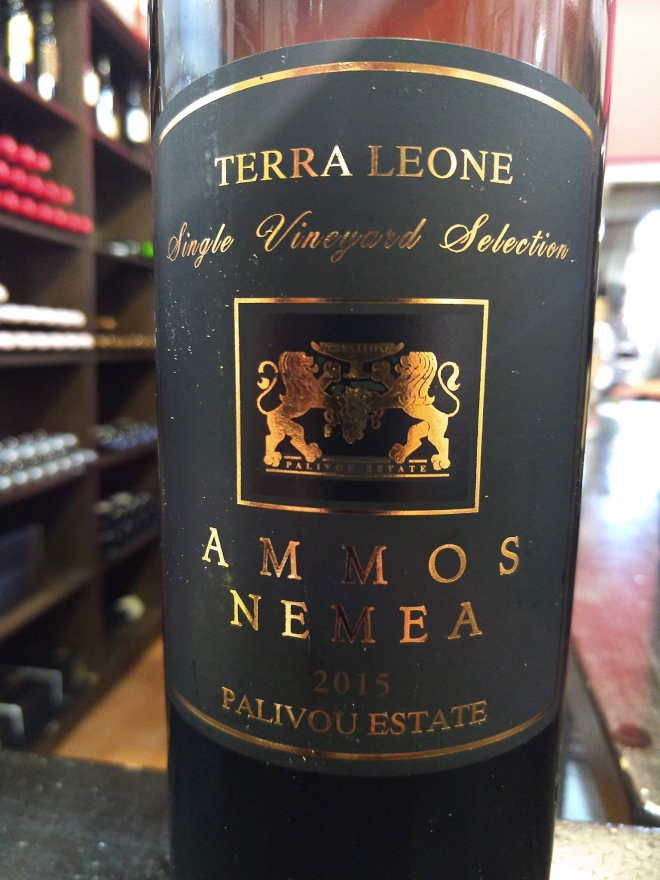
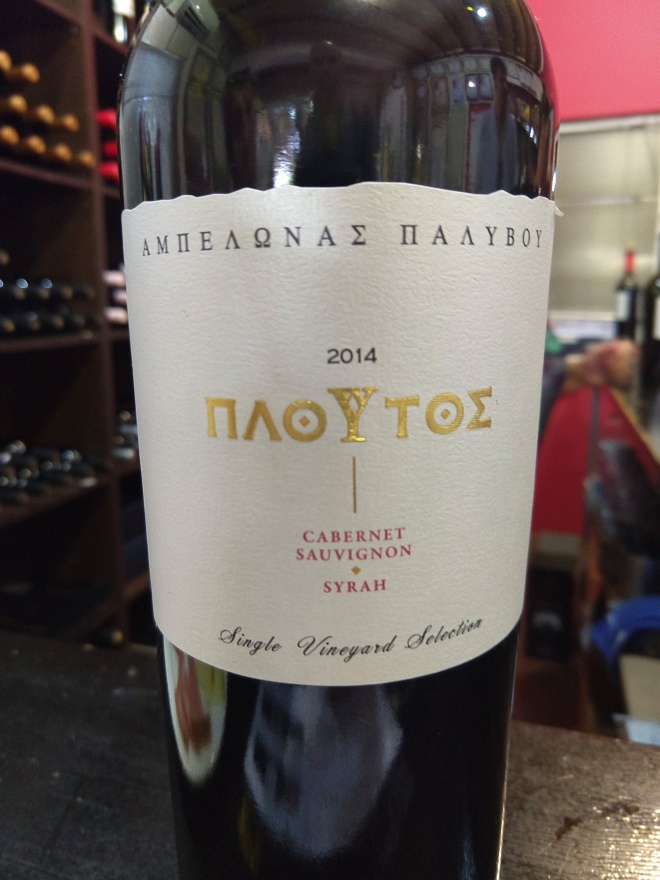
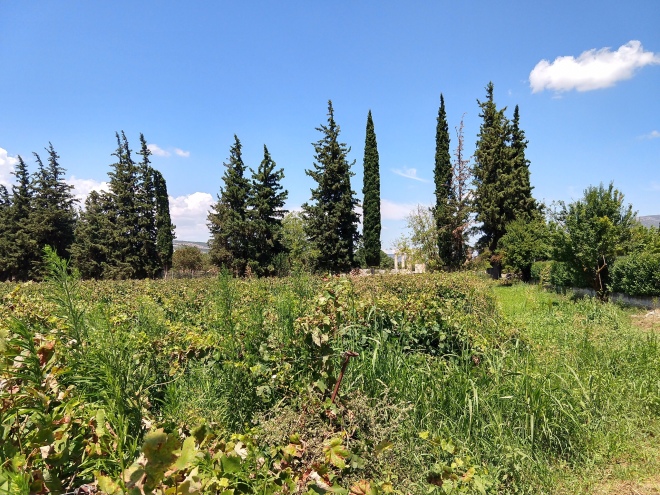
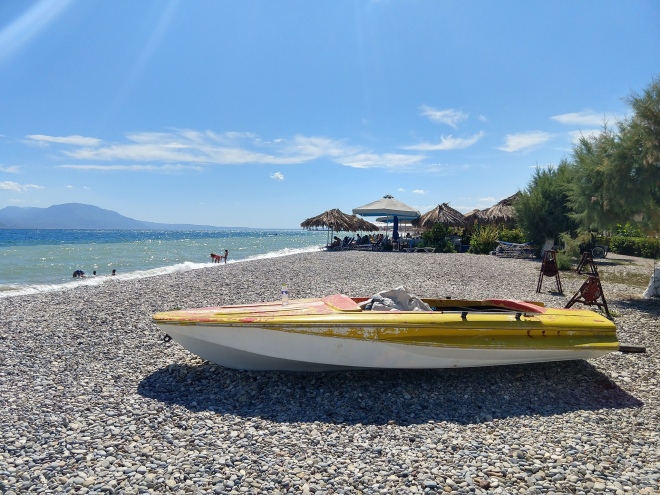
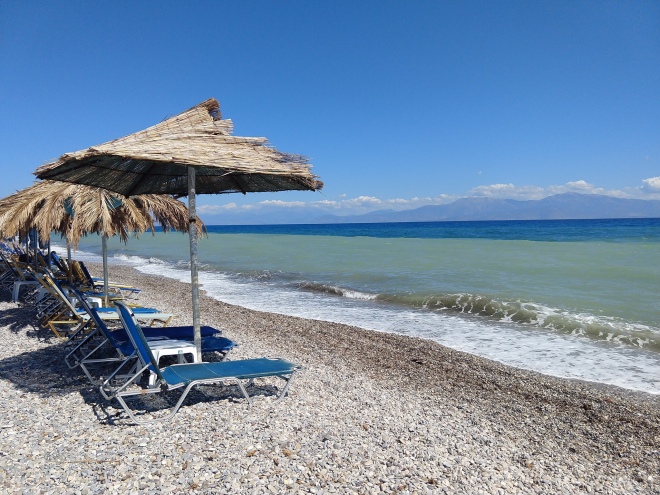
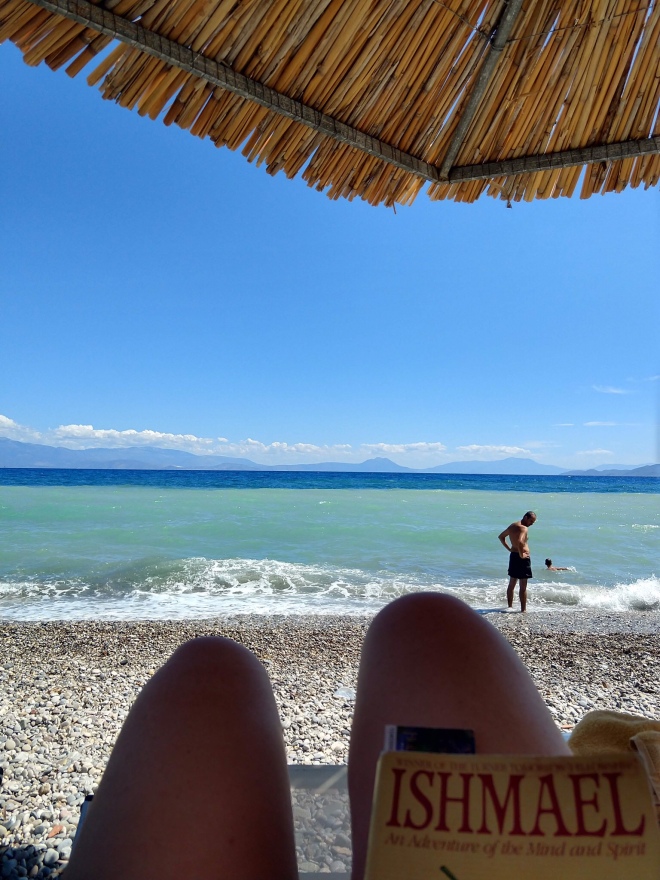
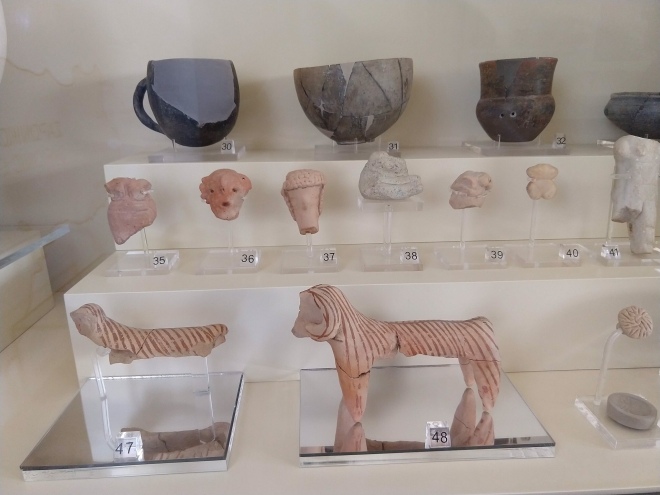
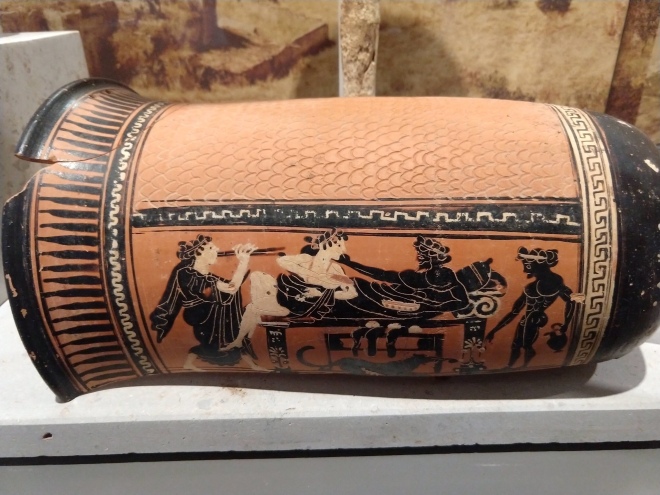
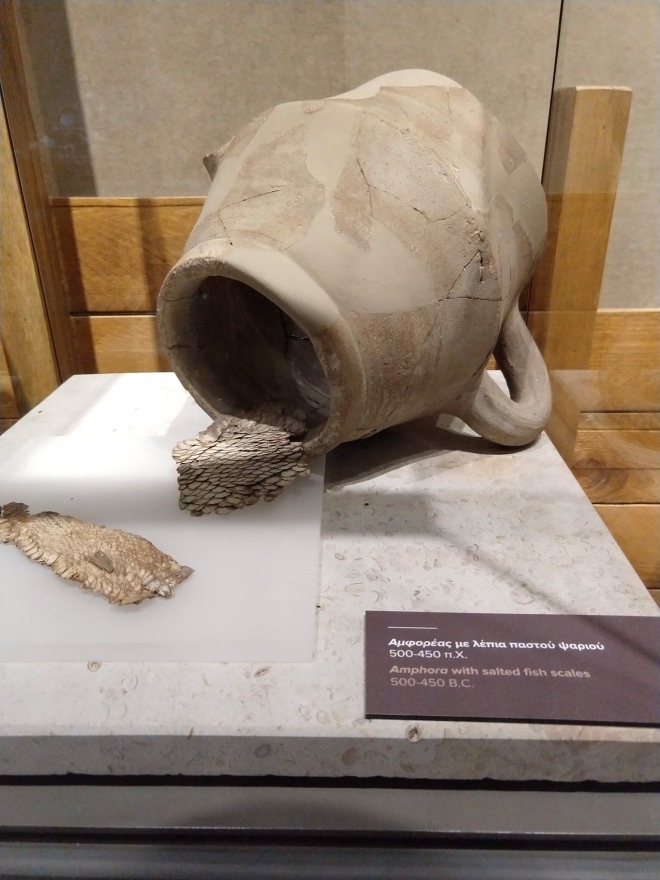

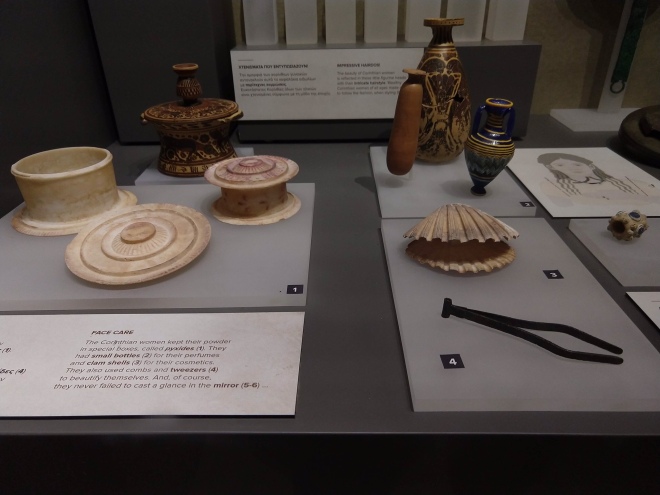
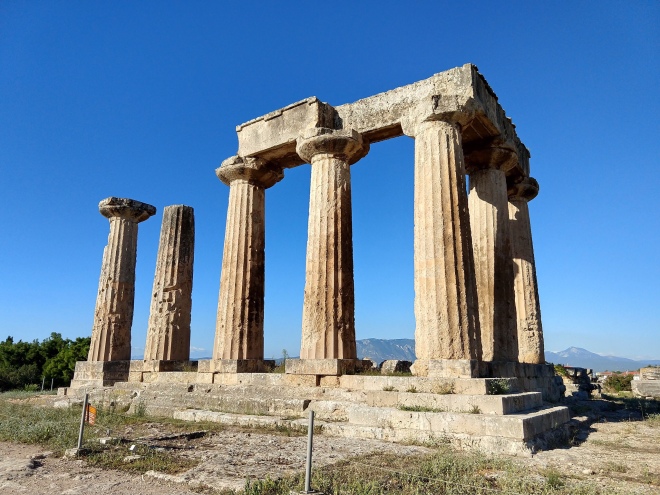

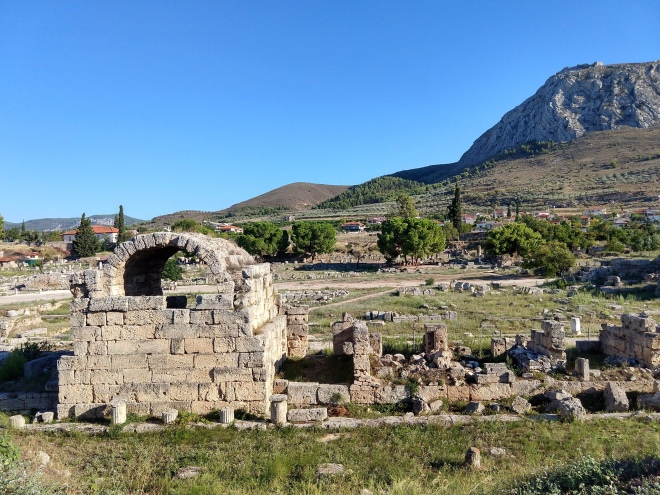
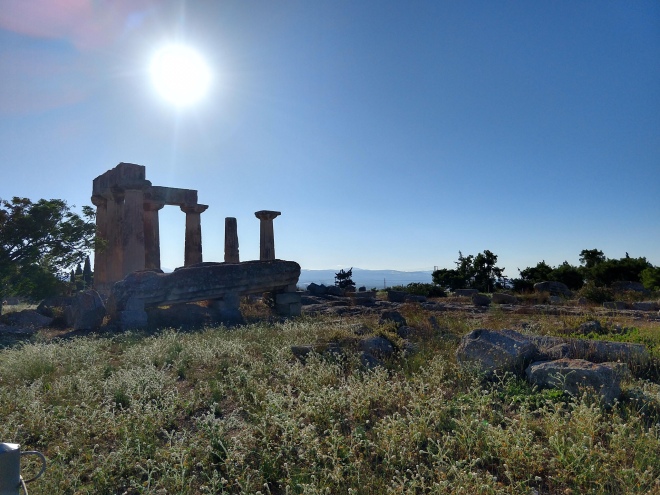

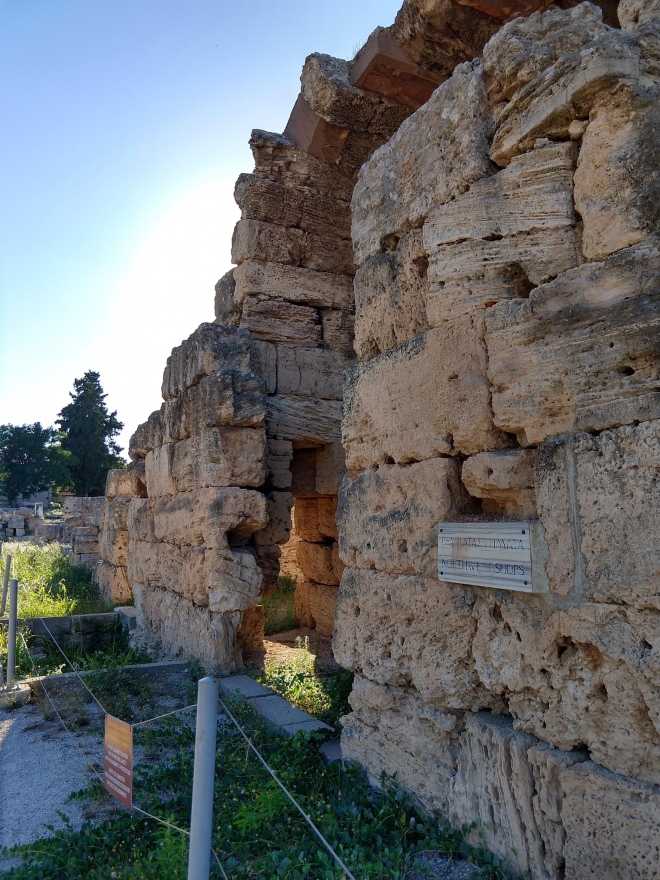
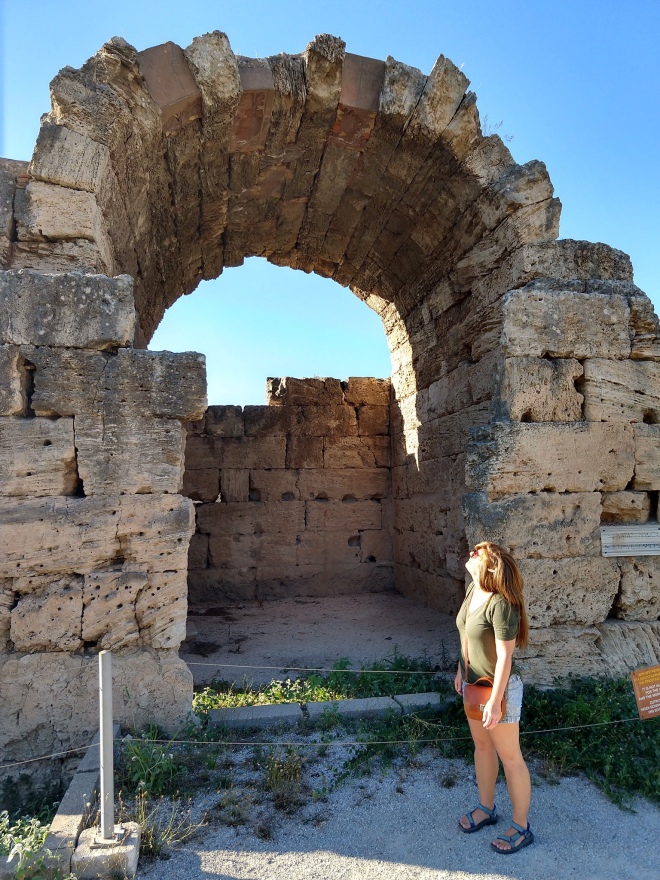
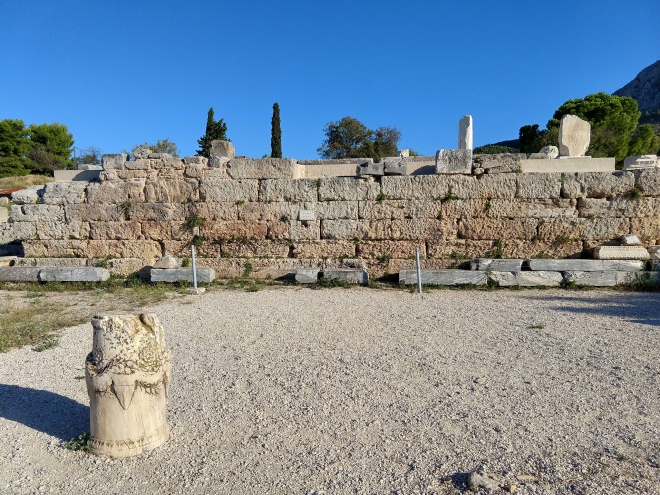
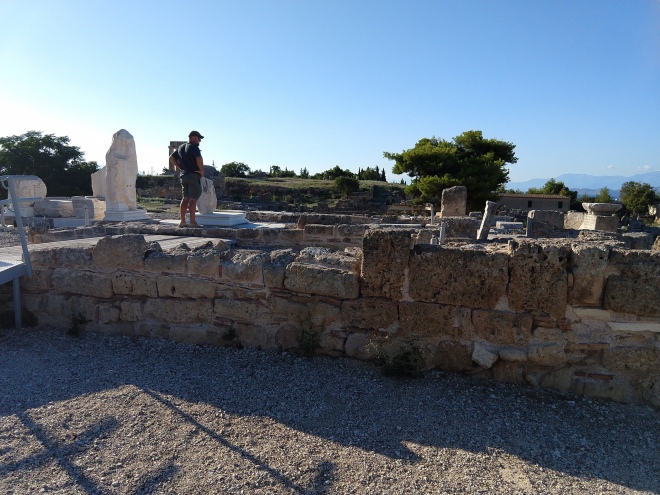
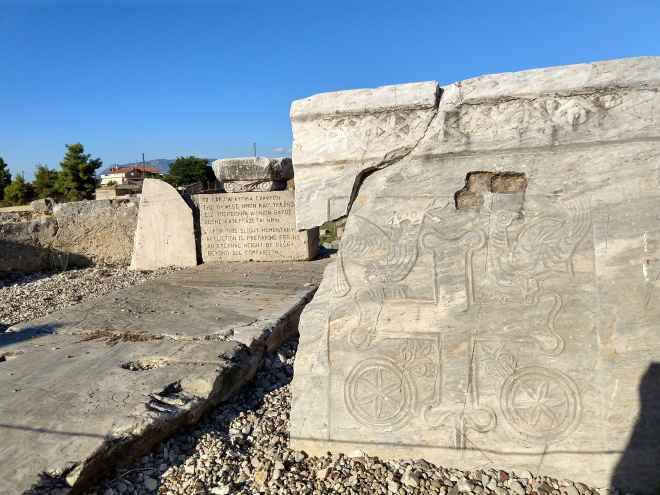
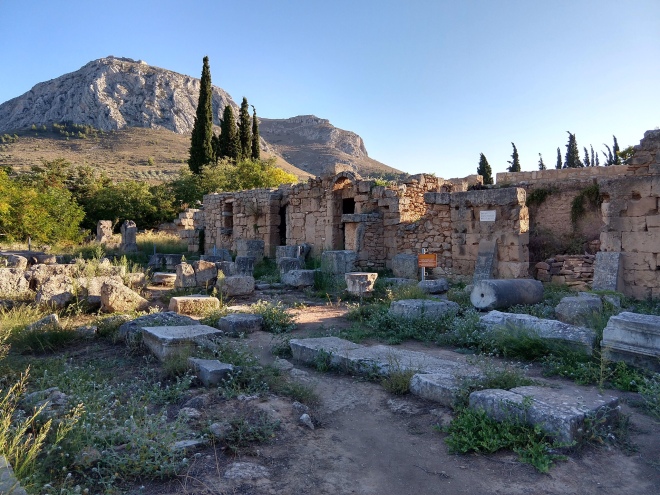
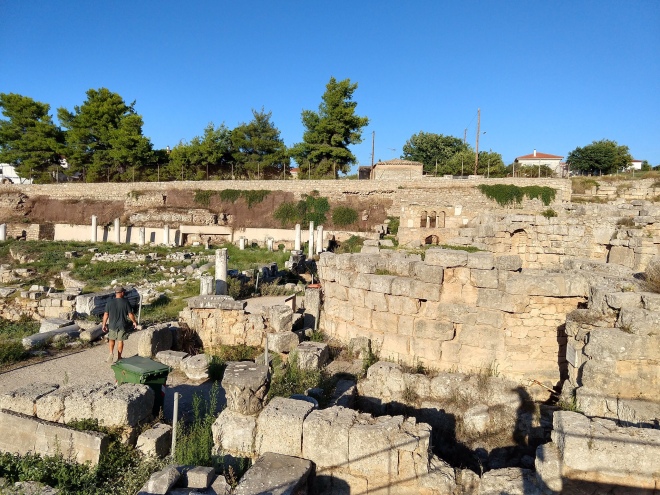
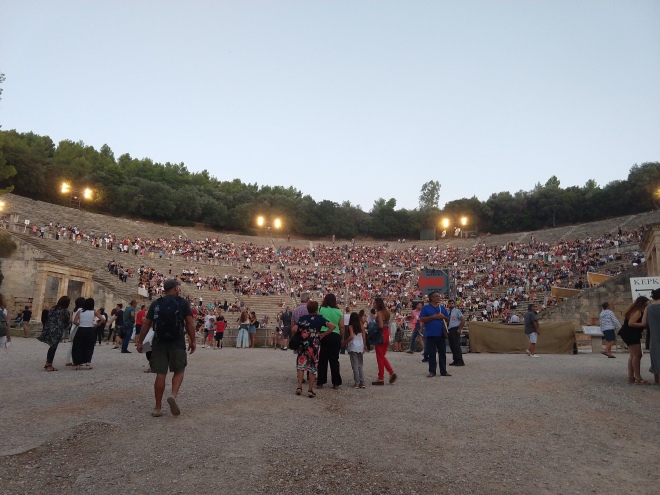
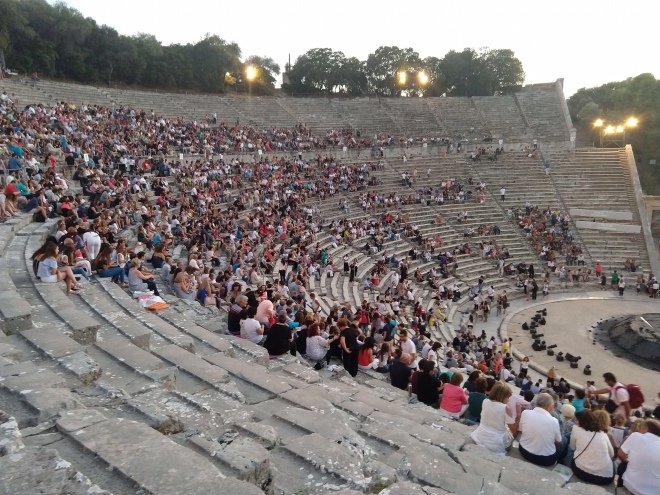

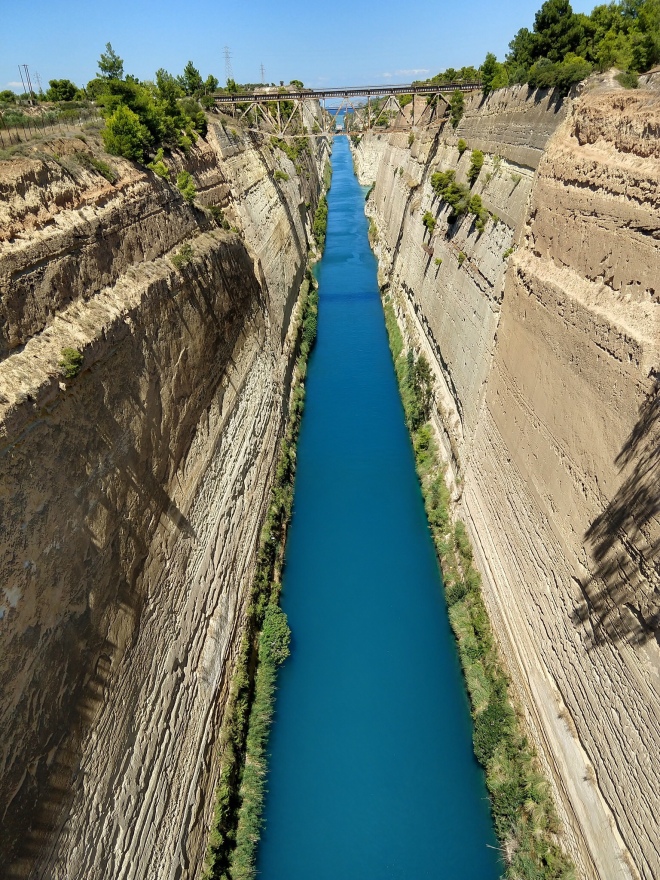
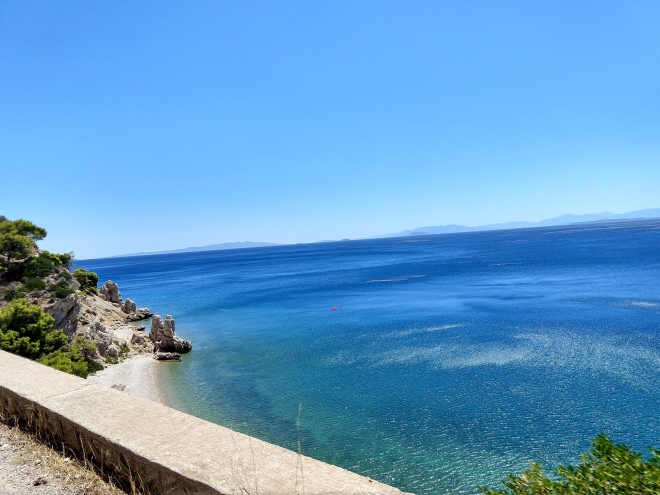
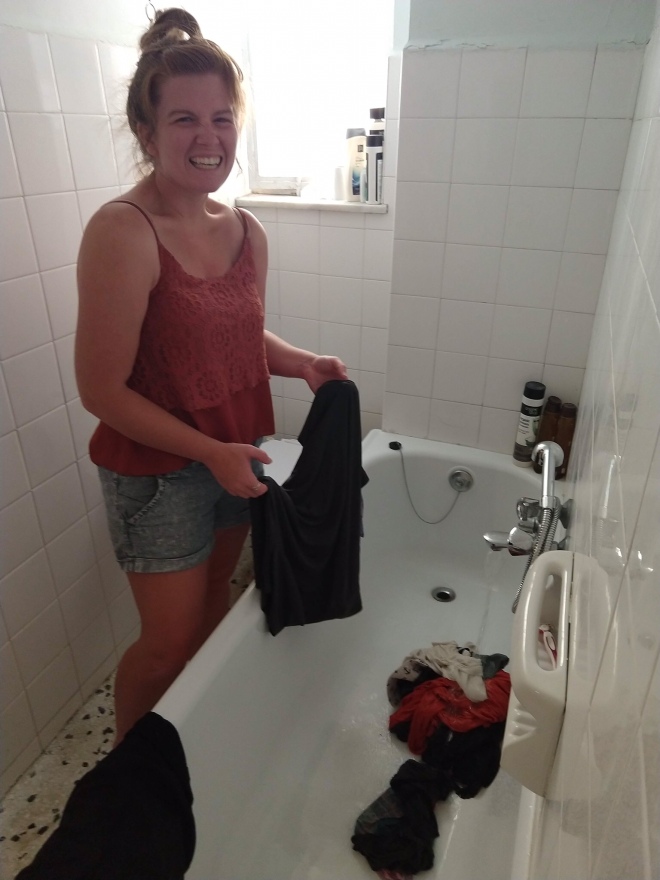
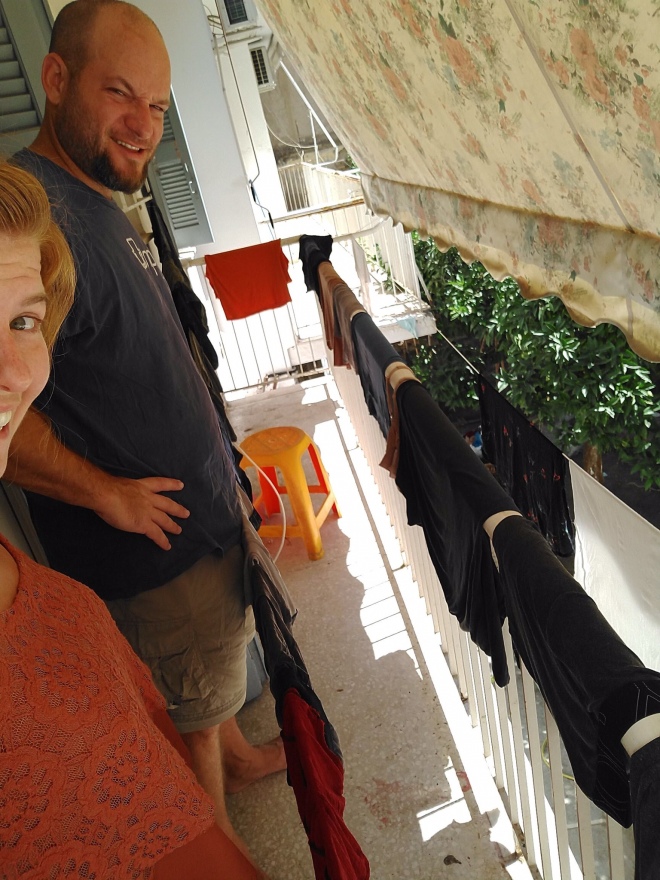
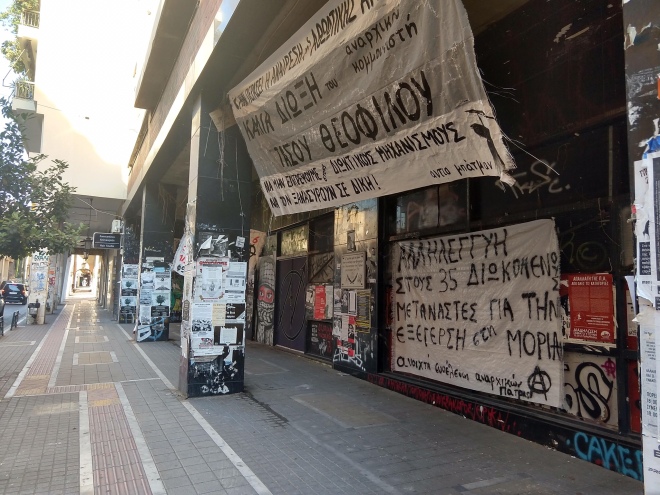
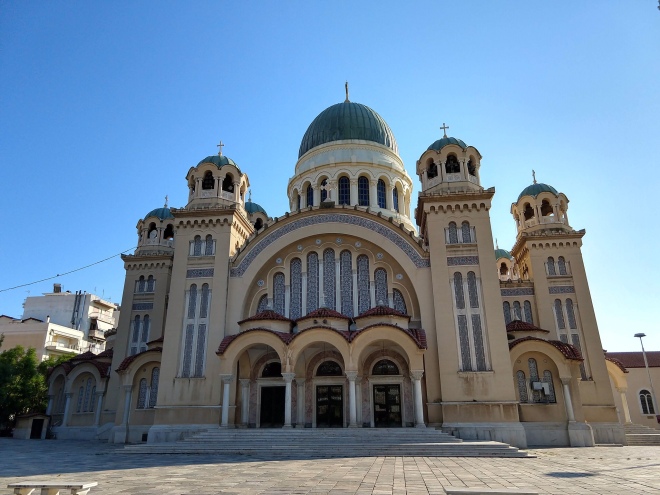
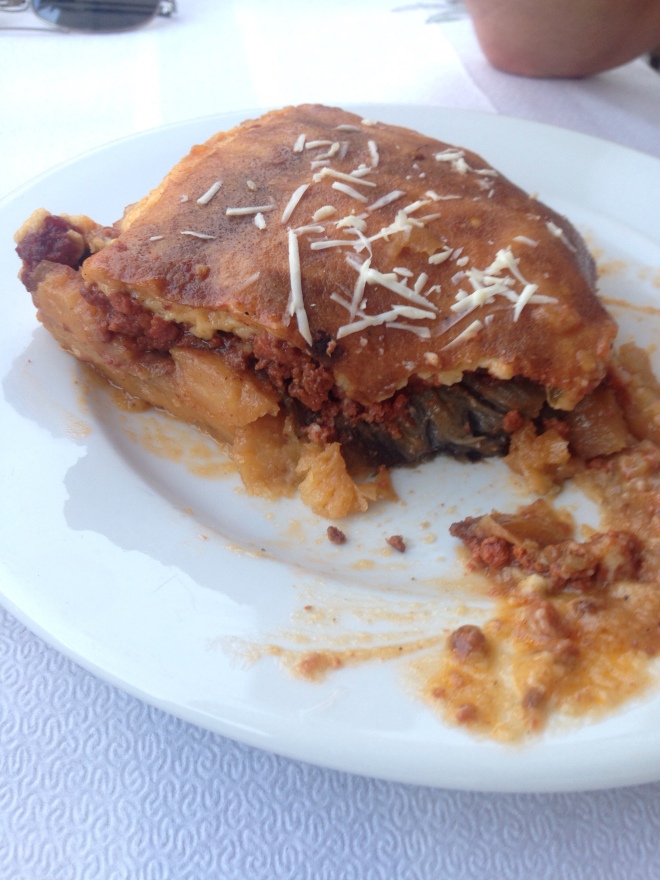
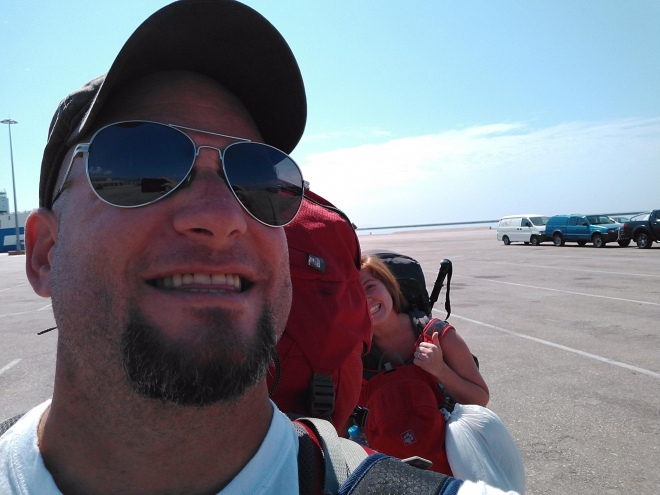
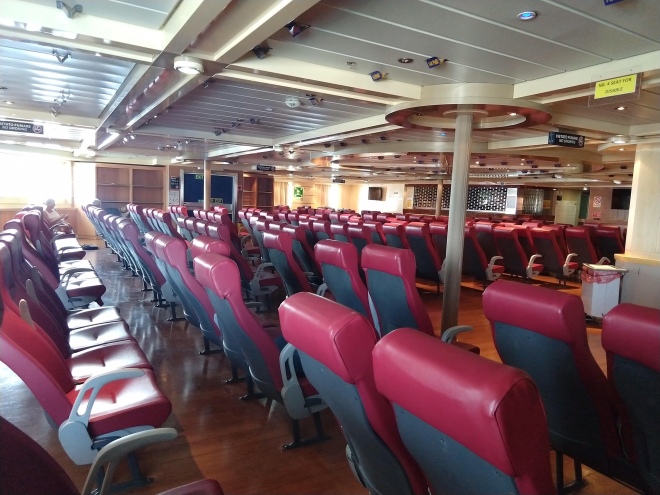
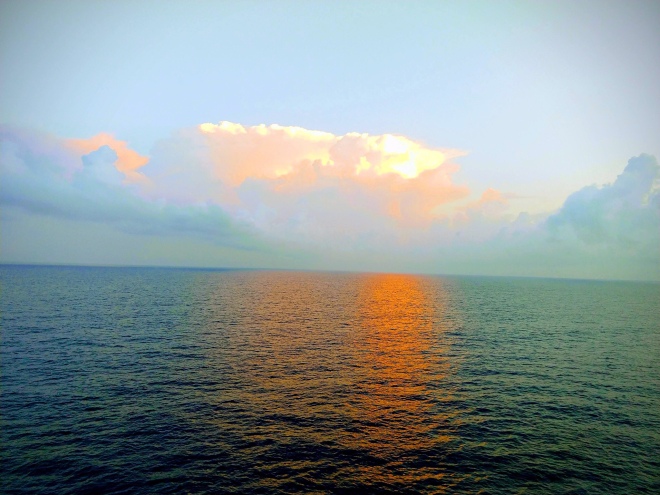
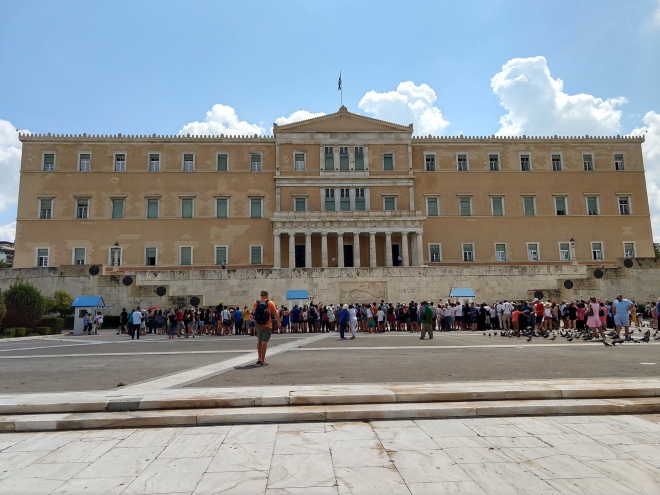
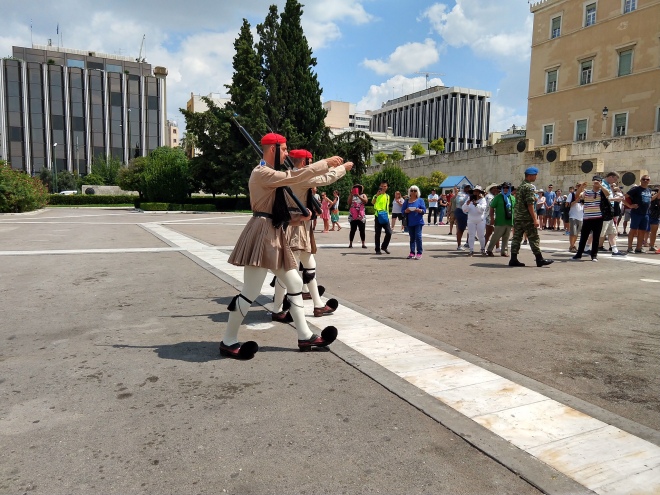
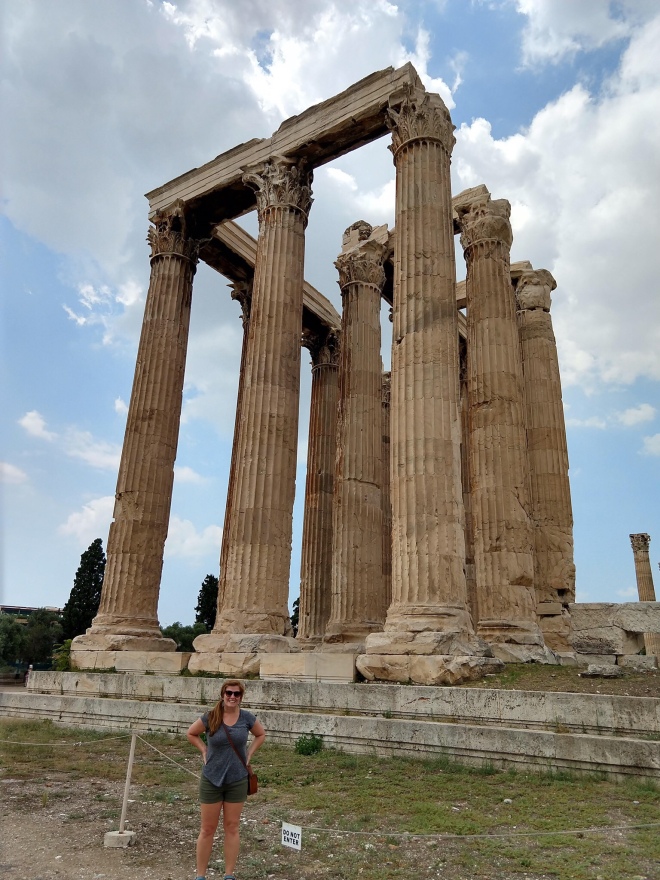

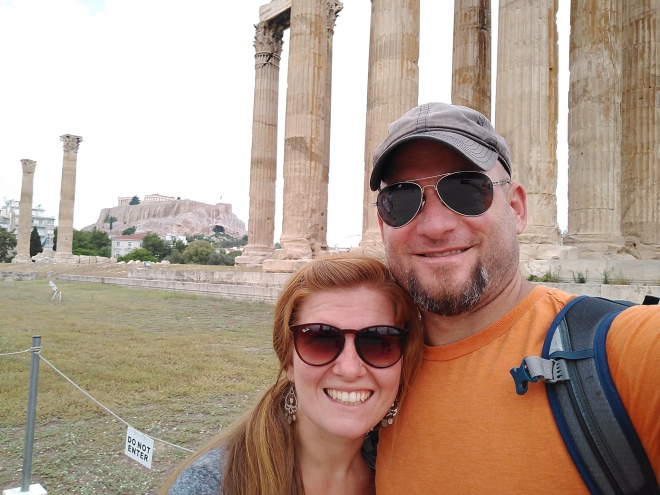
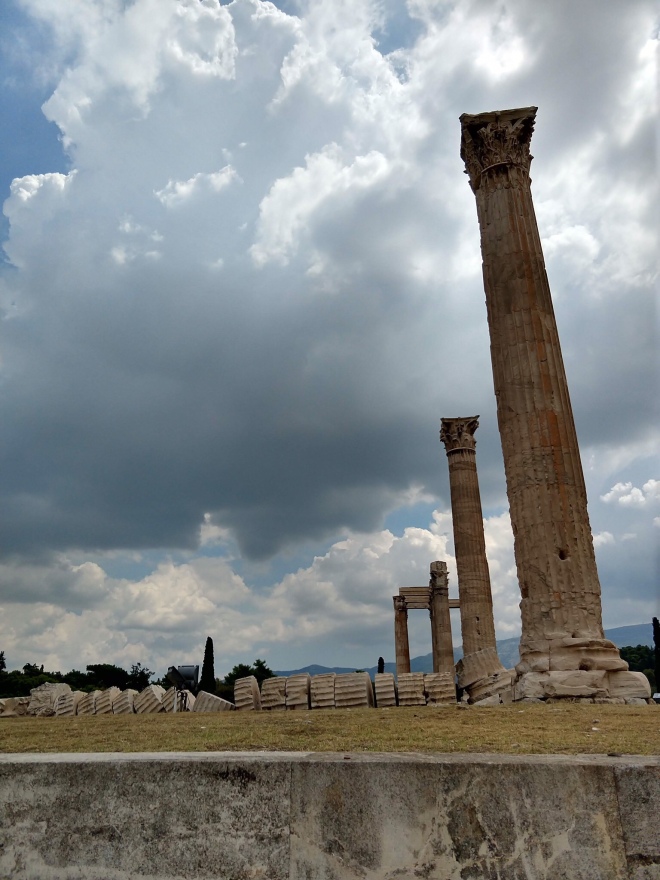
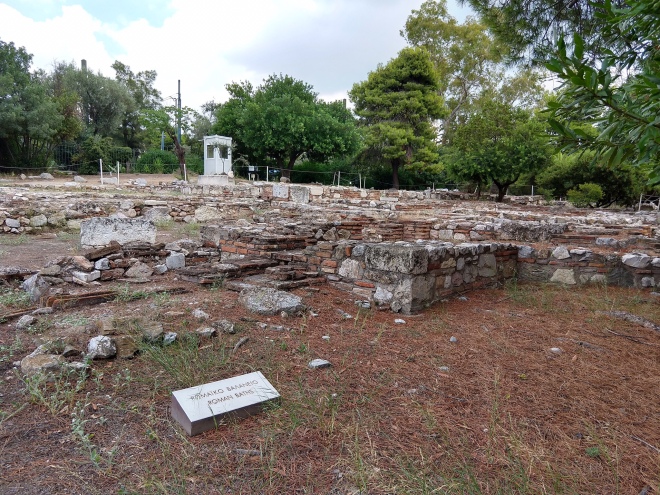
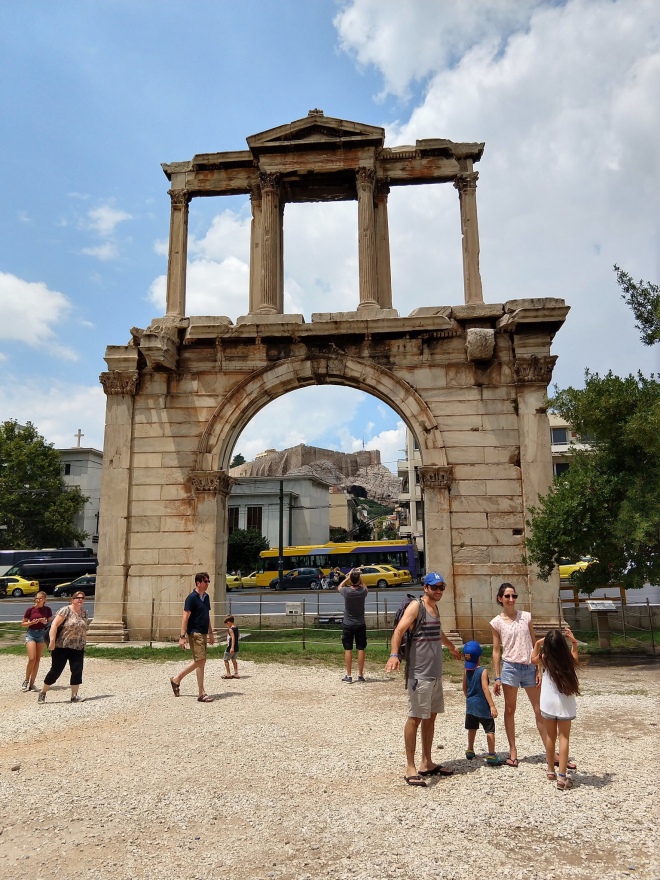
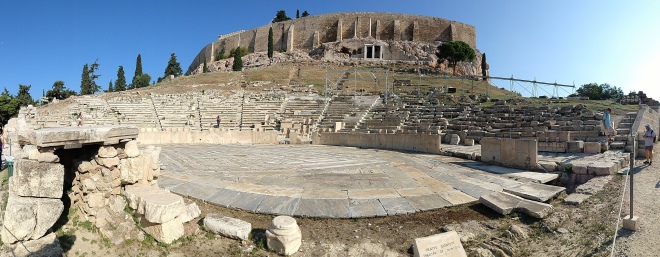
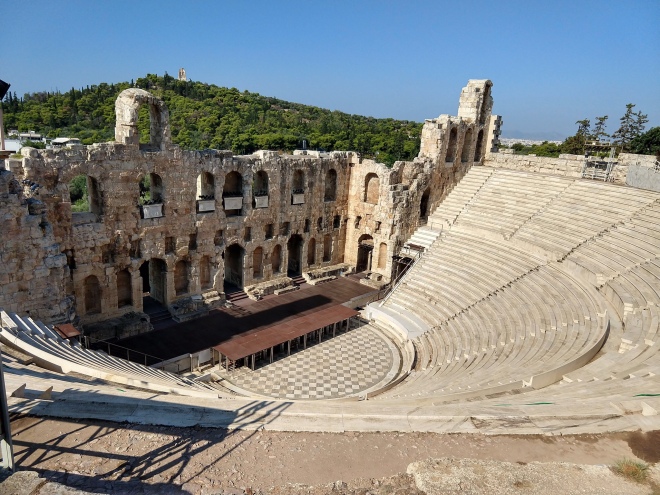
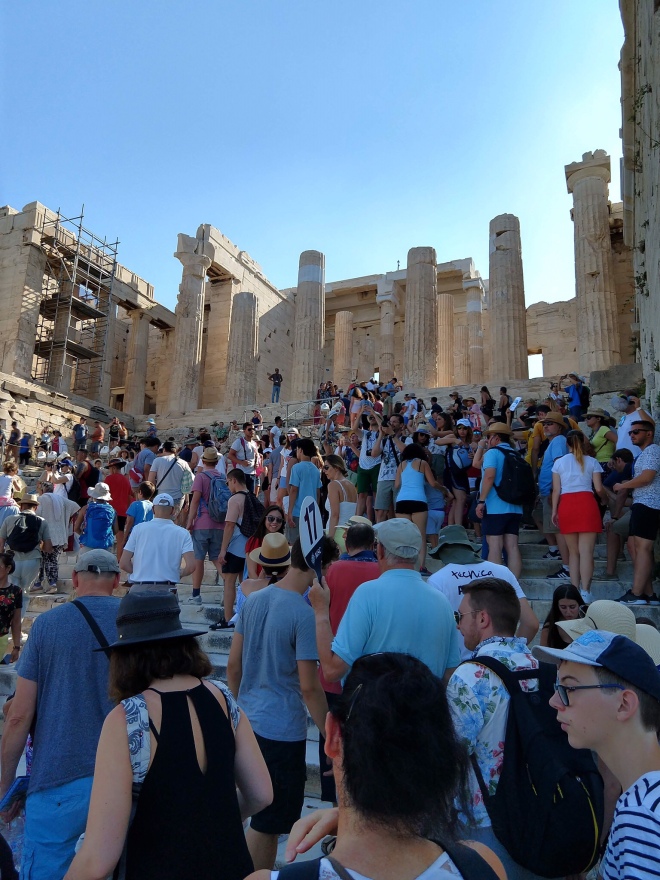
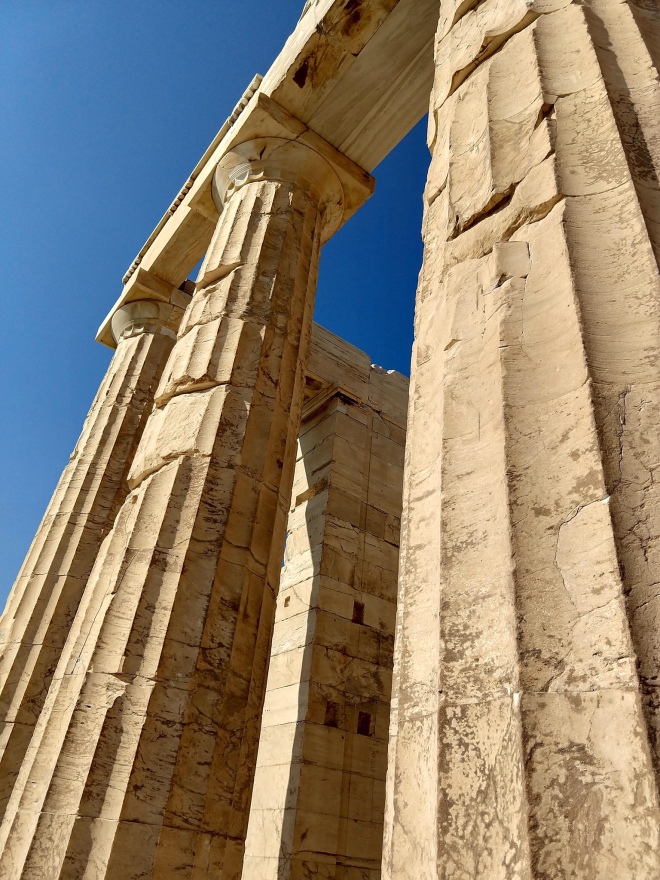
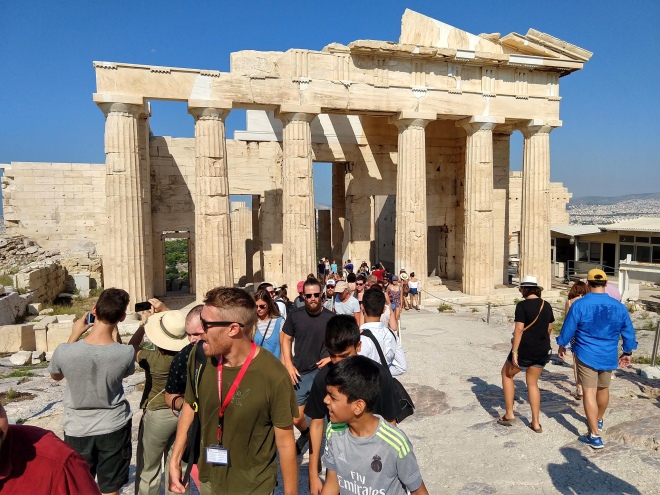
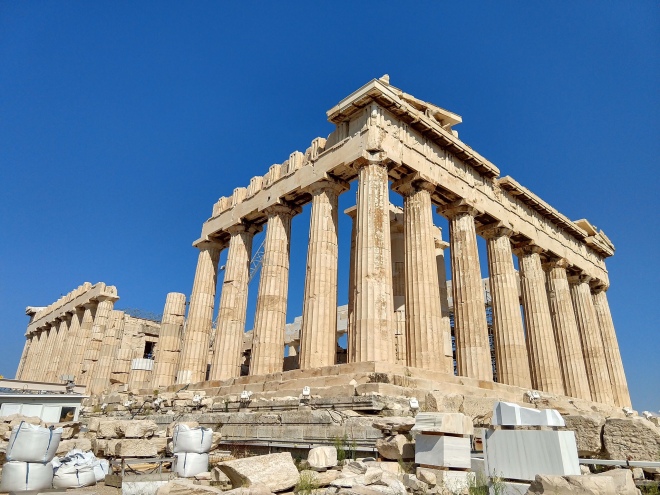
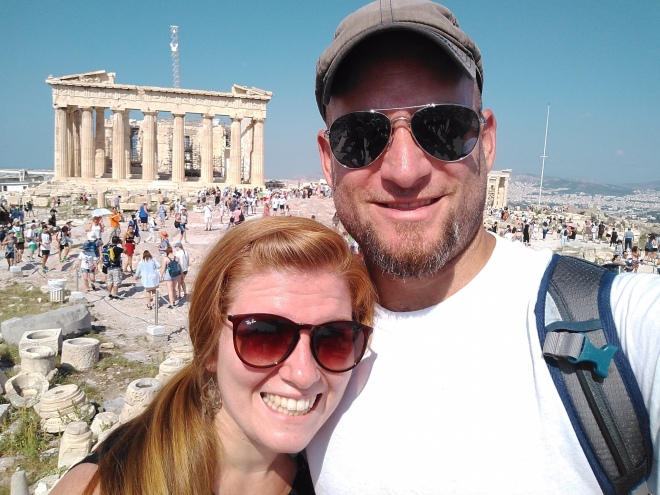
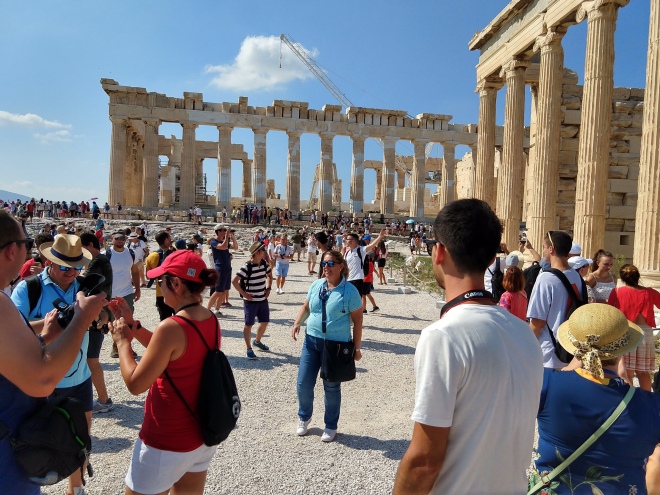
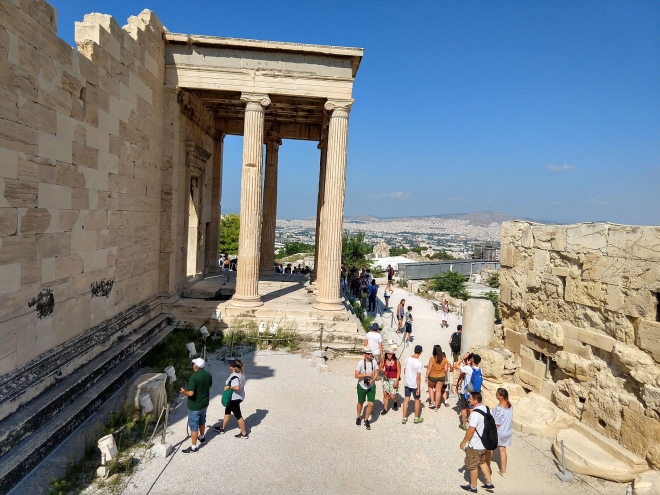
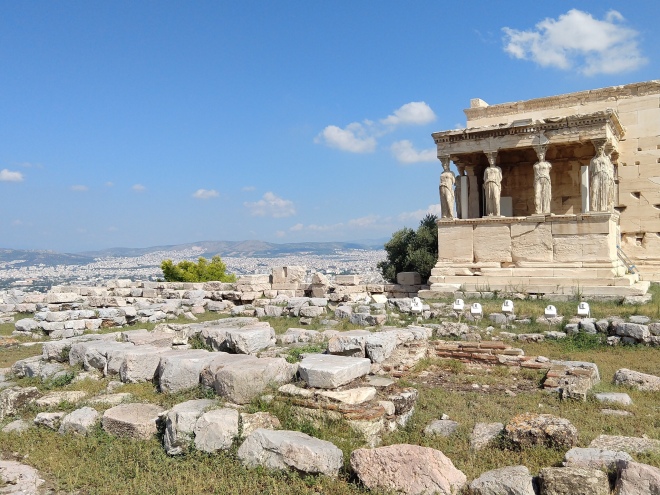
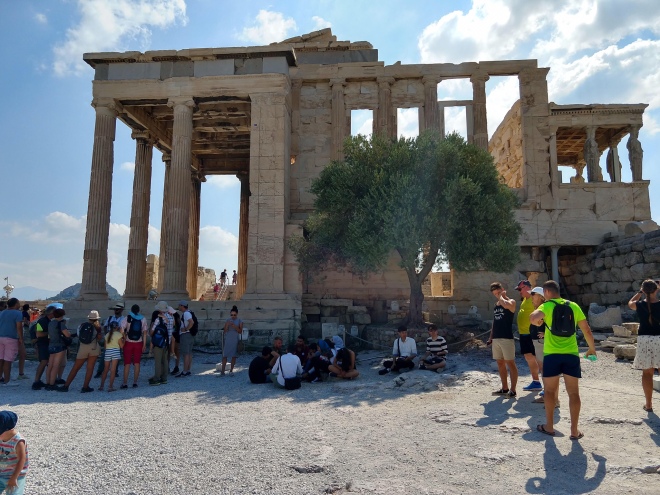
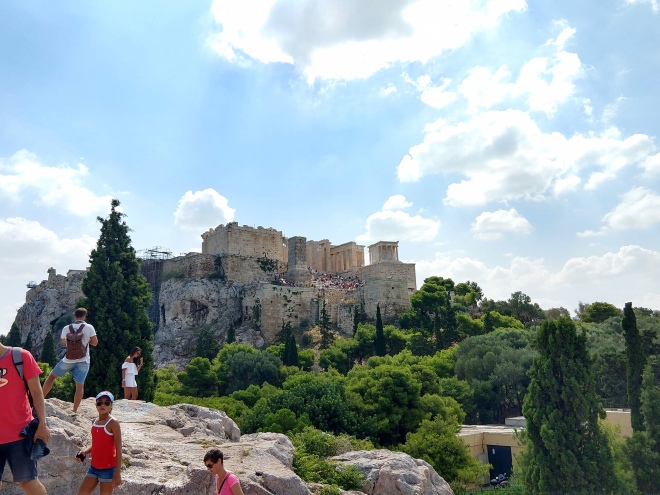
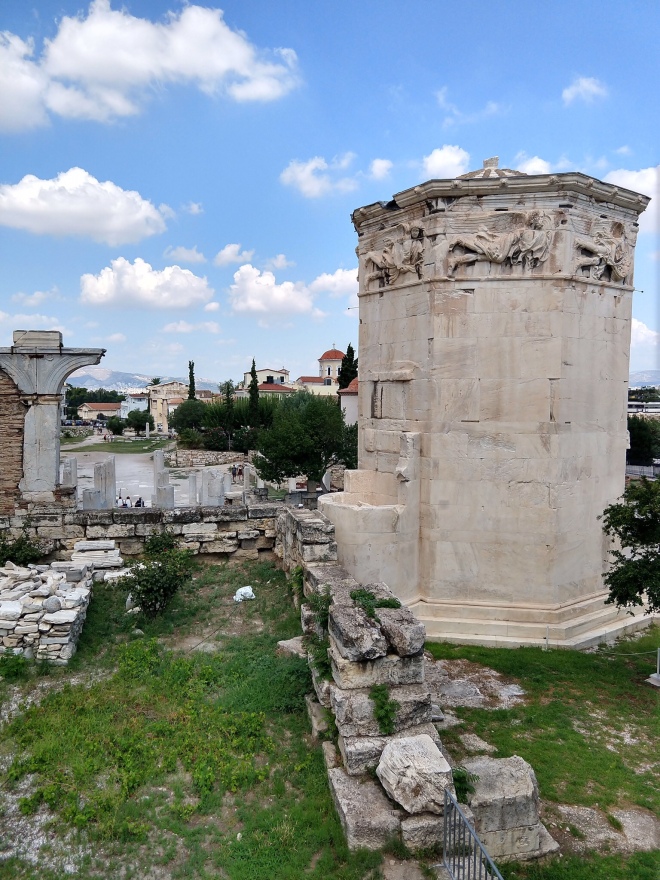
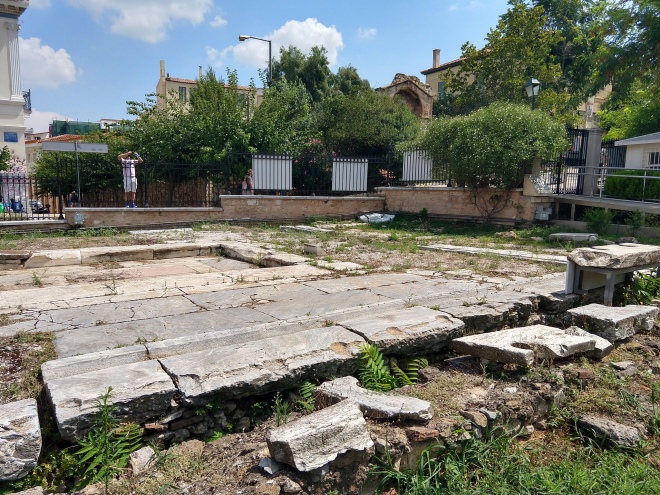
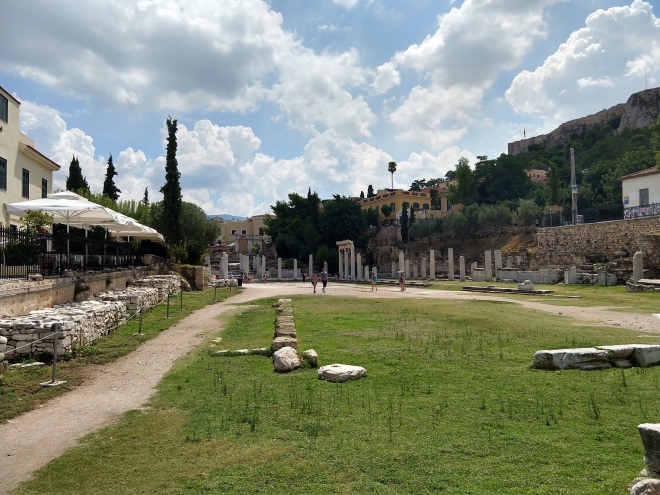
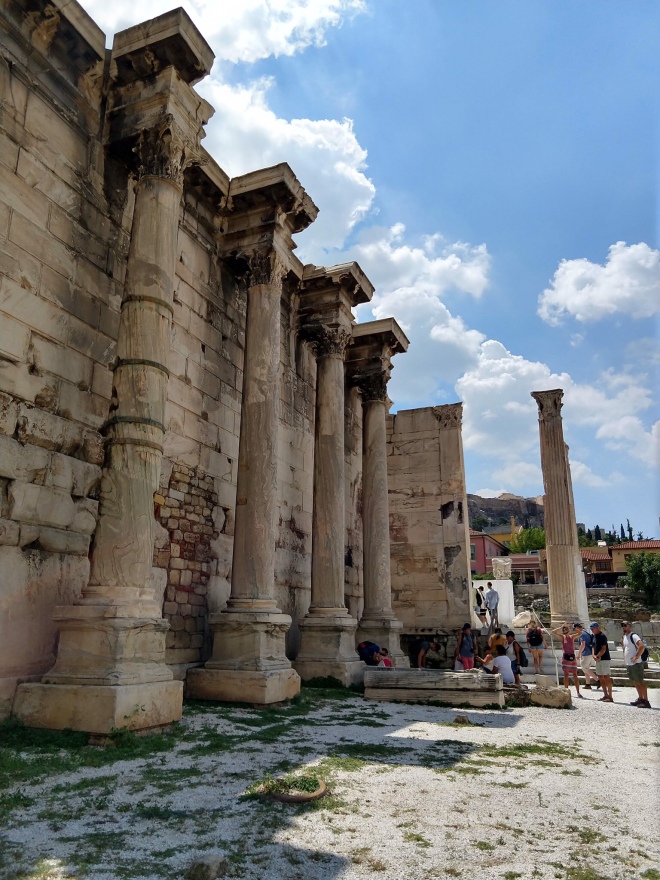
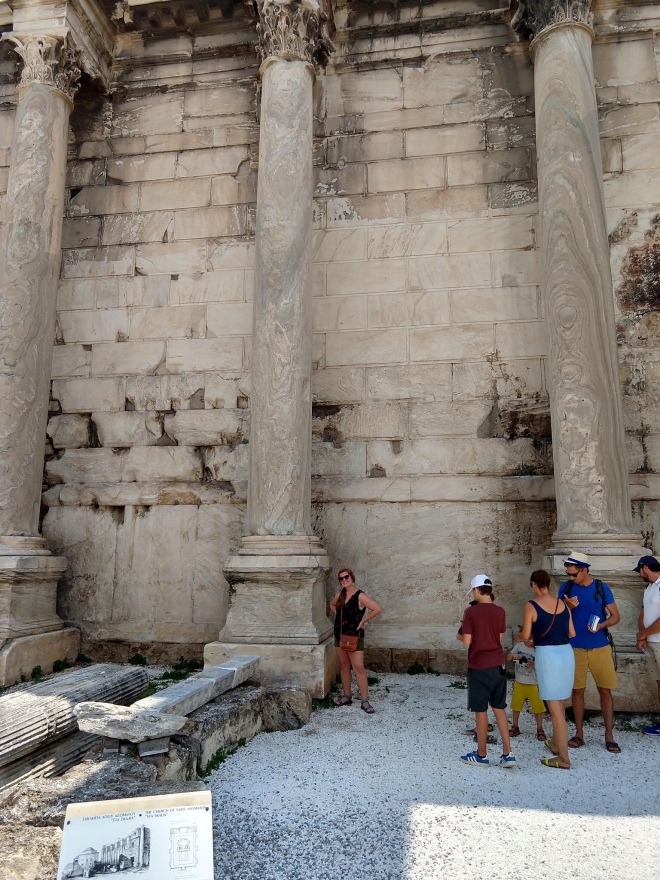
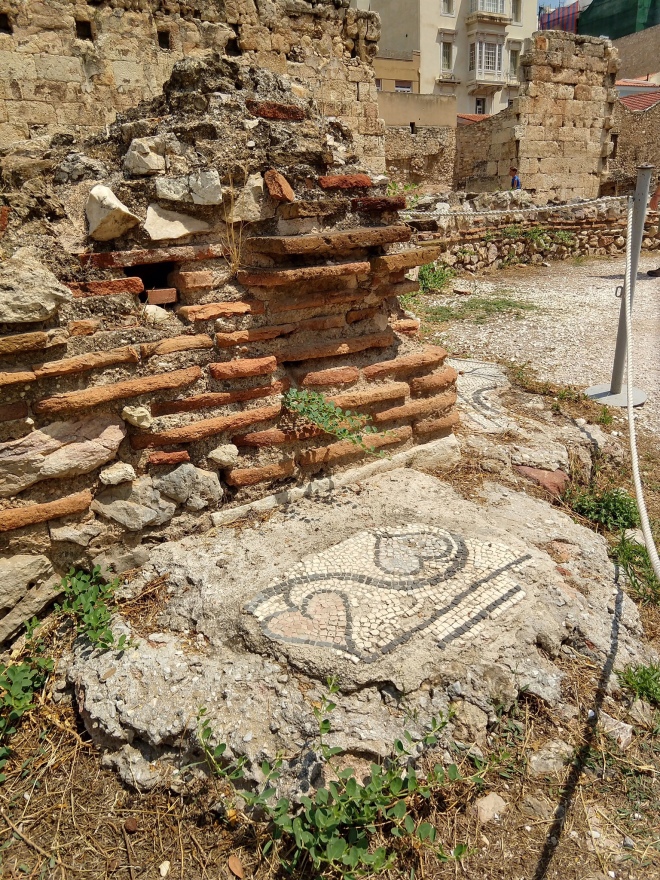
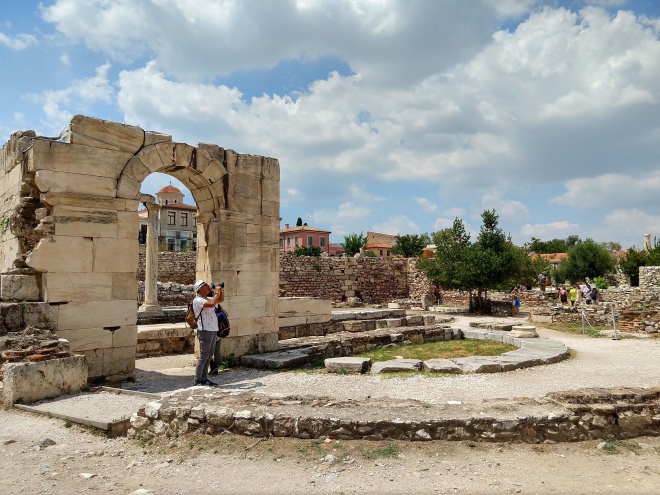
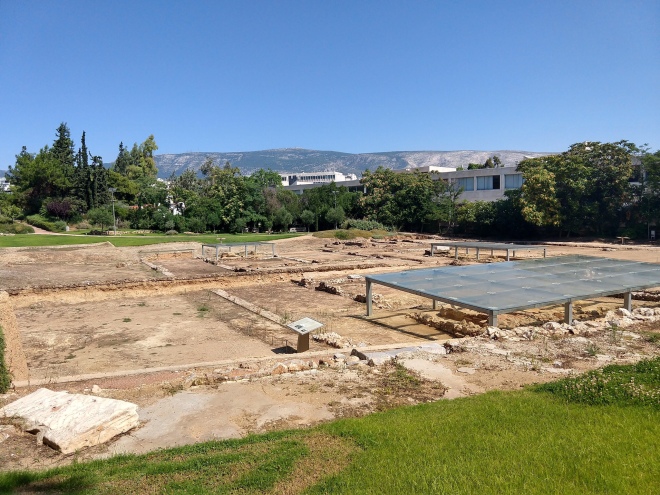
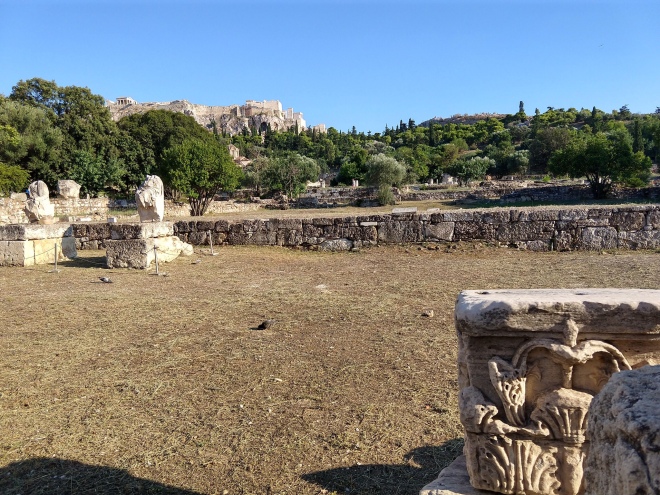
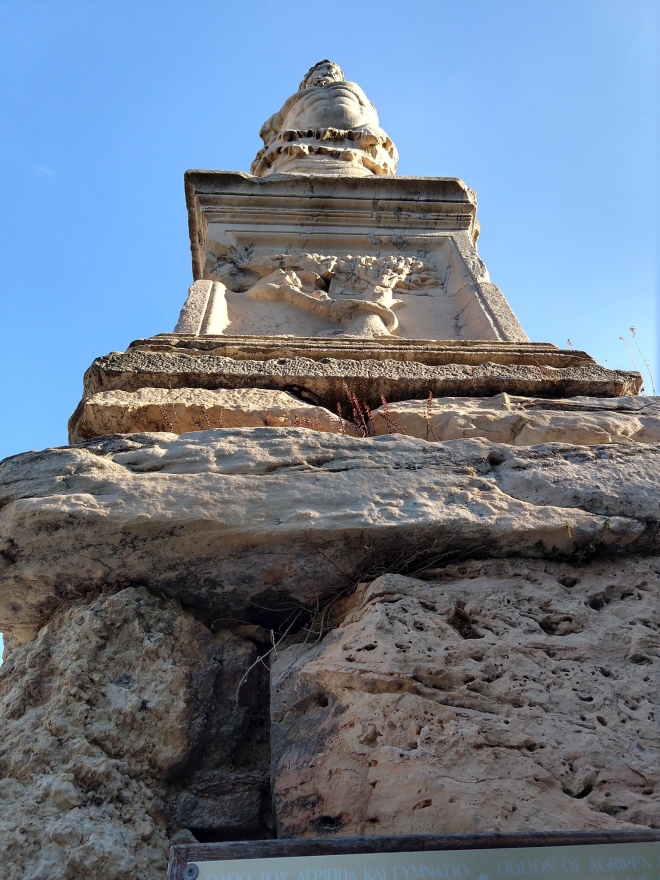
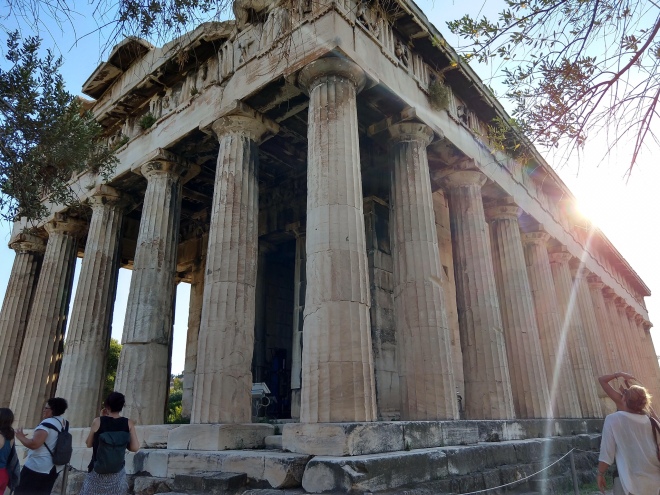
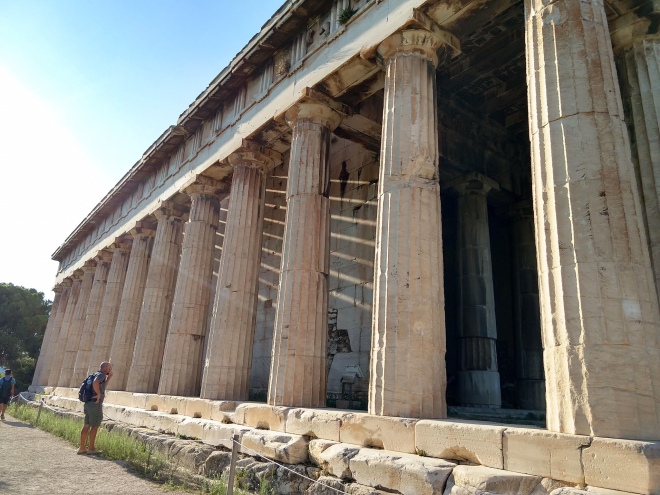

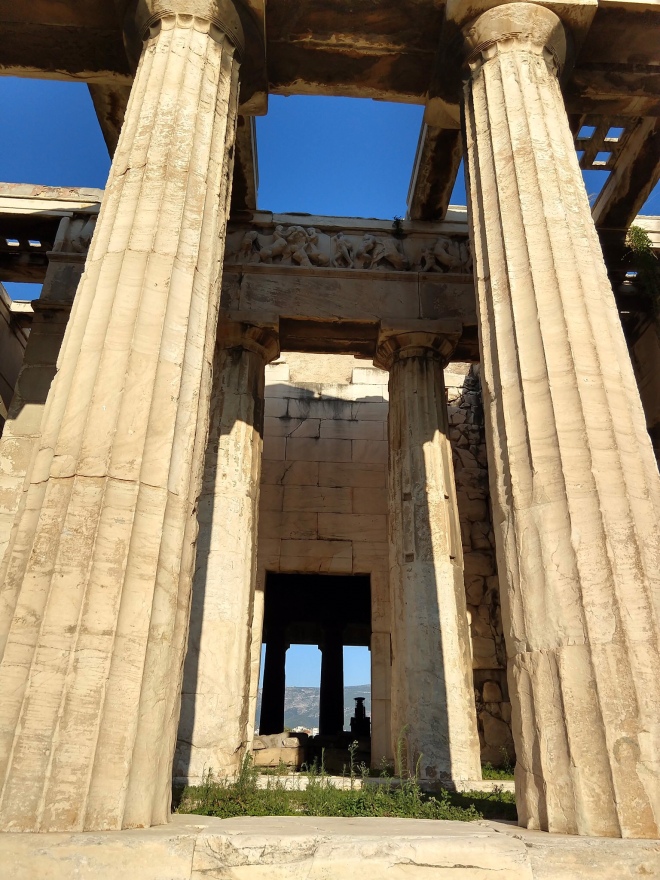
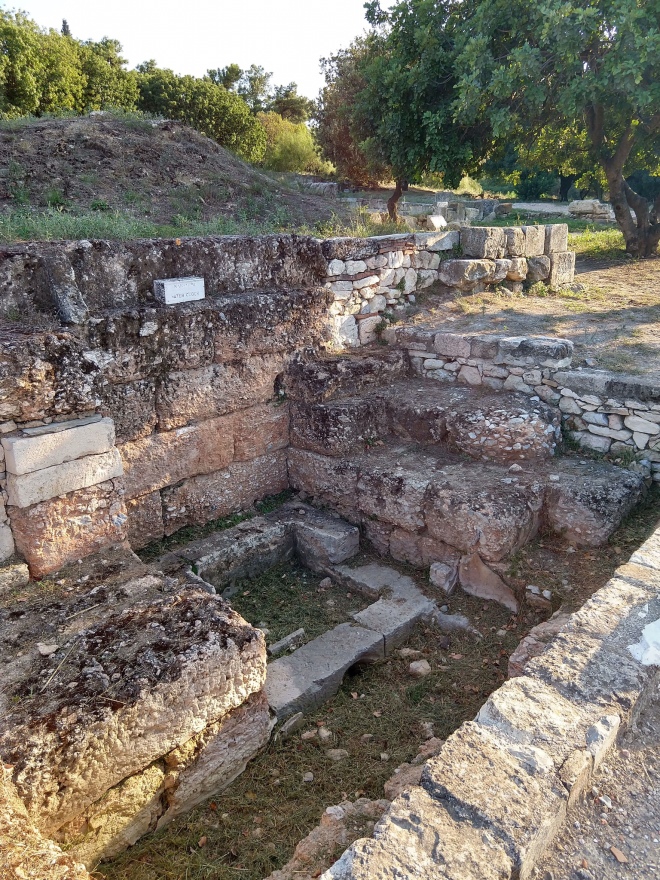
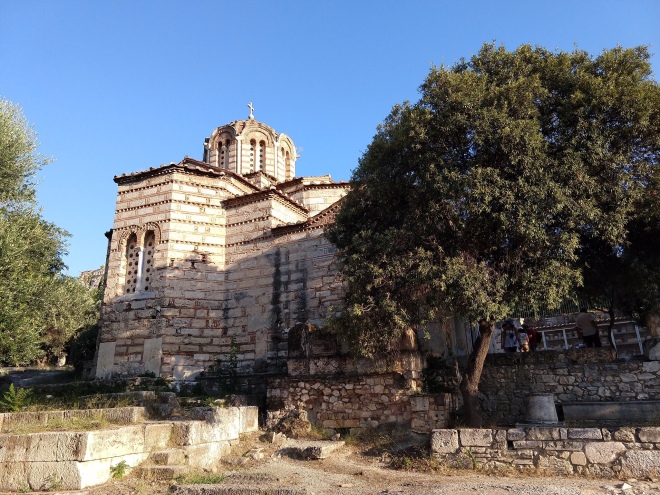
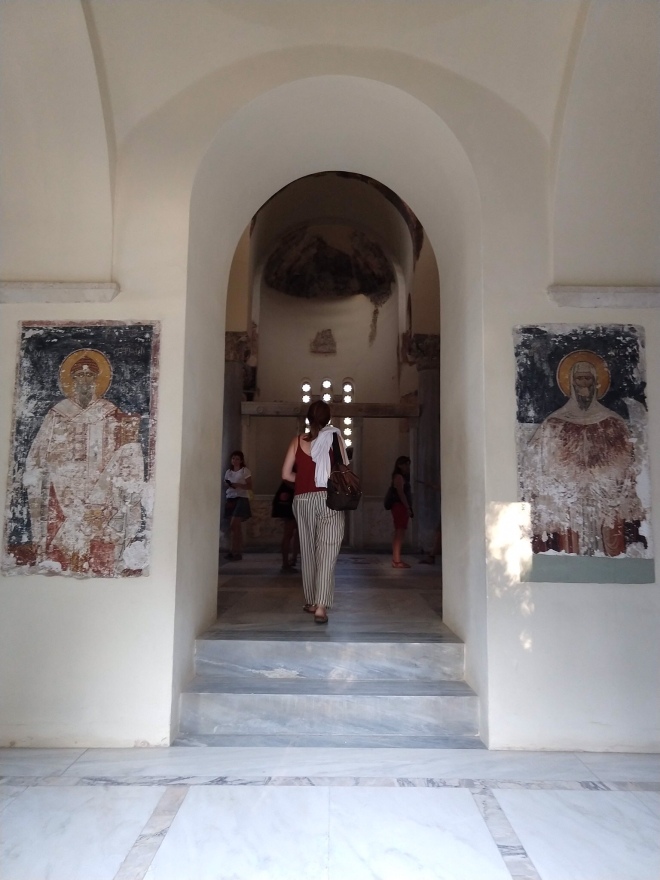
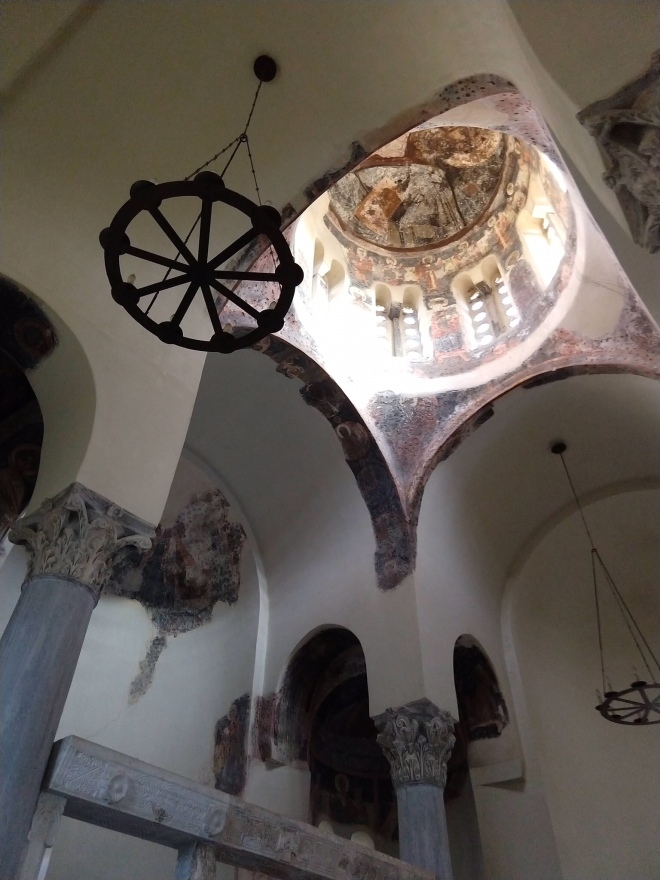
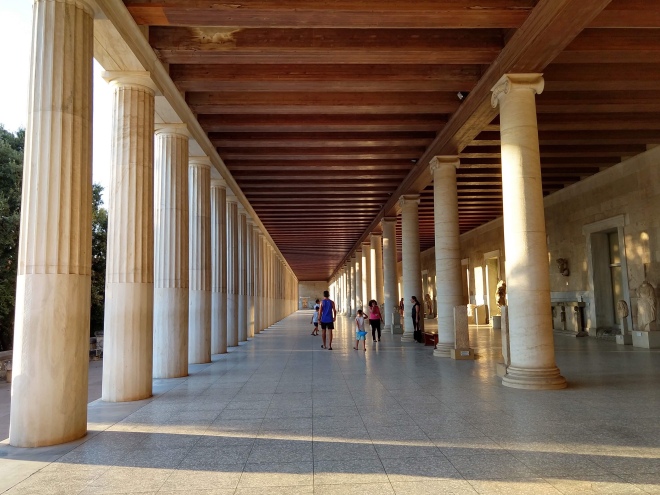
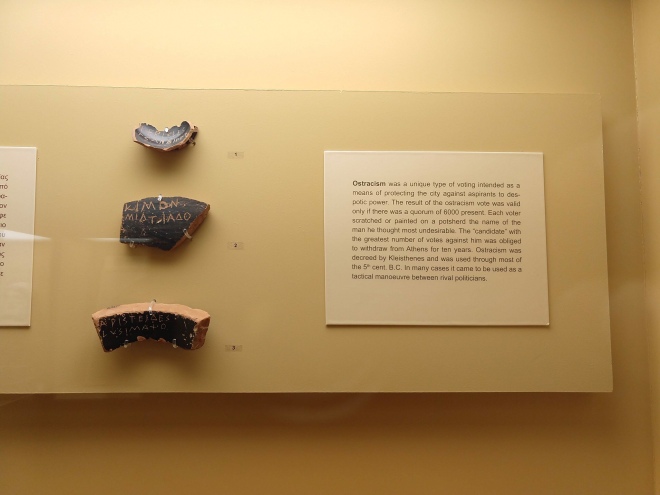
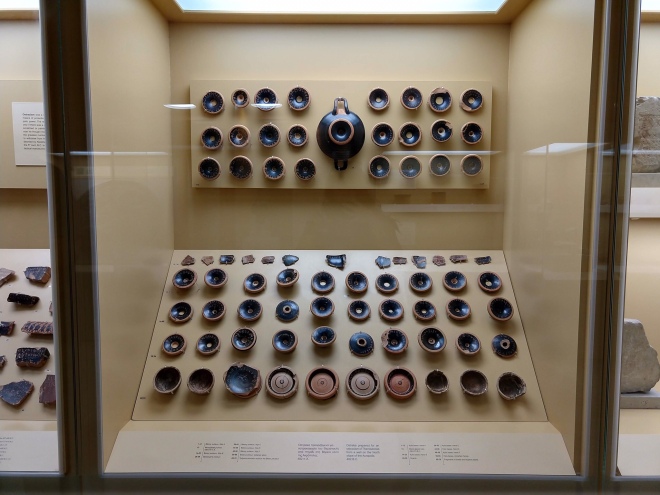
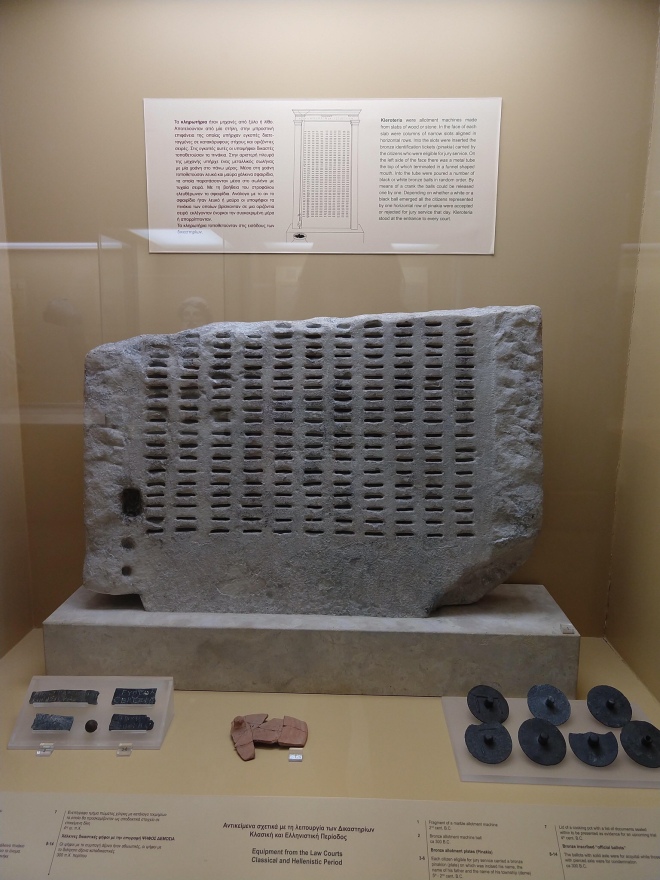
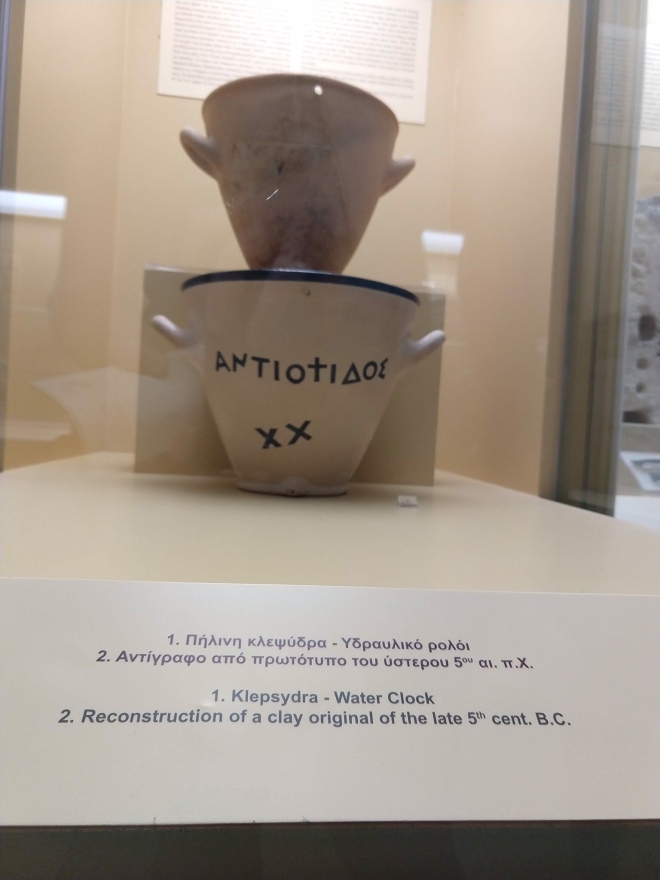
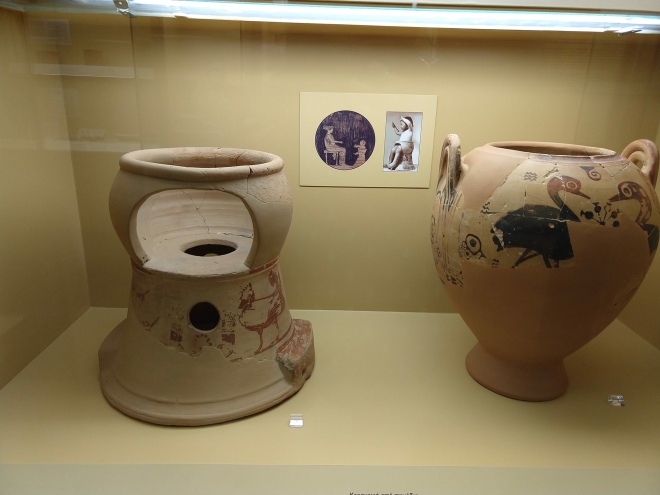
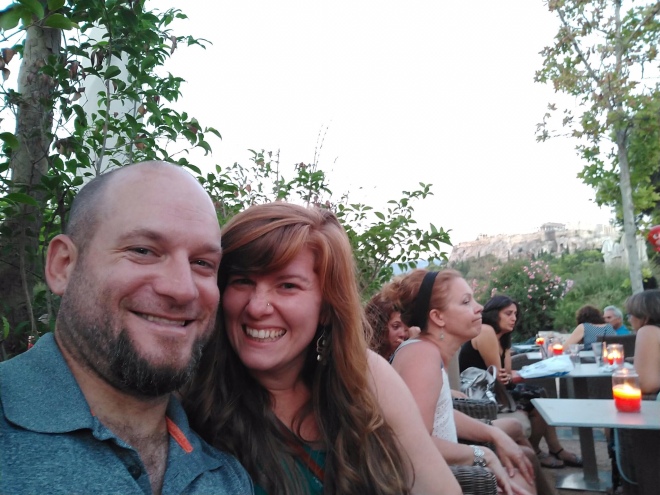
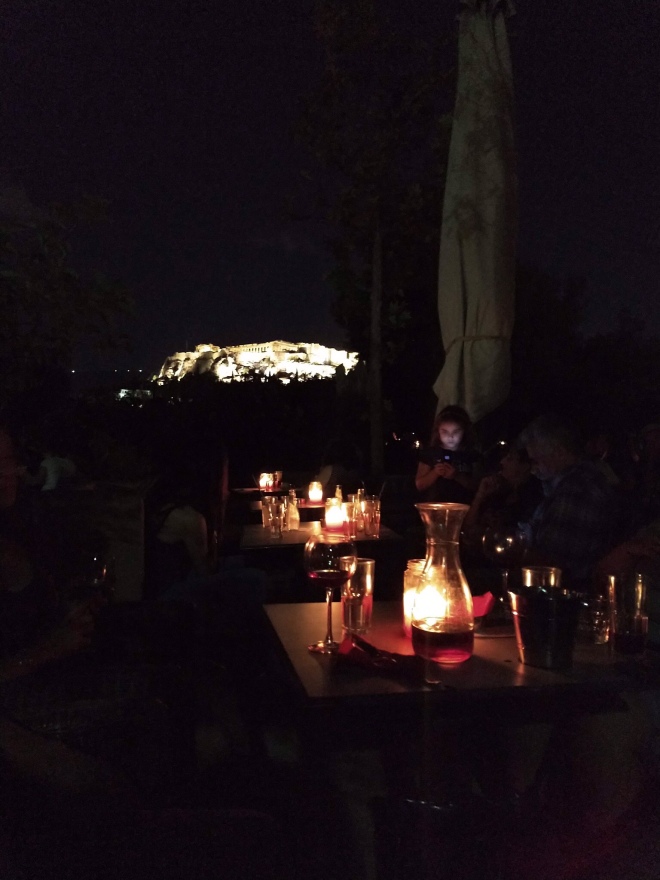
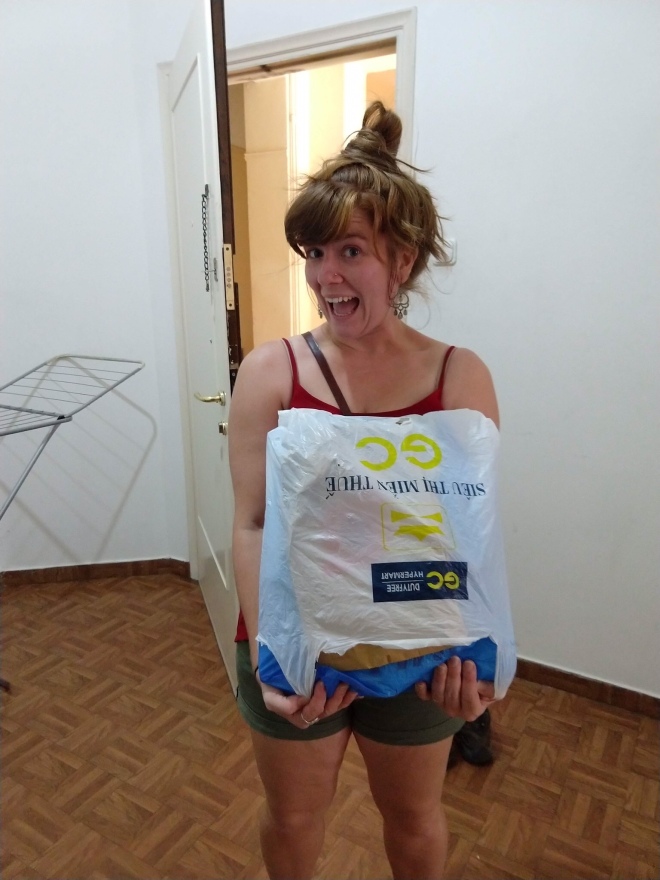

























 Down in the old cisterns. They are a little eerie and beautiful!
Down in the old cisterns. They are a little eerie and beautiful!




























































